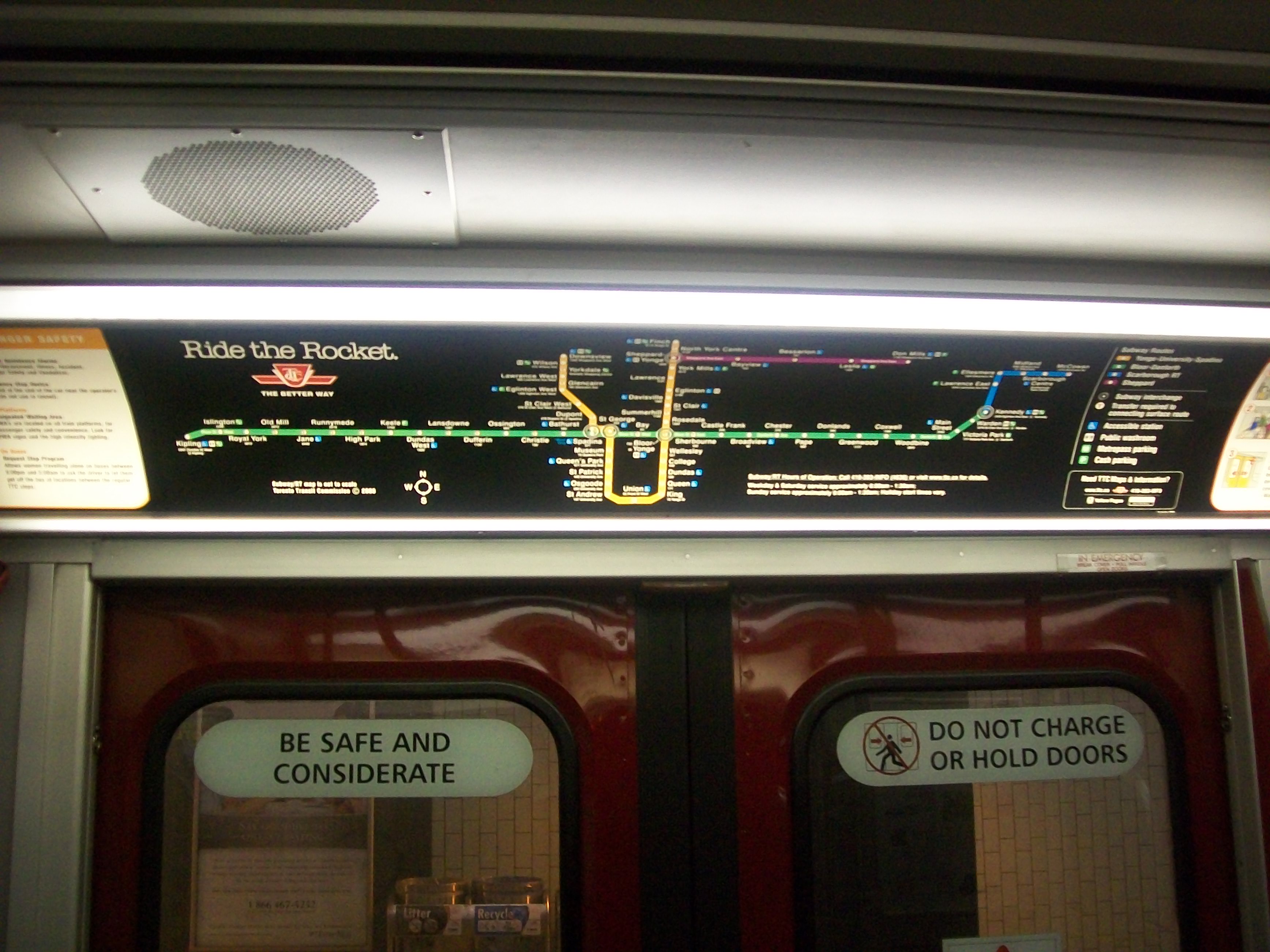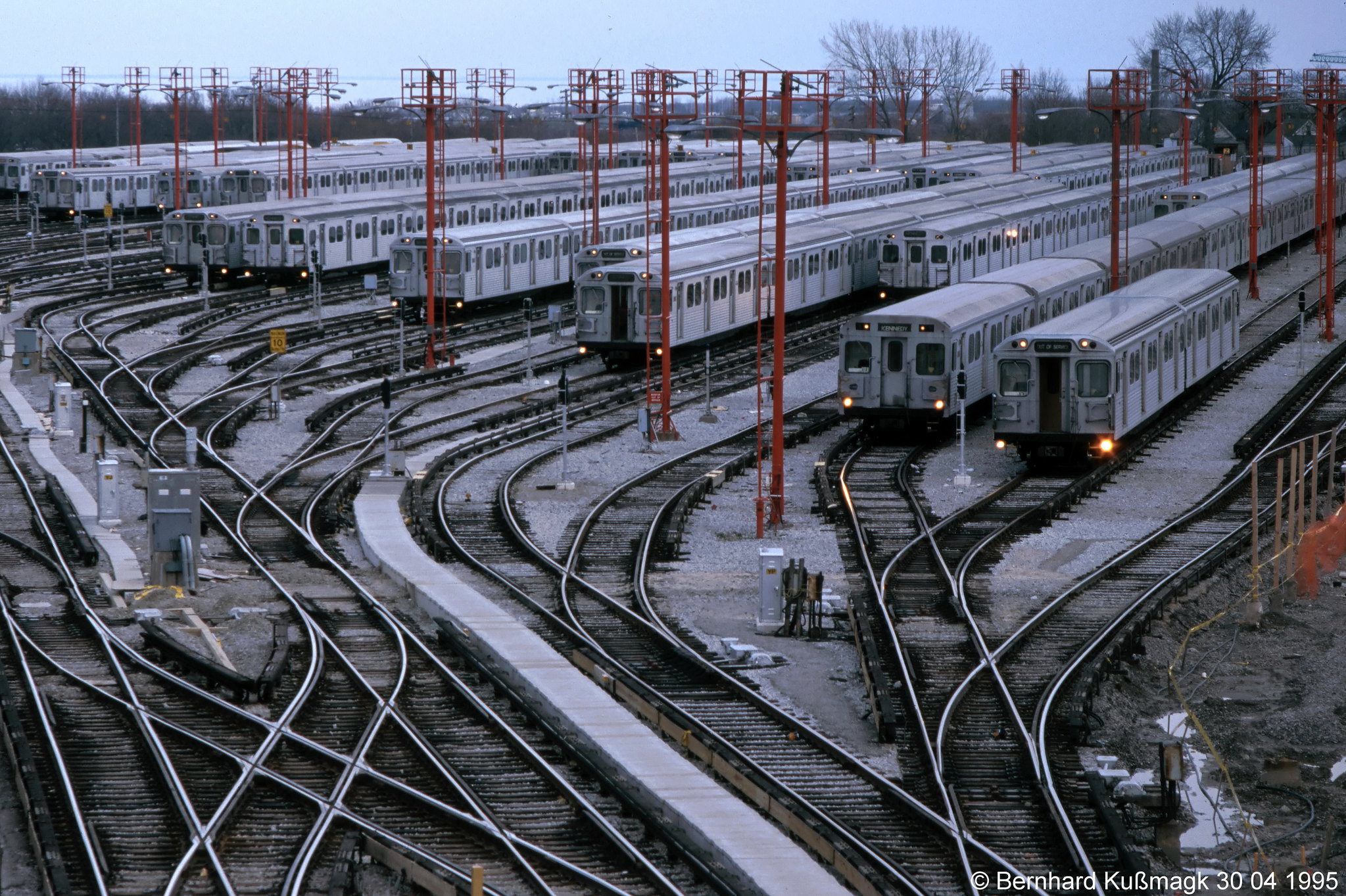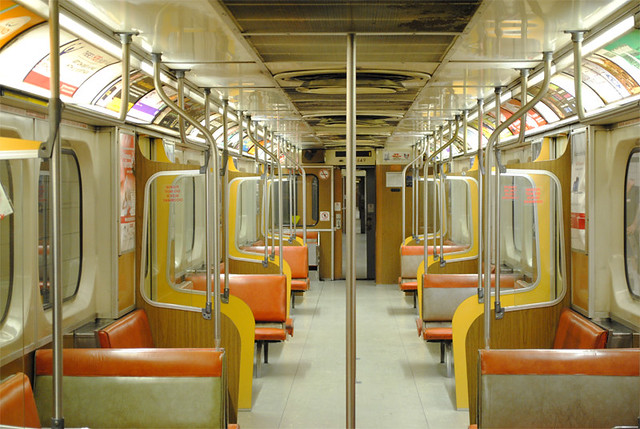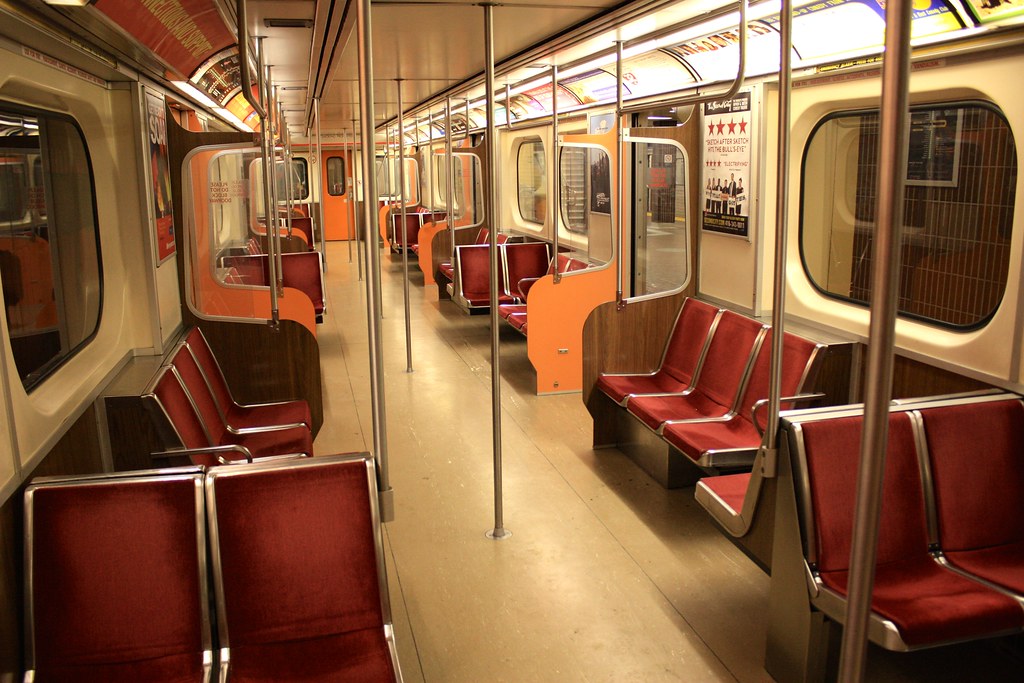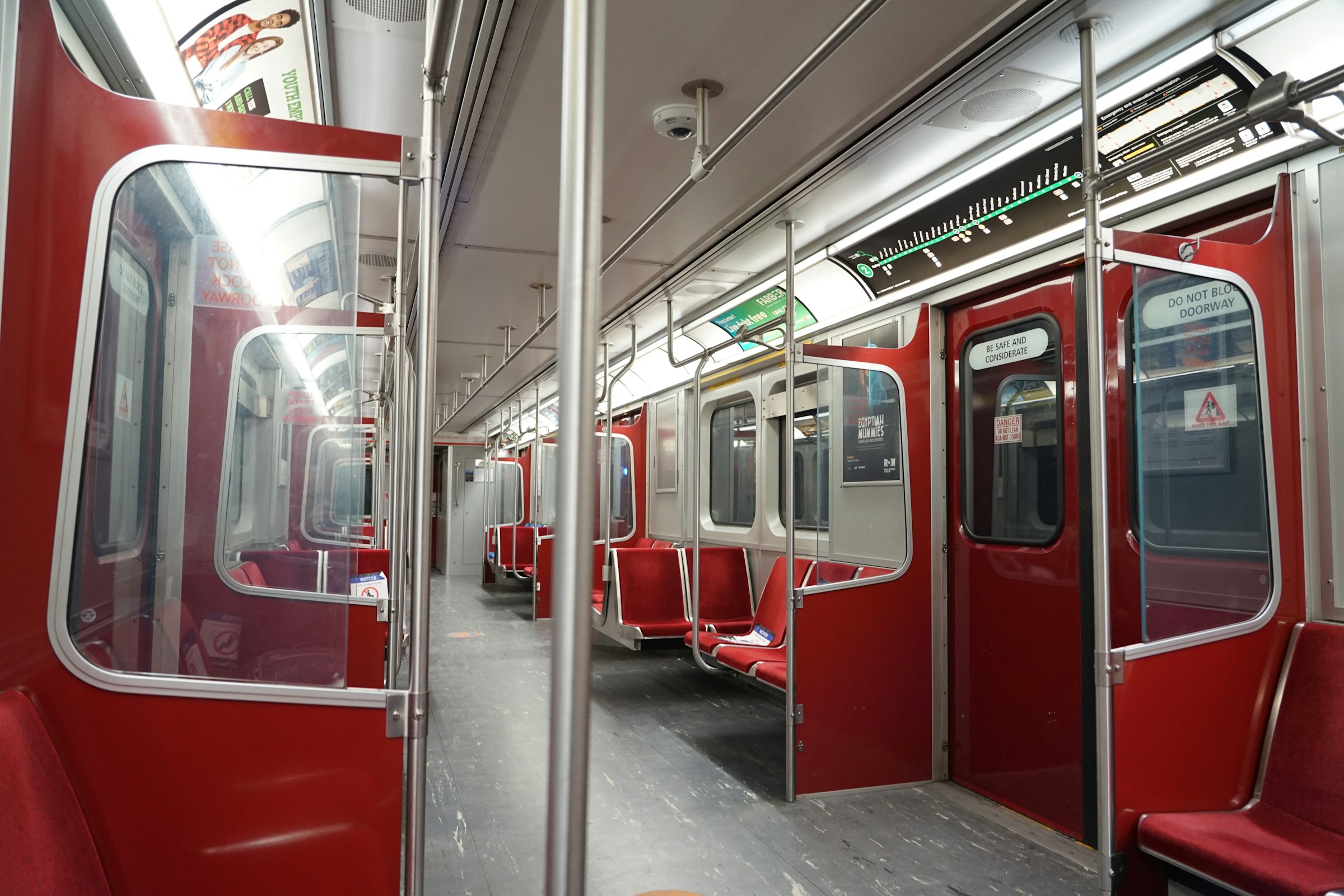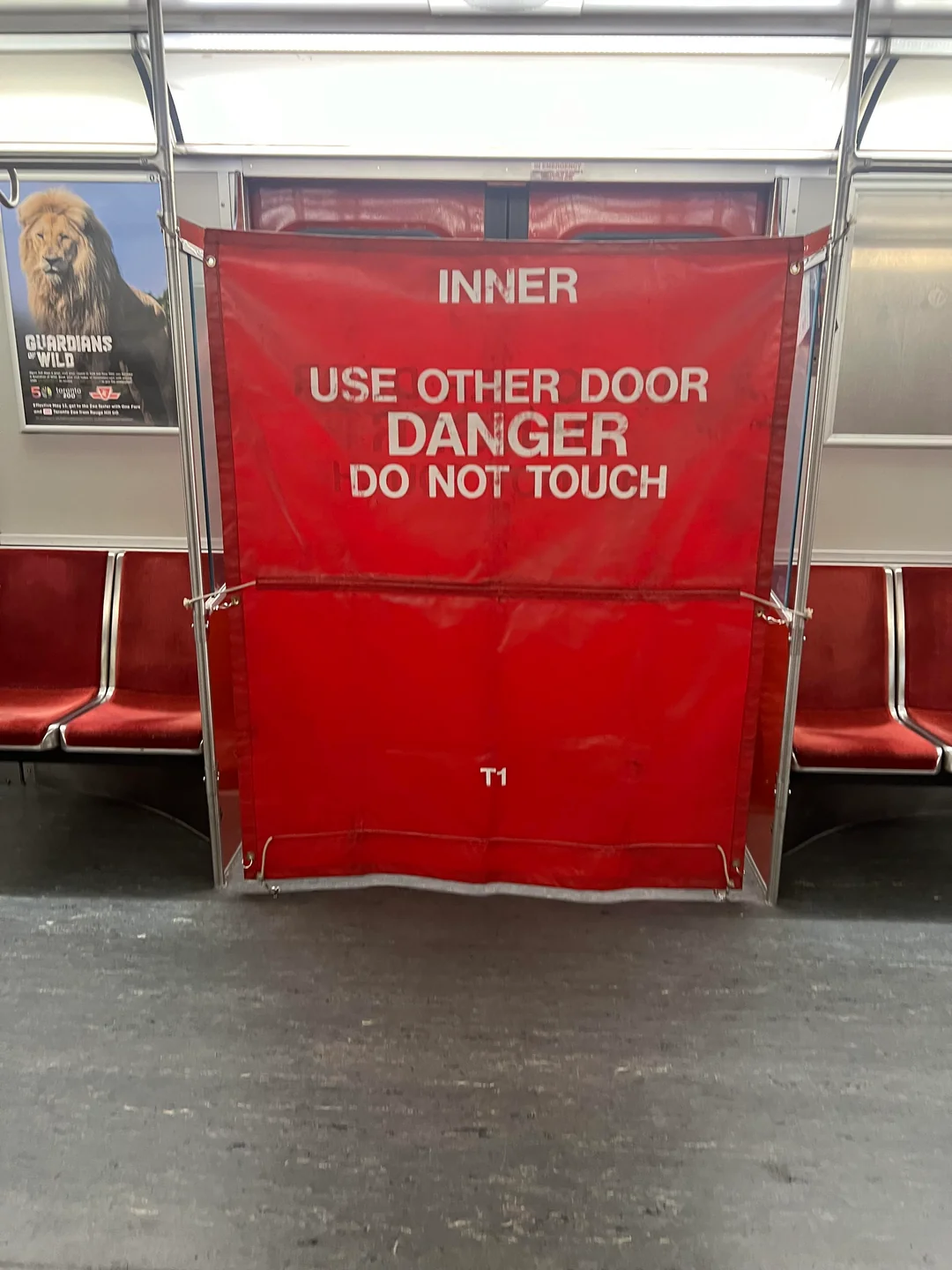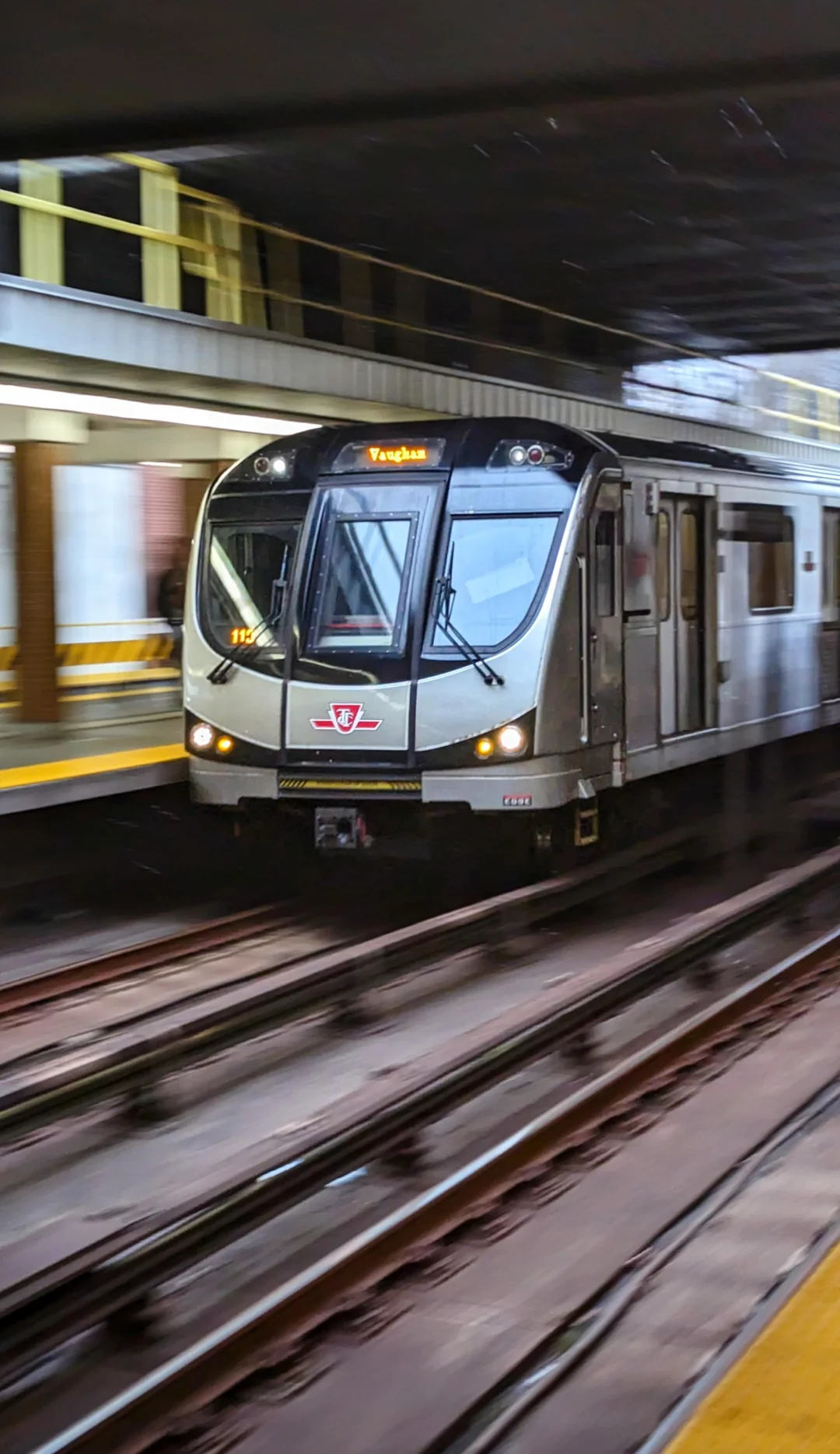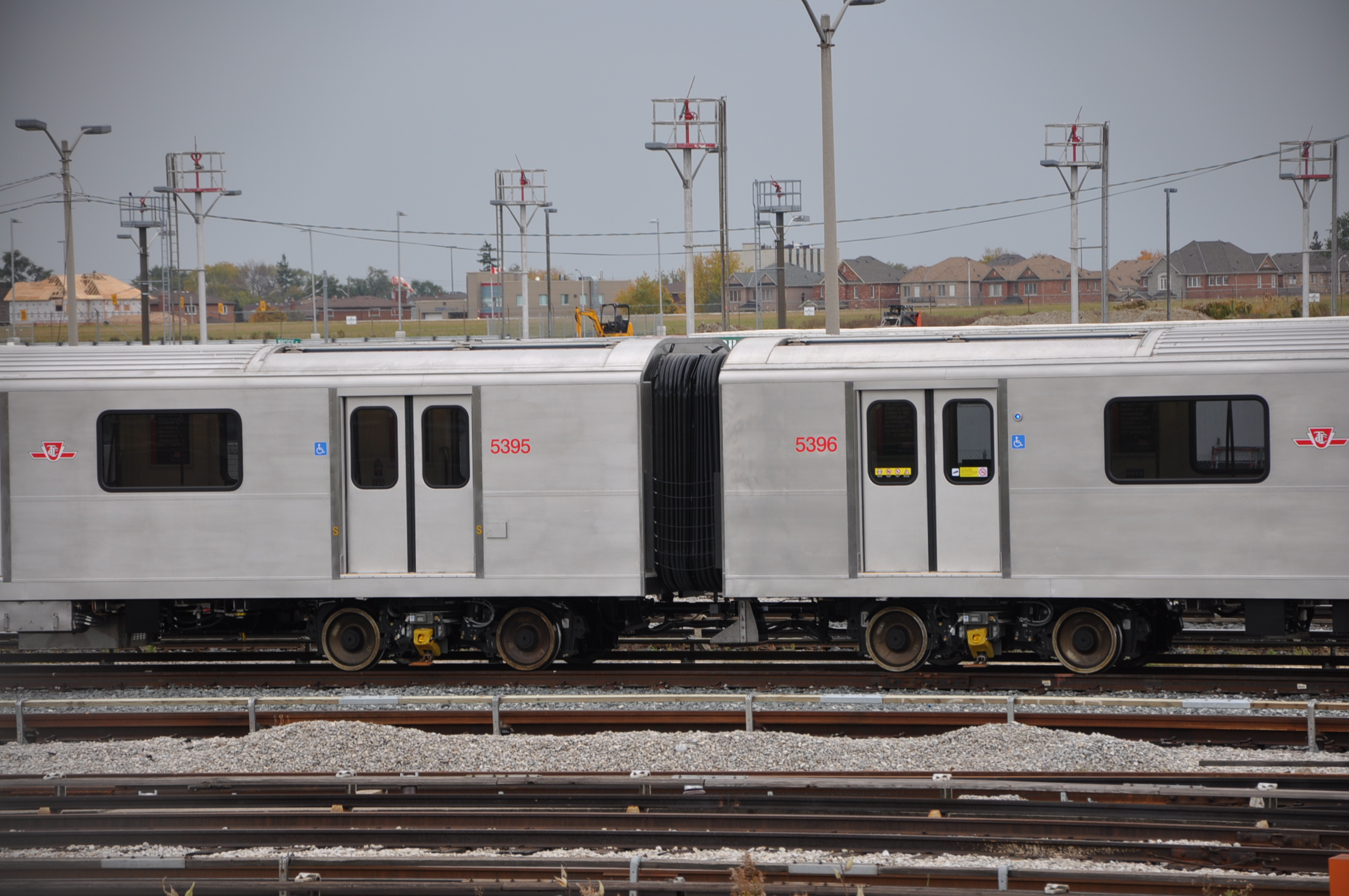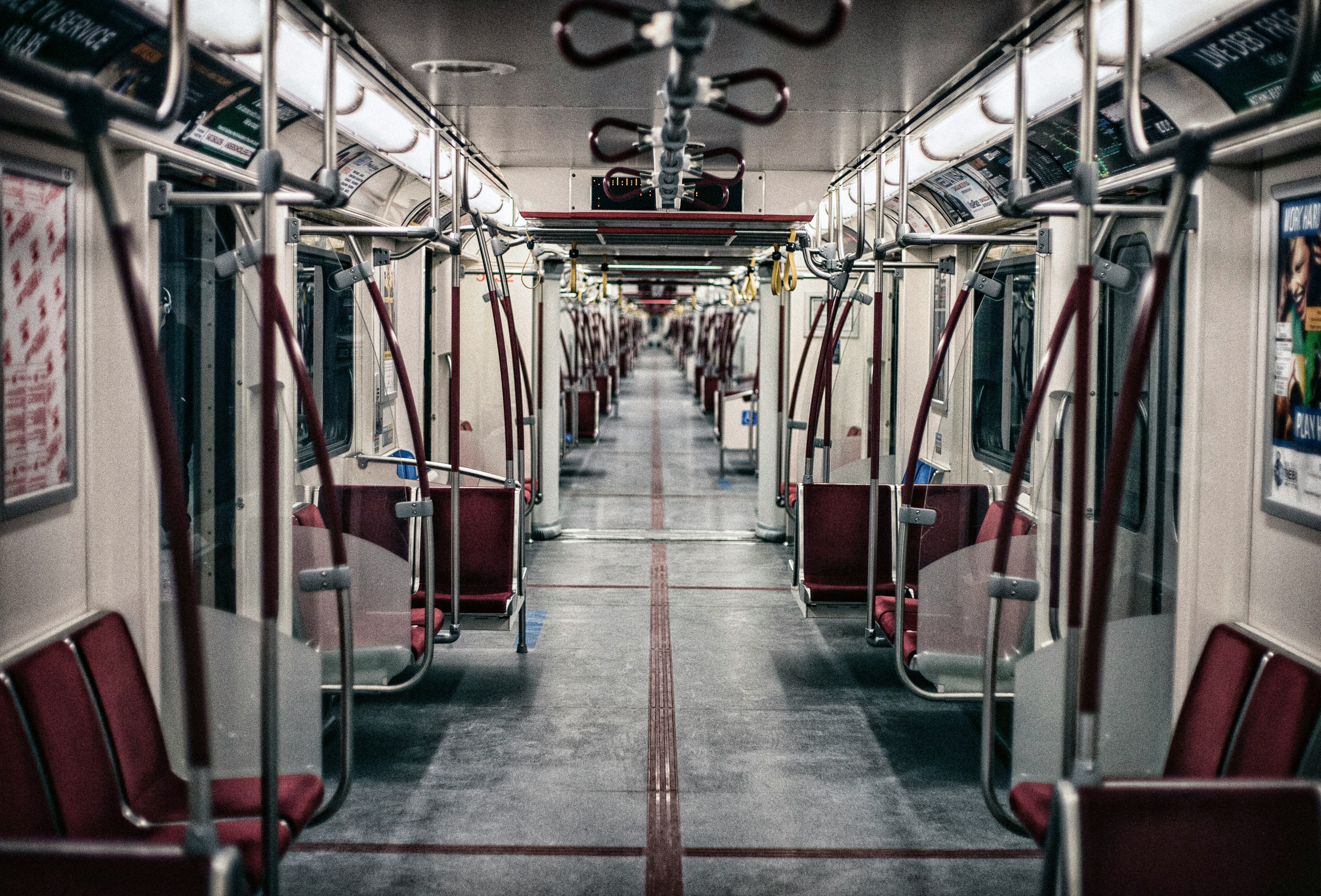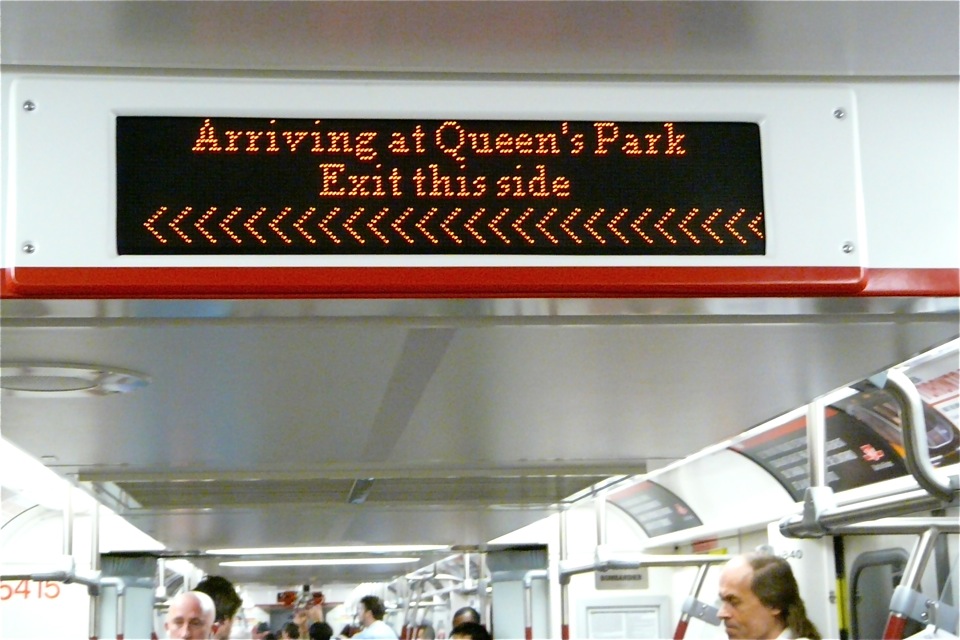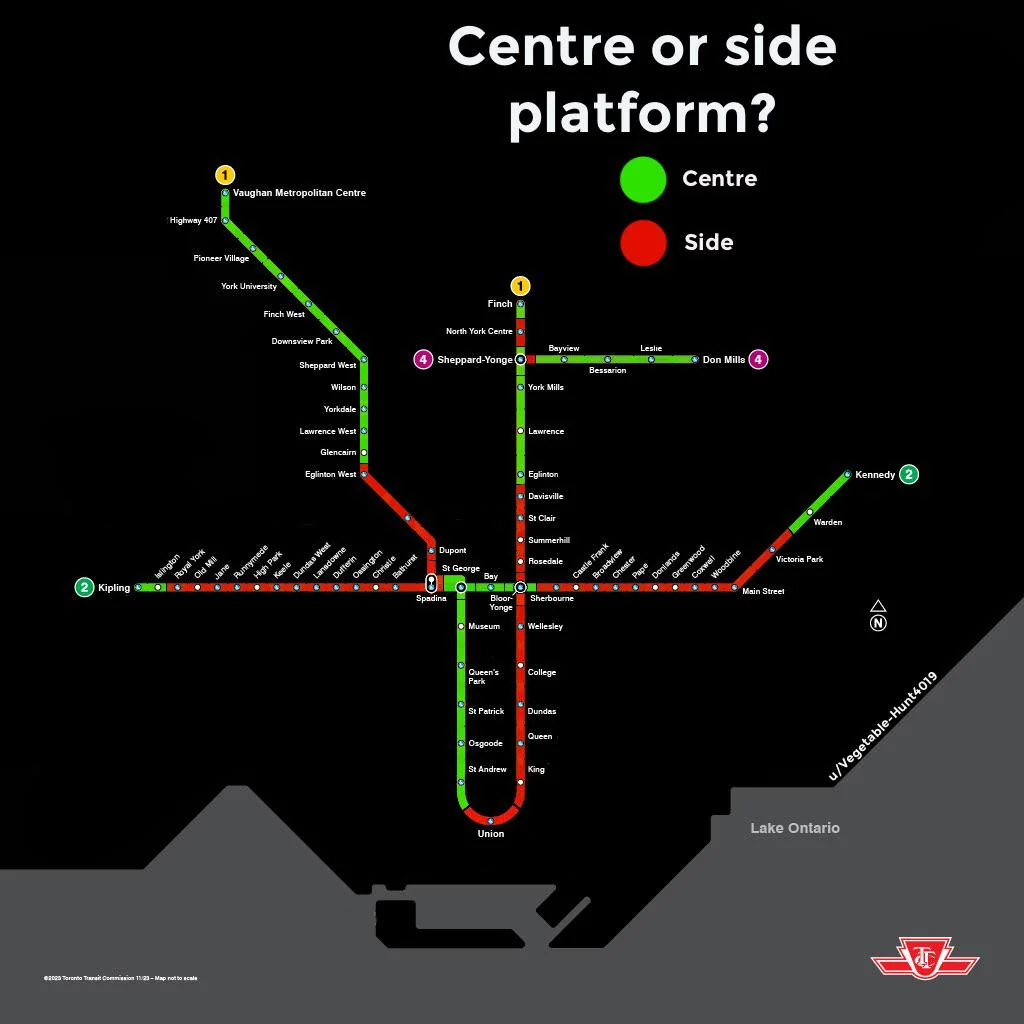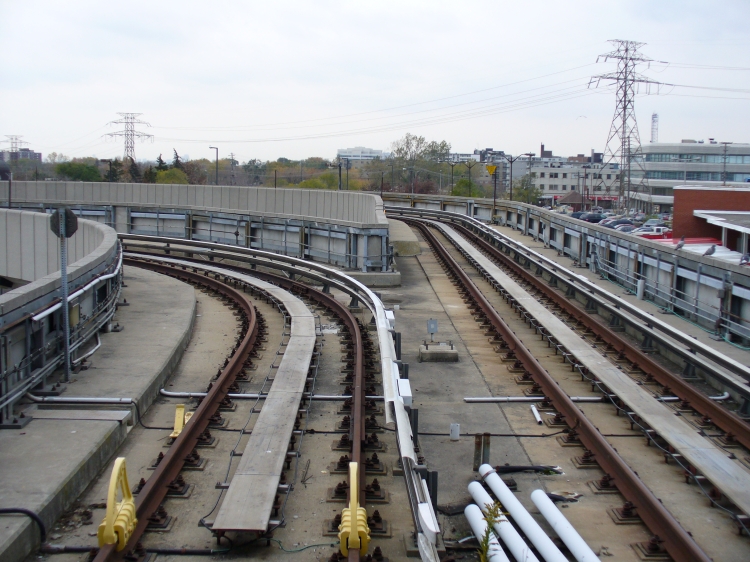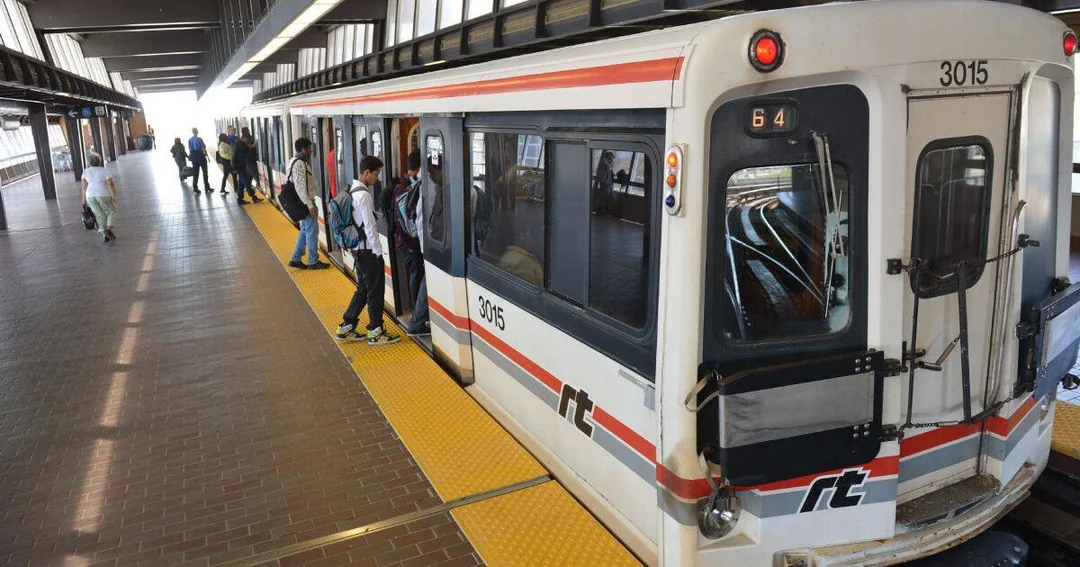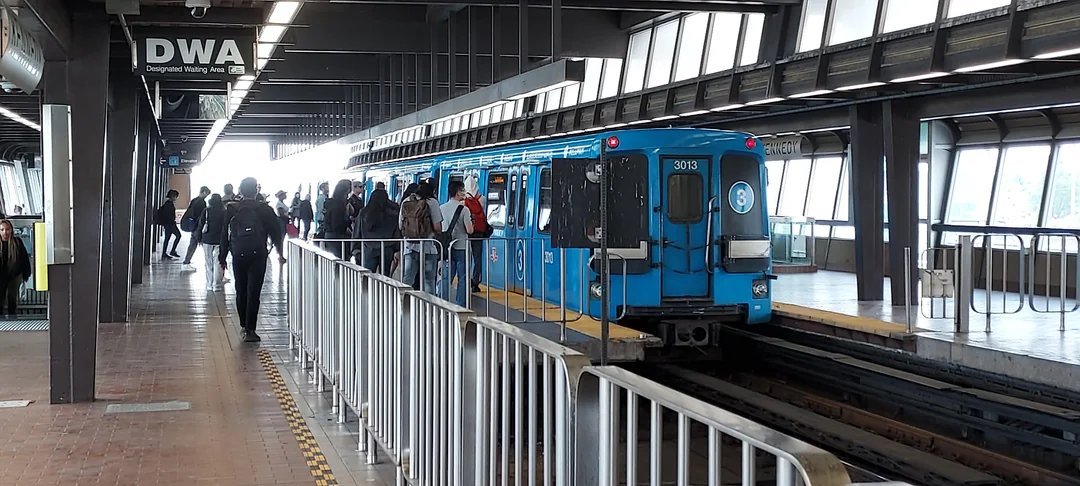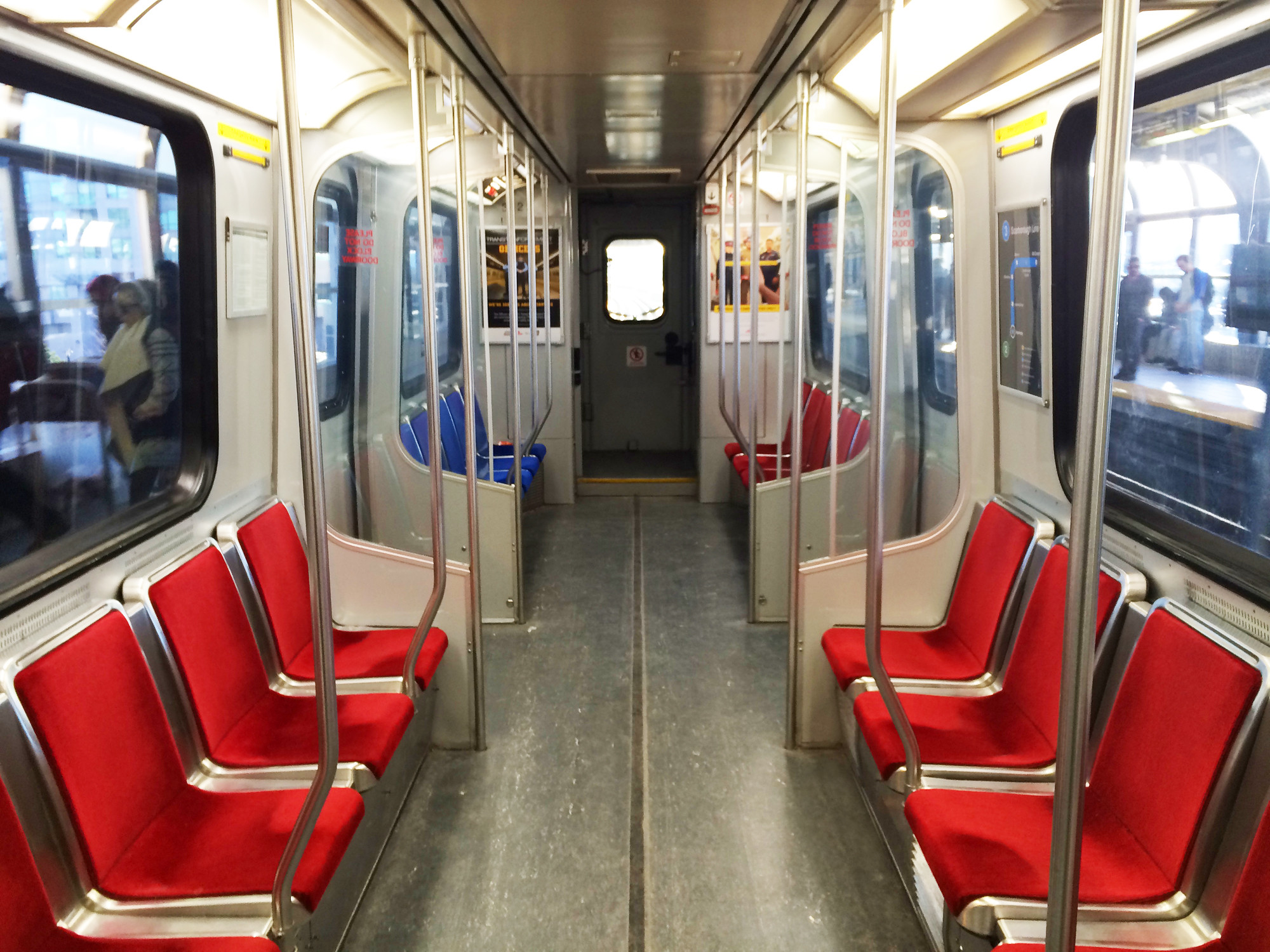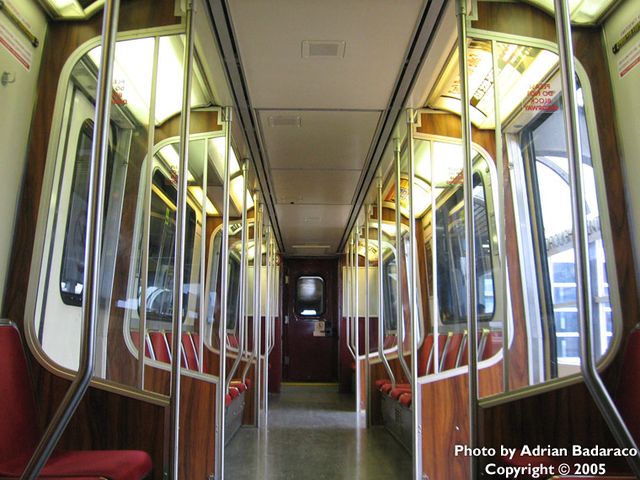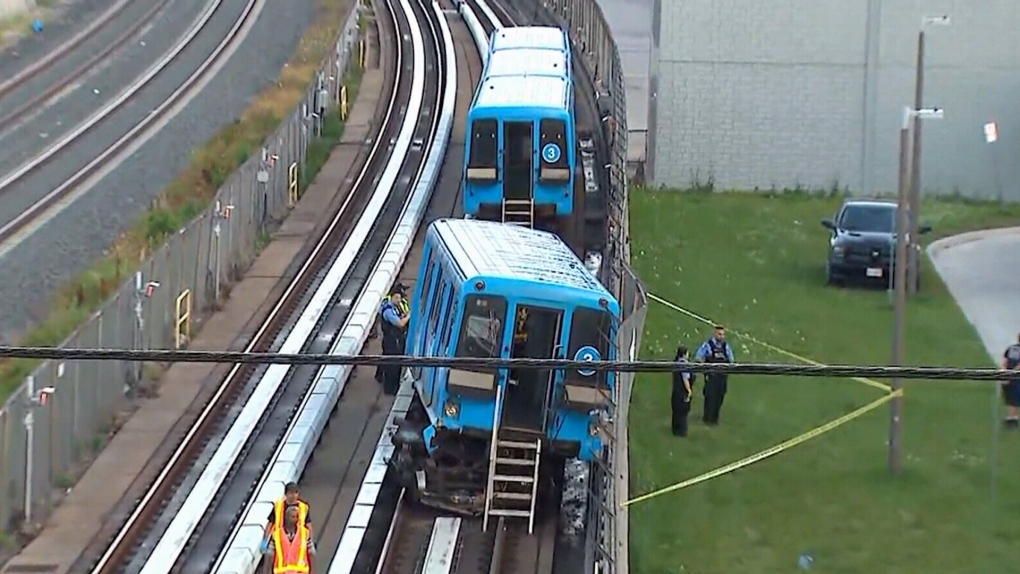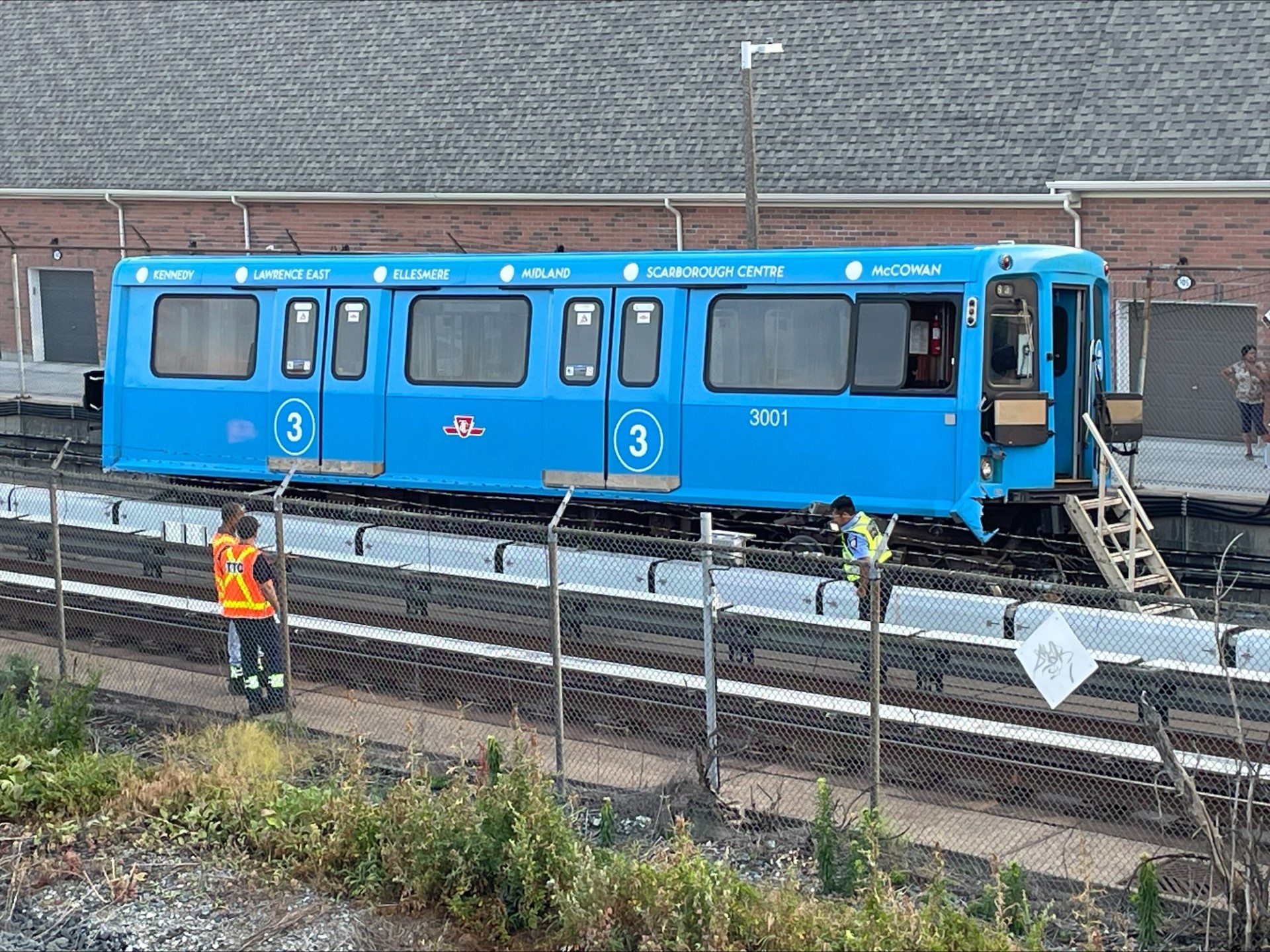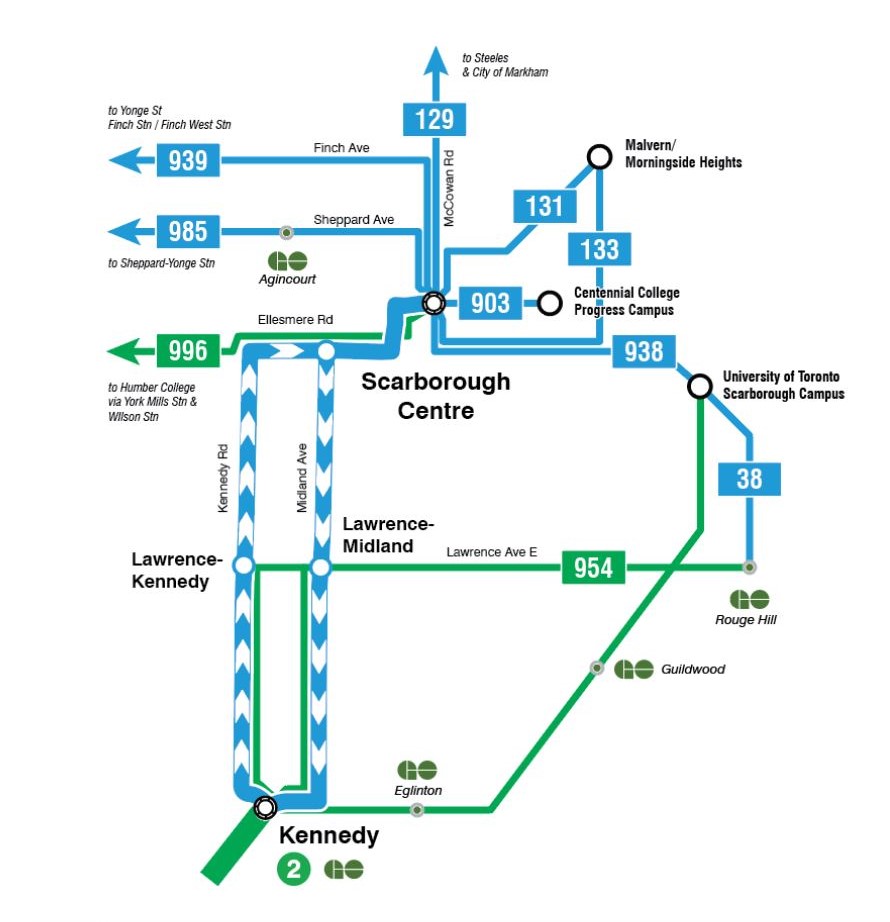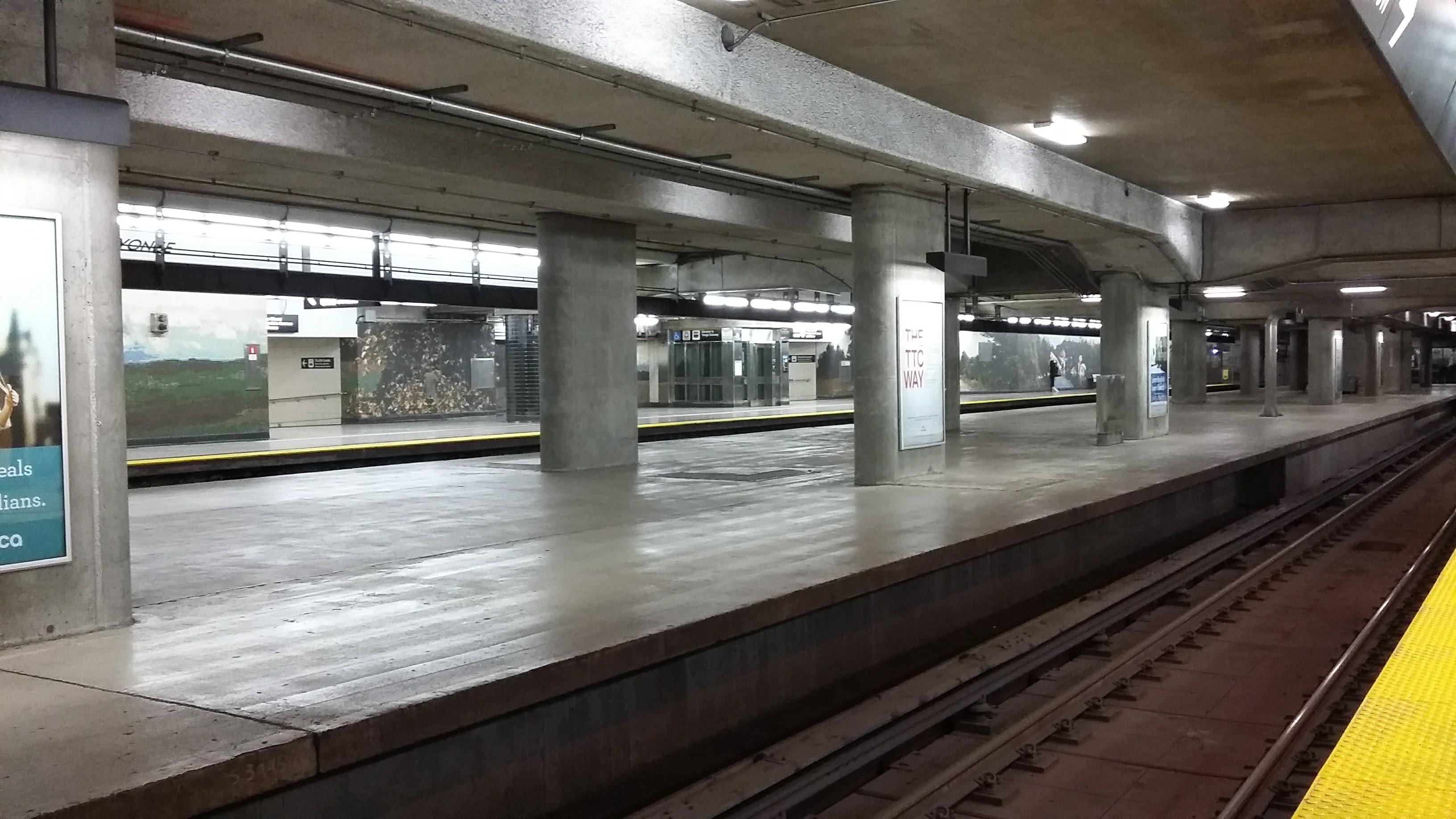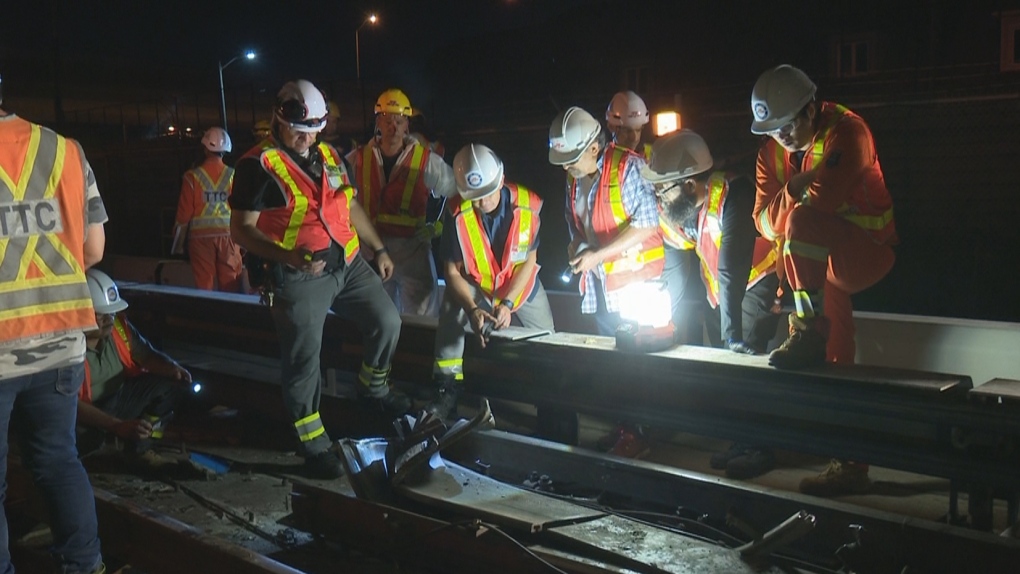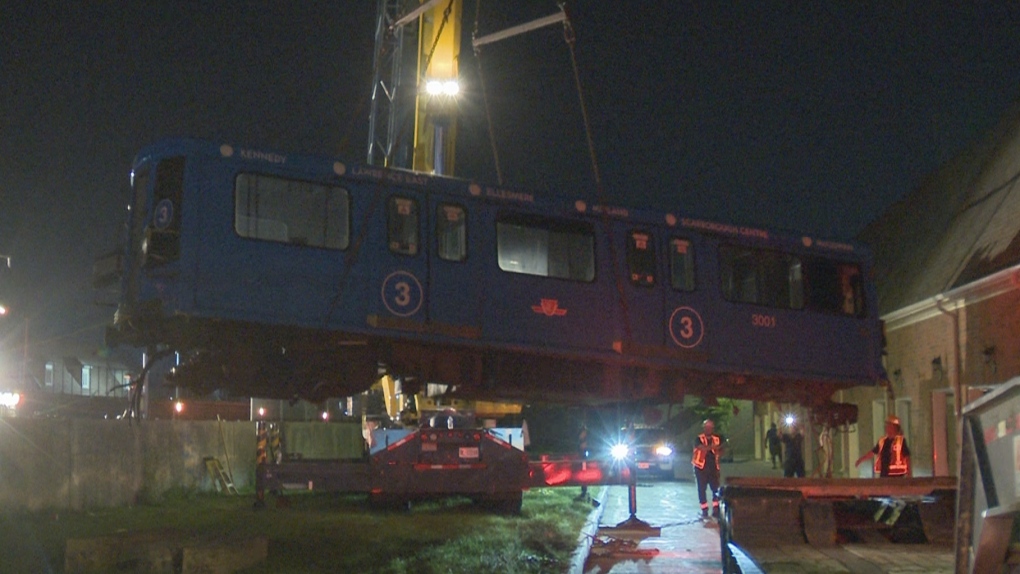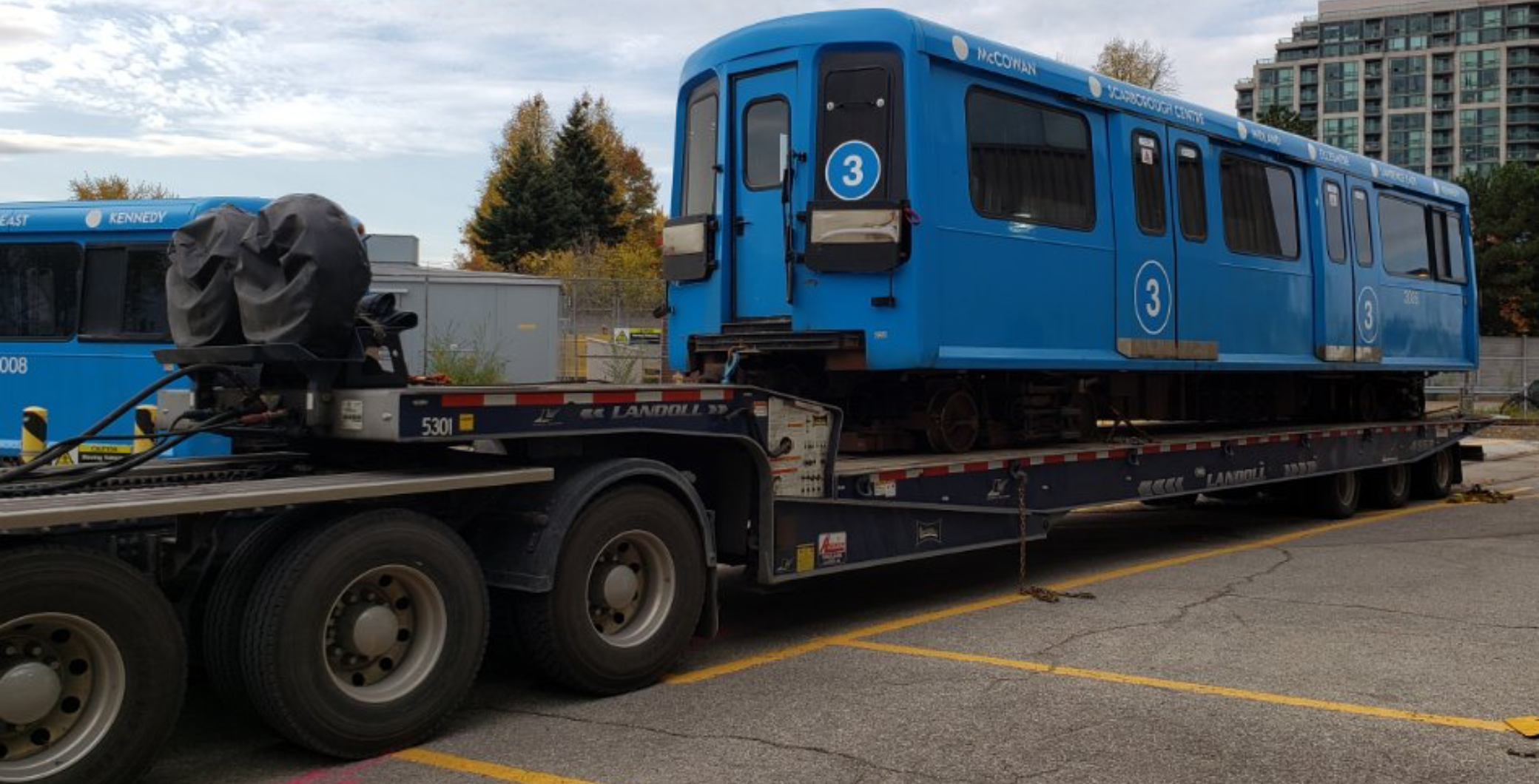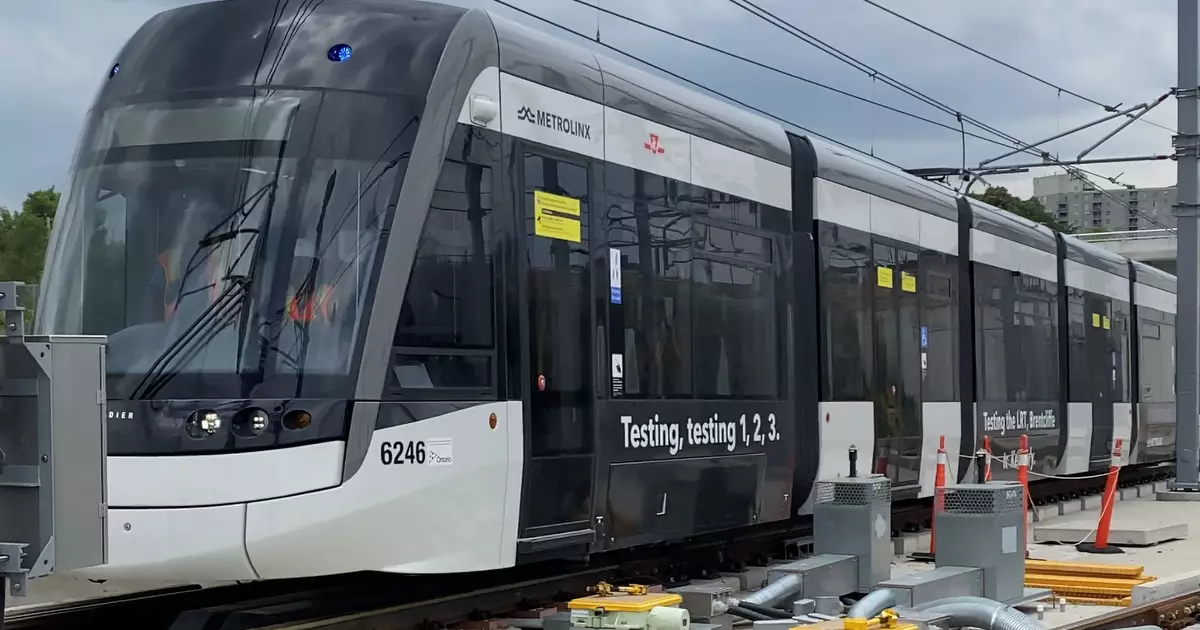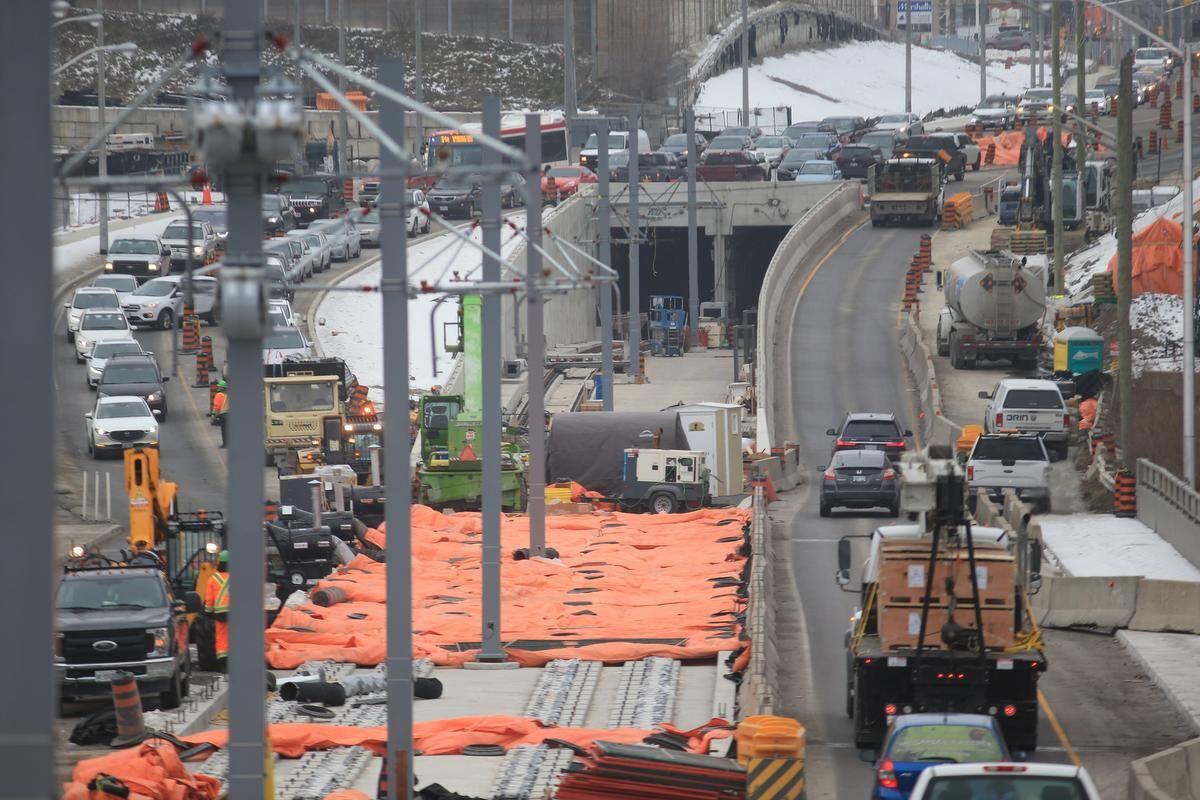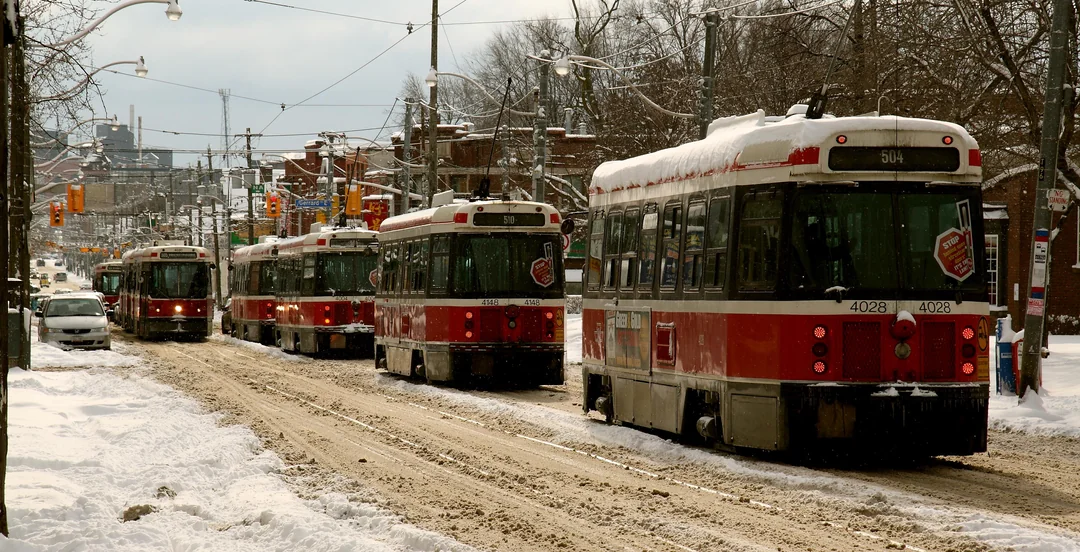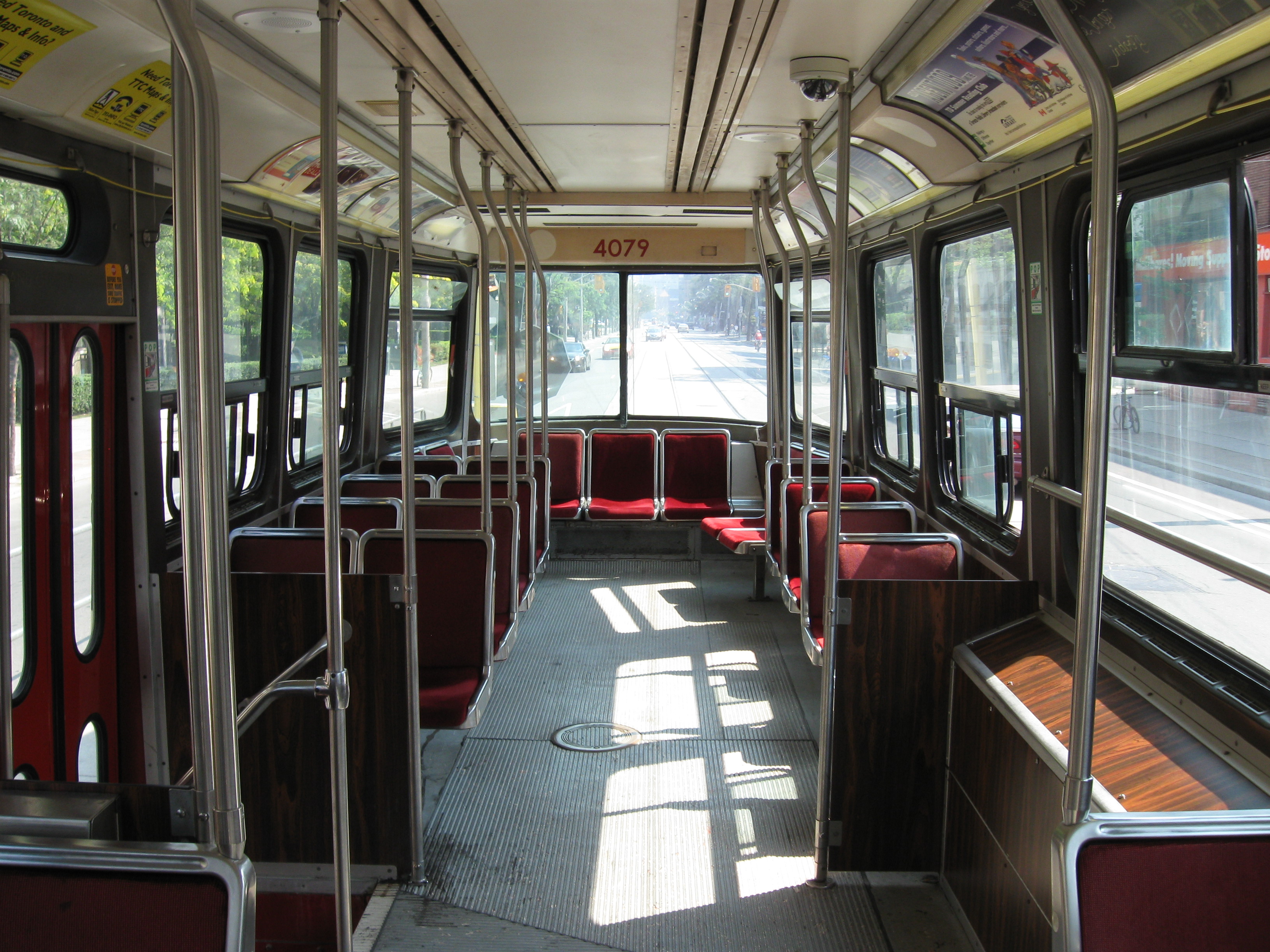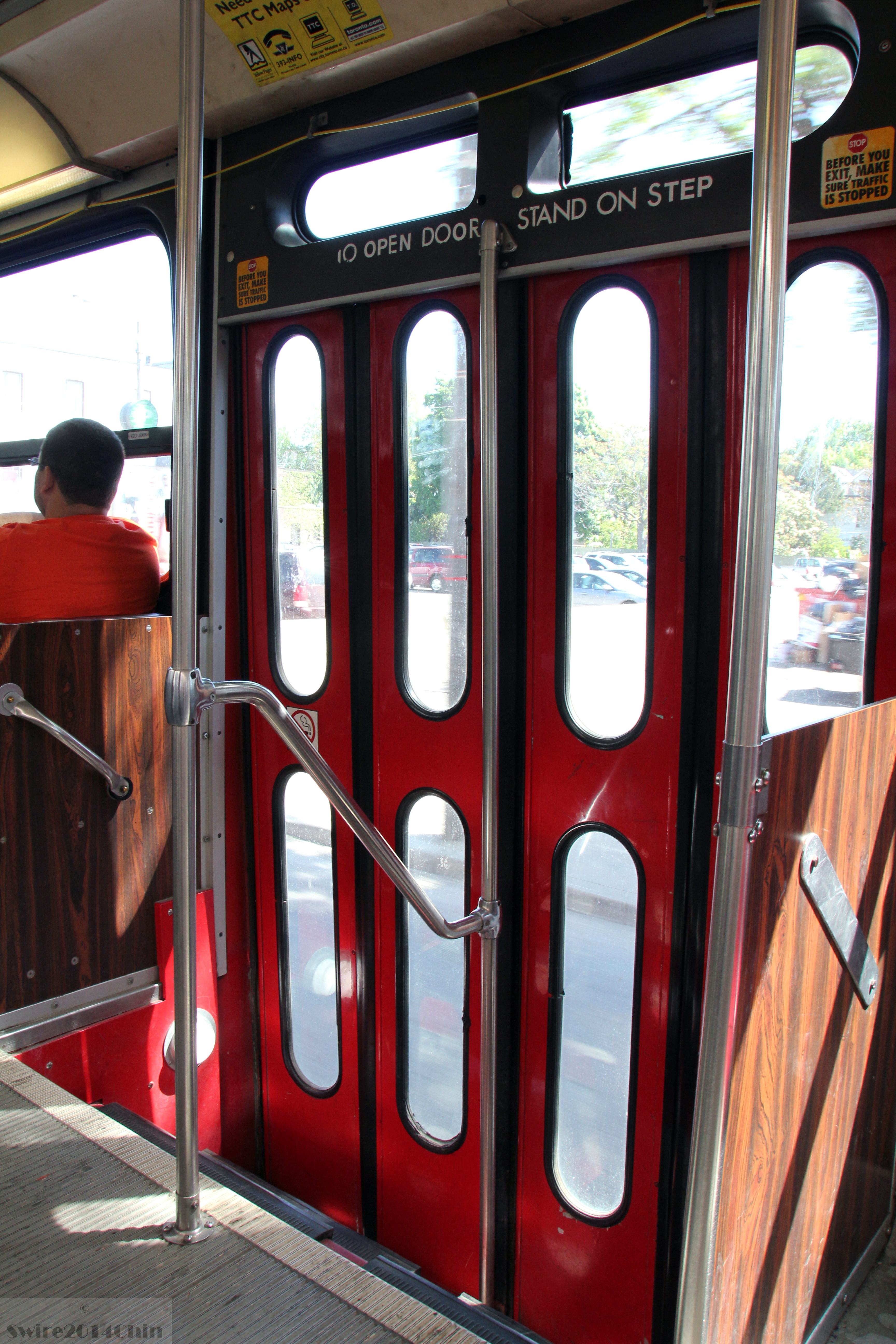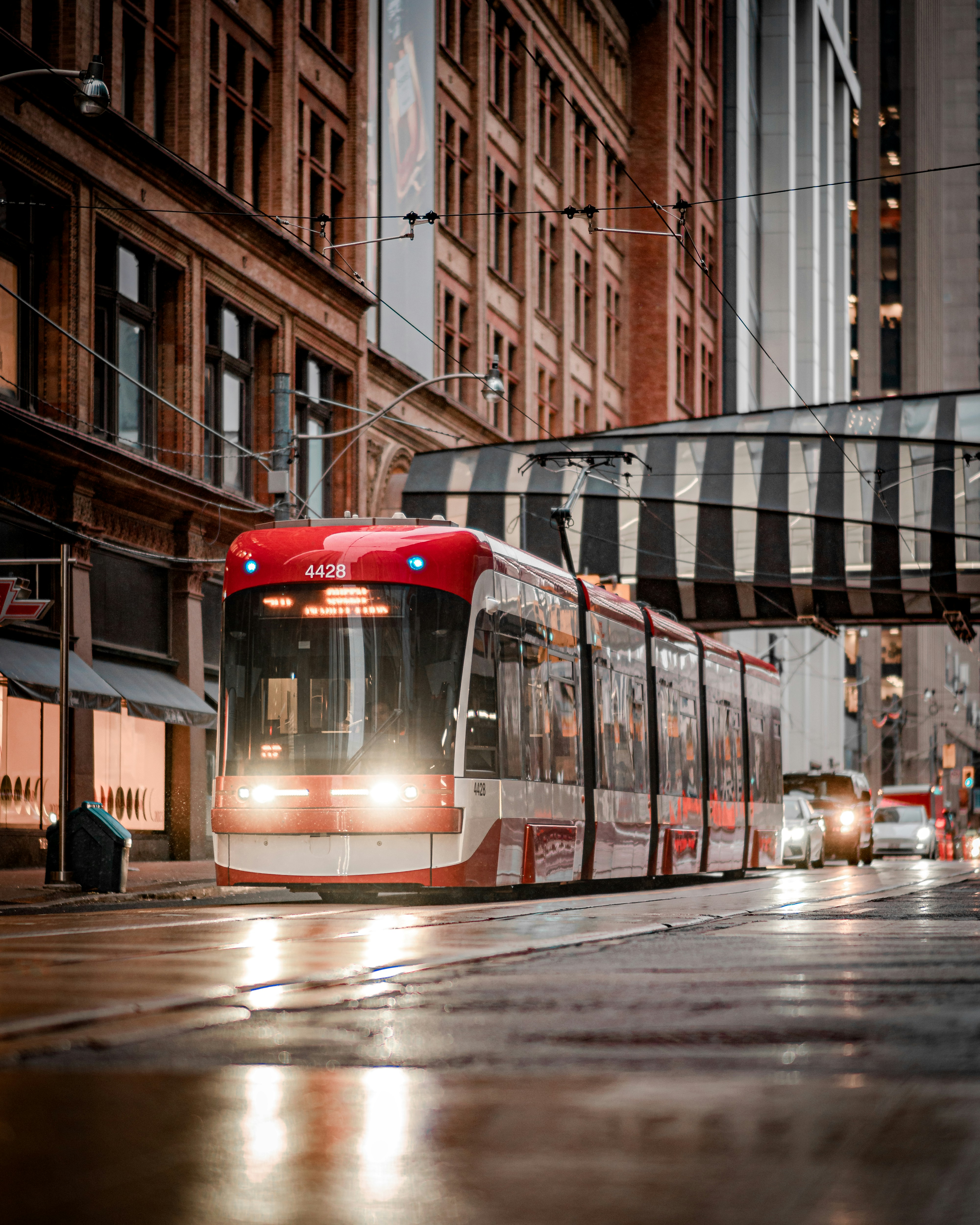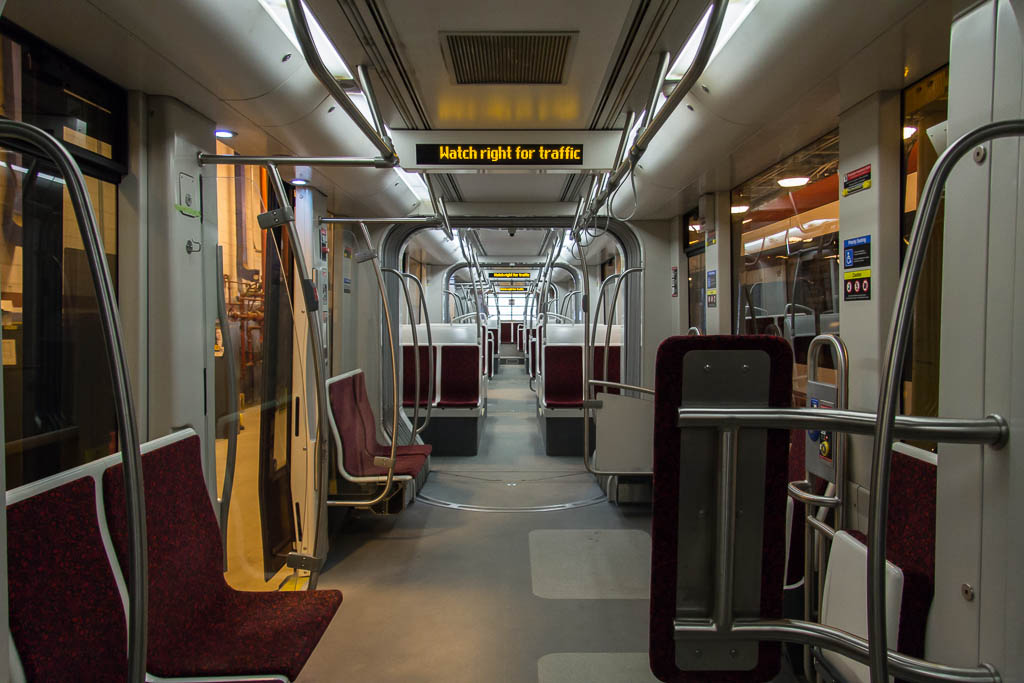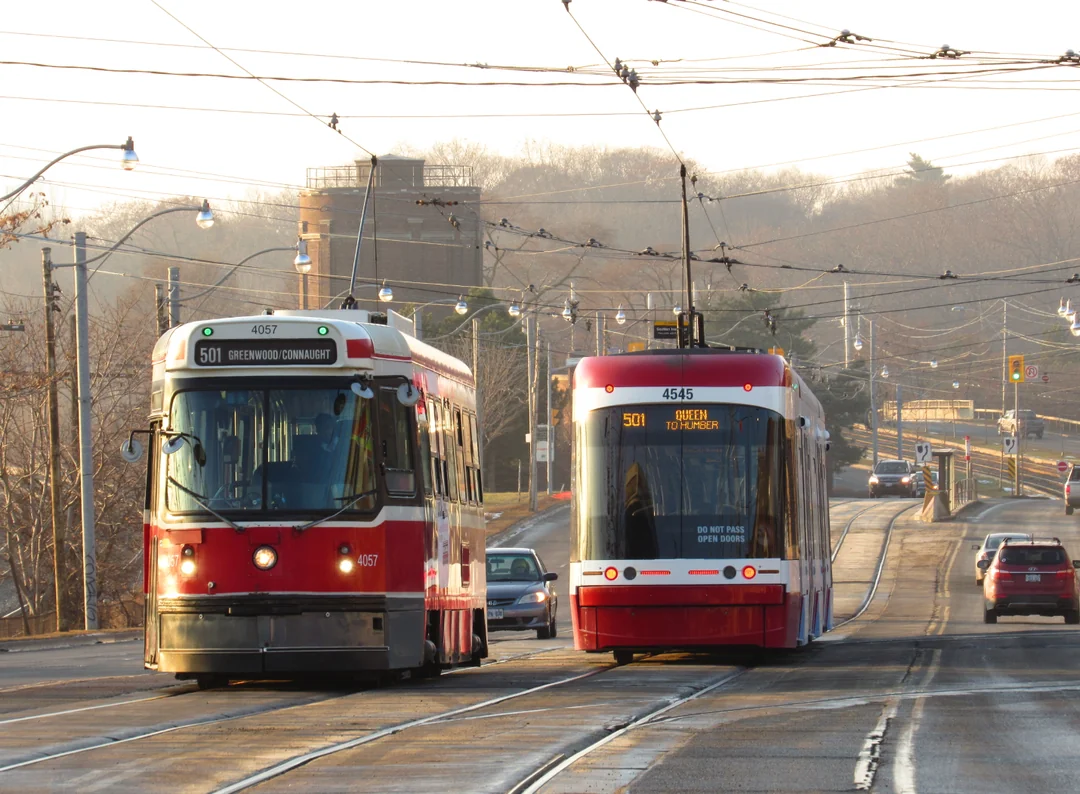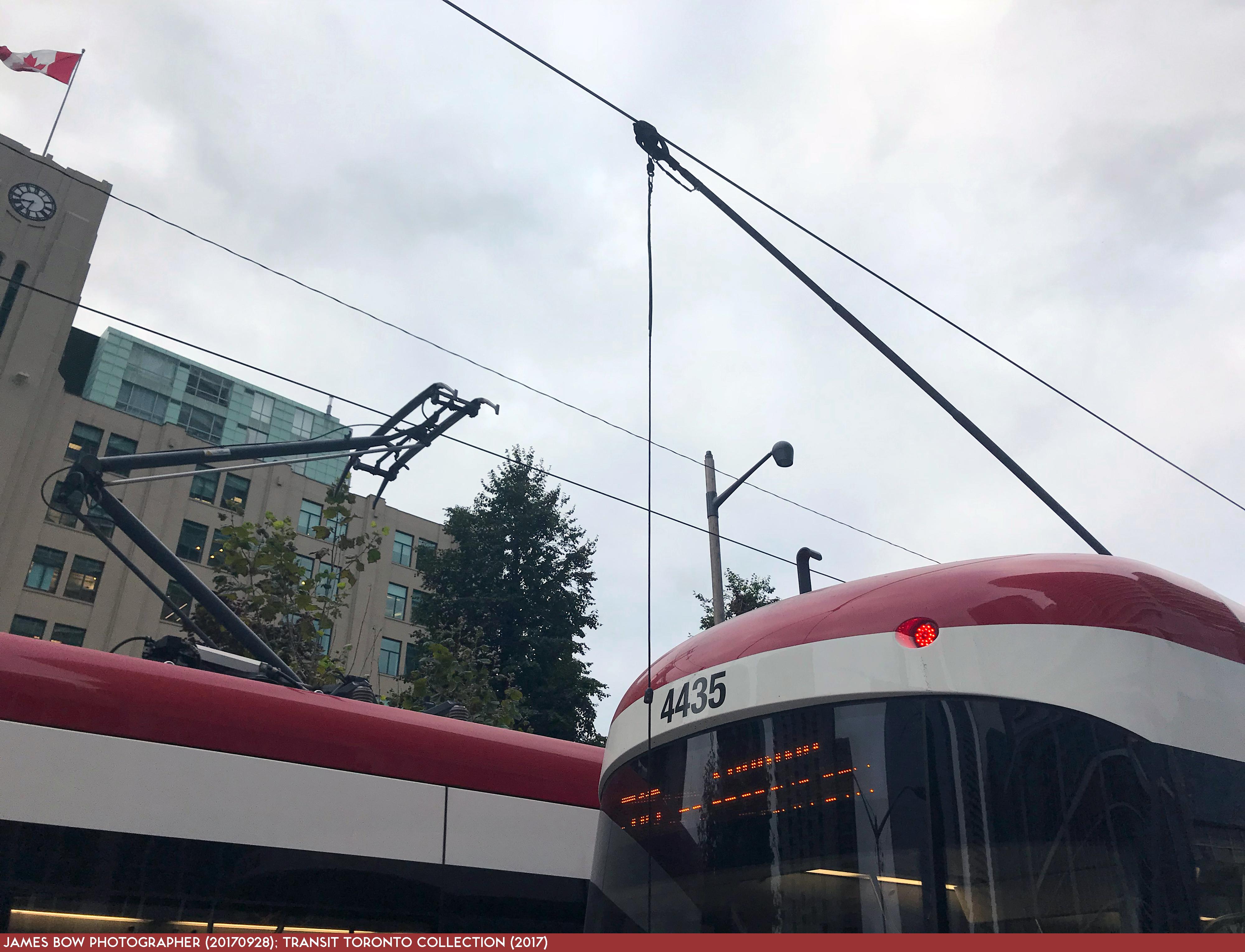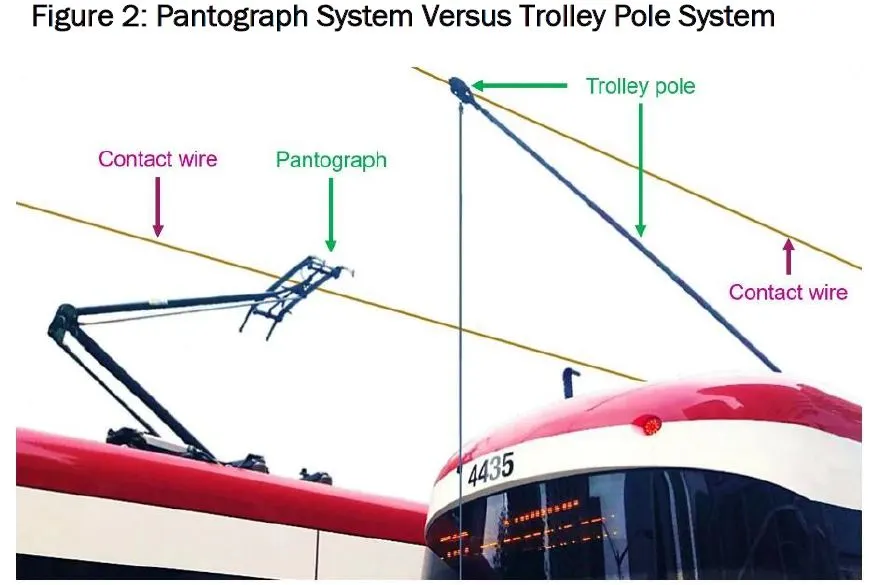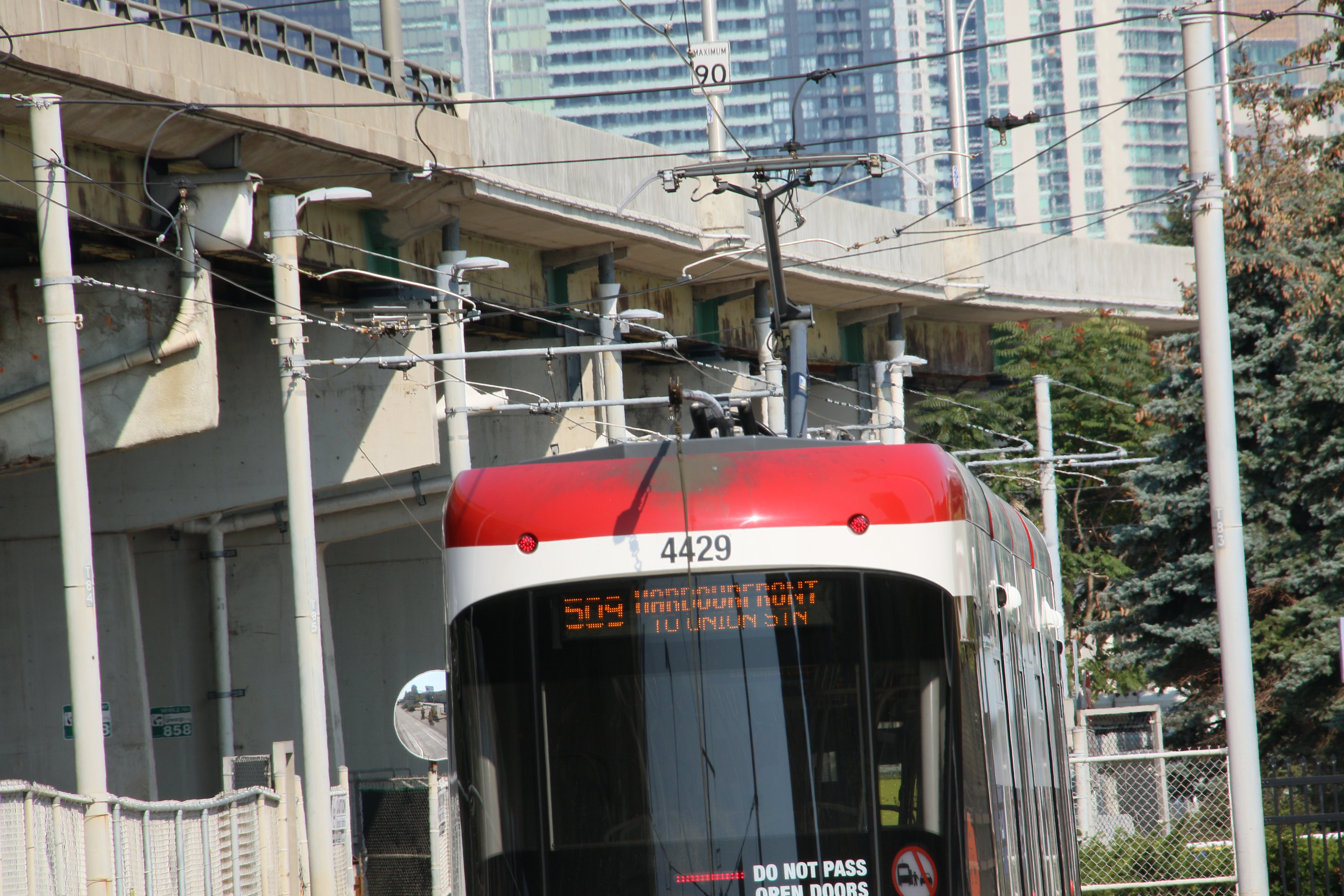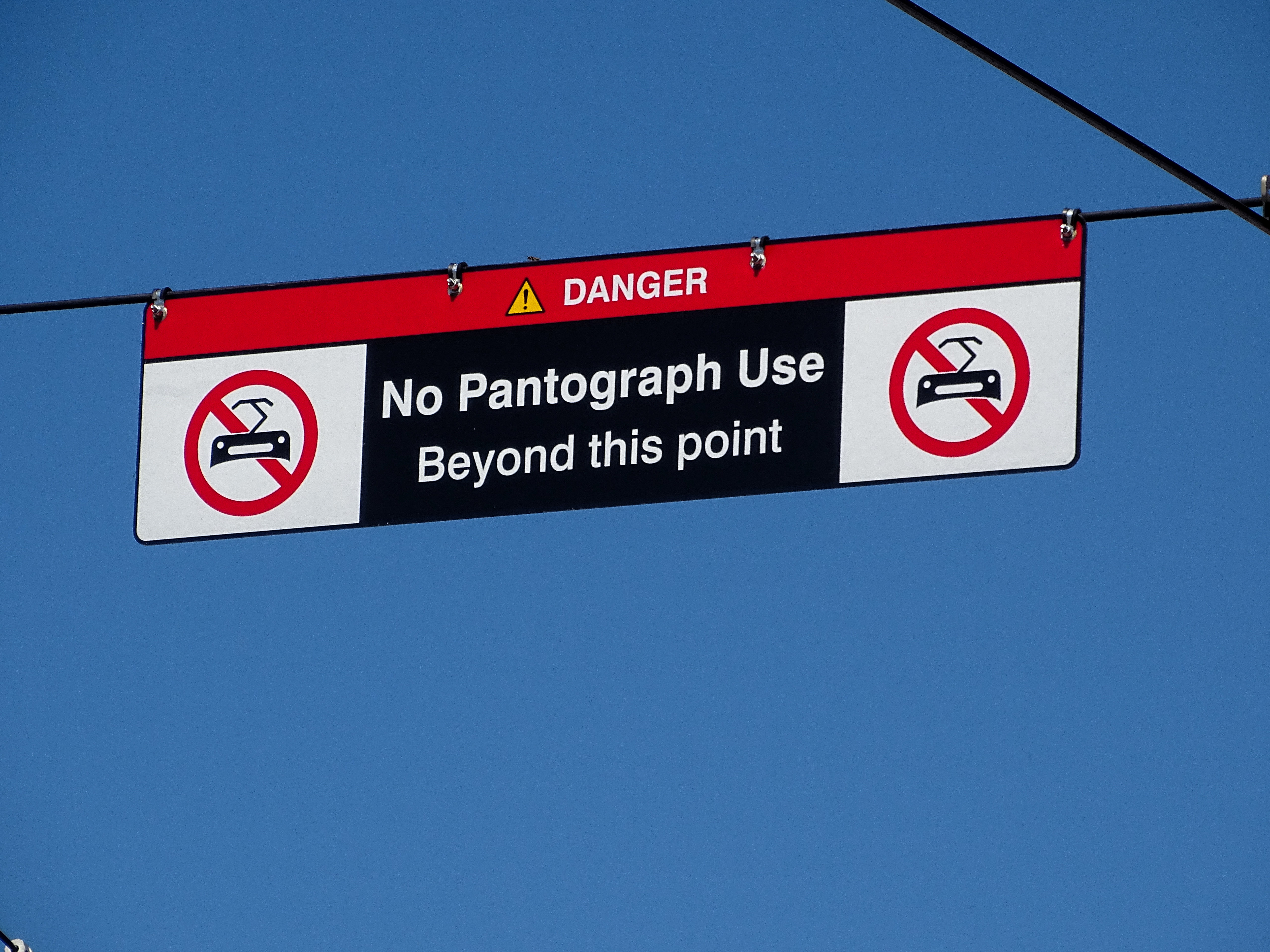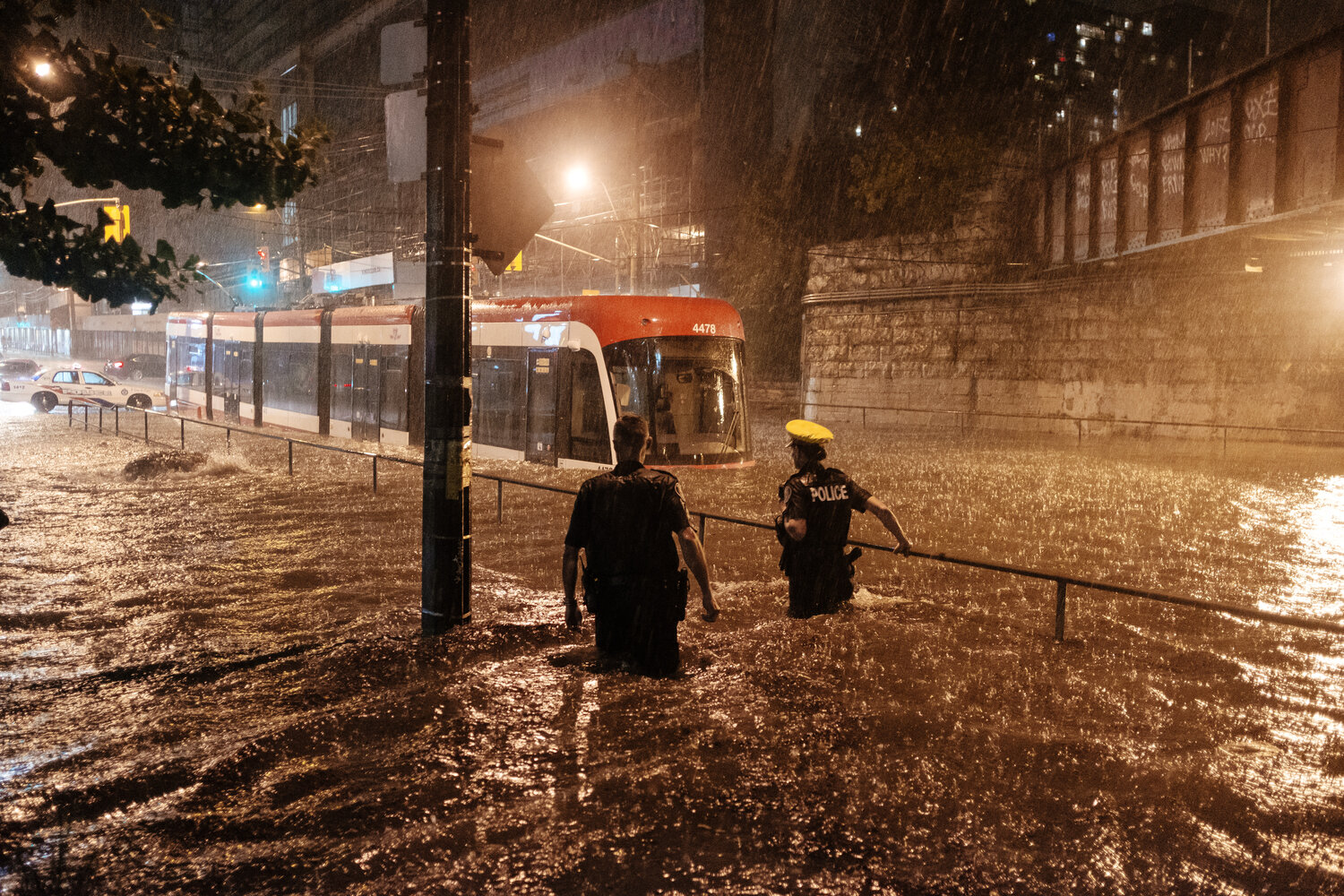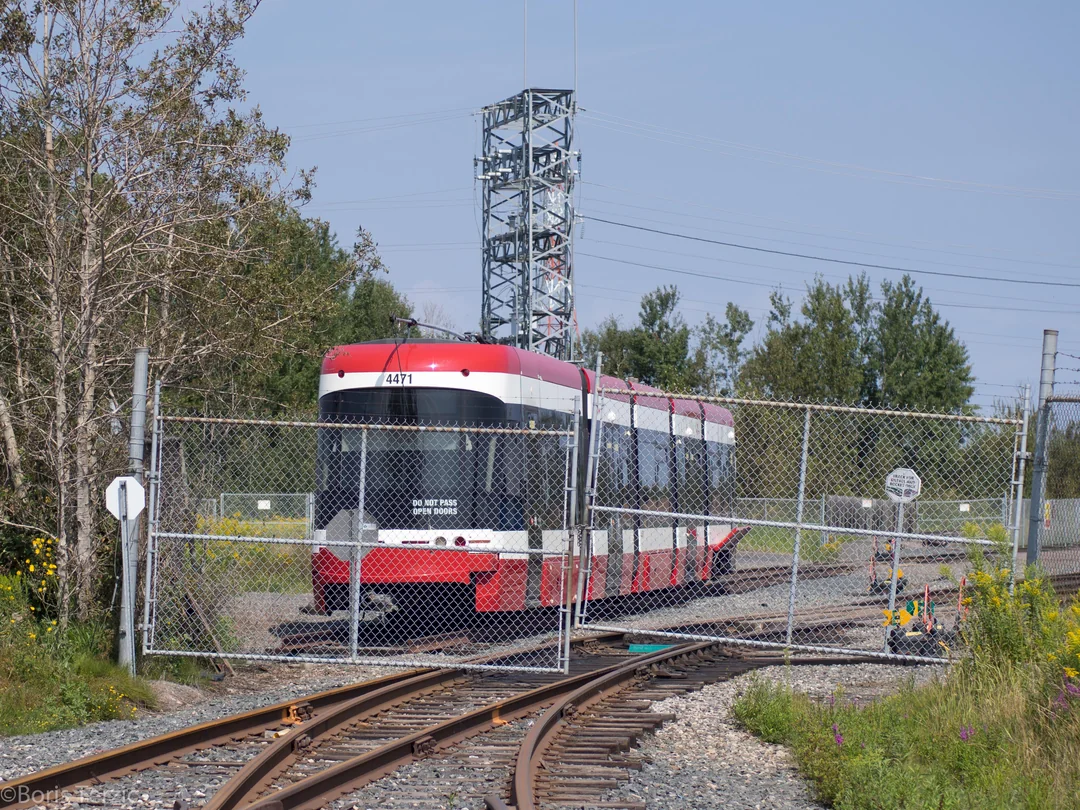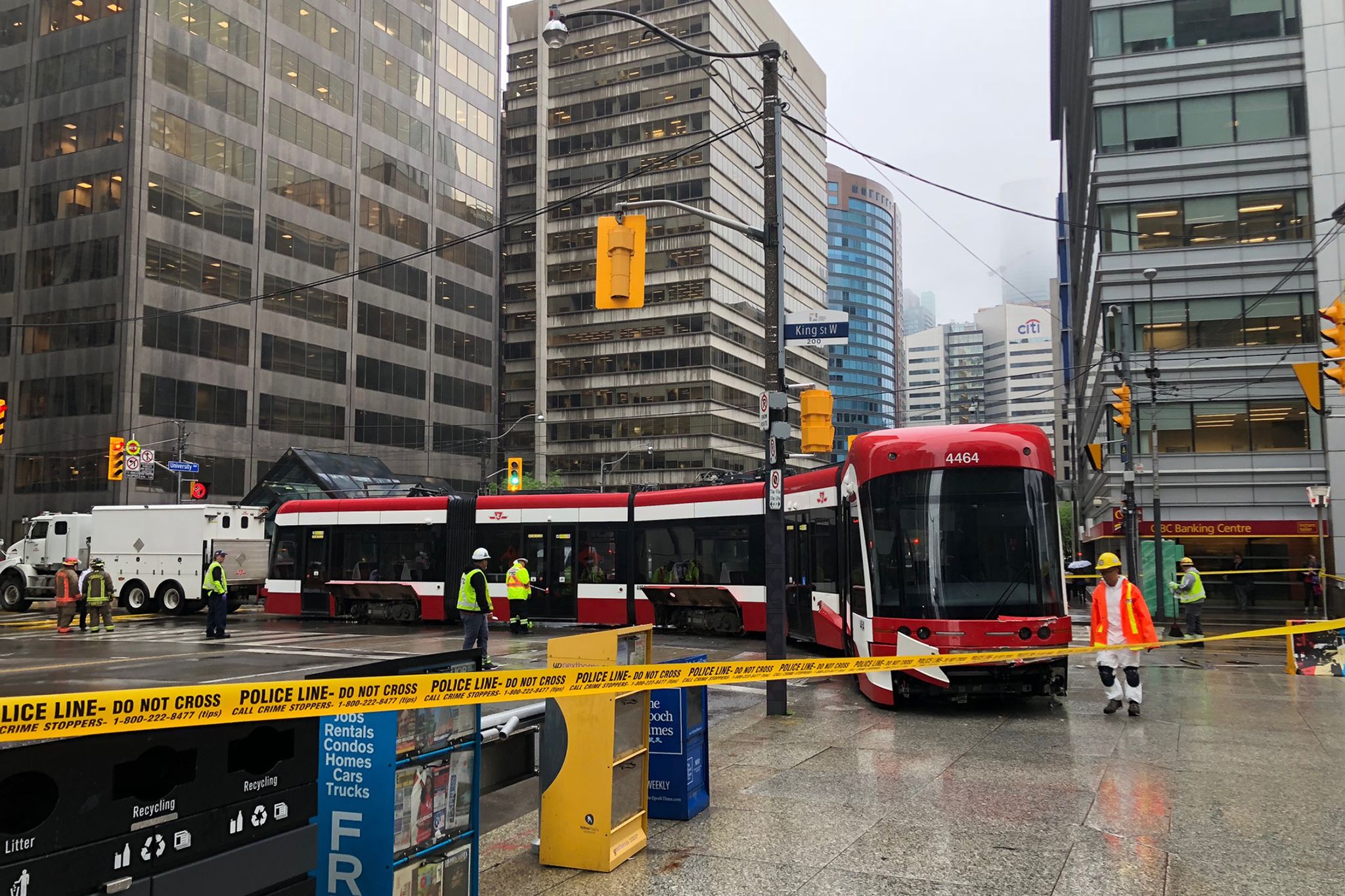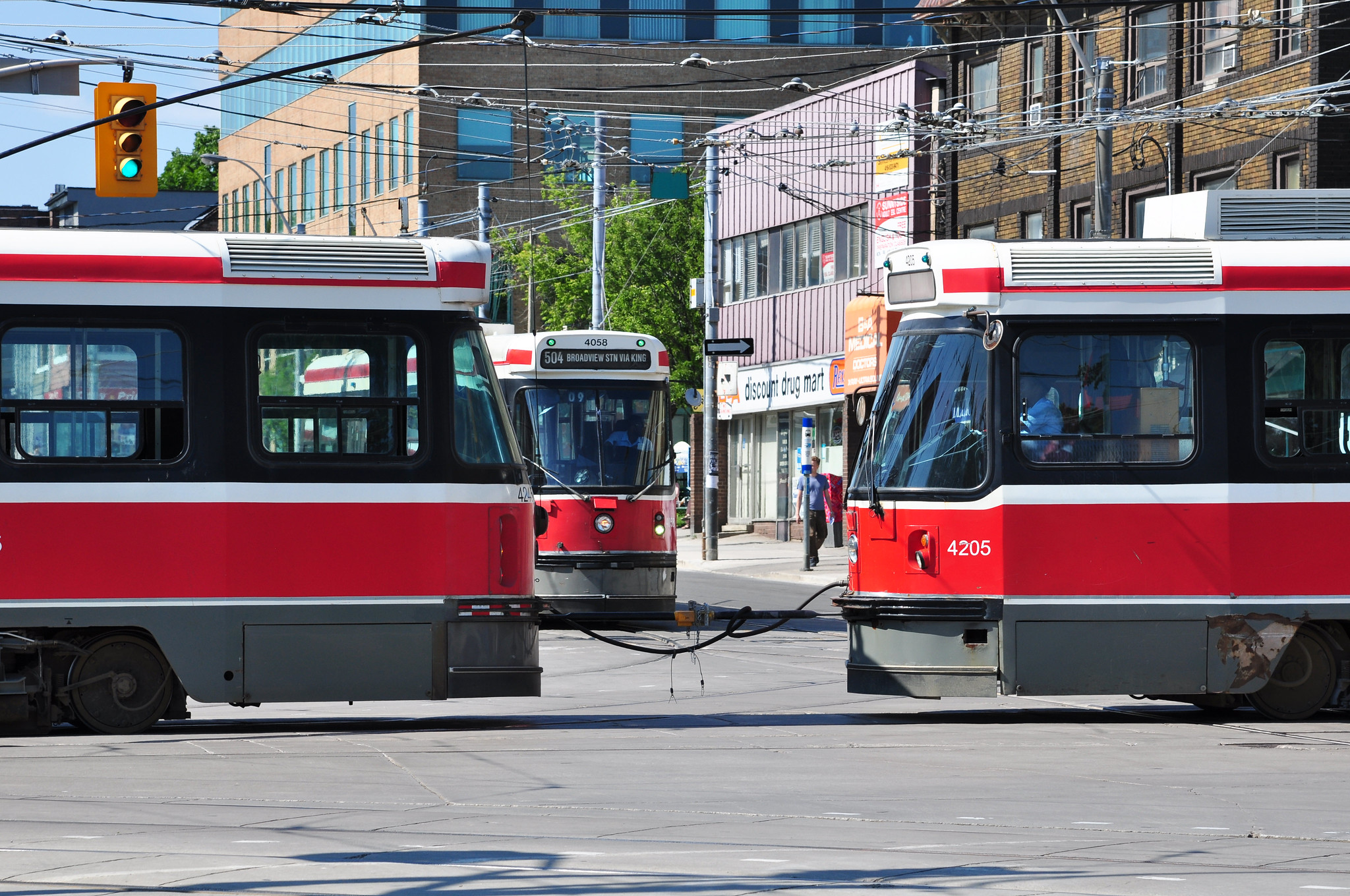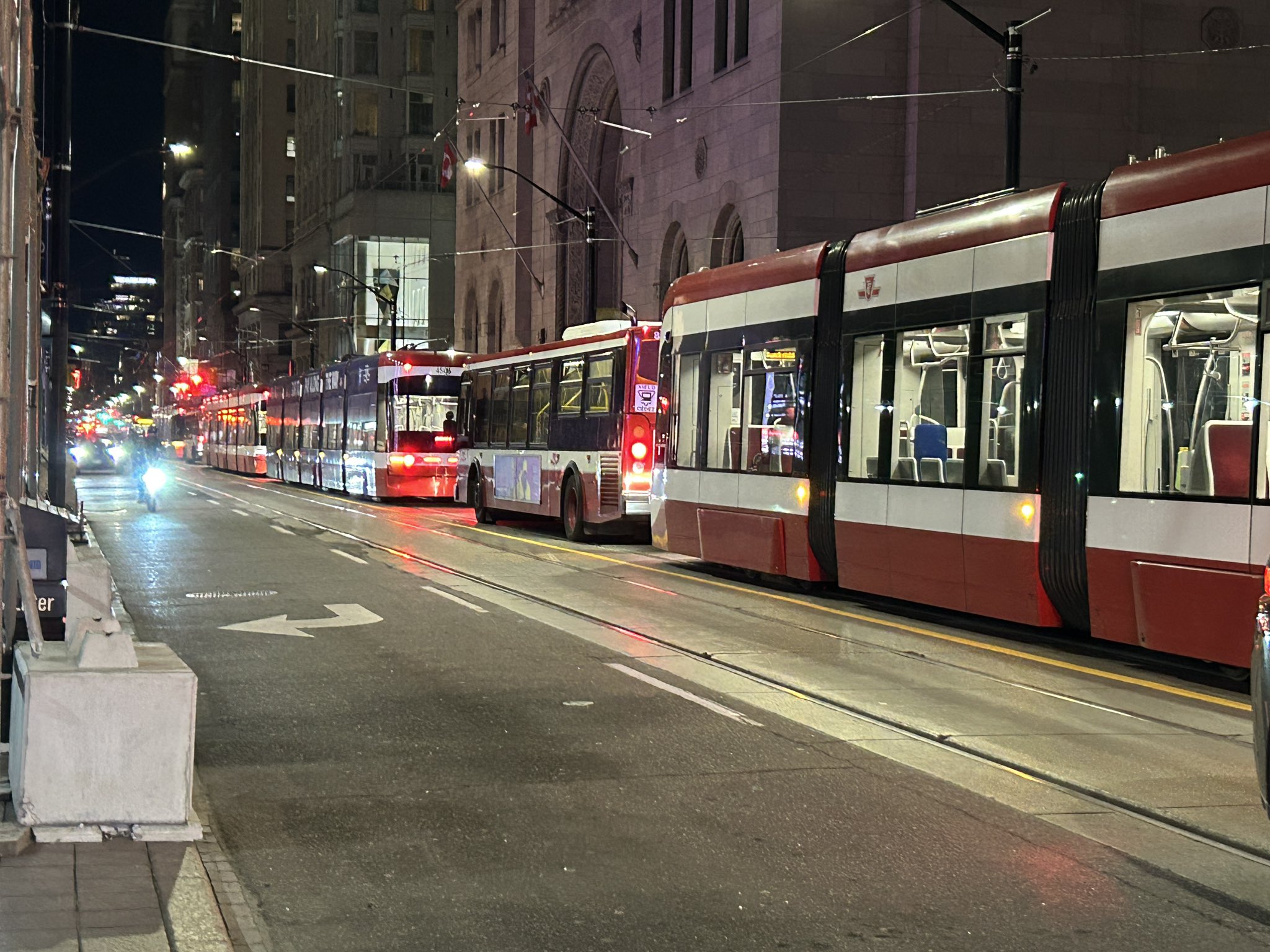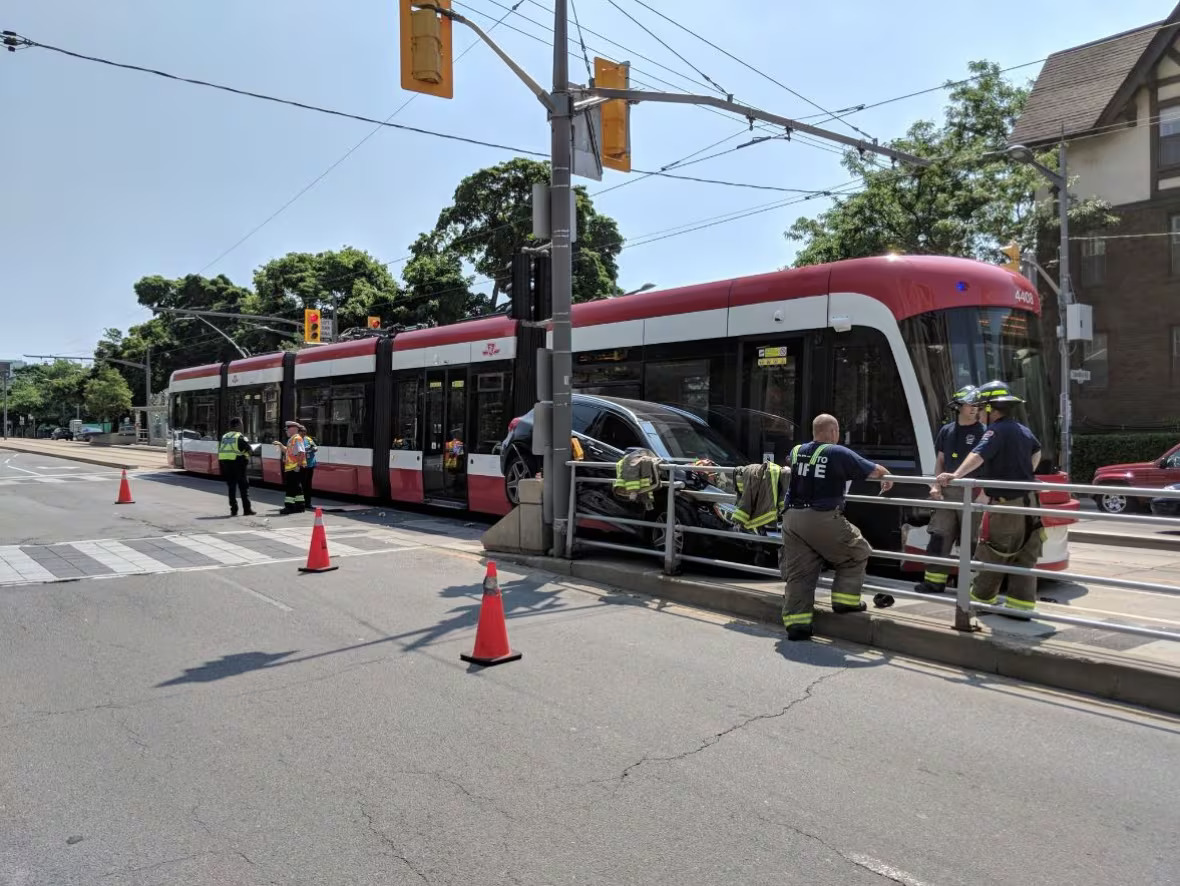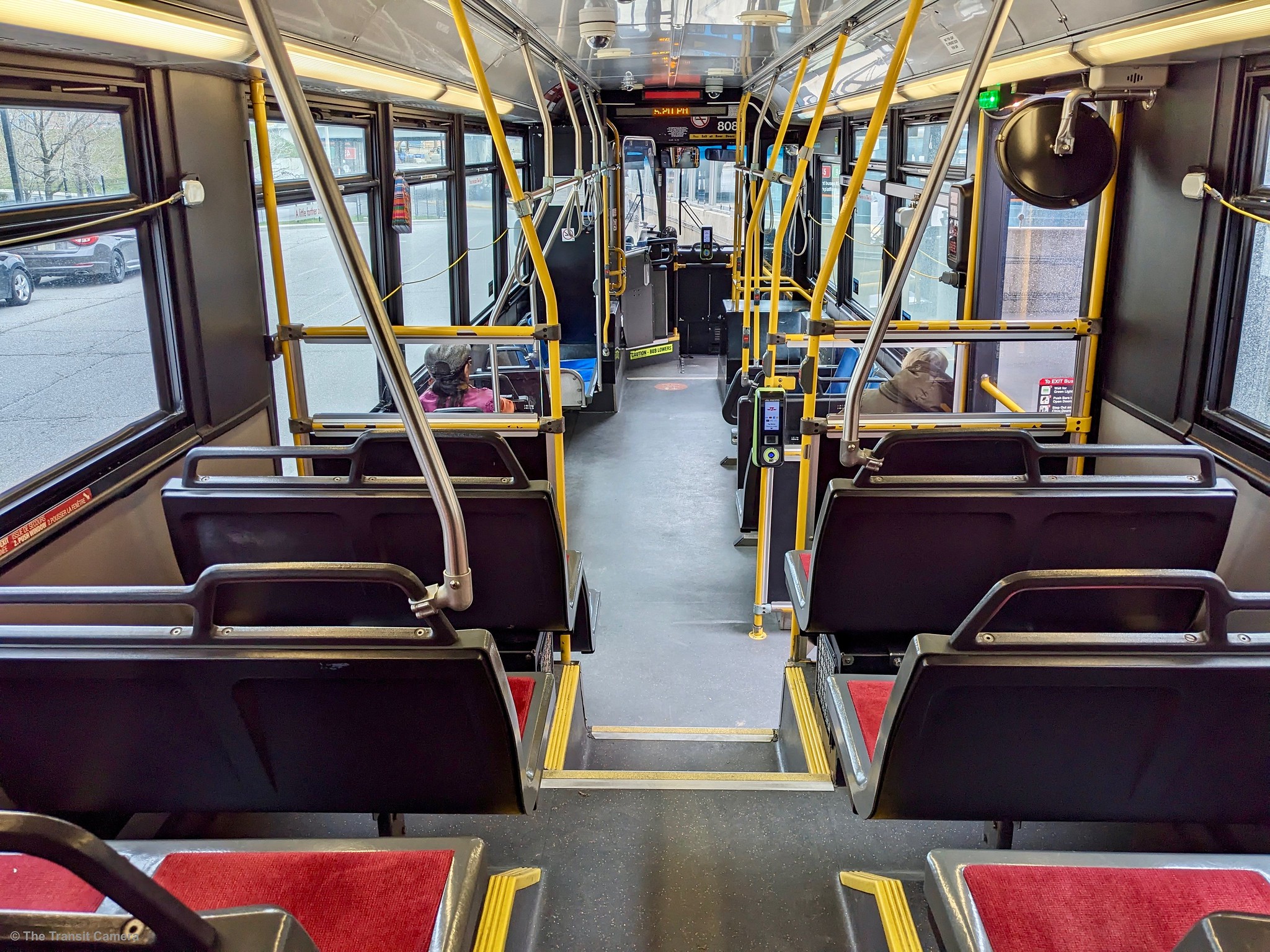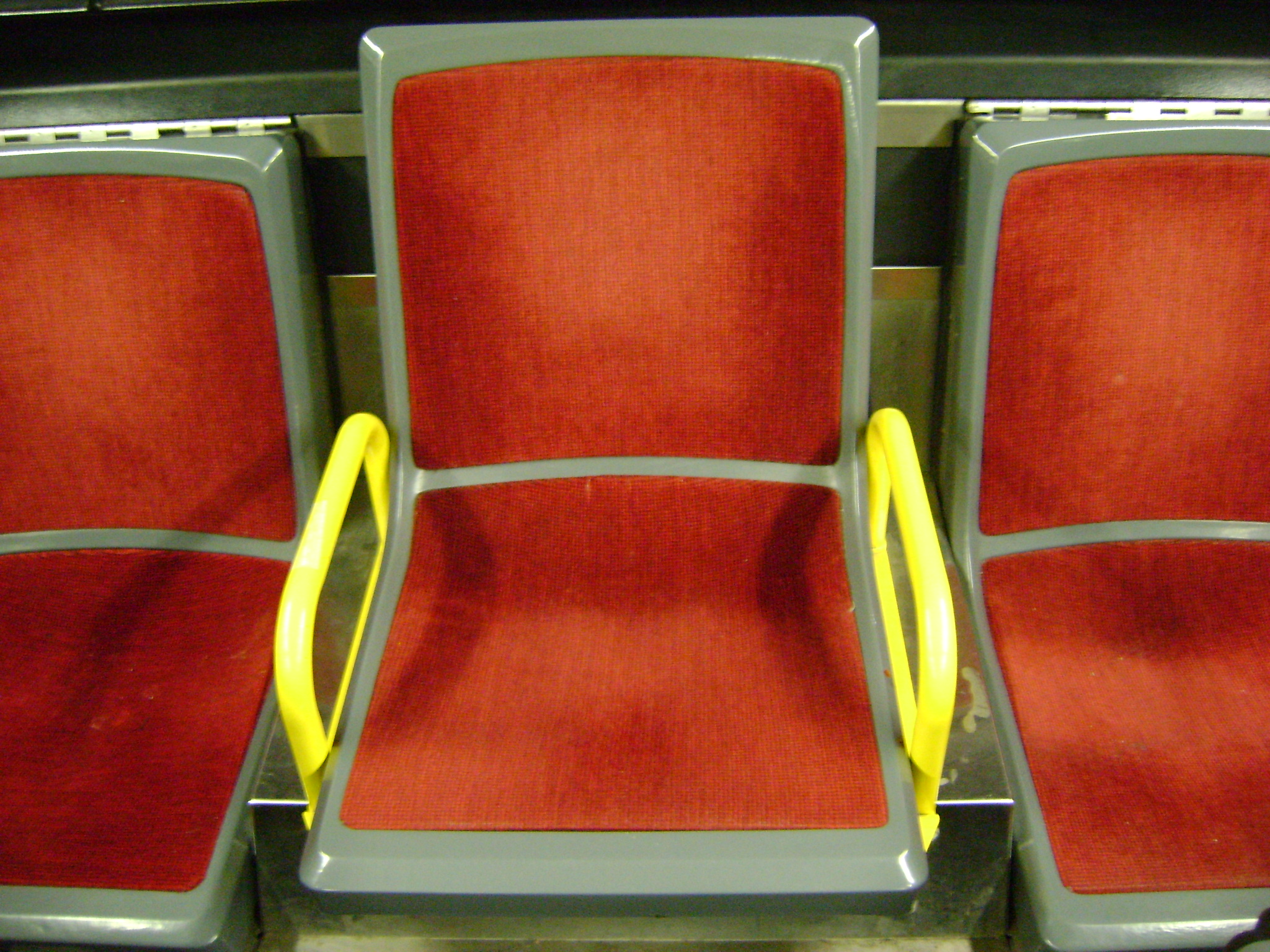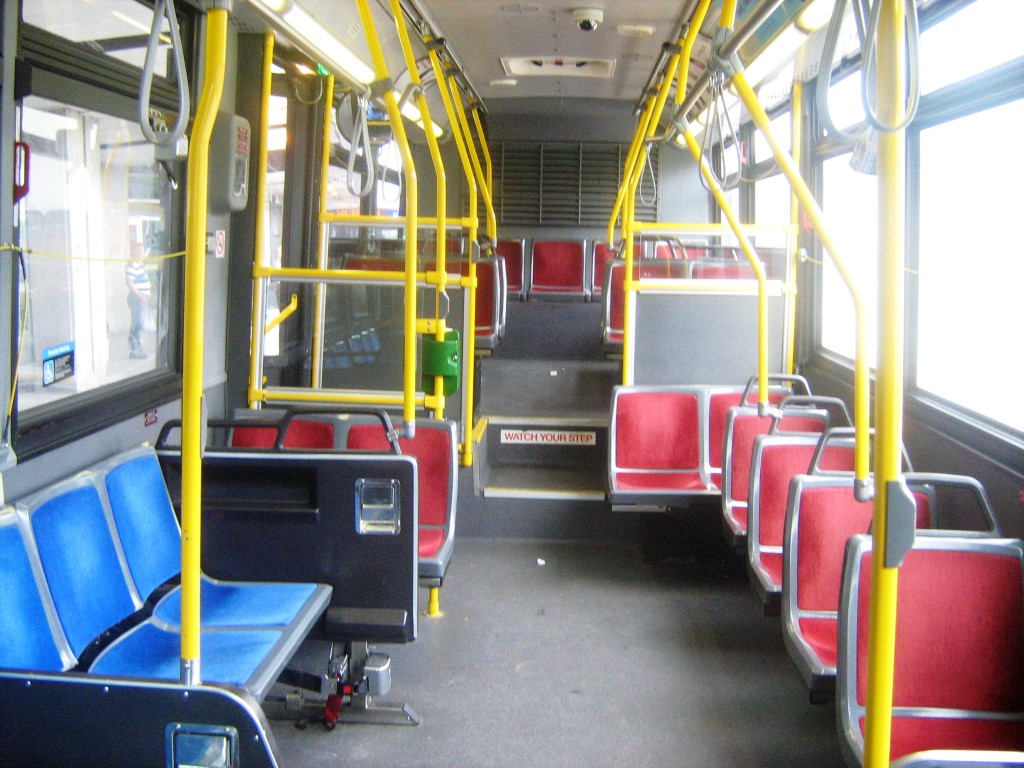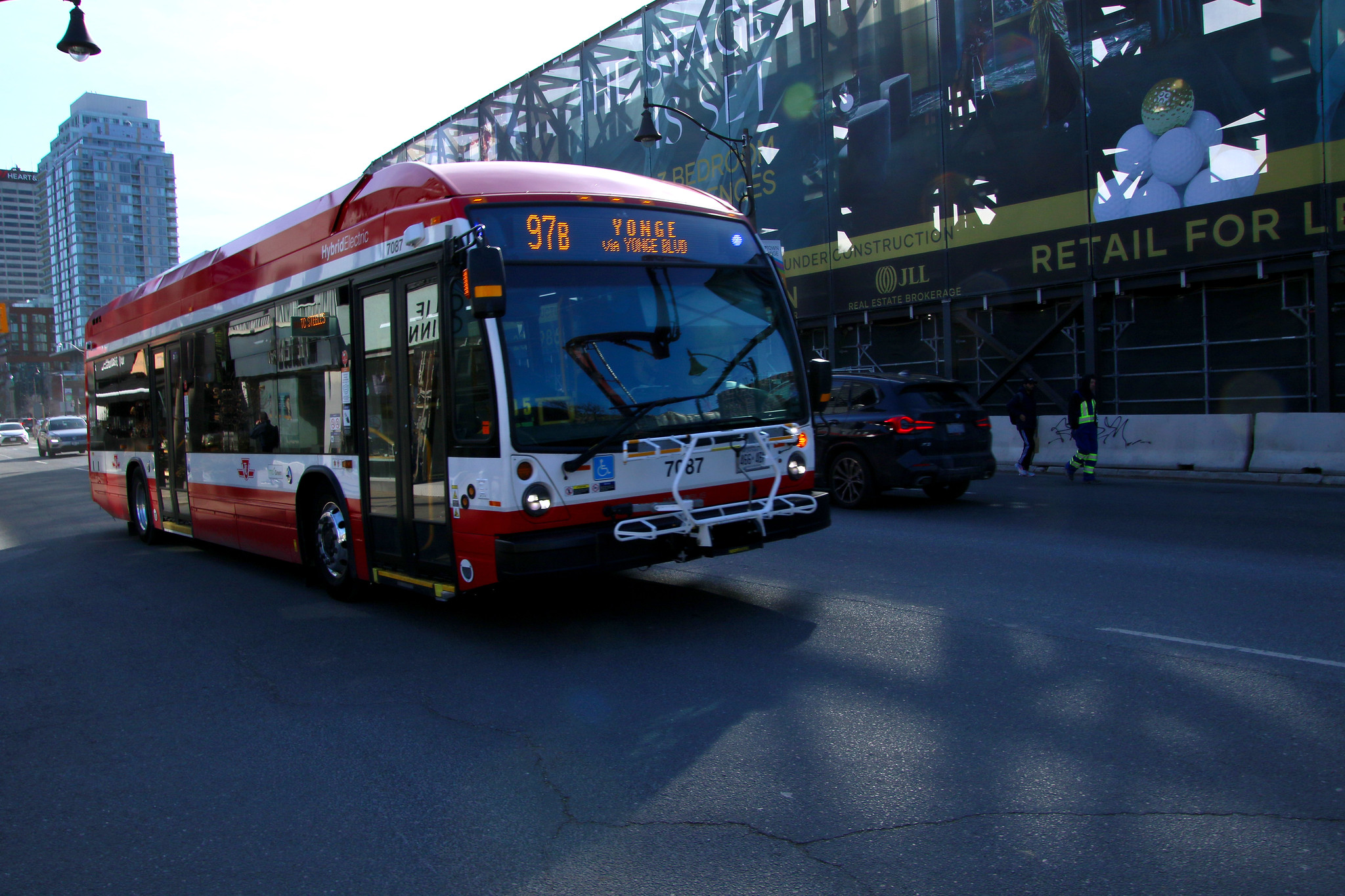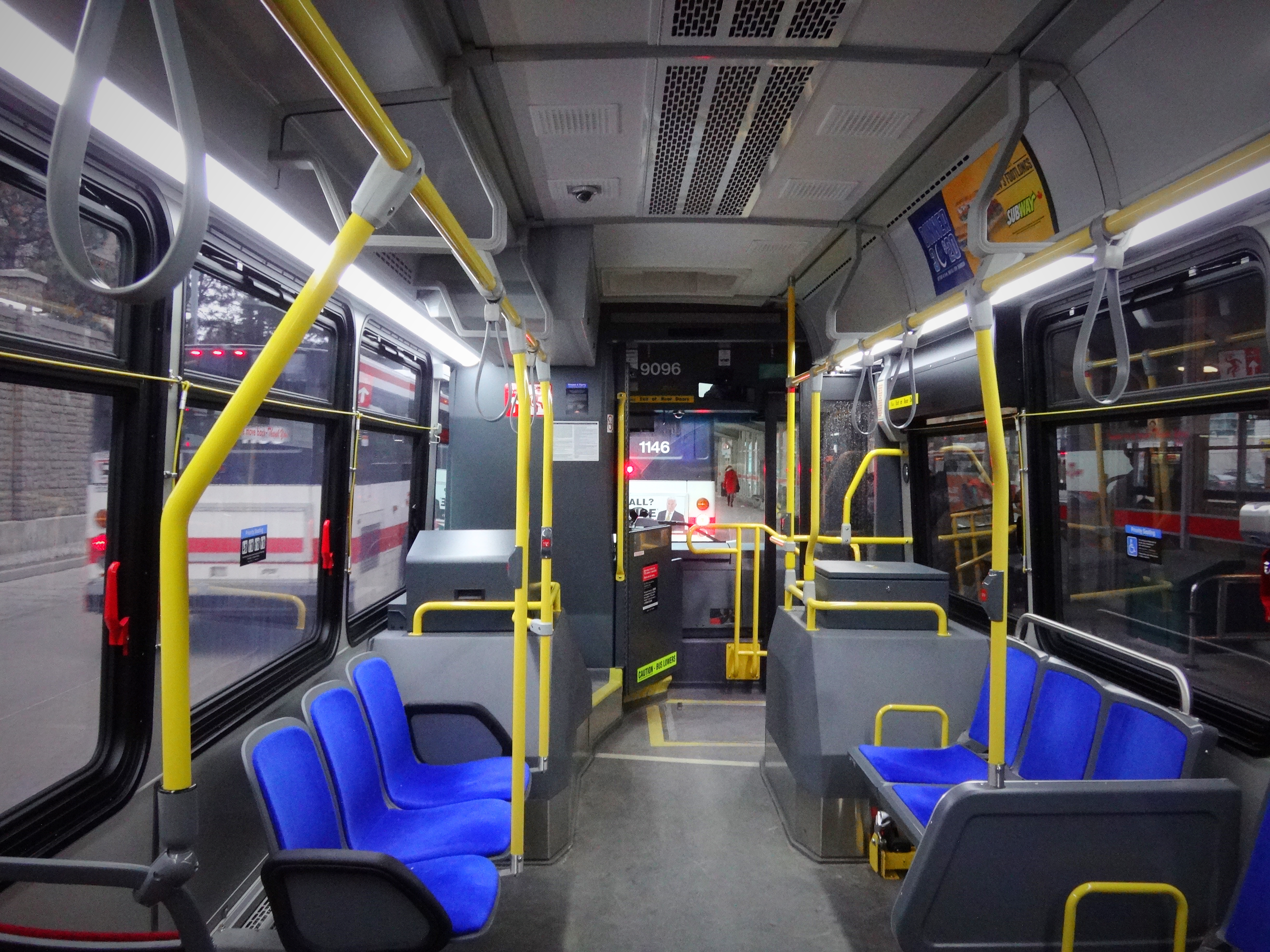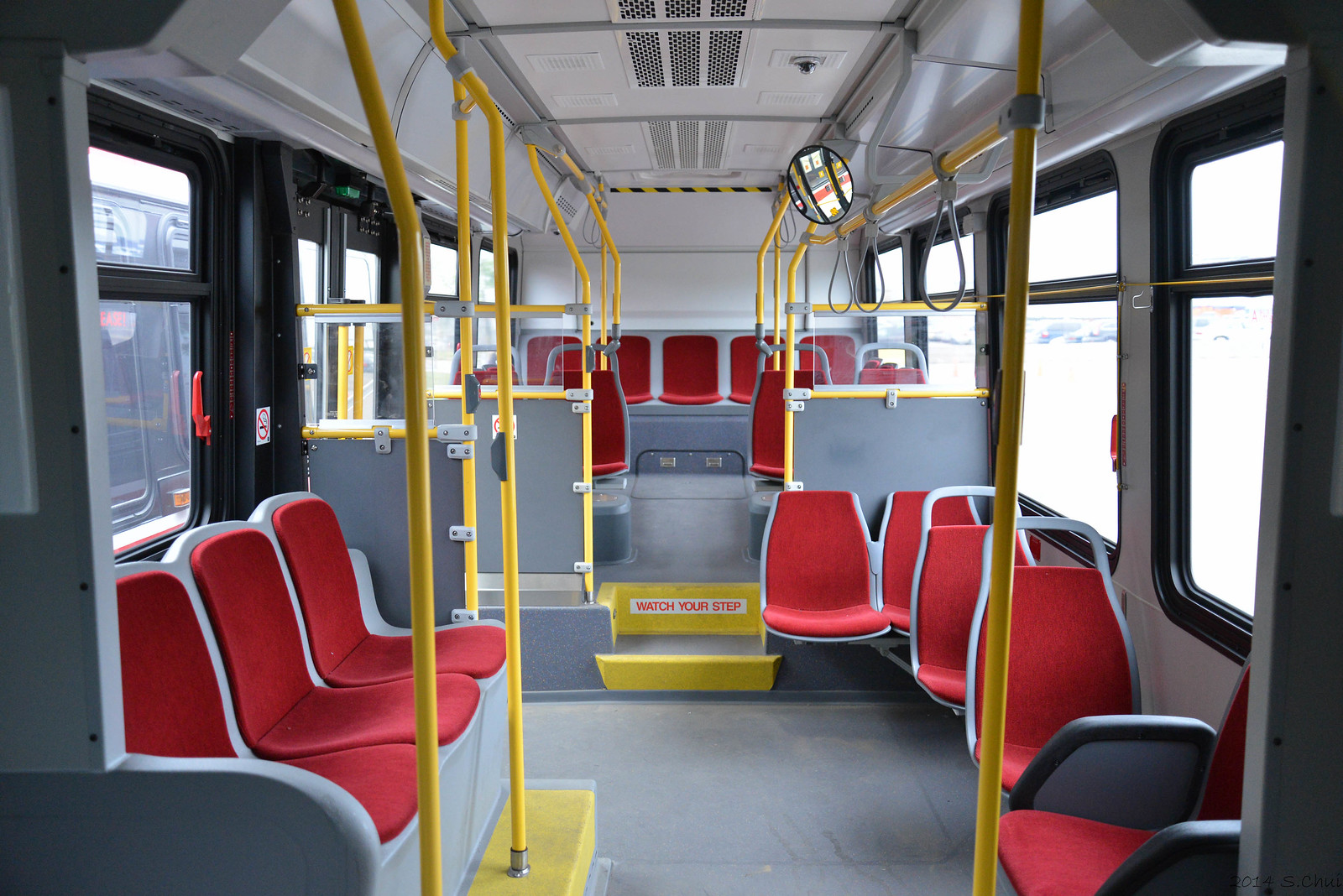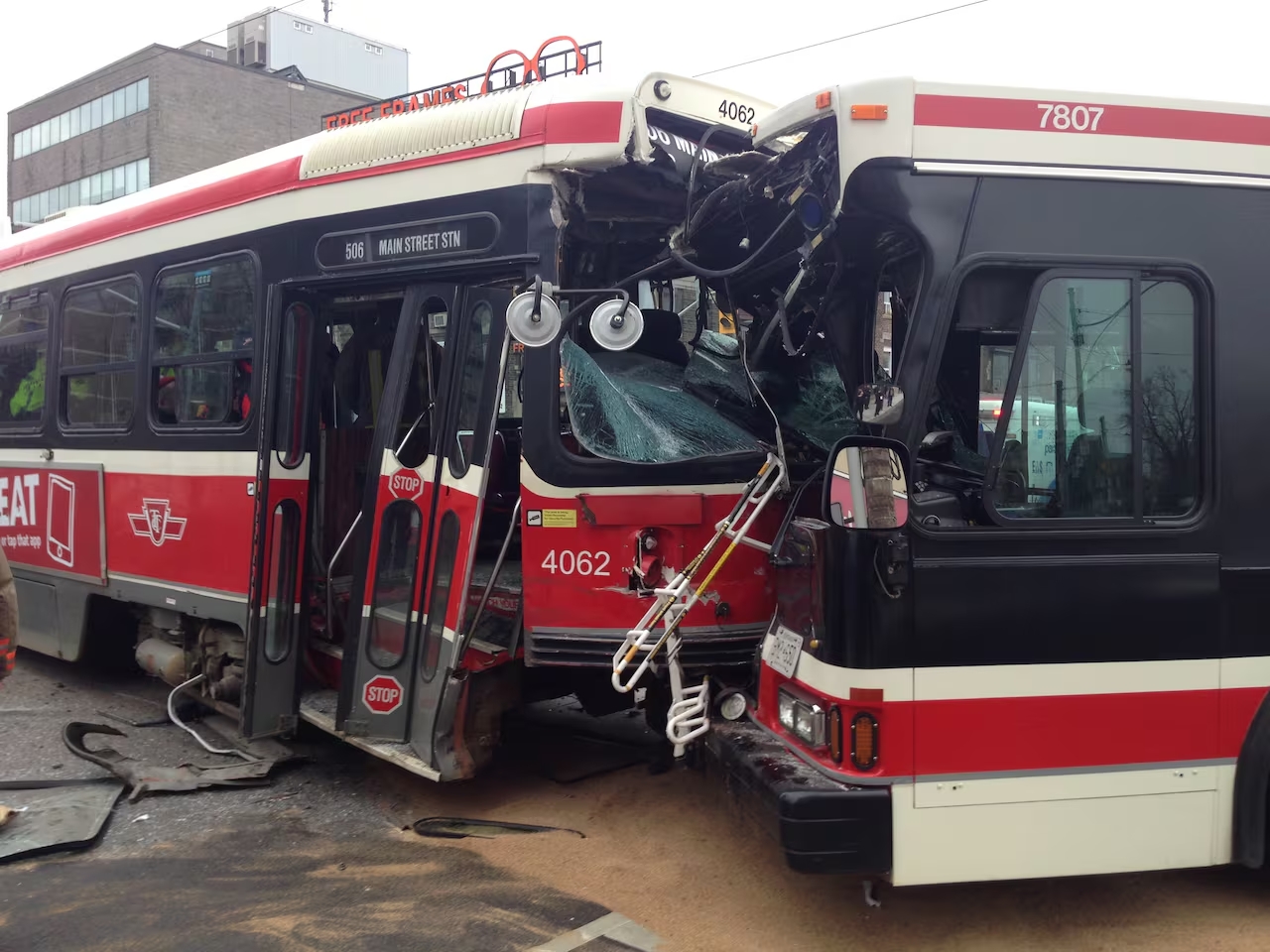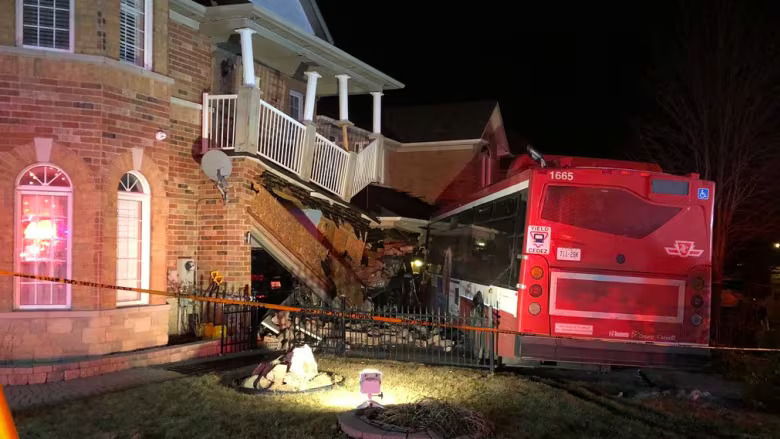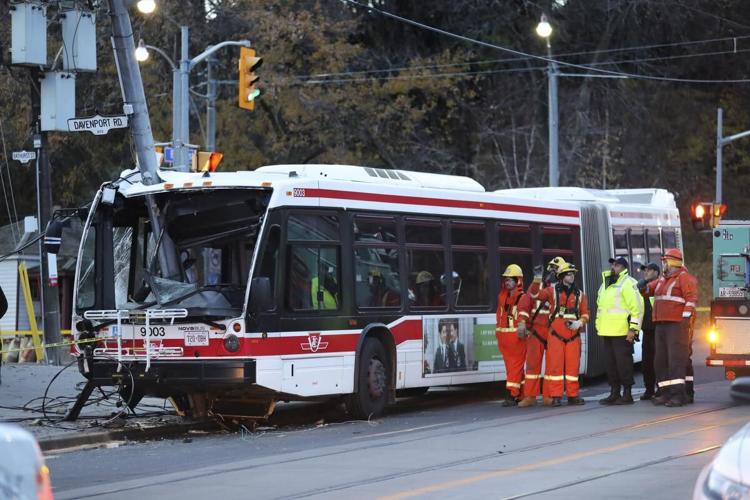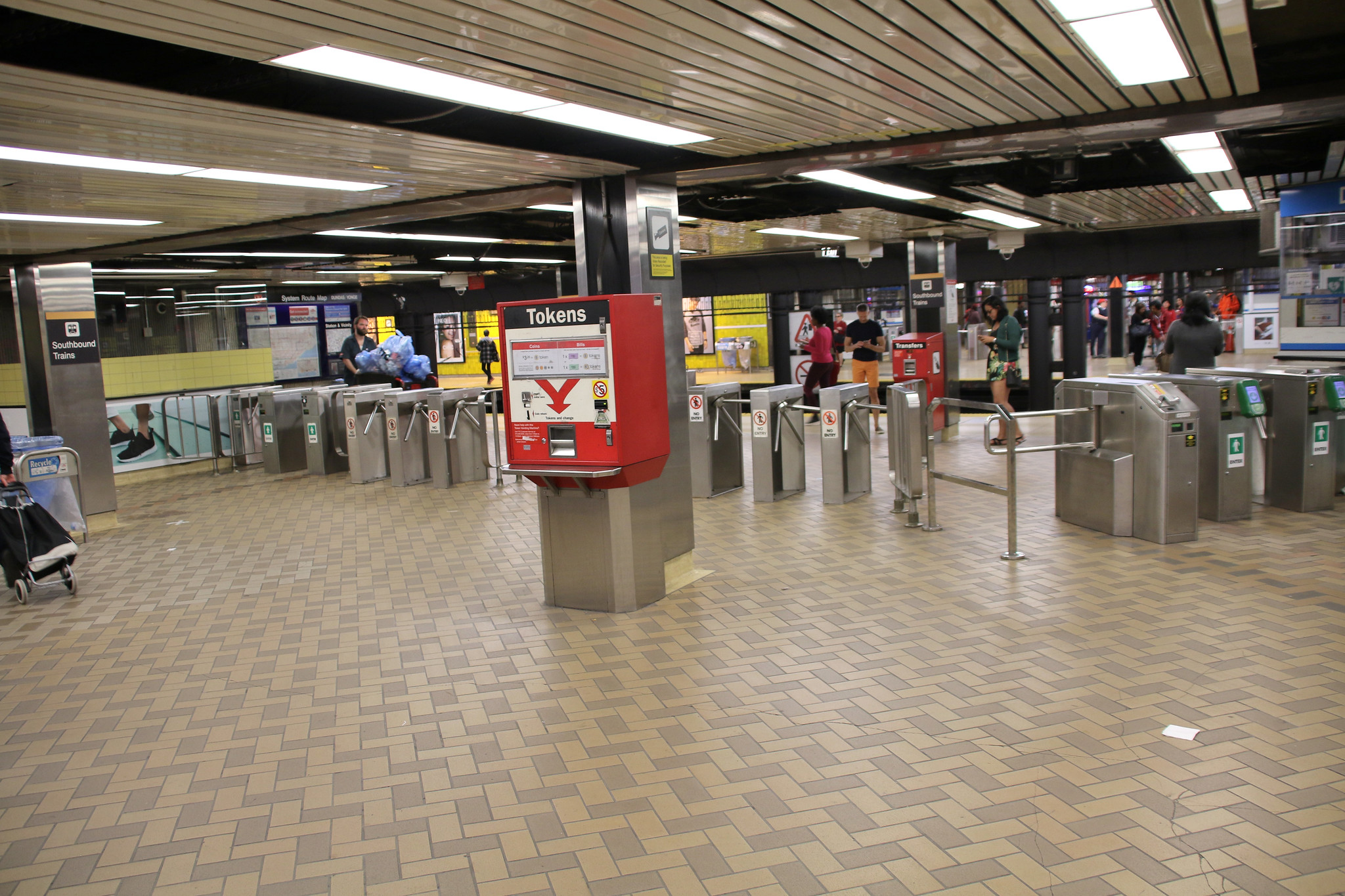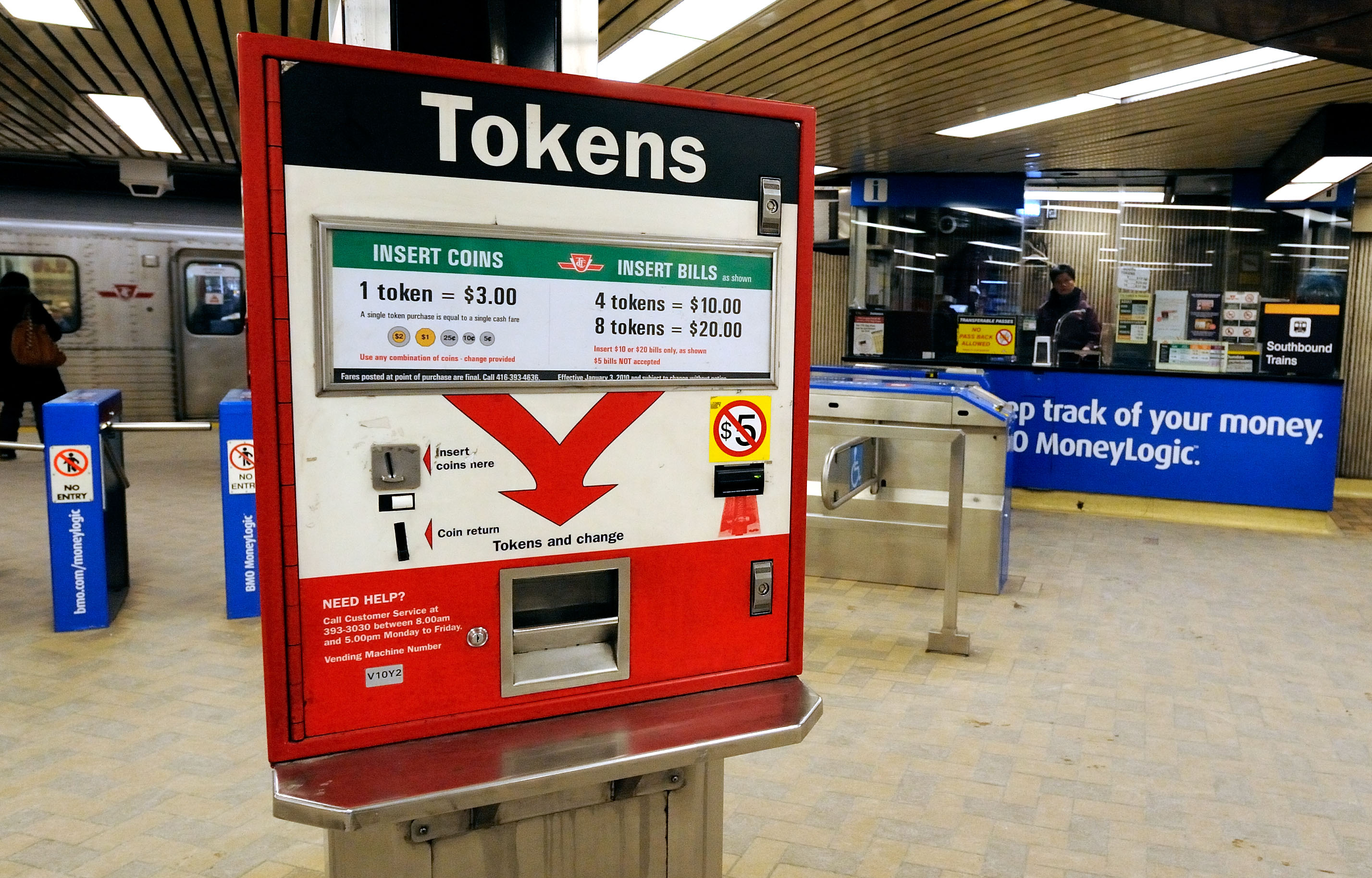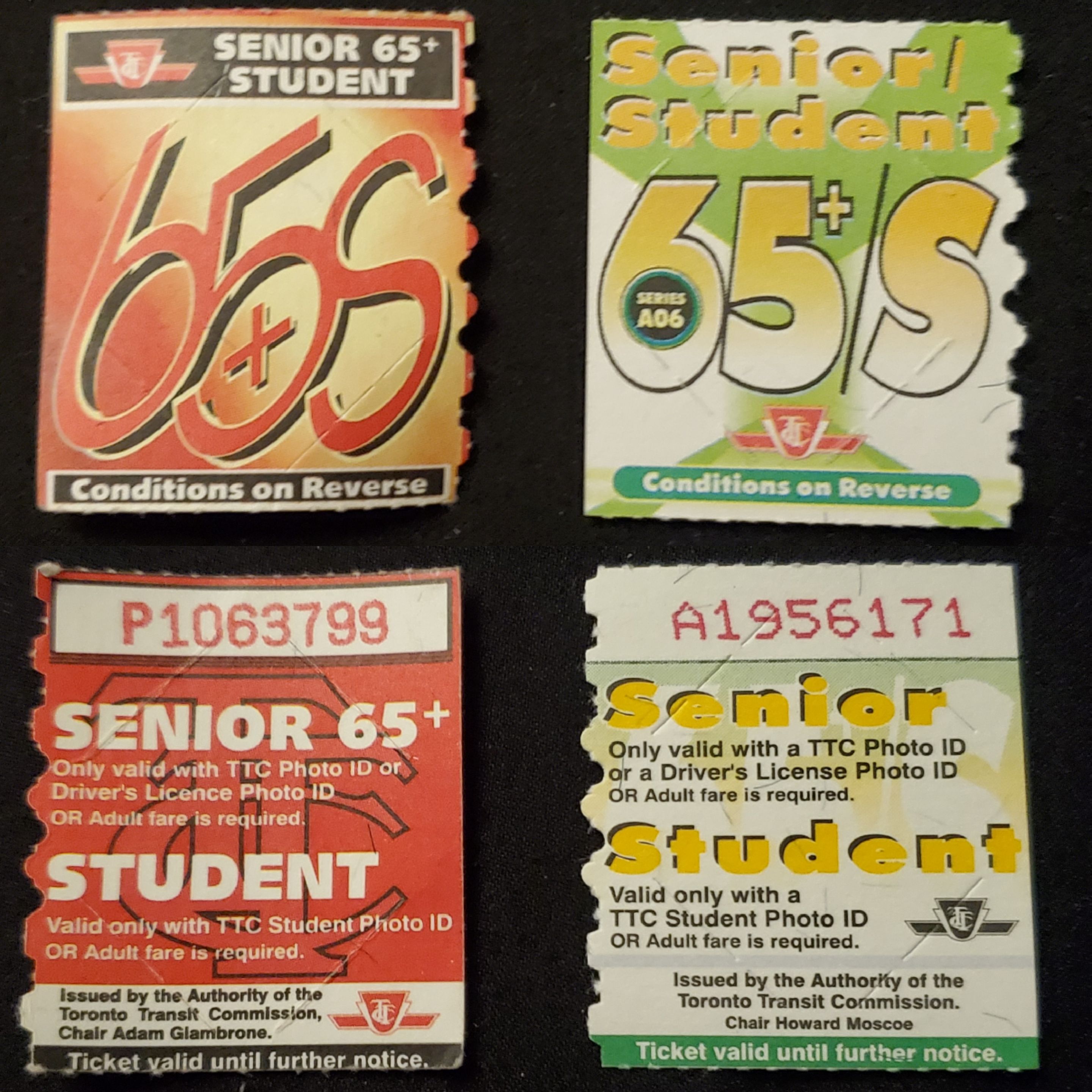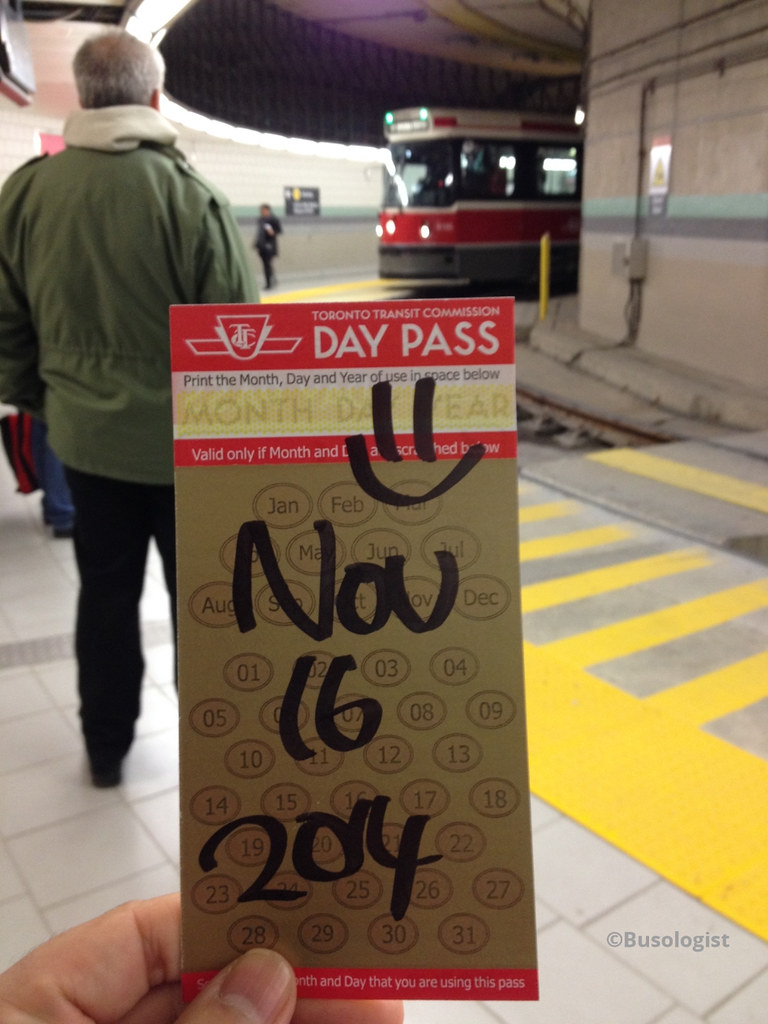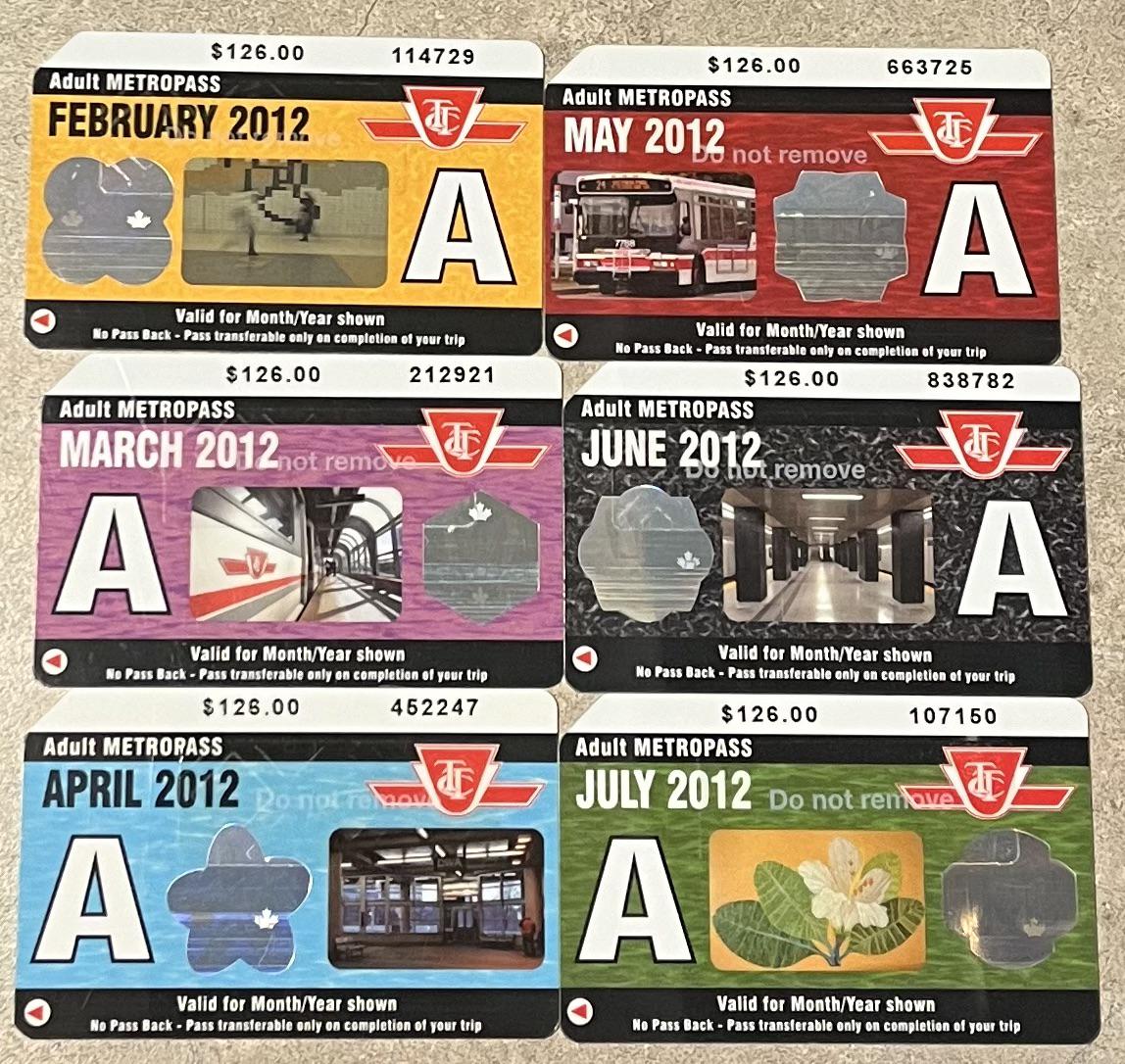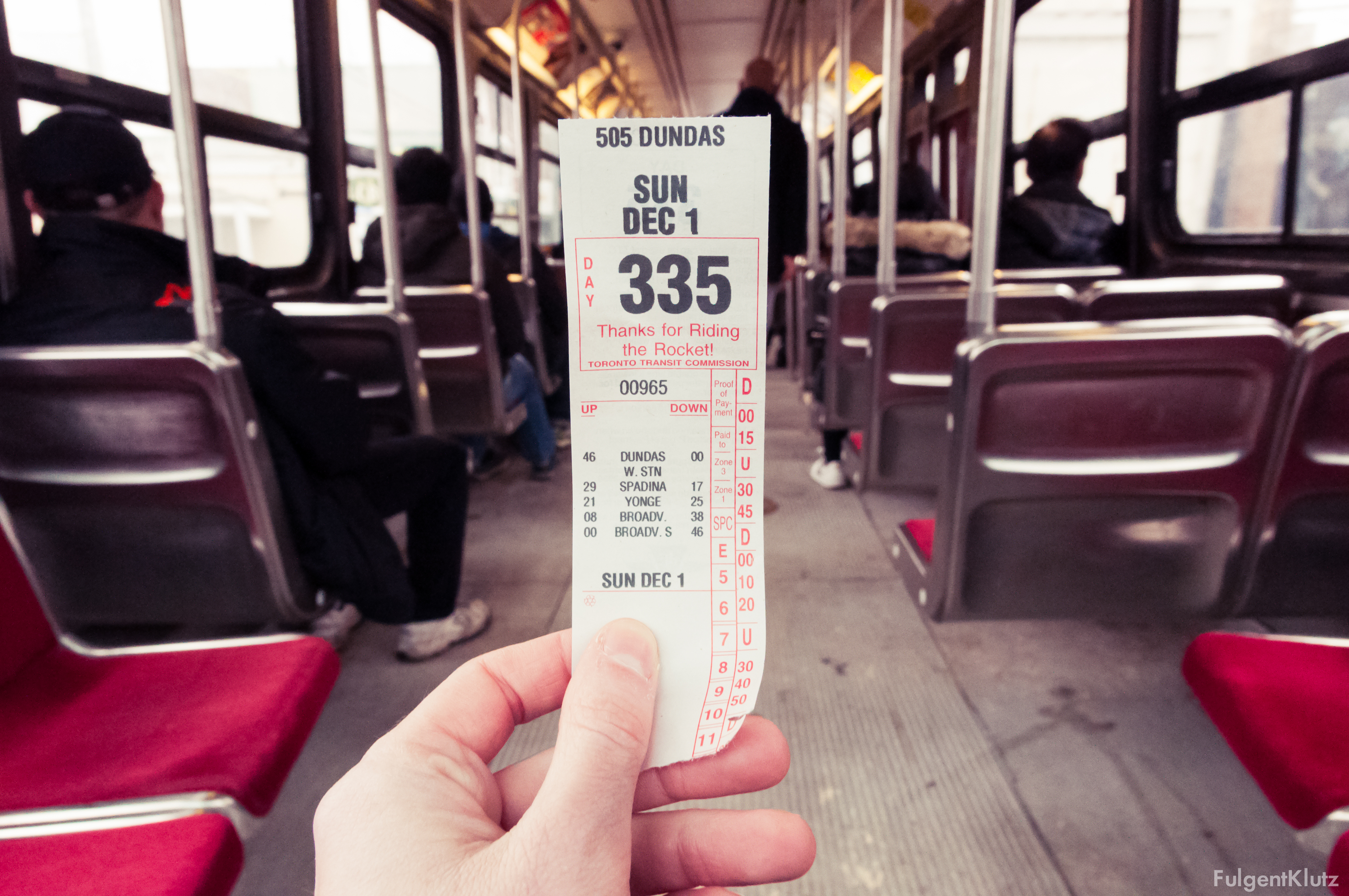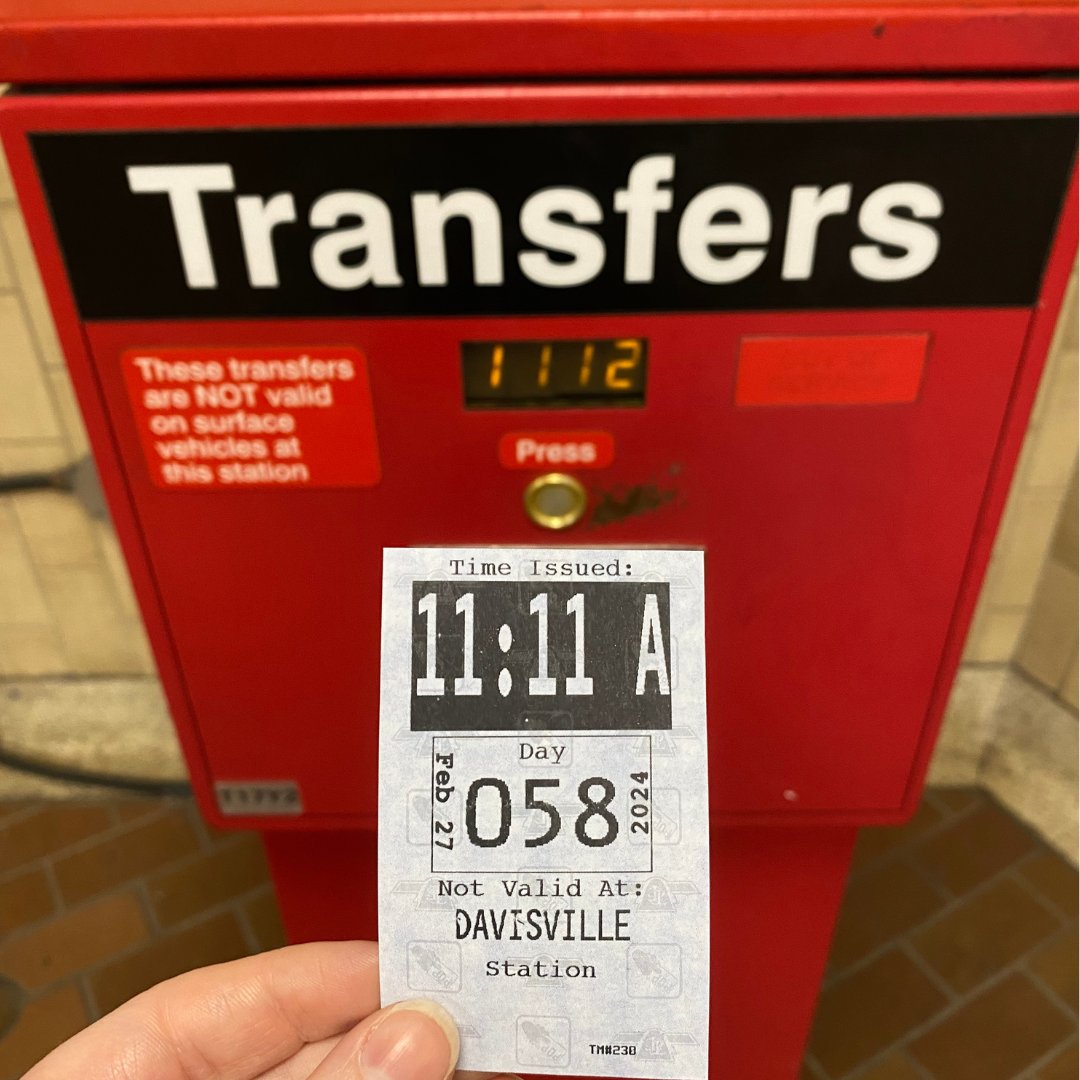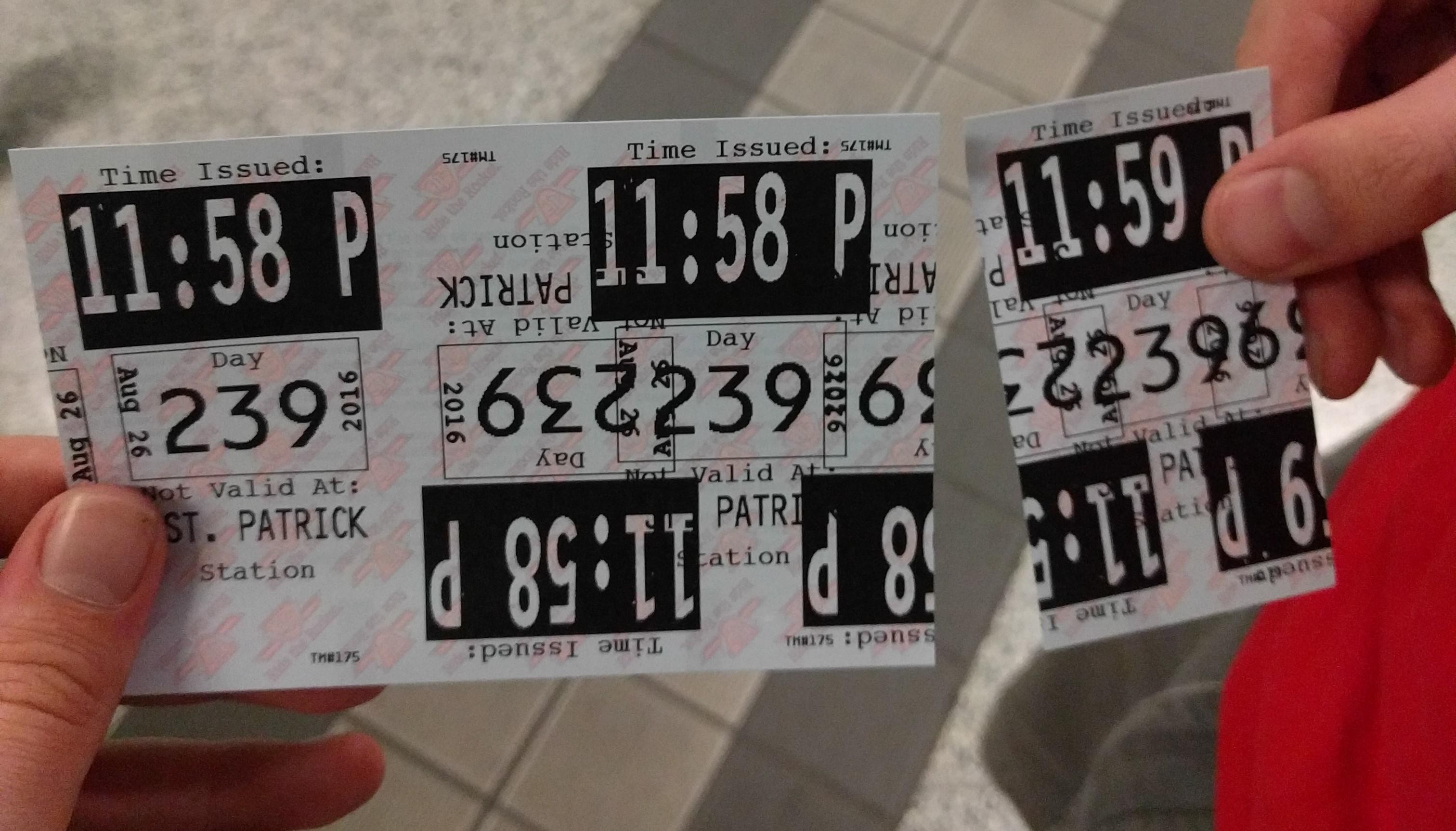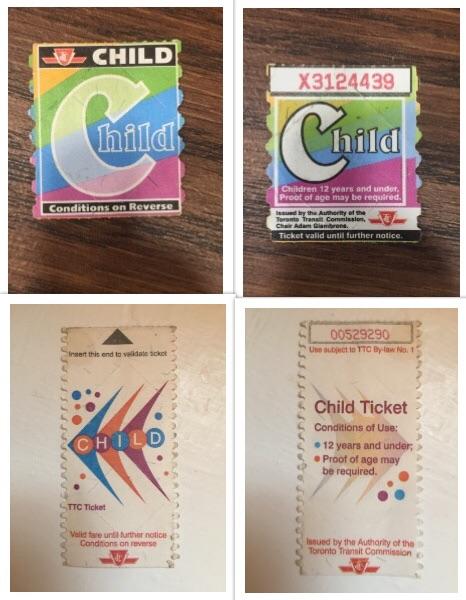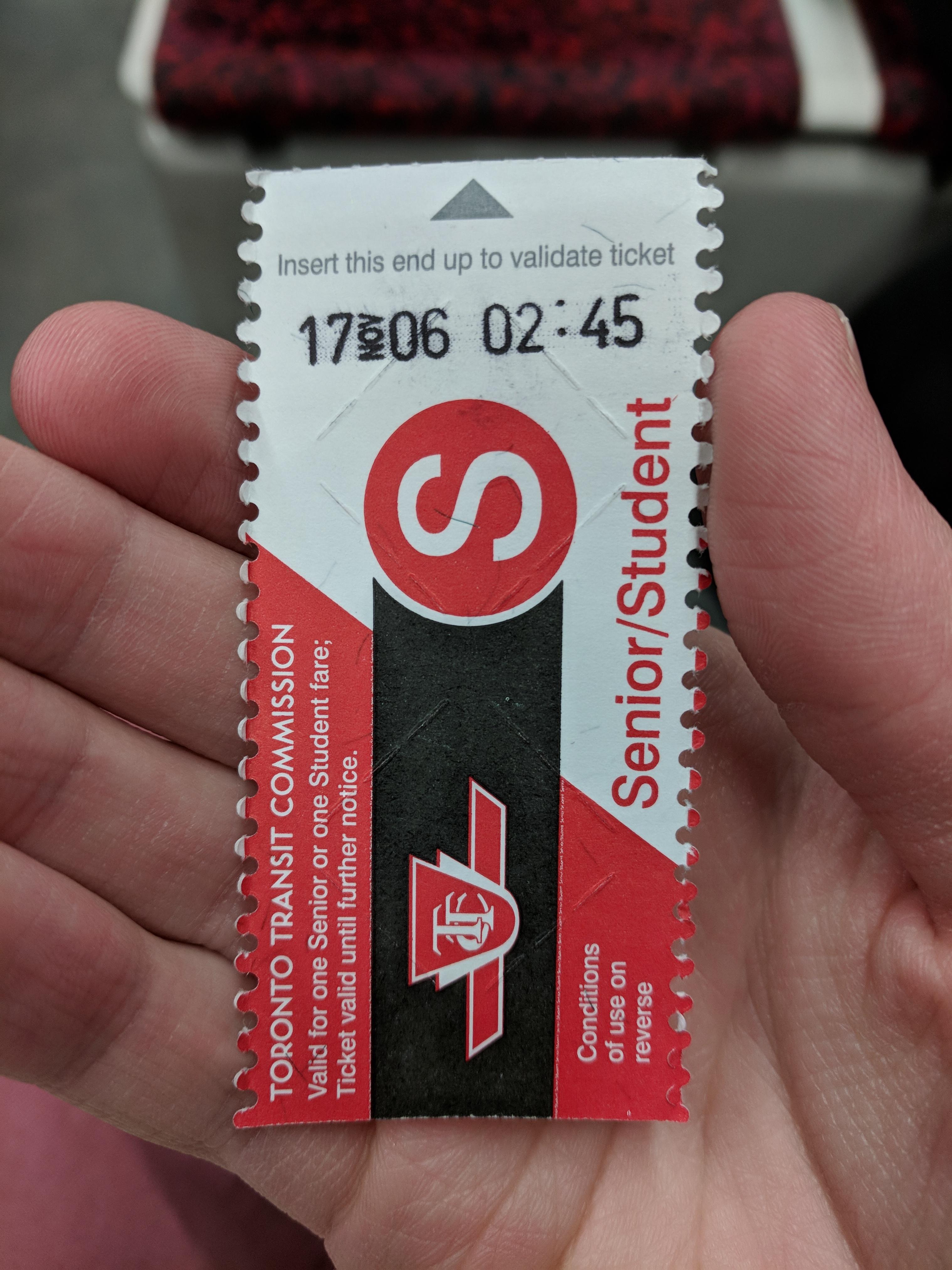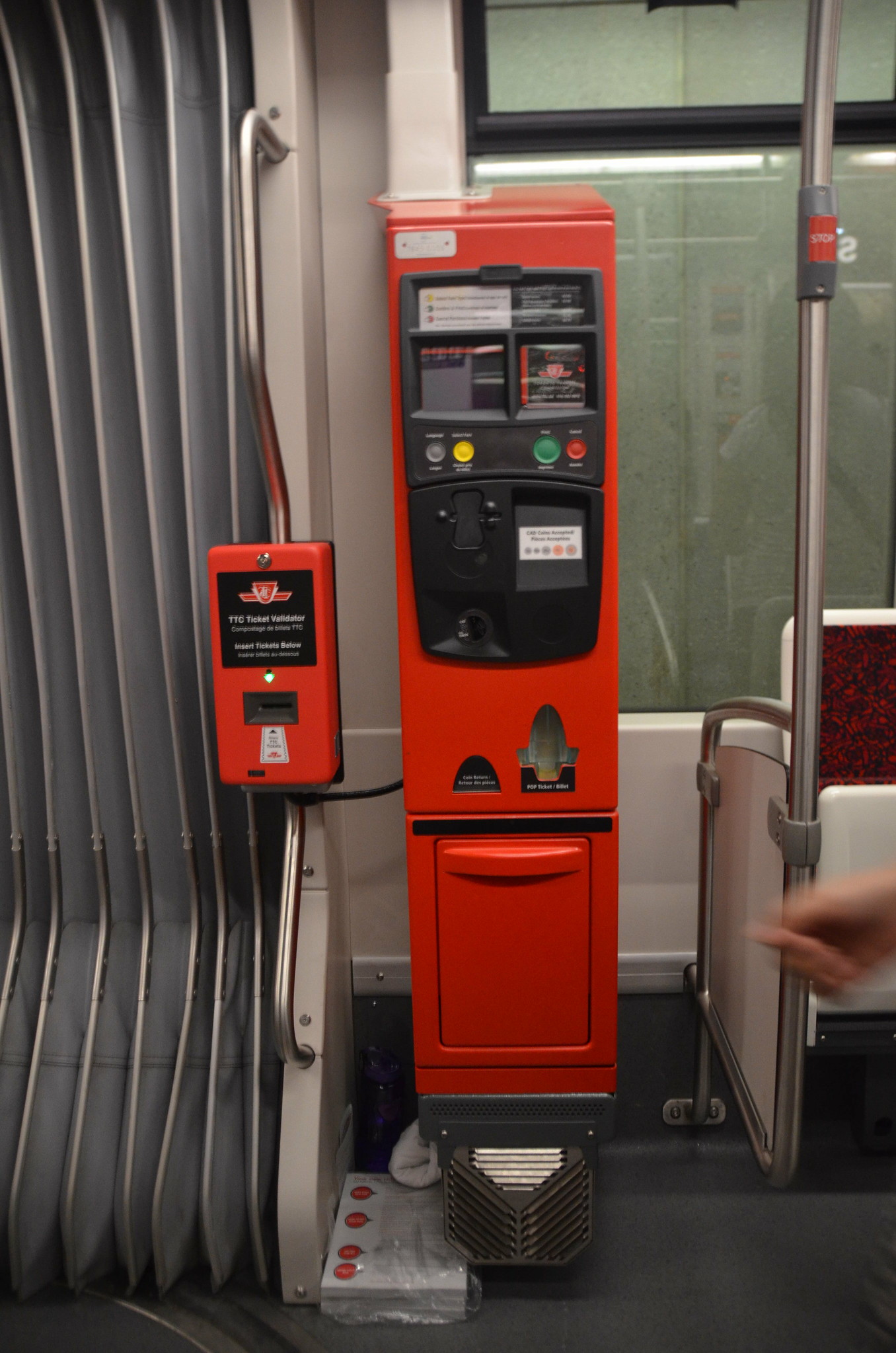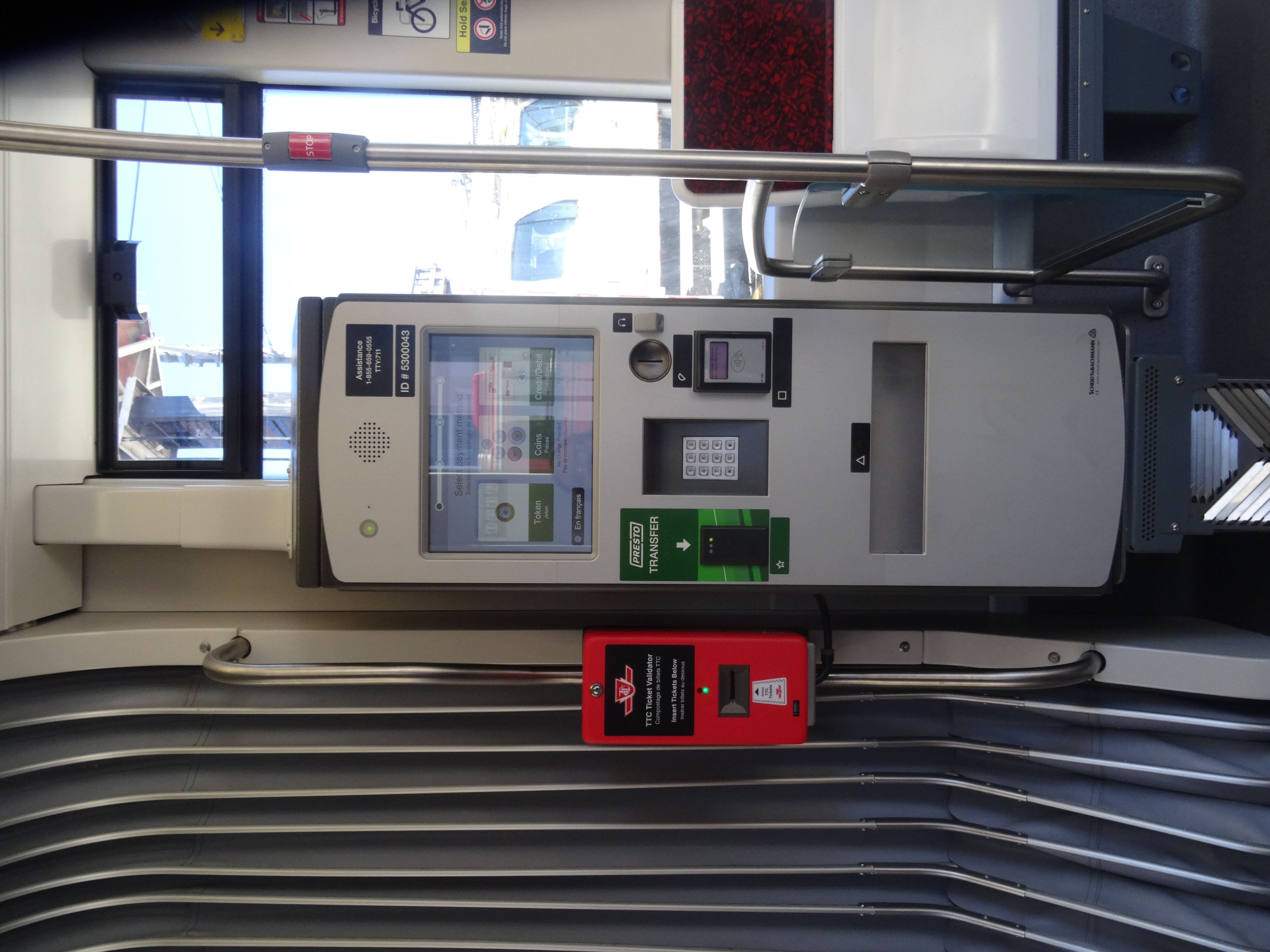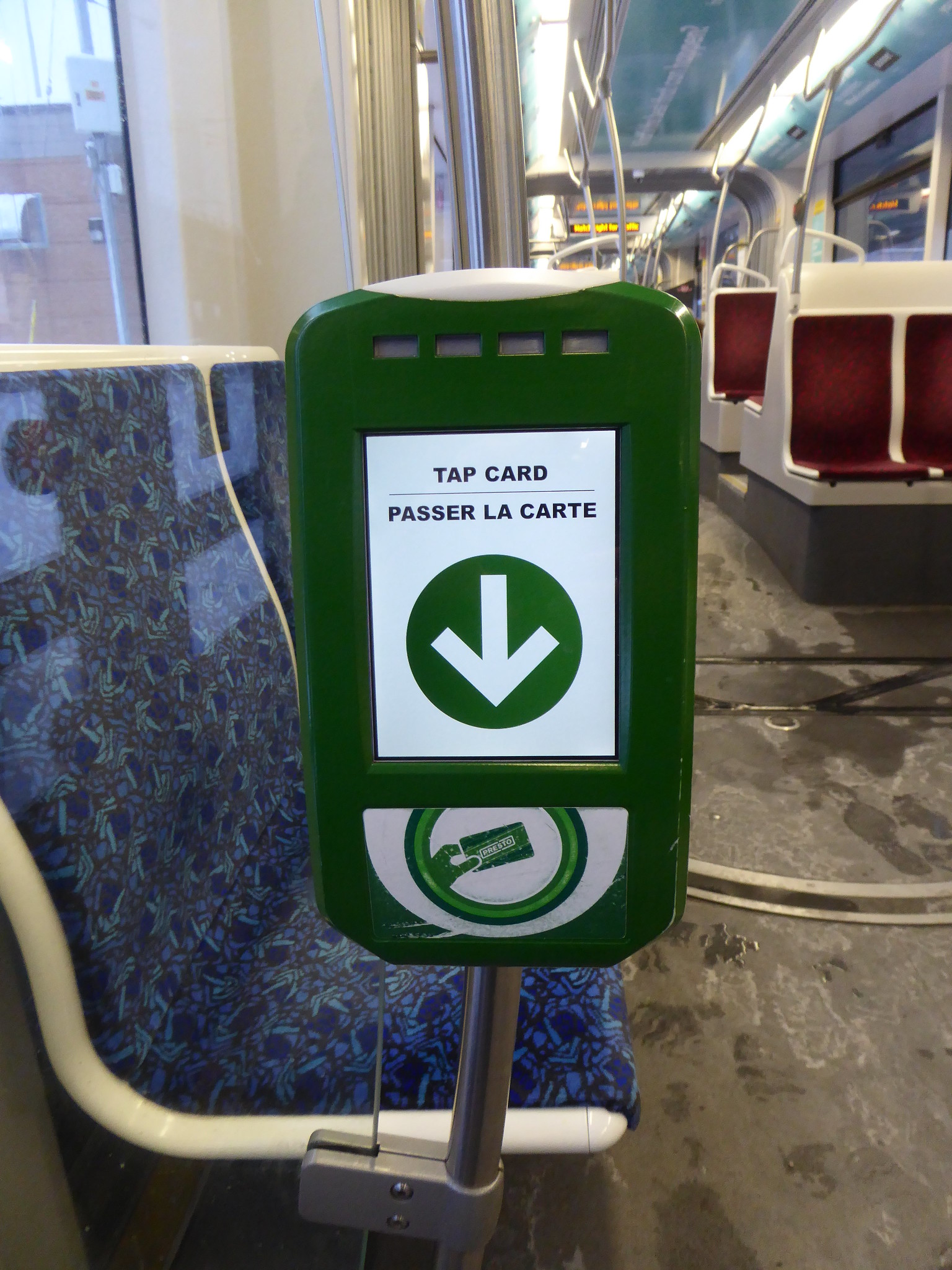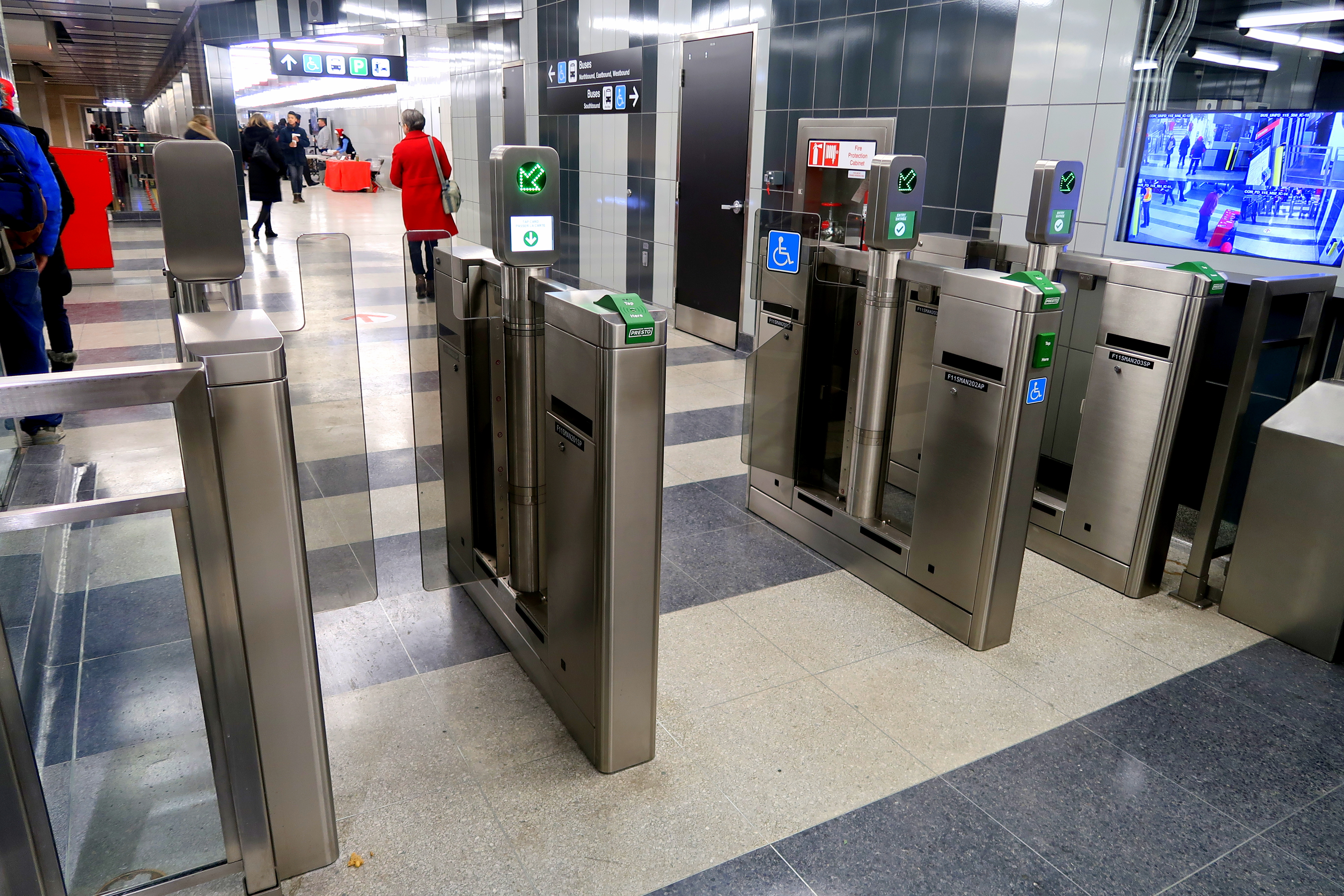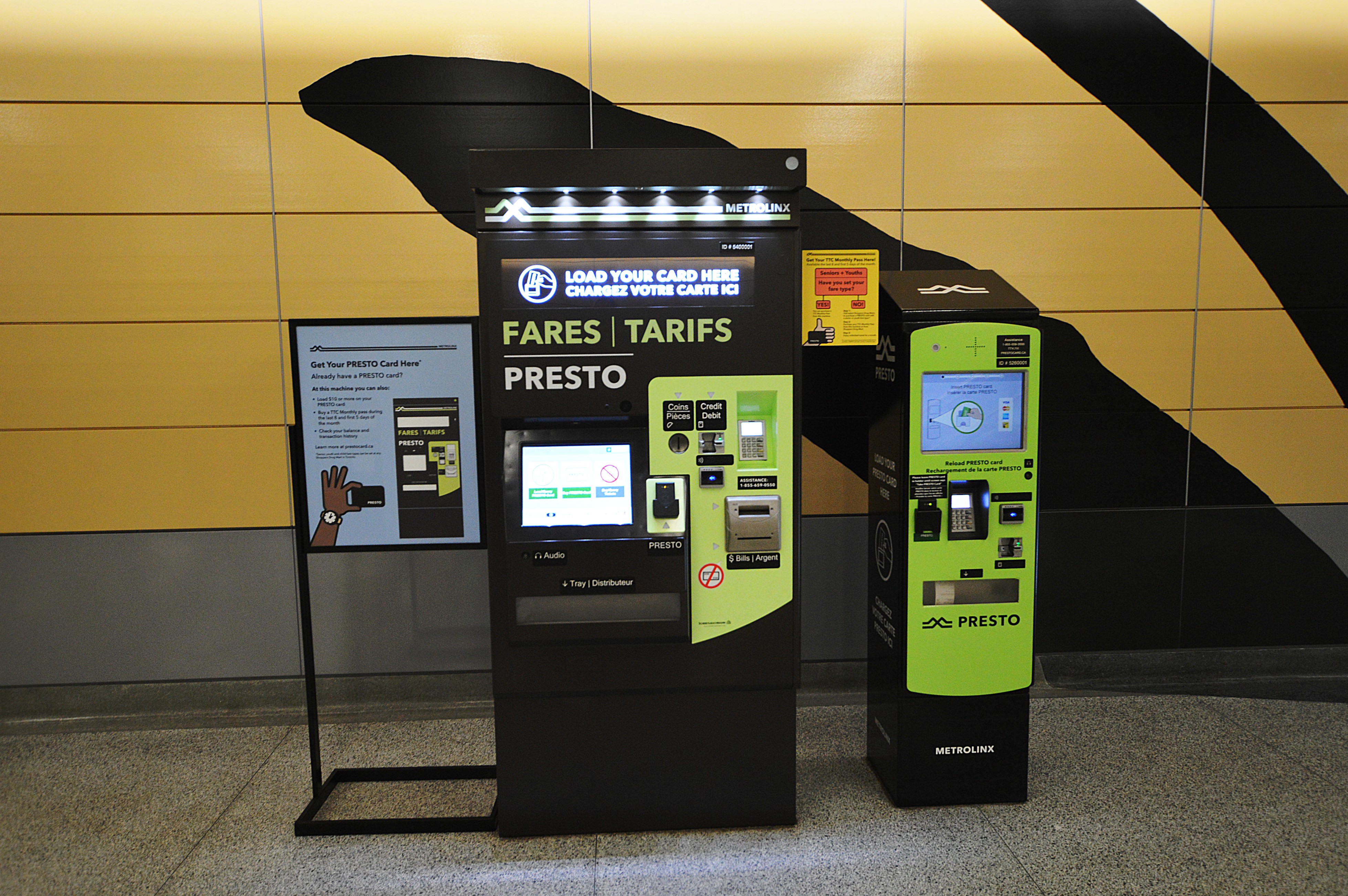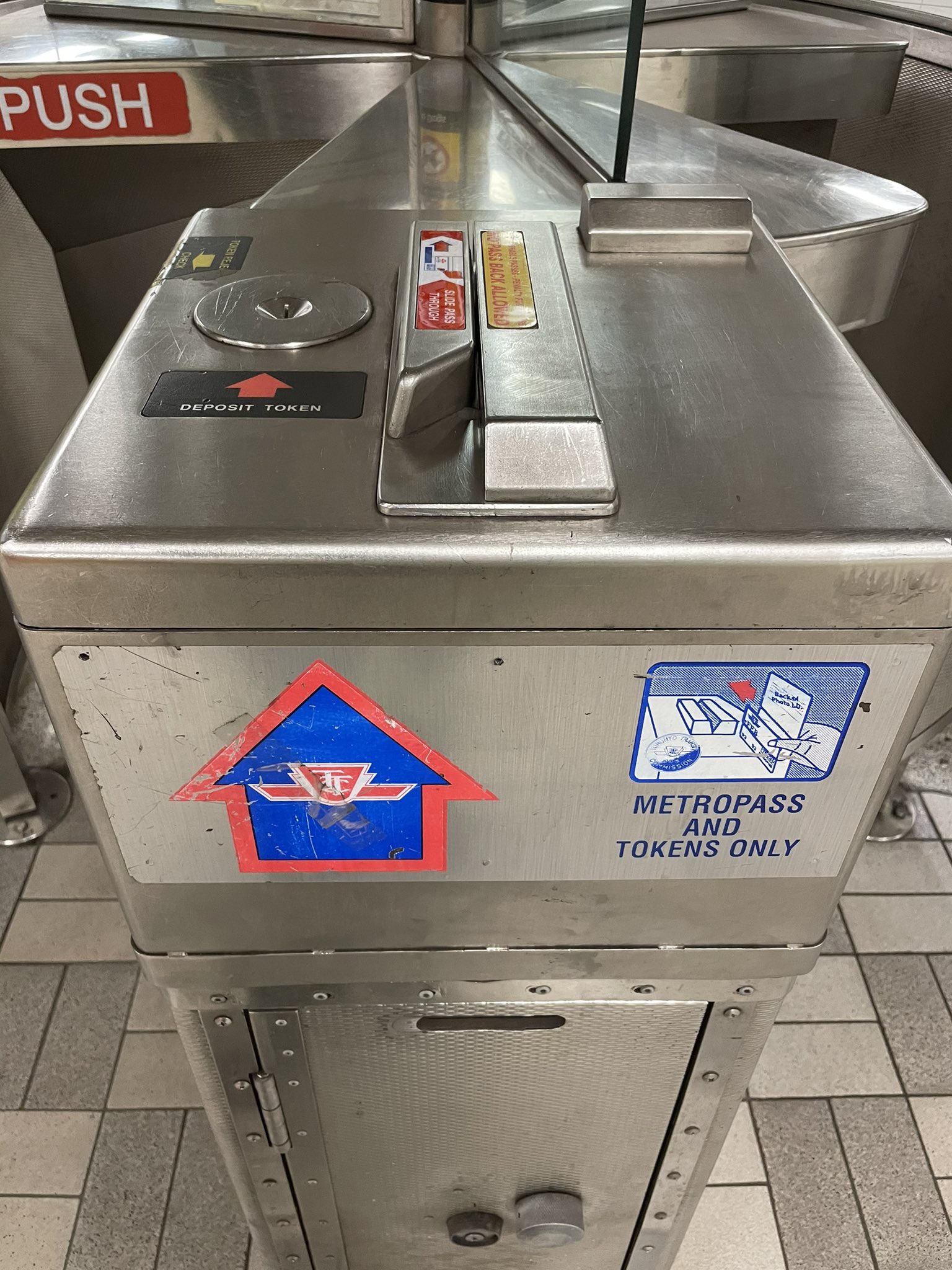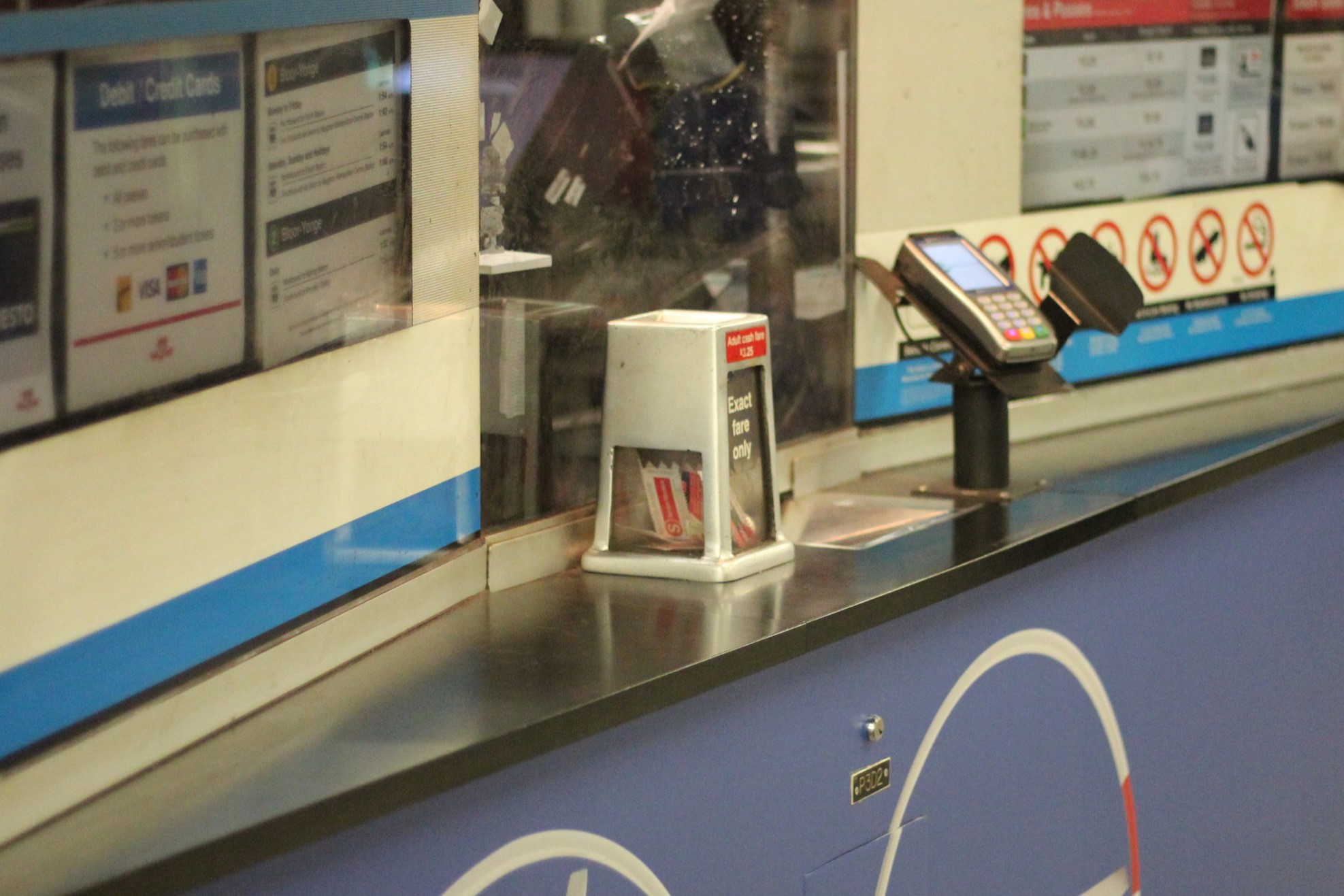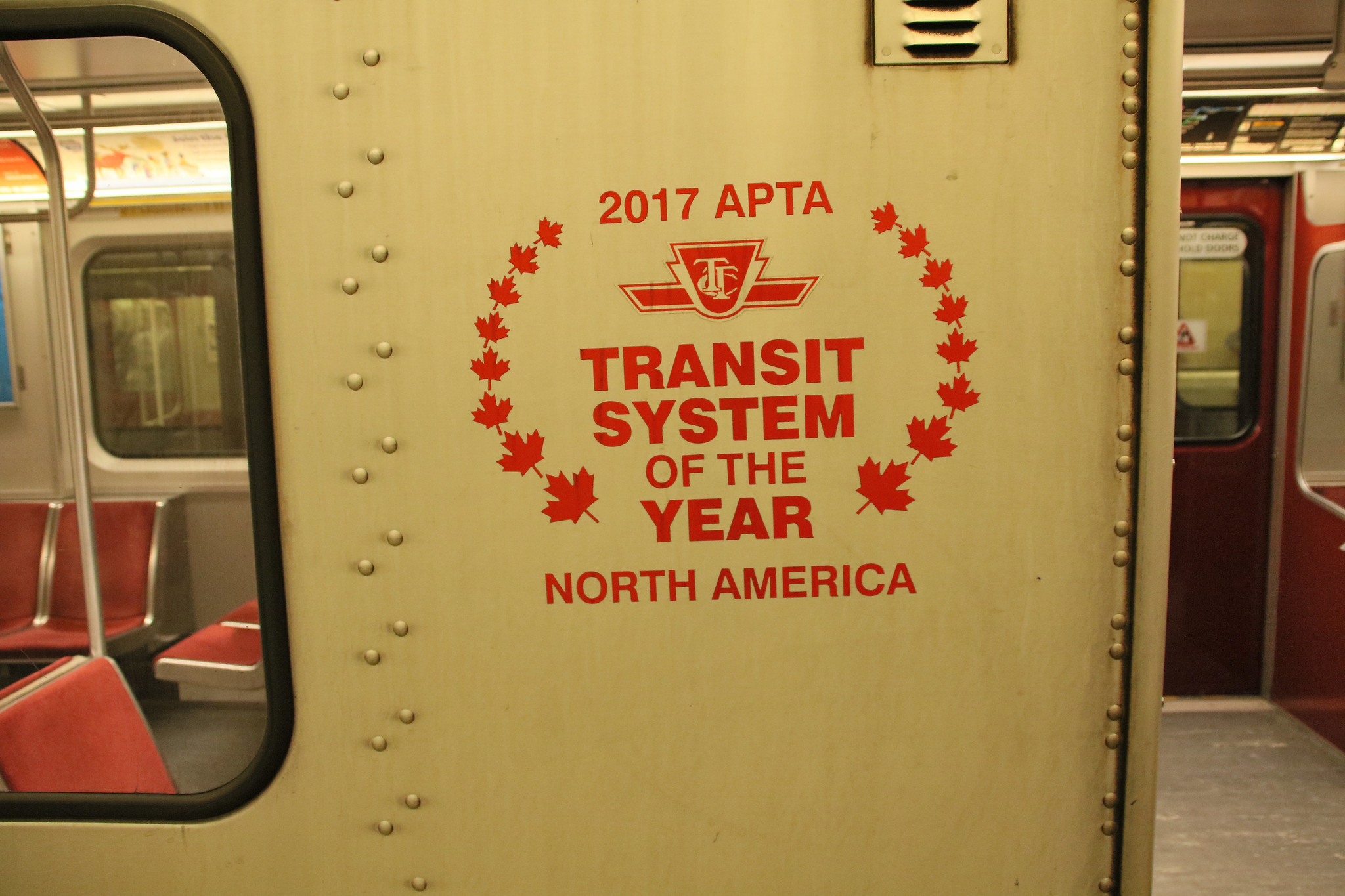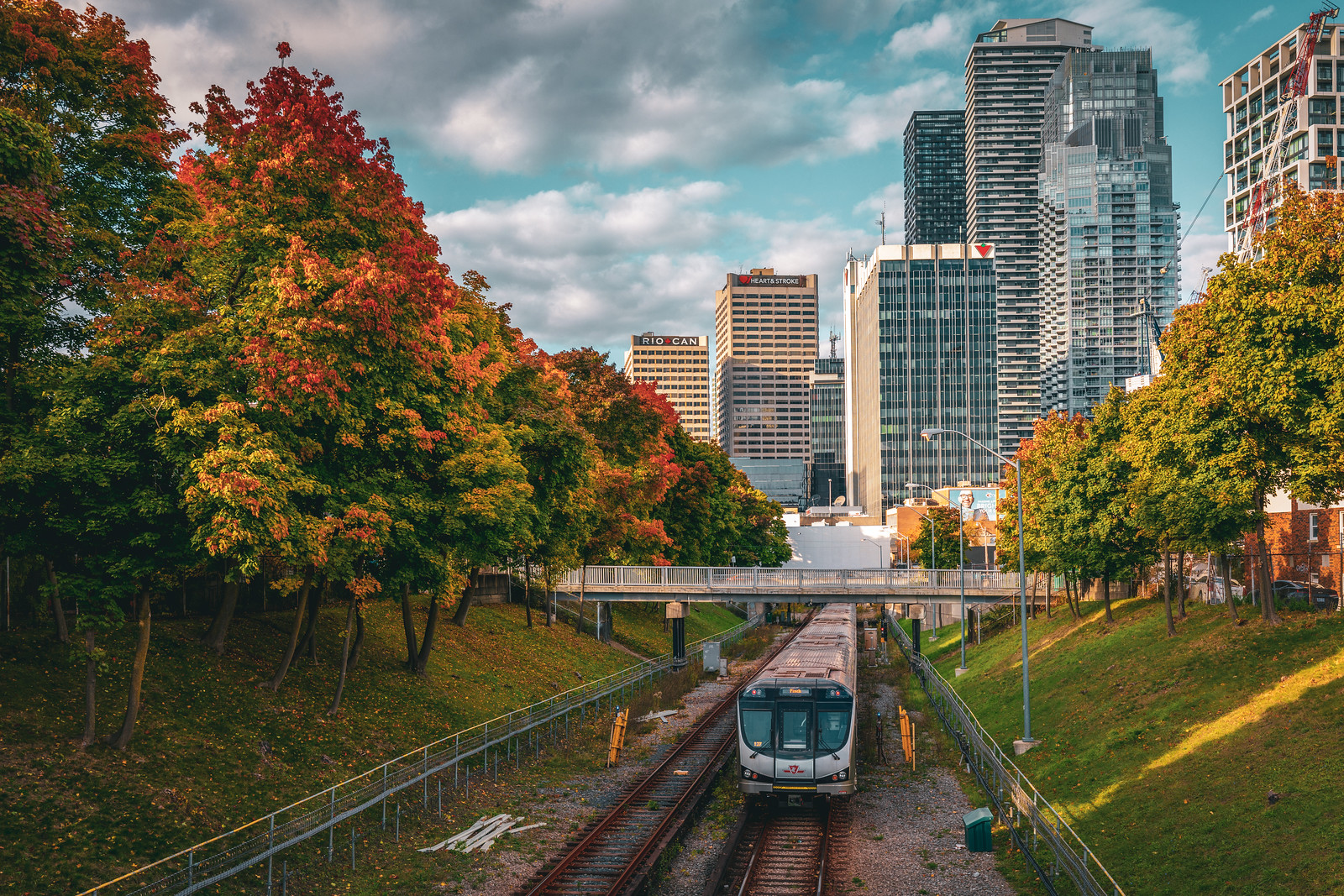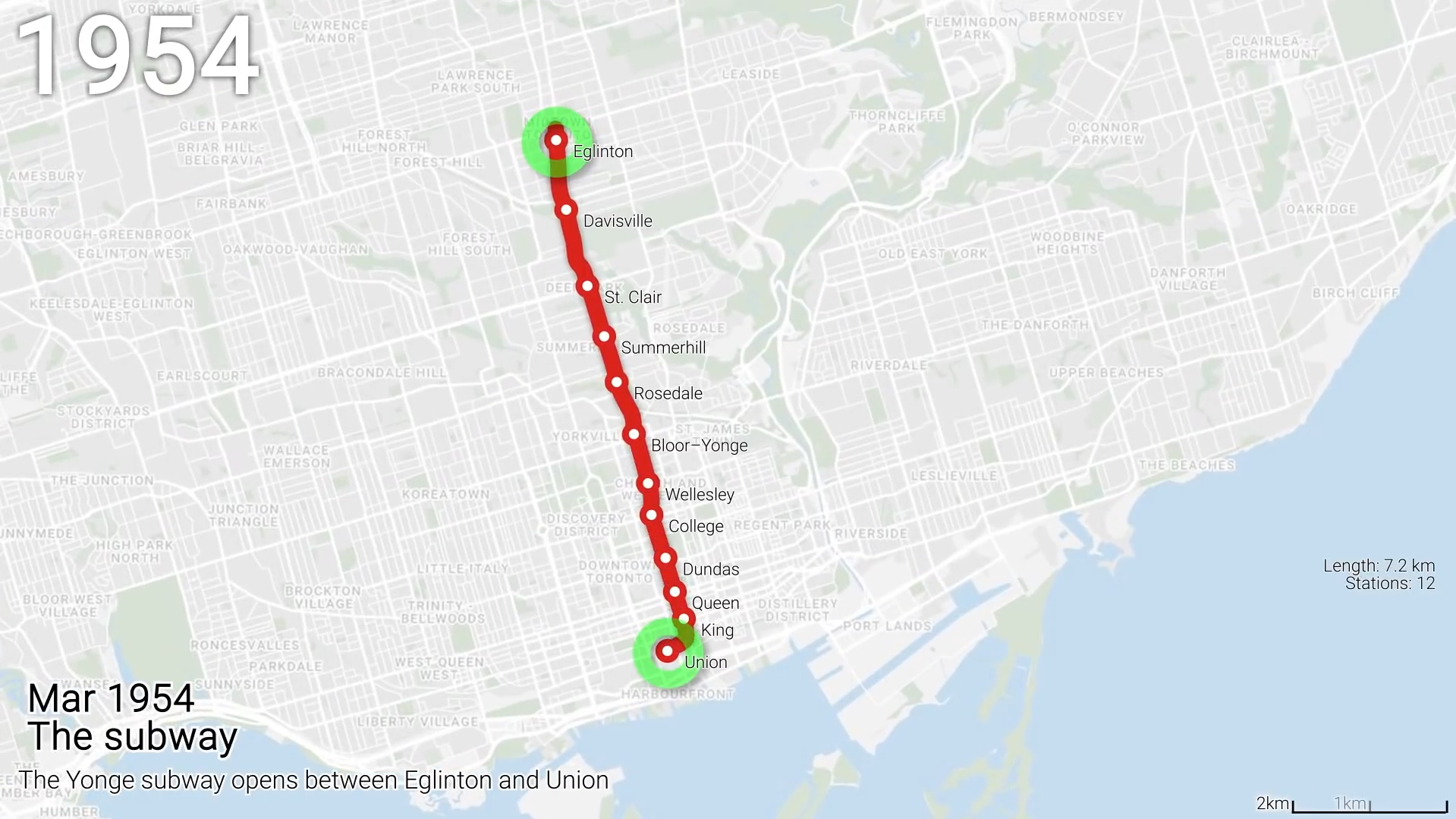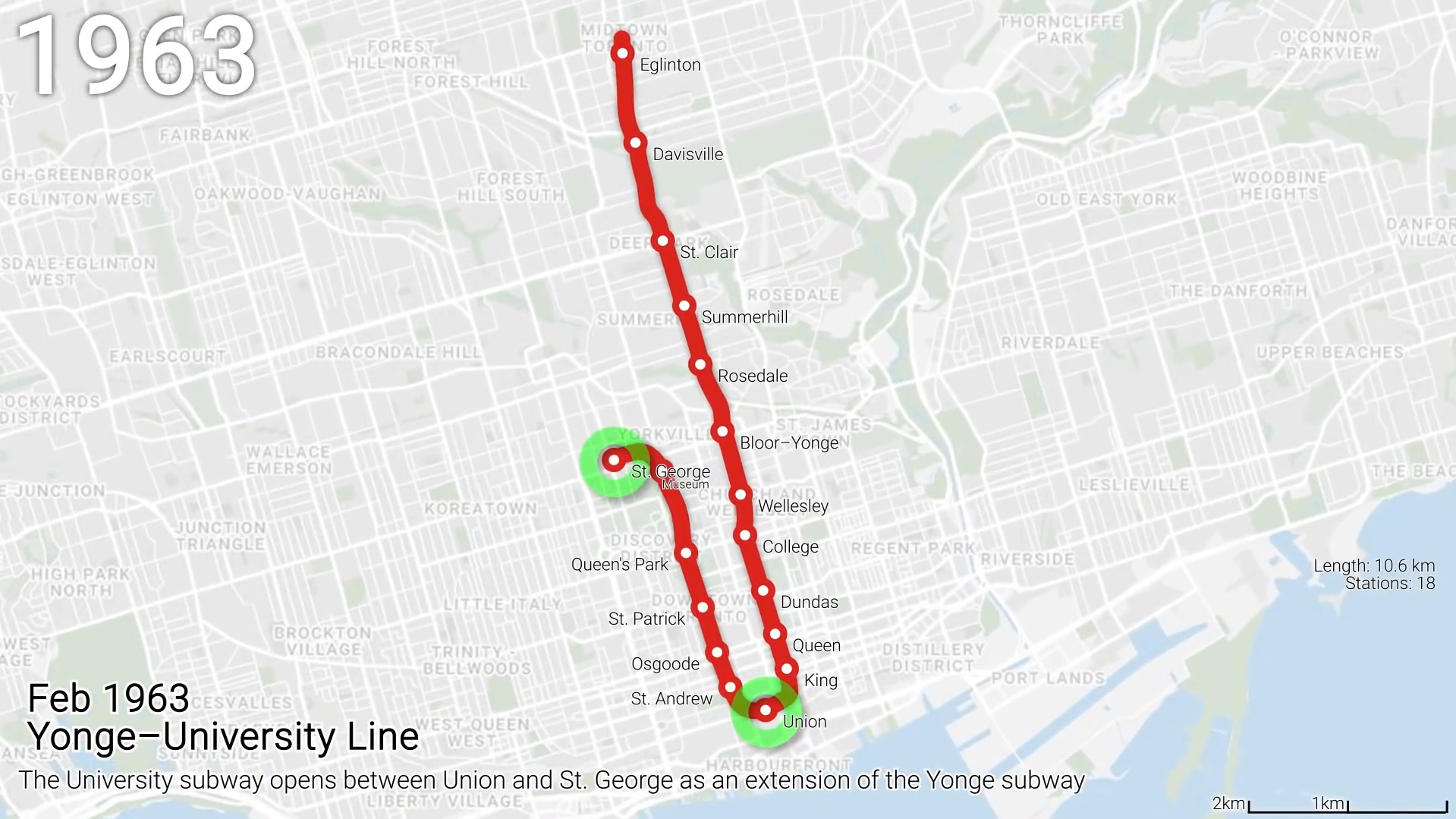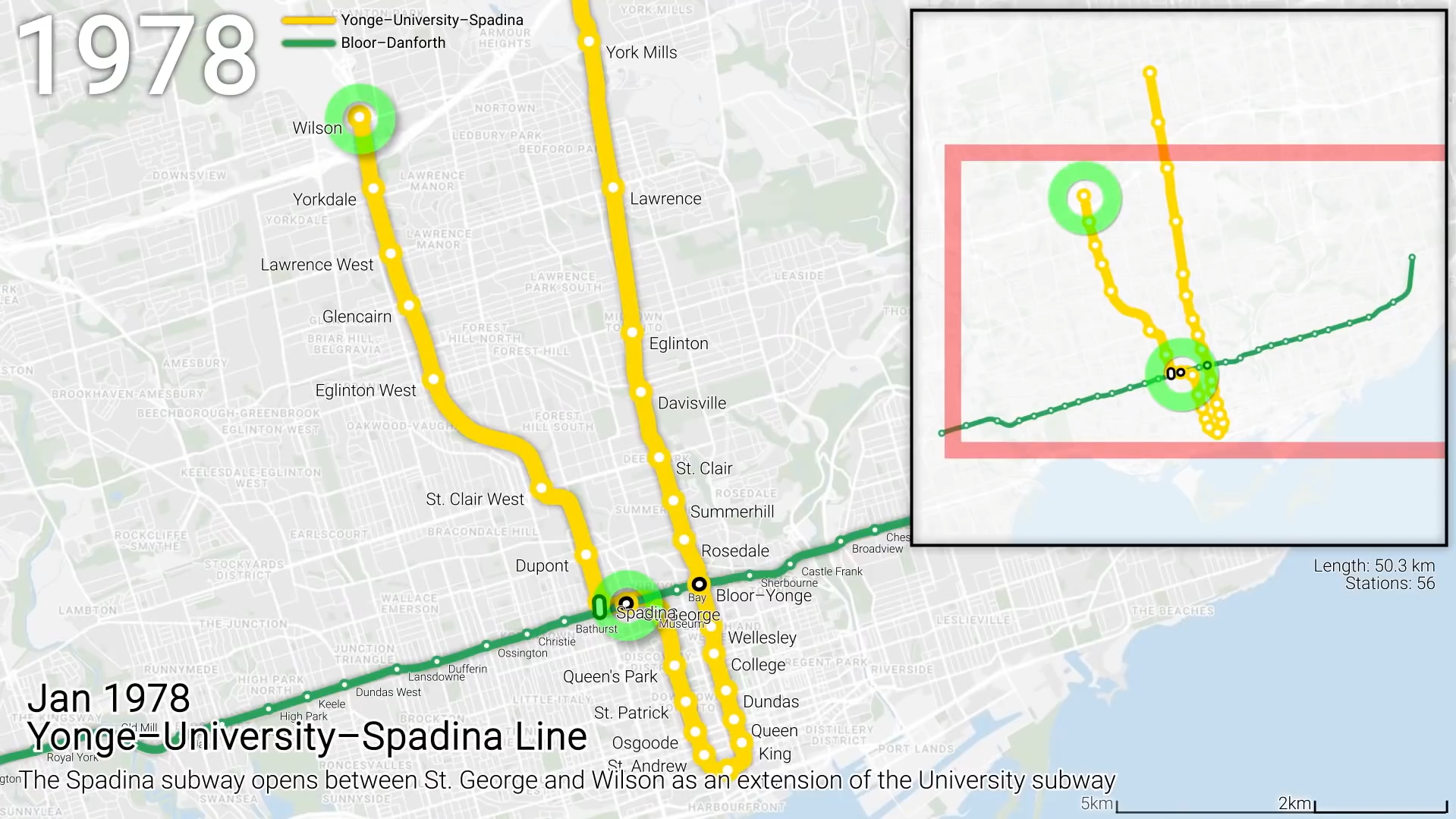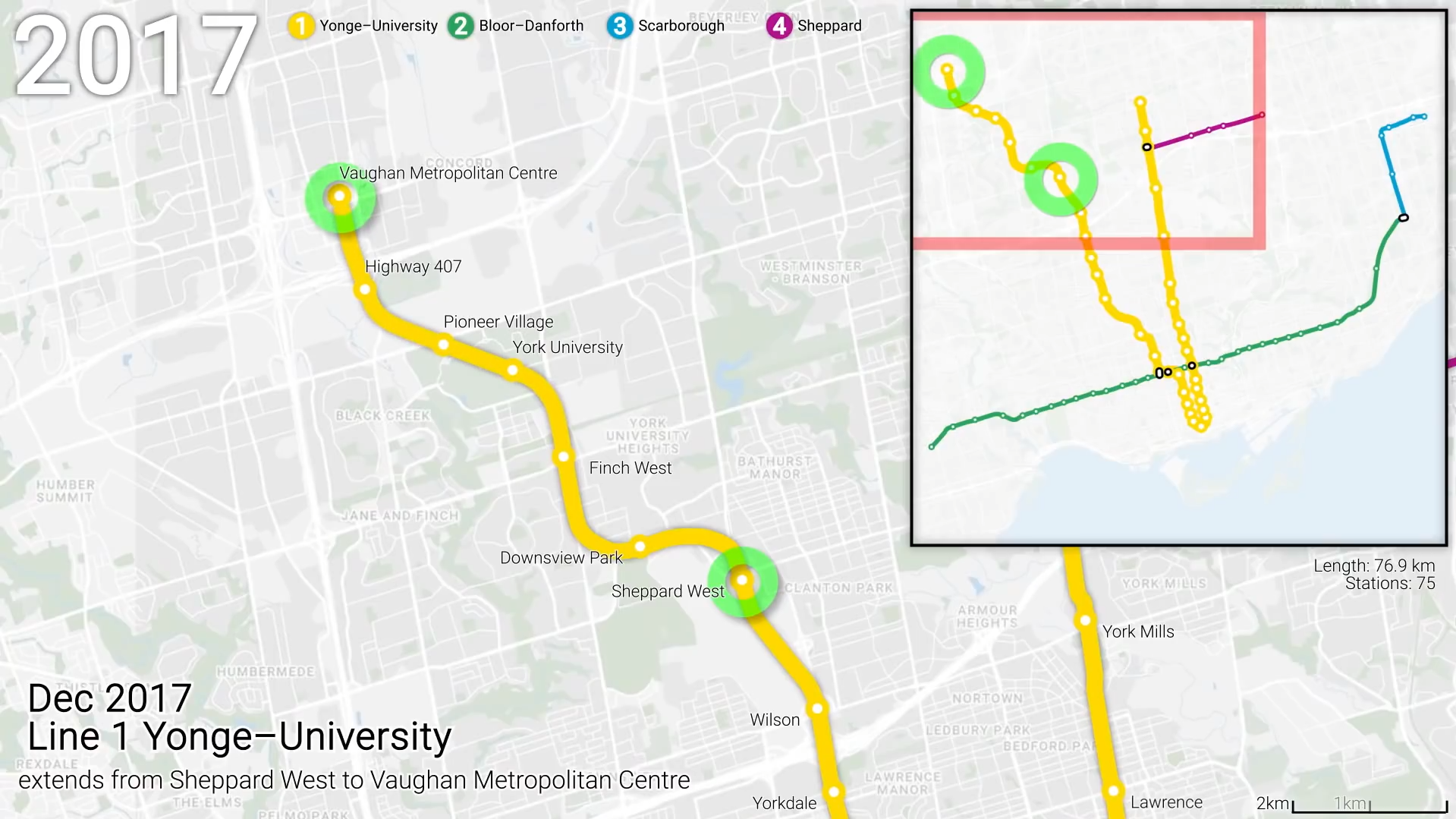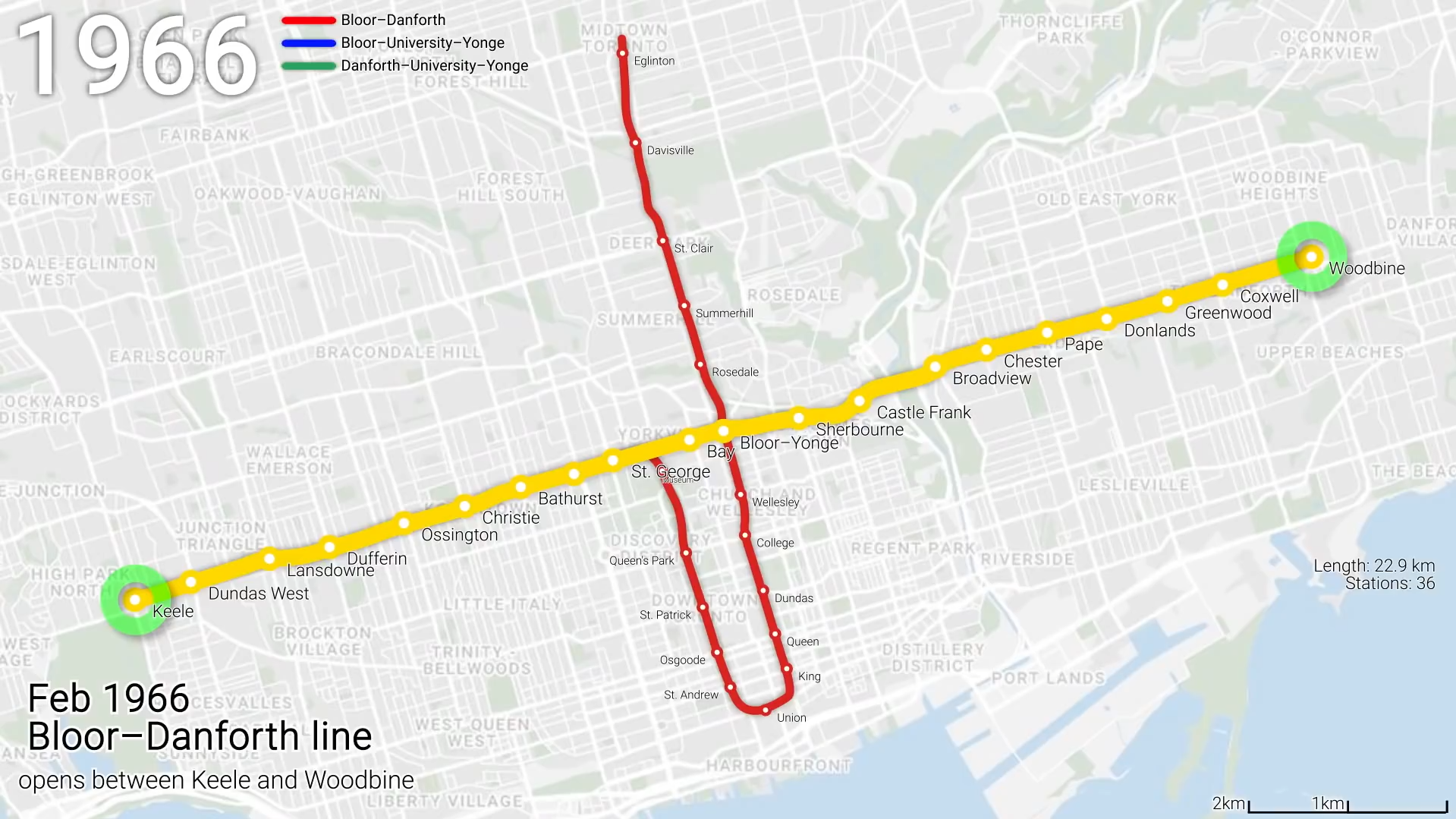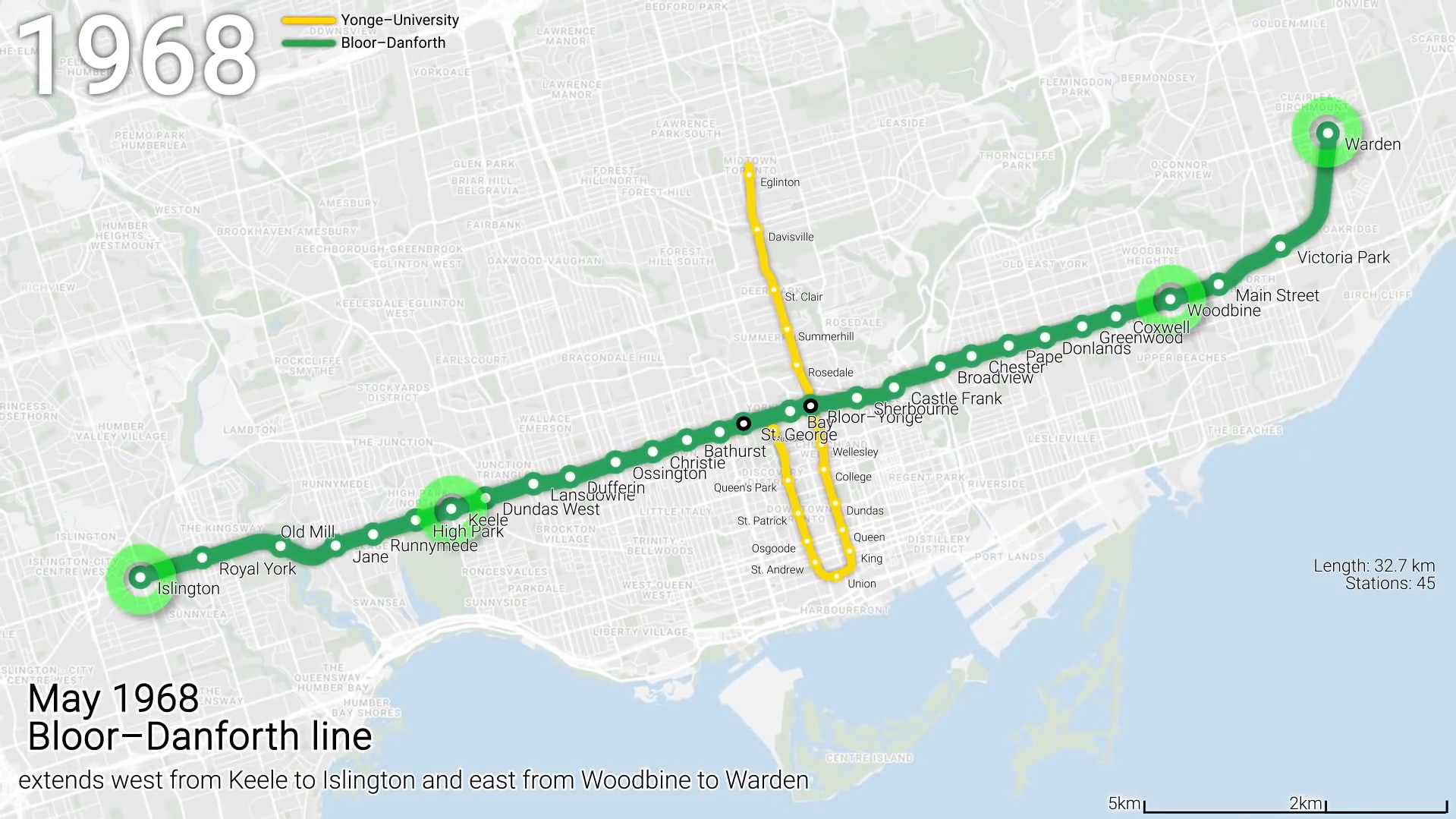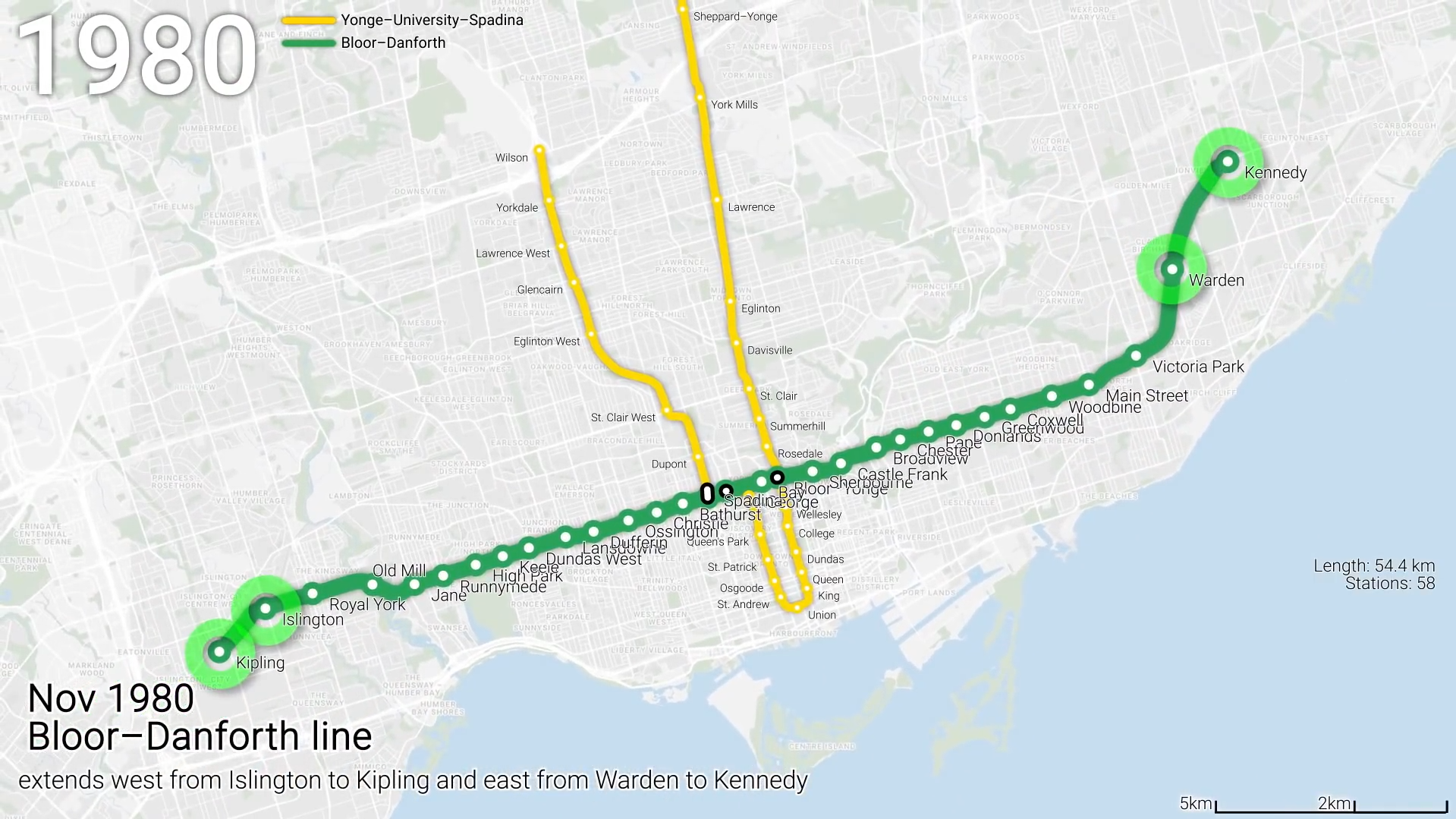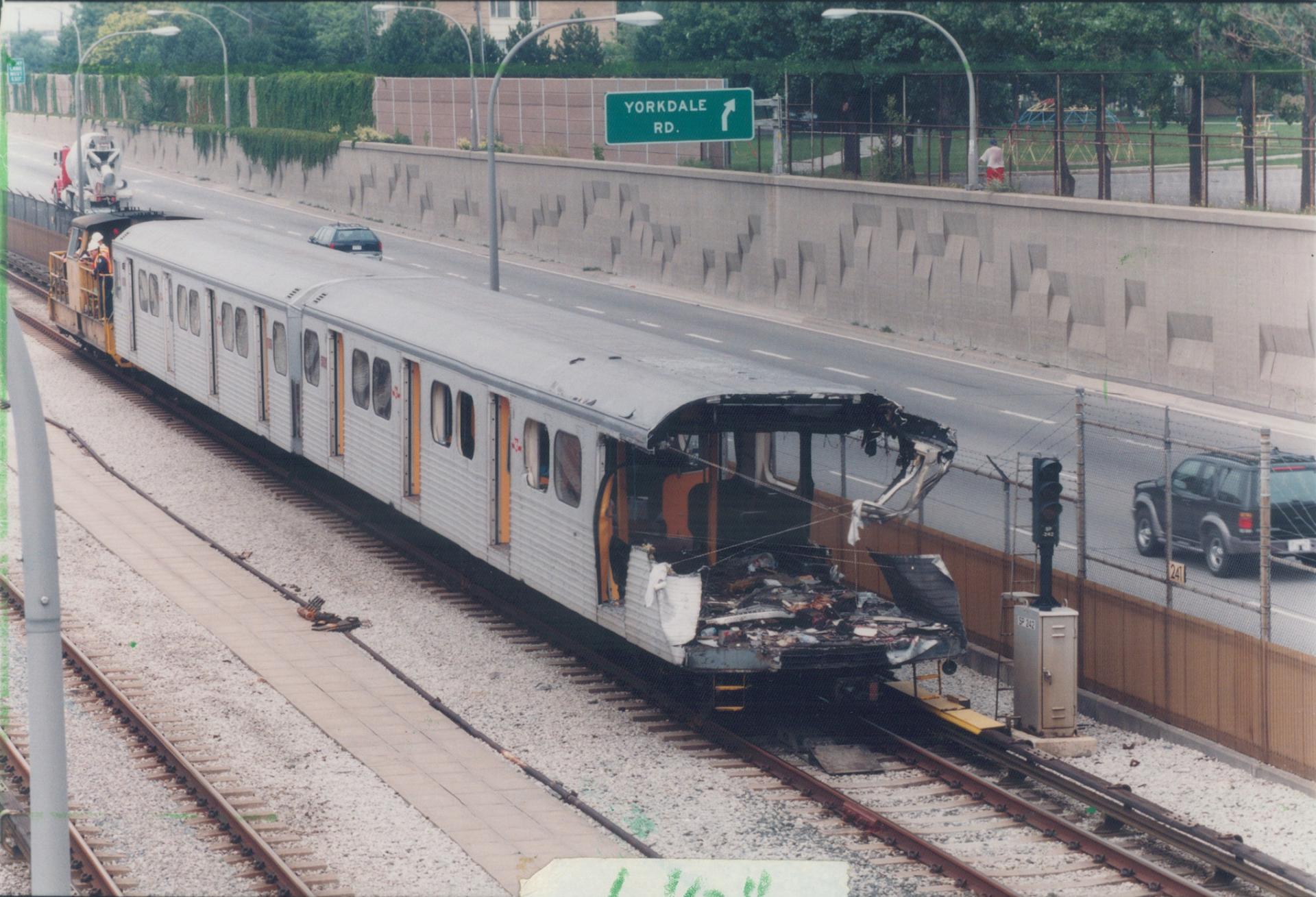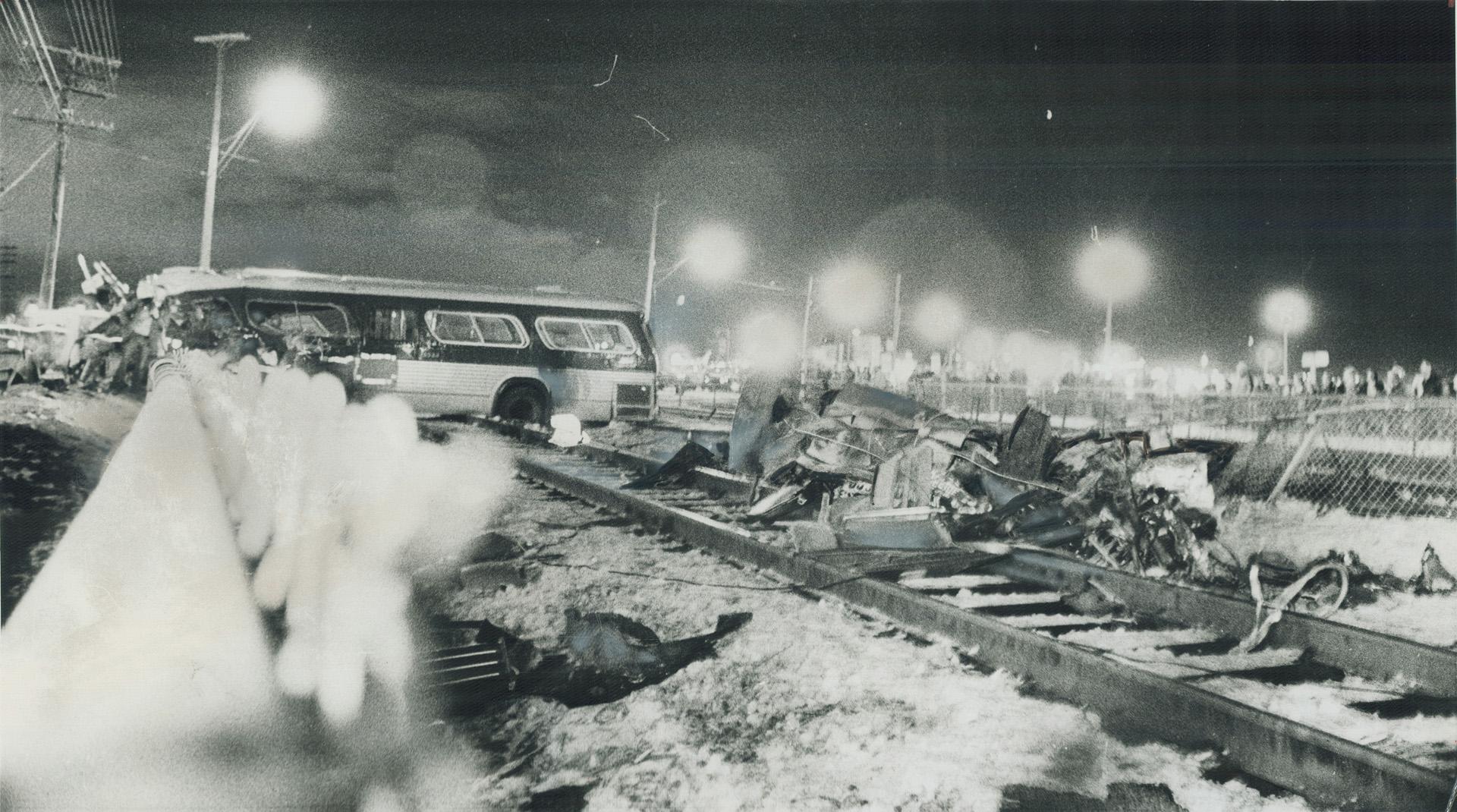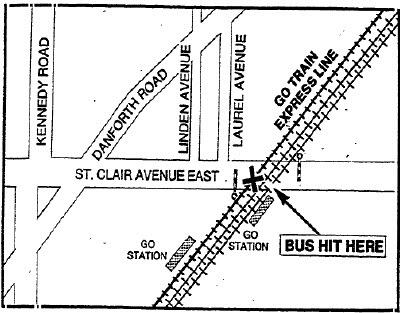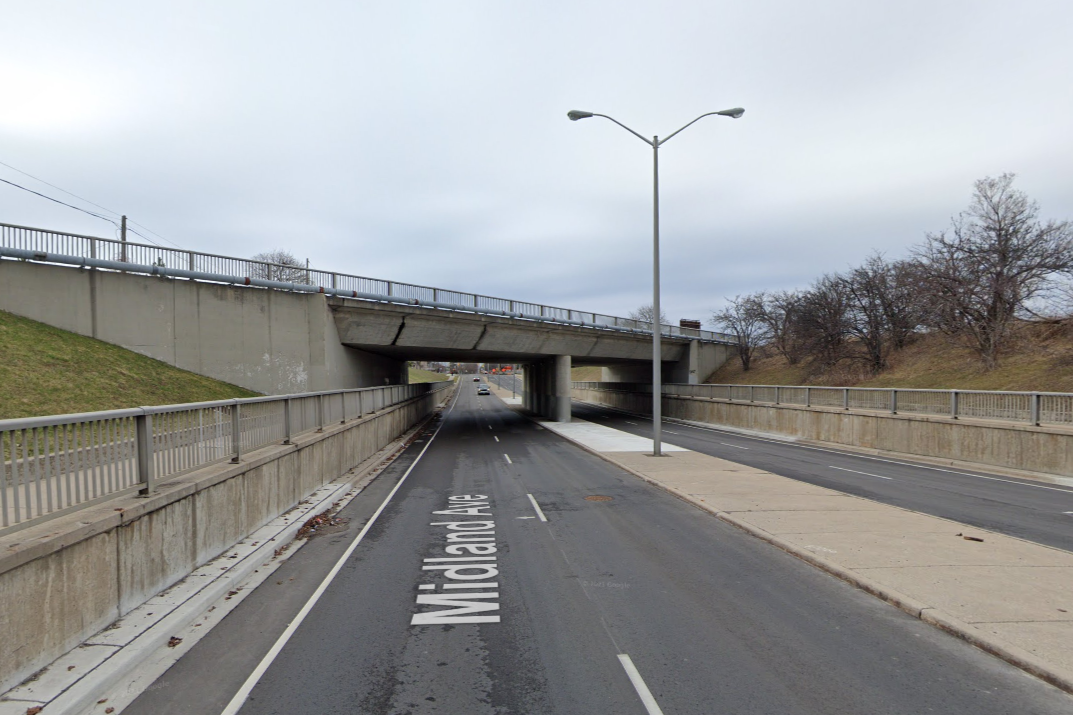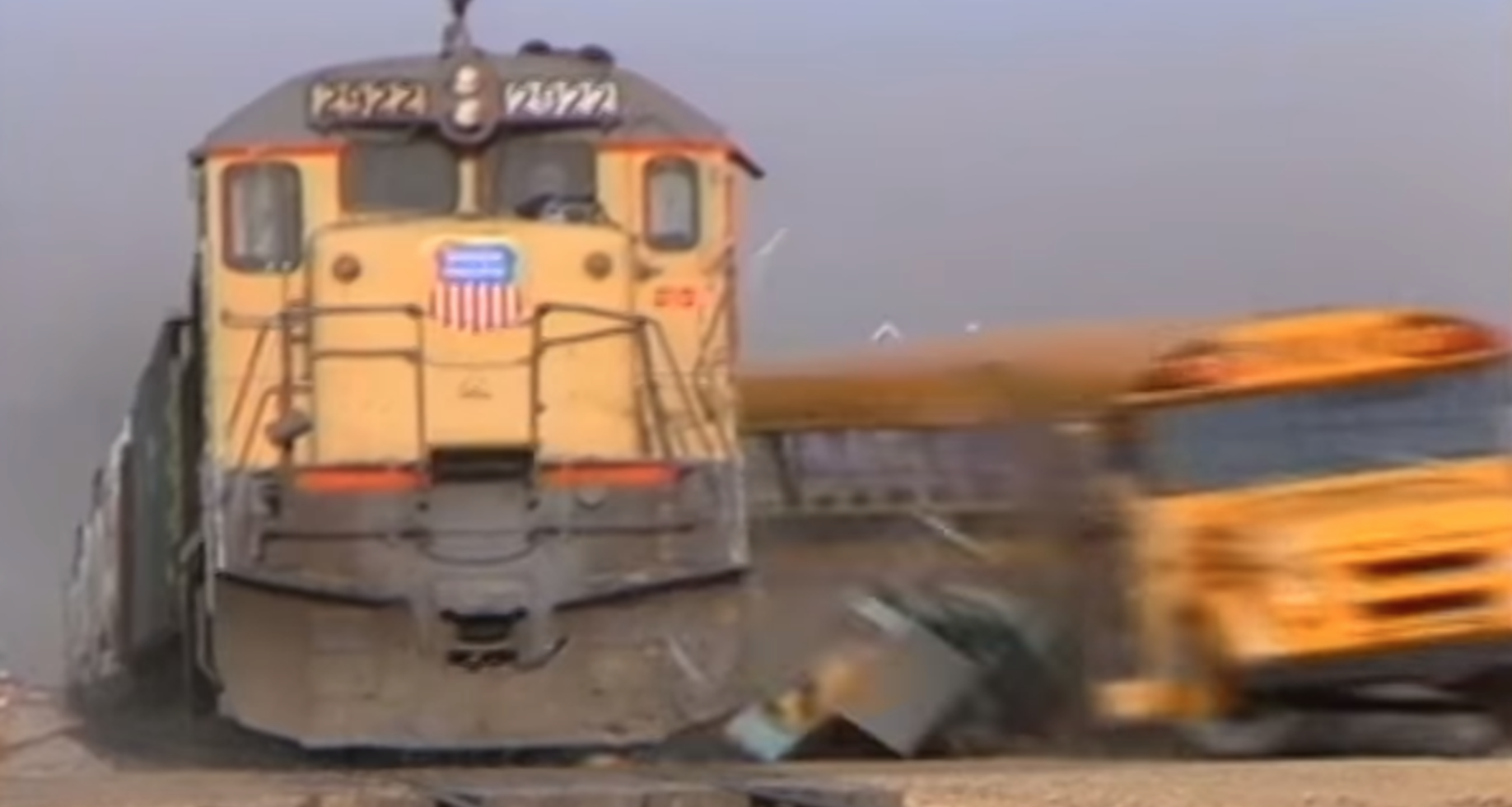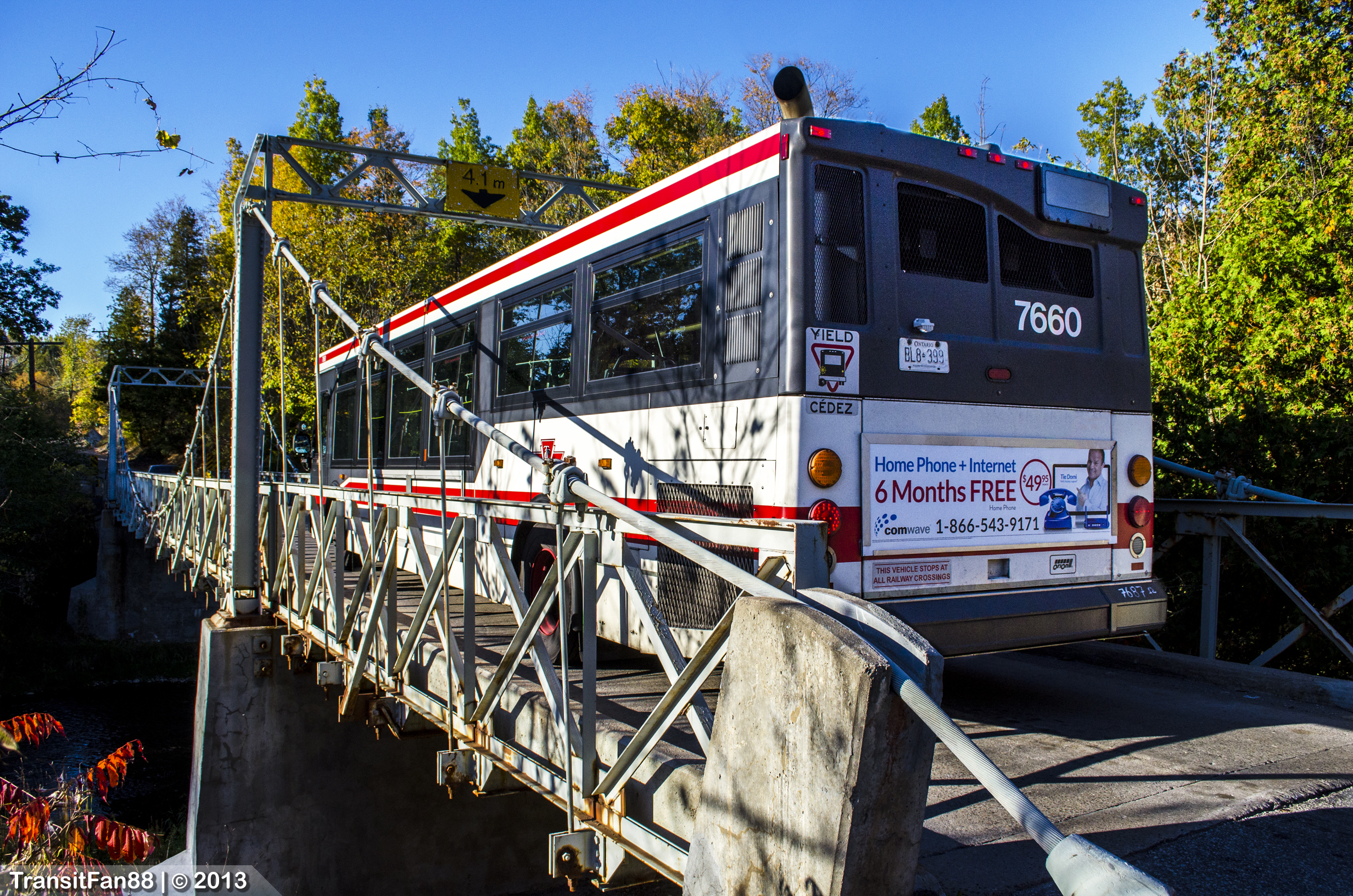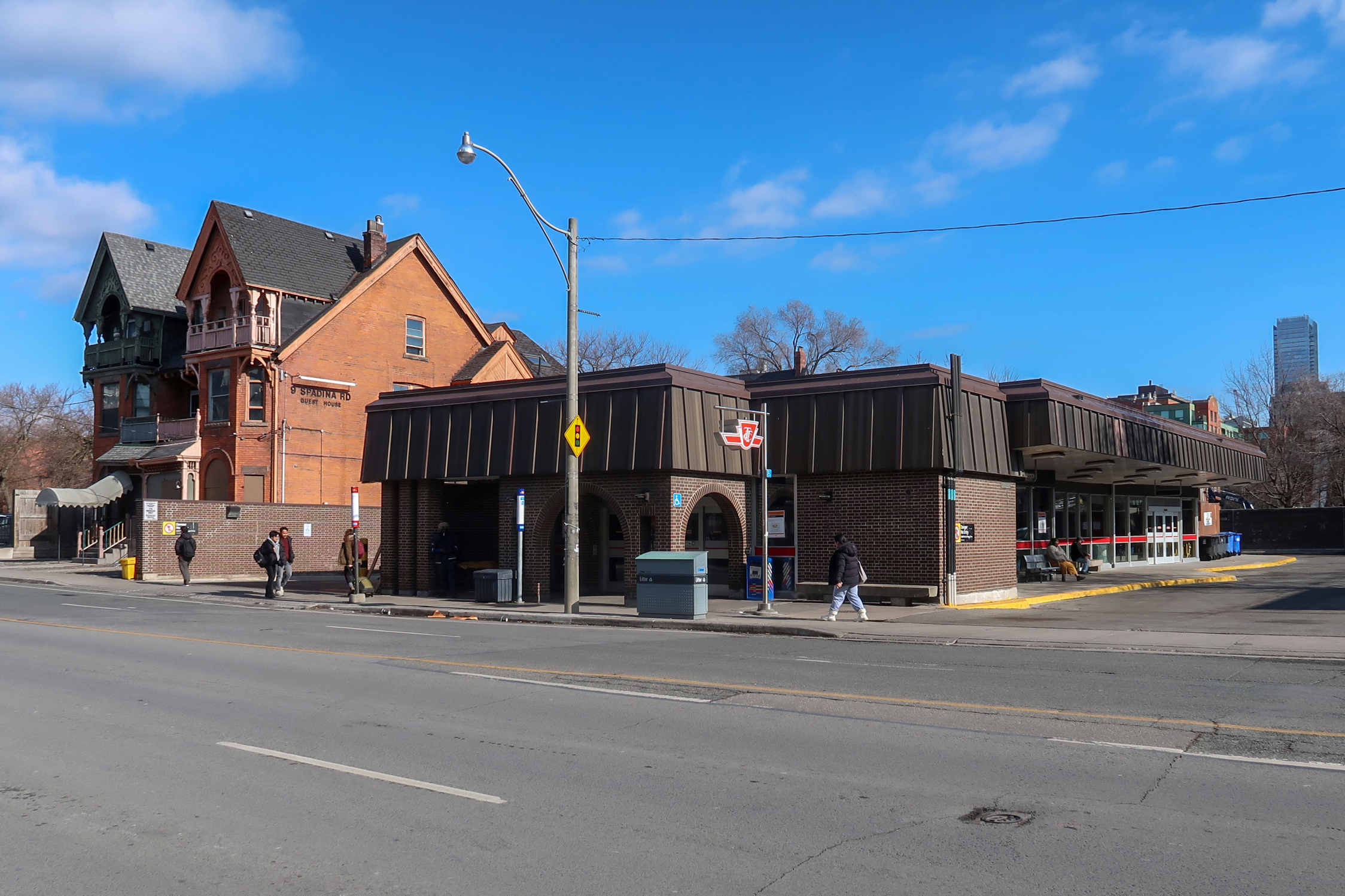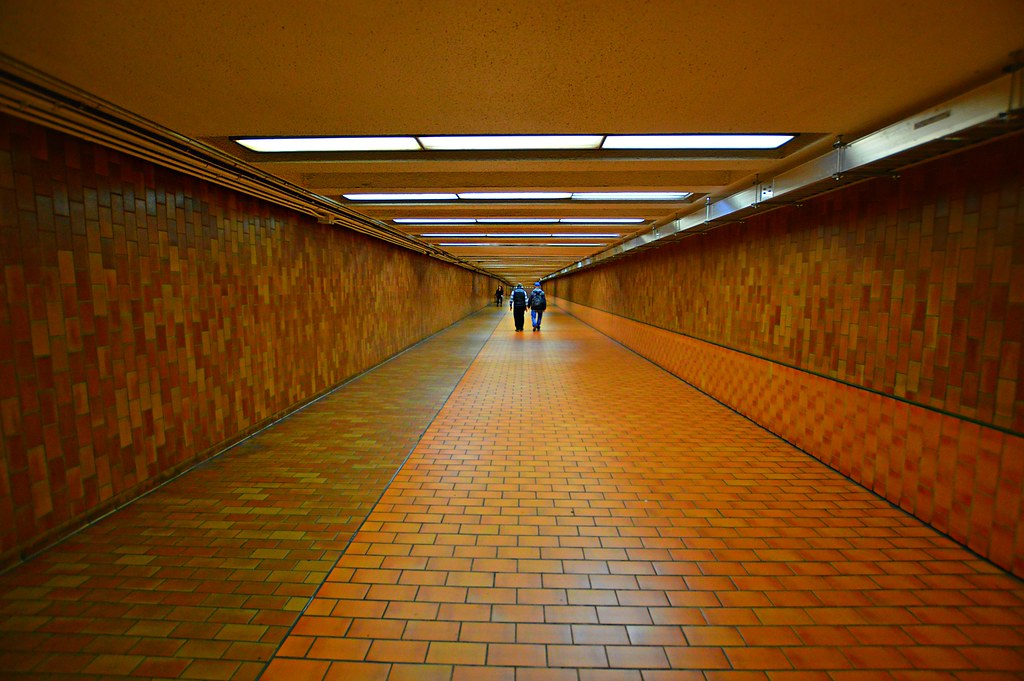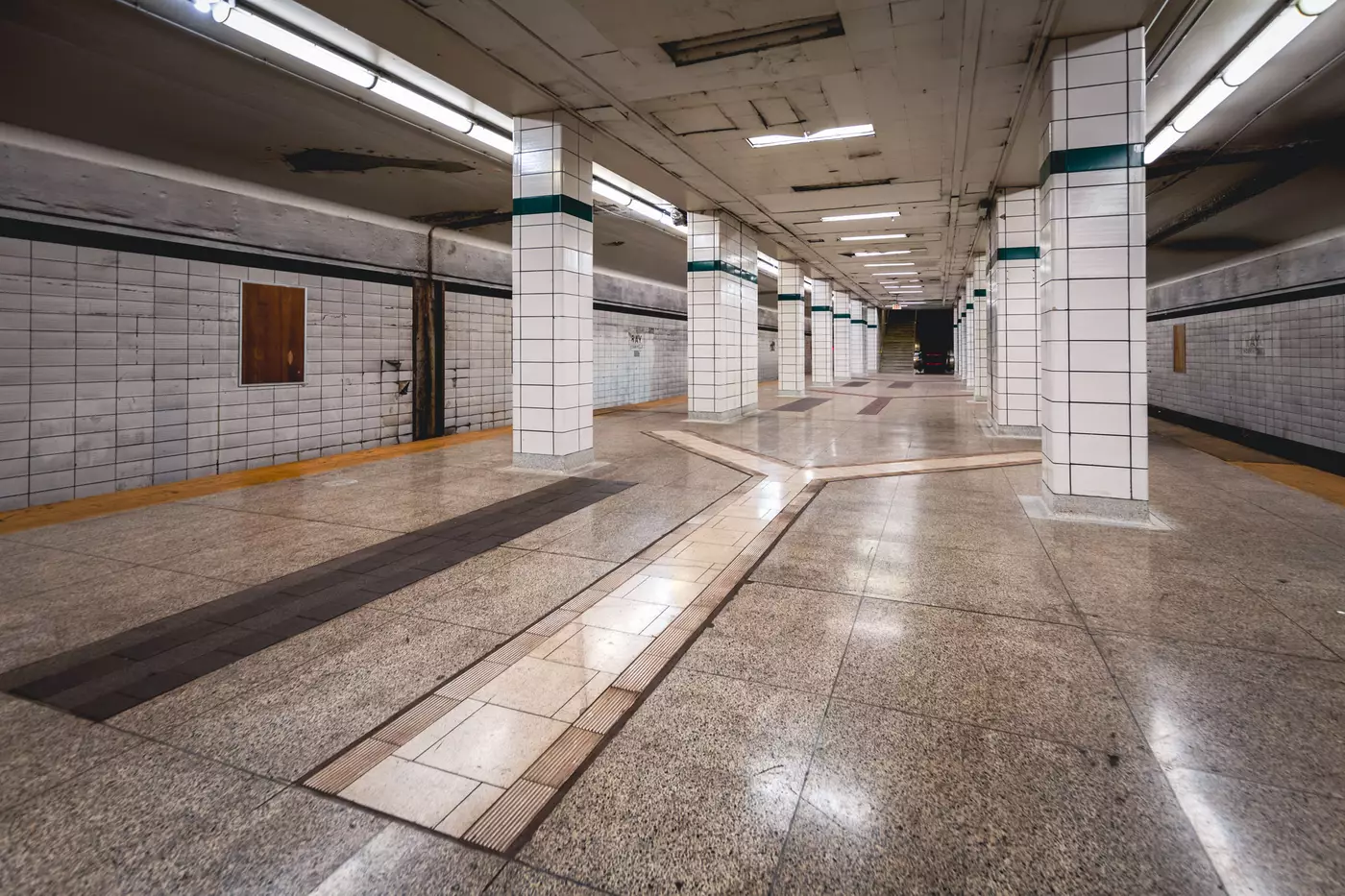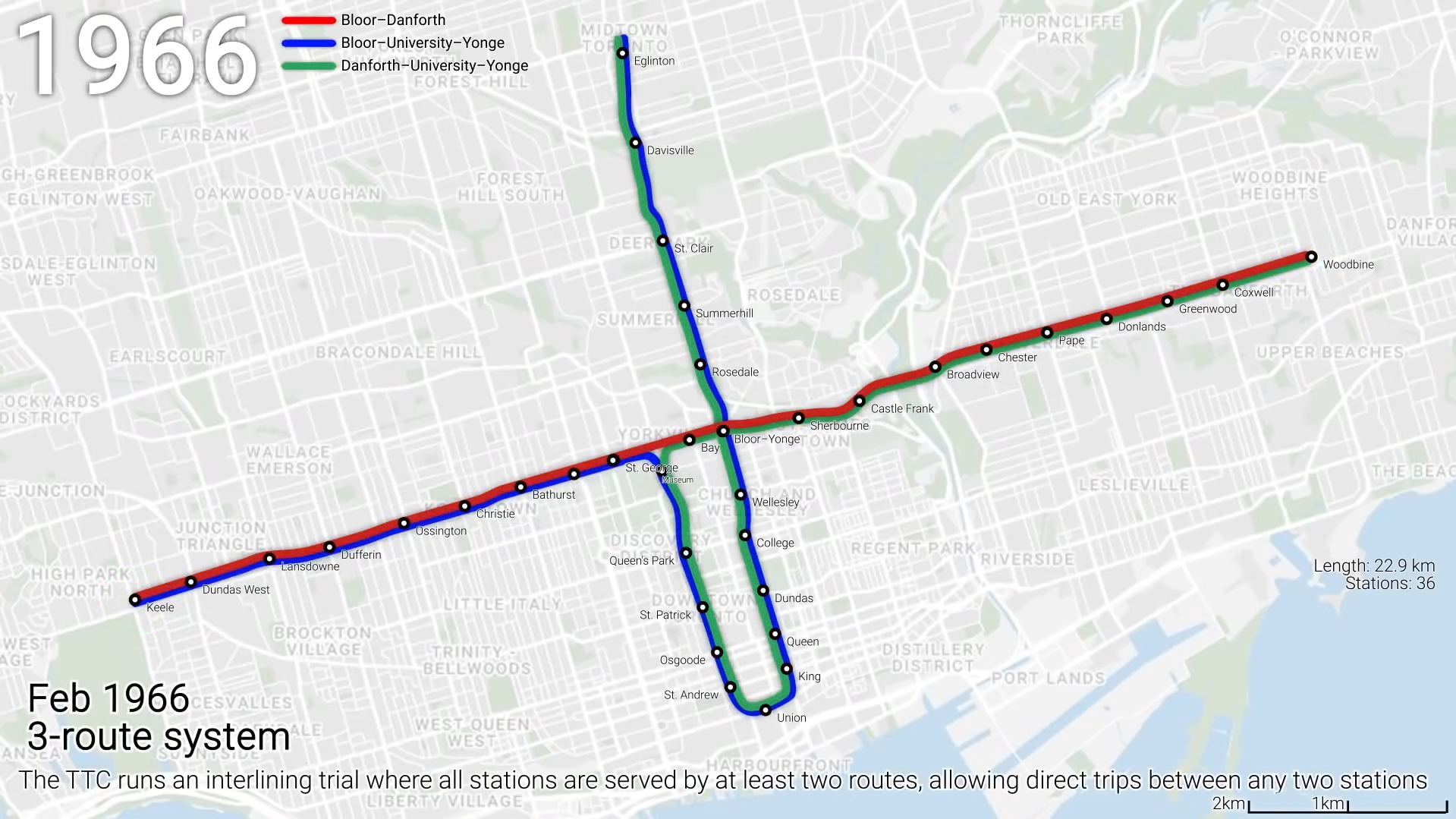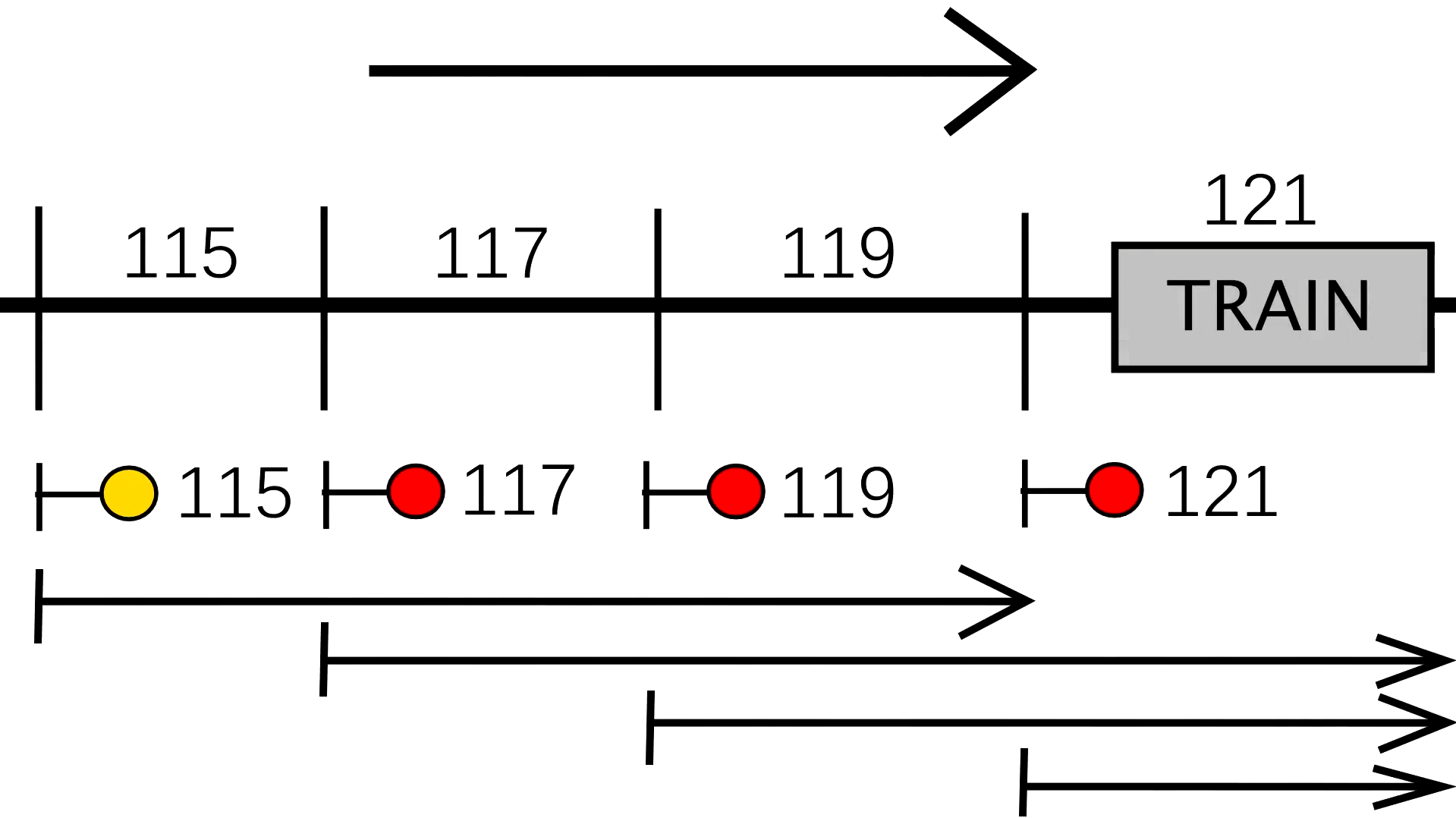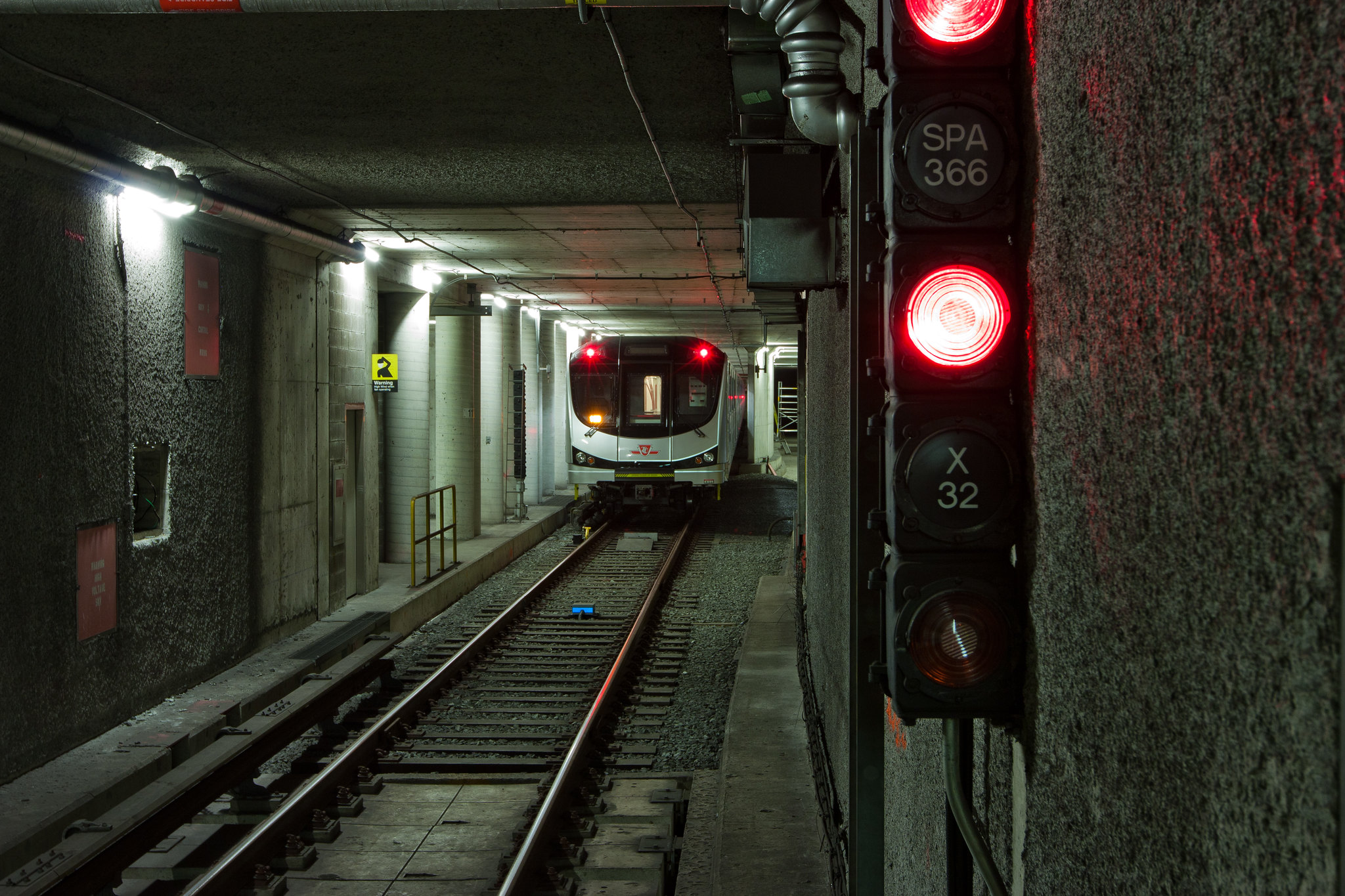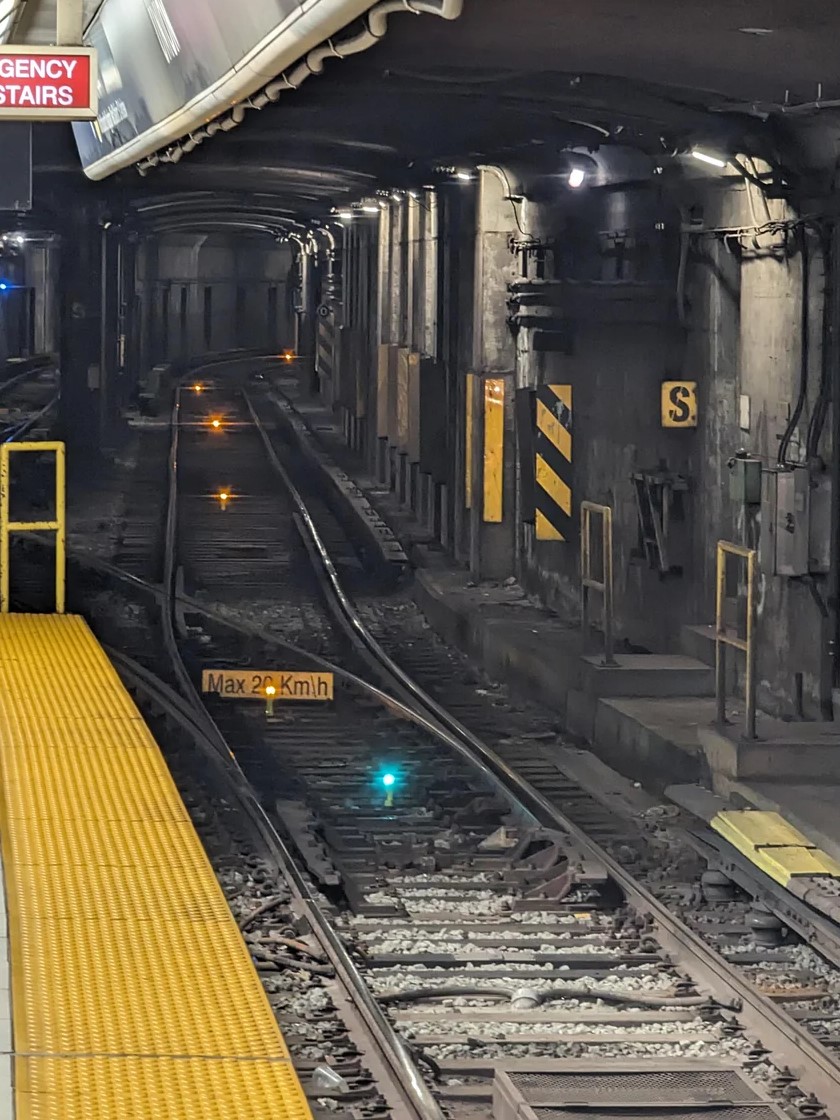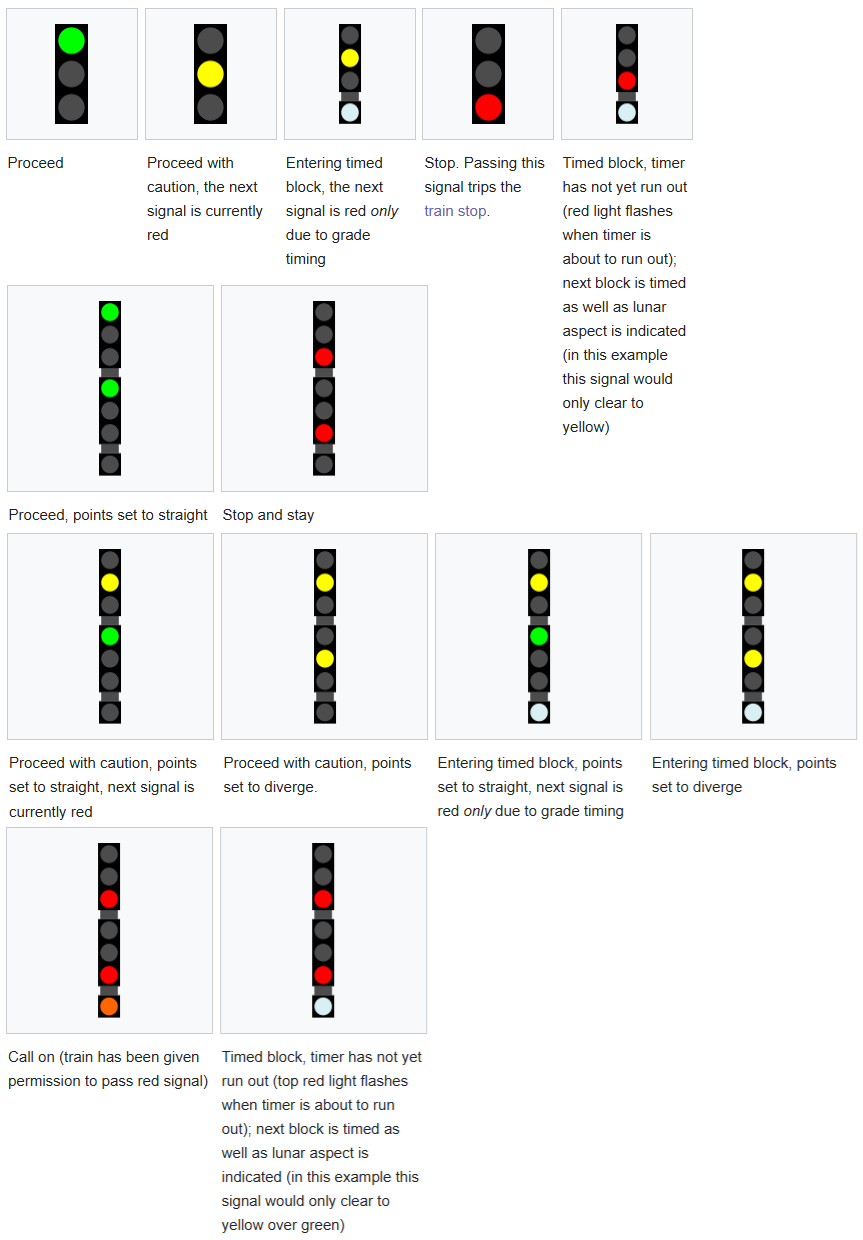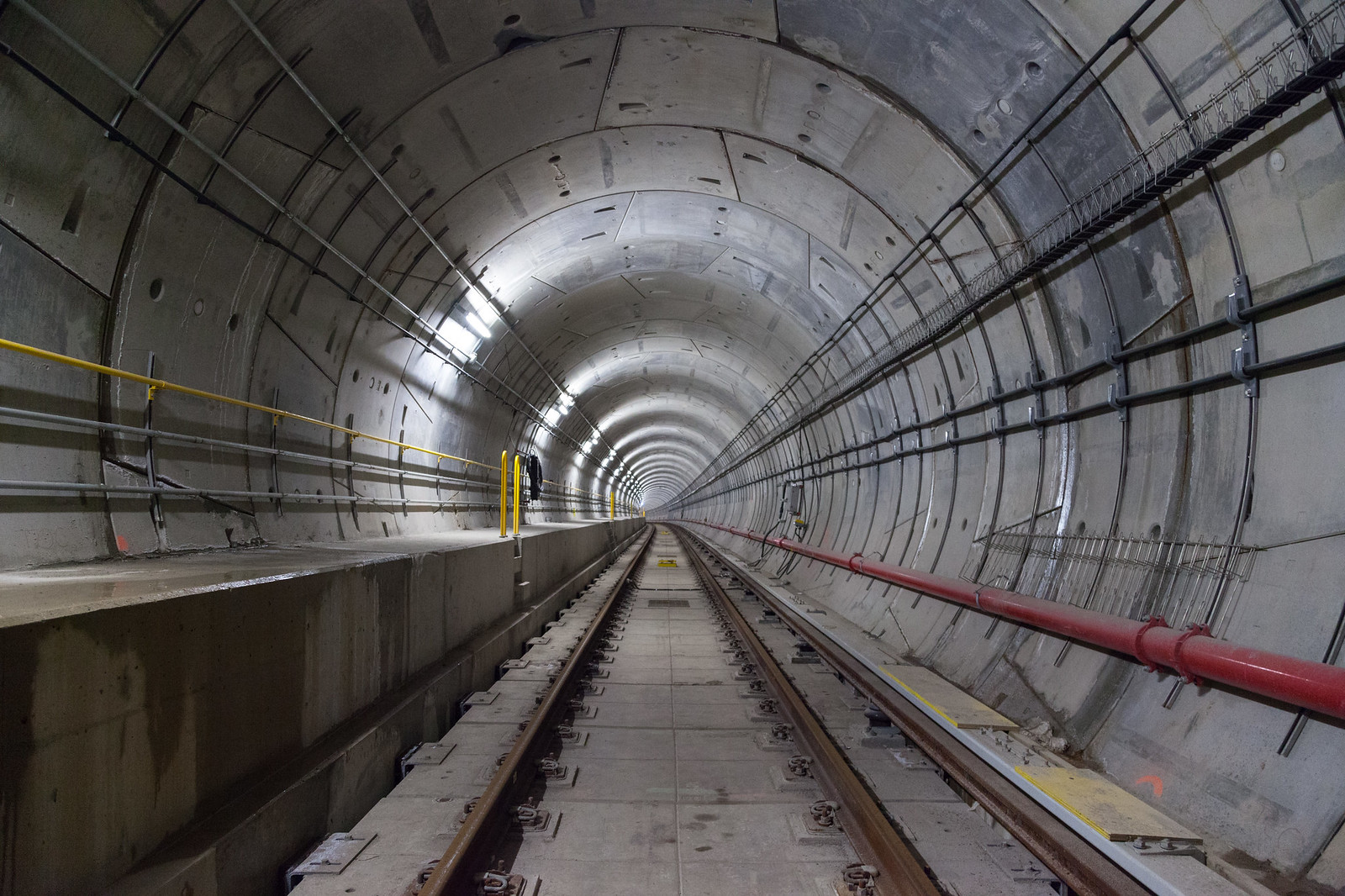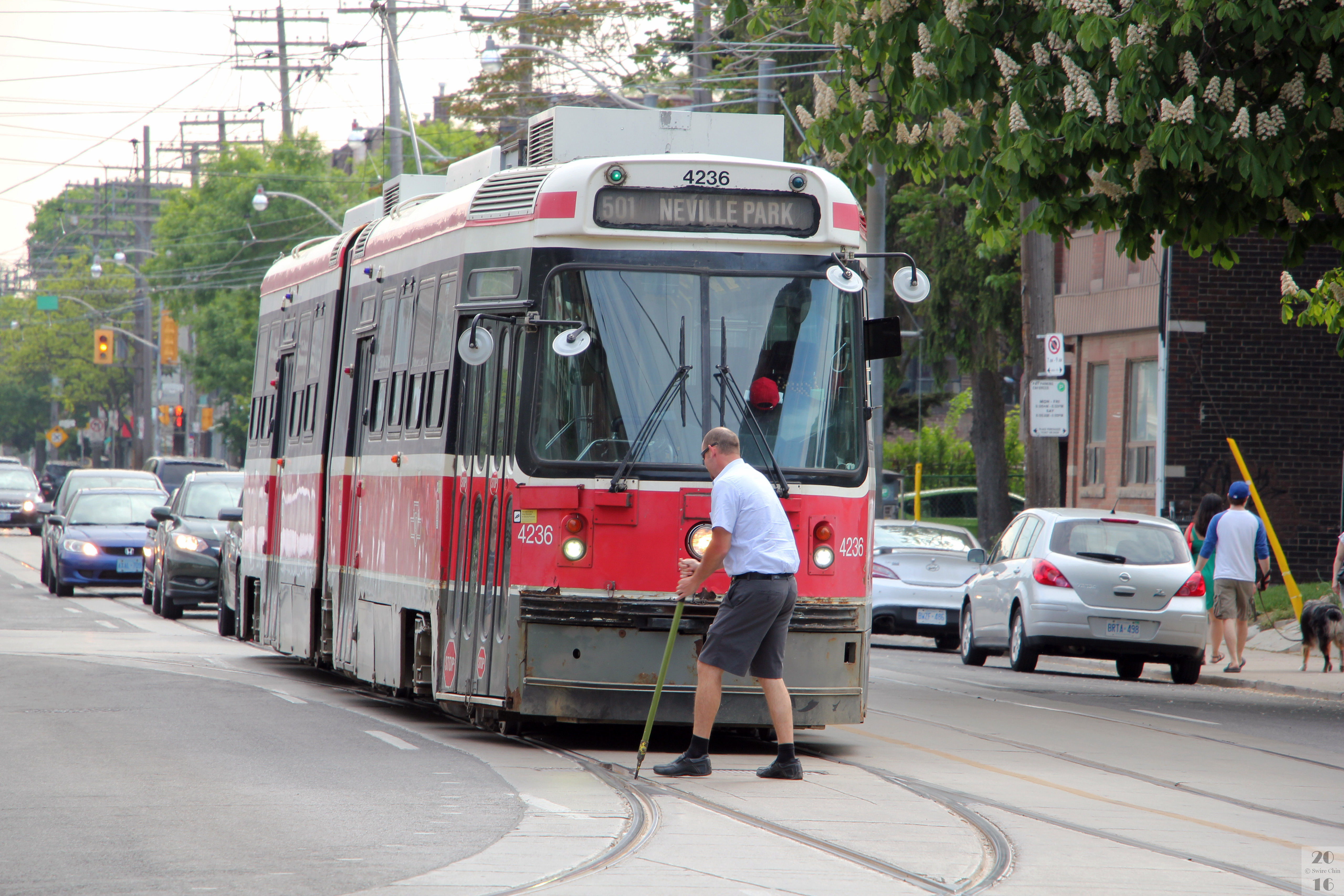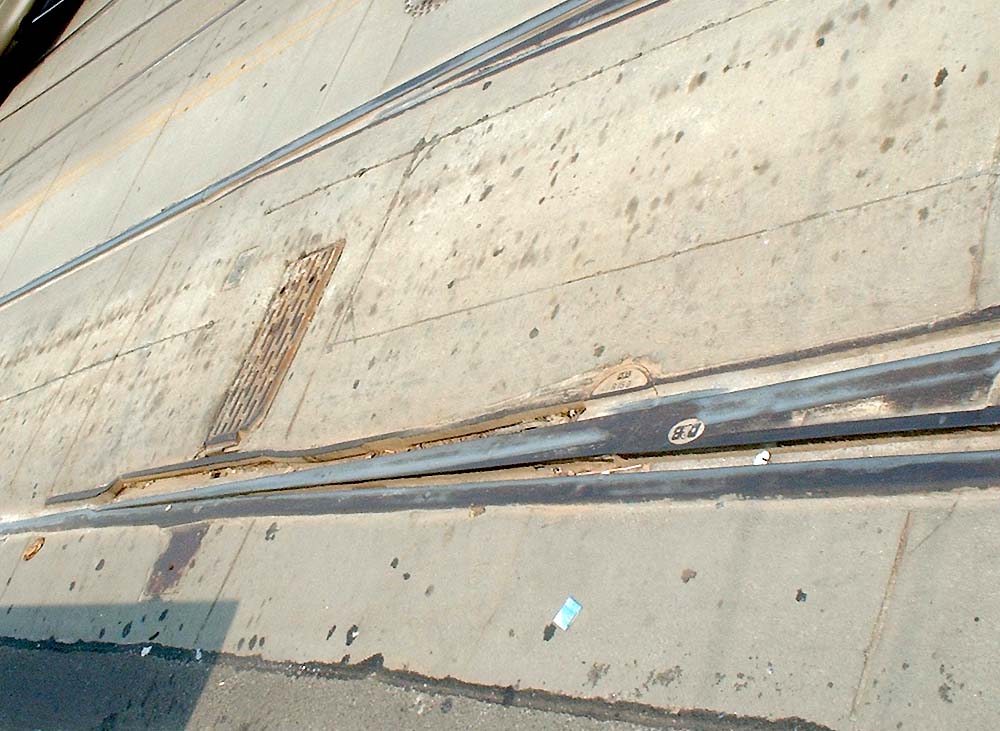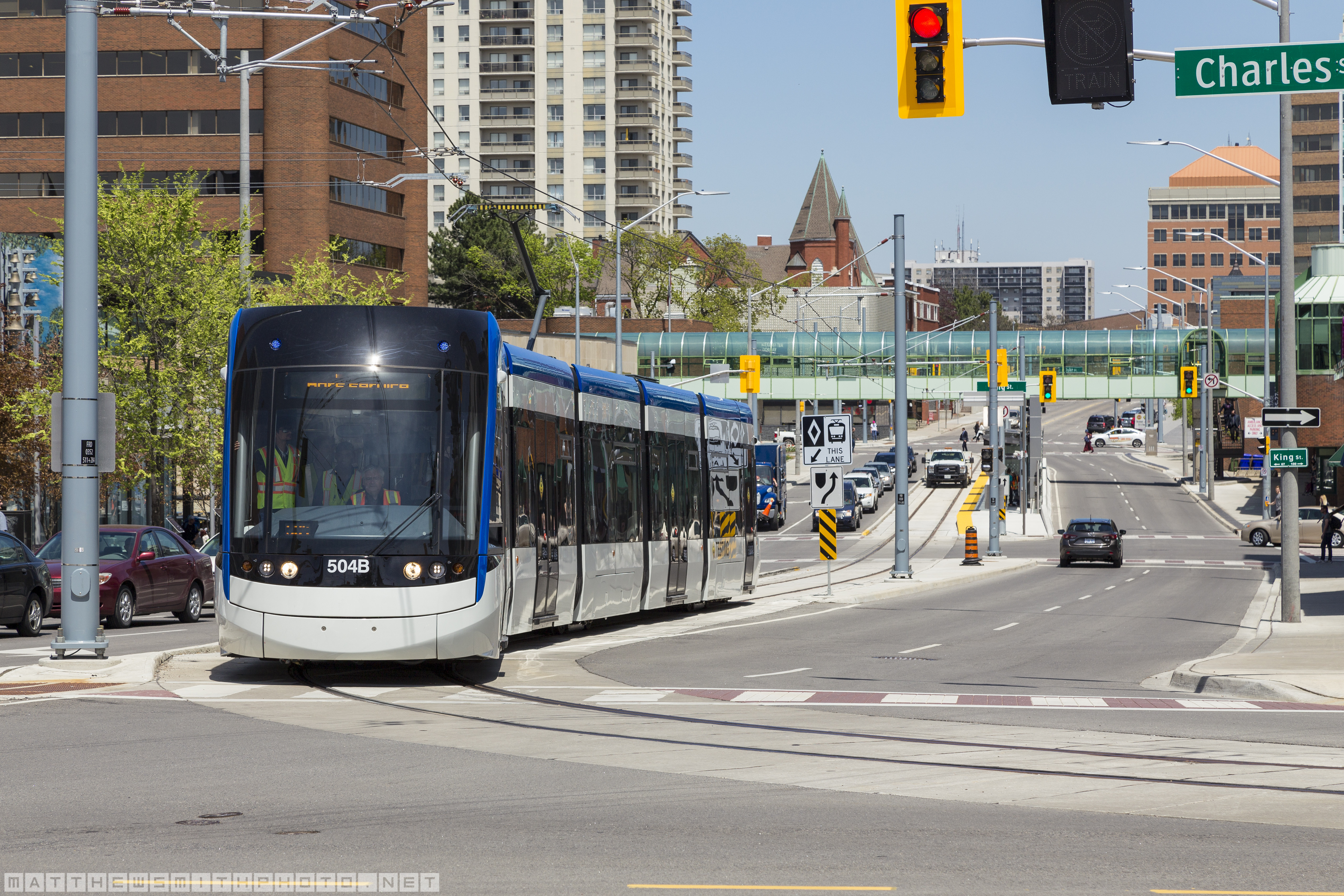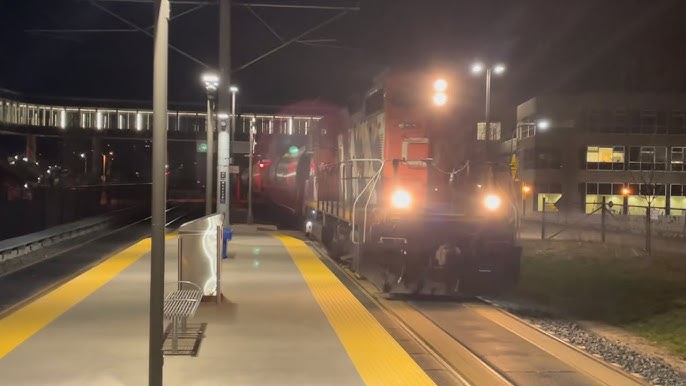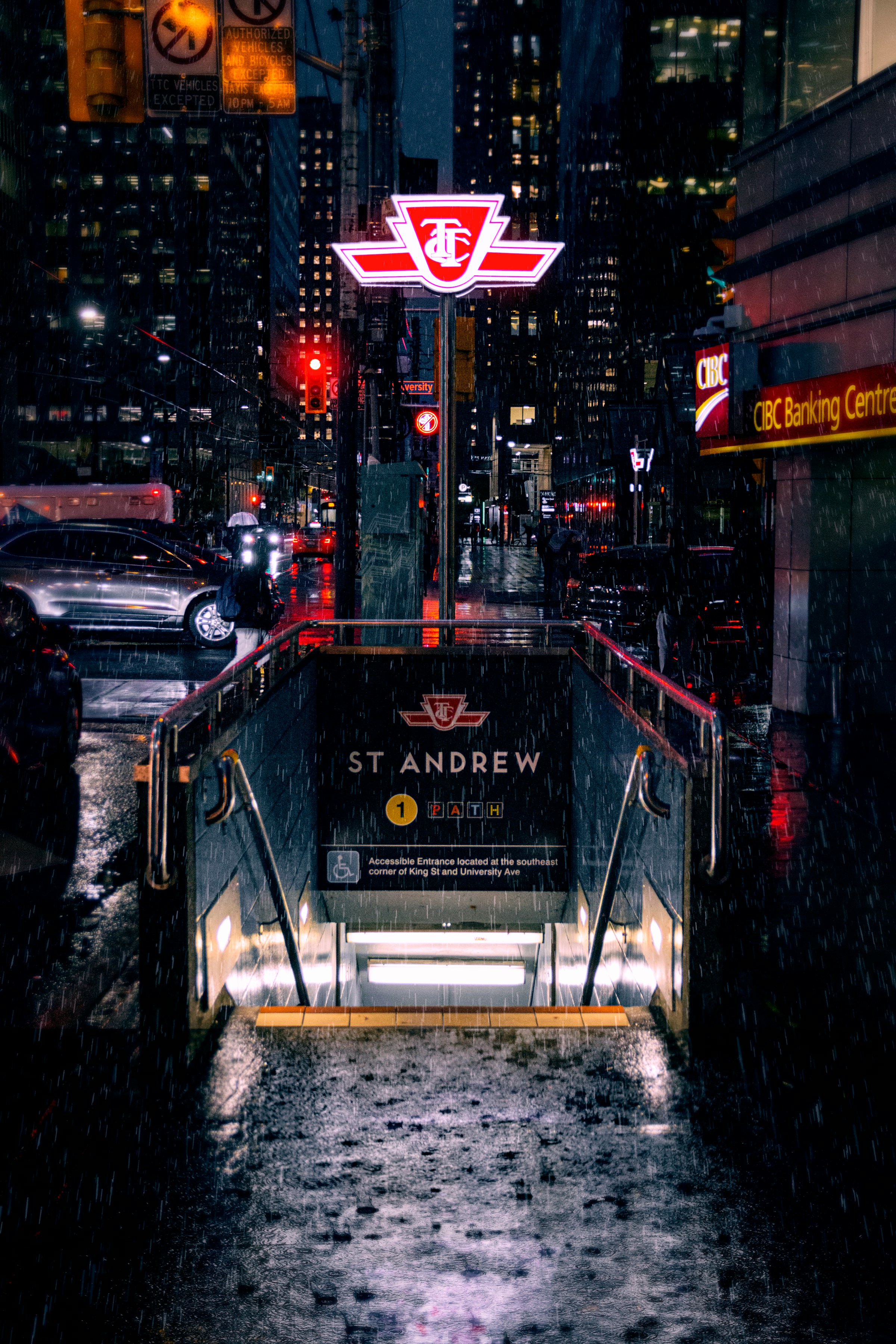TTC Nostalgia
None of these images were taken by me or belong to me. Clicking on the image will bring you to the original source with the photo credits.
Having been taking the TTC since 2010 when I was a little kid going to school, I want to share some of my memories and thoughts of the good ol' days.
Table of Contents
The TTC in the 2010s
The TTC in the 2010s had a vastly different appearance than it does today (as of writing this post). Mostly all the buses, streetcars, and subways have been replaced by newer models with only some still operational as they quickly reach their end of operational lifespan.
T1, H-4, H-5, H-6 Series Subways on Line 2
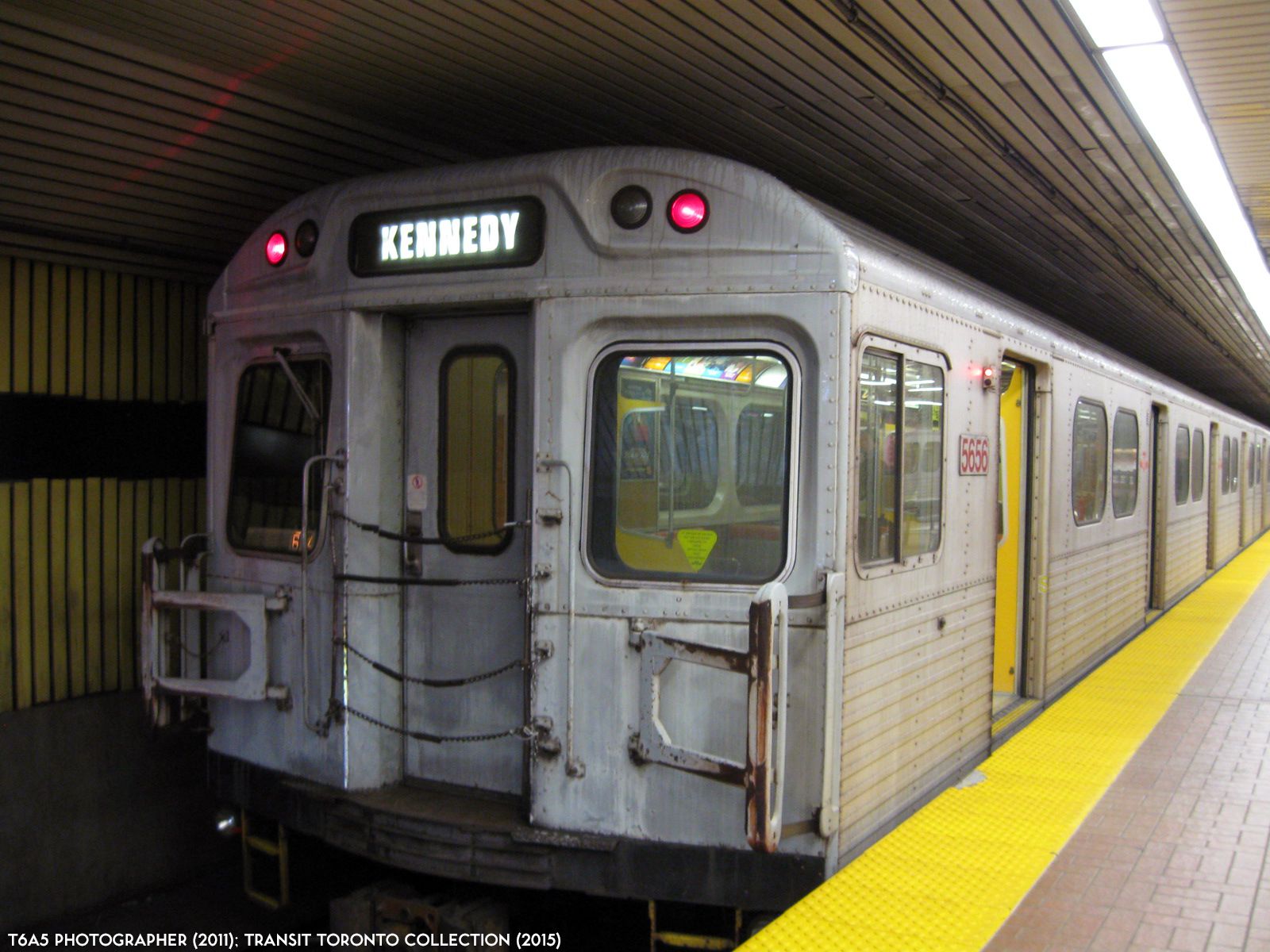 H-4 Subway Headed Westbound on Line 2 Towards Kipling Station (opens in a new tab)
H-4 Subway Headed Westbound on Line 2 Towards Kipling Station (opens in a new tab)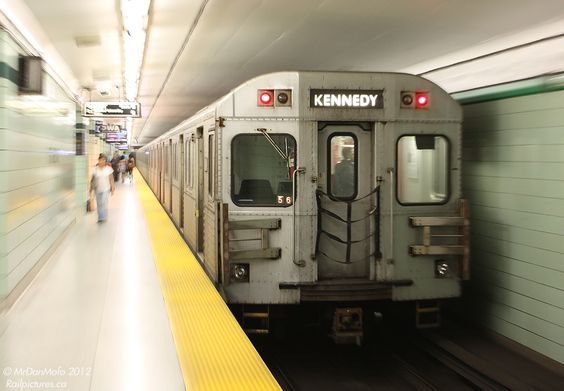 T1 Subway Leaving Chester Station (opens in a new tab) on Line 2 Headed Westbound
T1 Subway Leaving Chester Station (opens in a new tab) on Line 2 Headed WestboundBefore the T1's took over Line 2: Bloor-Danforth, Line 2 was serviced by a combination of T1 (opens in a new tab), H-6, H-5, (opens in a new tab) and the older H-4 series (opens in a new tab) subways. All manufactured in Thunder Bay, Ontario, by Bombardier (opens in a new tab), and stored in TTC Greenwood Yard (opens in a new tab), these models made up my early childhood.
The H-4's featured cushioned seats, which wouldn't ache your butt, but they did have an aging look. The H-5/6's had orange doors and were similar to the T1's. The T1's had pink/magenta doors which were wider. All three looked basically identical from the outside, especially from the front as they would enter the station. If you would like to see what it was like to ride on a H4 subway, OrionVIII (opens in a new tab) has a video: TTC H4 Ride from Bloor-Yonge to Old Mill (opens in a new tab).
I would call the T1's the "pink door subway," the H-5/6's as the "orange door subway" and the H-4's as the "cushion subway" with beige doors. One day on my trip to school, I noticed that I hadn't seen a beige door cushioned (H-4) subway in a while, that's when it dawned on me that I might never see them again. Shortly after, the orange door (H-5/6) subways started to disappear and only the pink door (T1) subways remained.
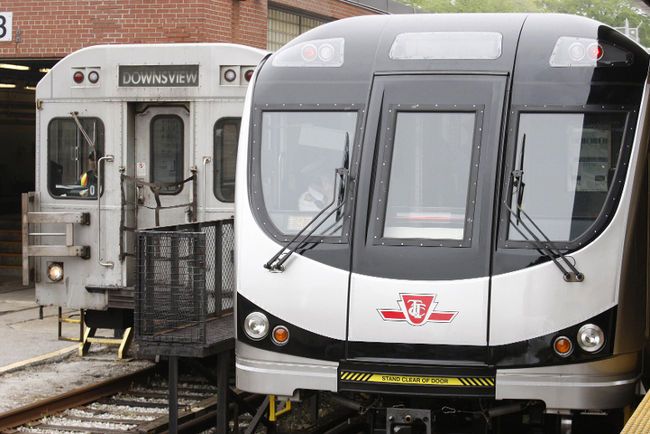 New Toronto Rocket Subway Next to an Old T1 Model at TTC Davisville Yard (opens in a new tab)
New Toronto Rocket Subway Next to an Old T1 Model at TTC Davisville Yard (opens in a new tab)In 2011, the arrival of the new Toronto Rocket subways began service on Line 1 leading to the retirement of the H-4 models on Line 2 due to the surplus of T1 subways being replaced by the TR subway on Line 1. Shortly after, the H-5 models saw the same faith, and eventually so did the H-6 in 2014. The T1's will eventually undergo the same event, however, due to the delay of upgrading Line 2 to ATC (Automatic Train Control) (opens in a new tab) the T1's are being operated well pass their expected time frame, with their EOS (End of Service) soon approaching for 2026 with the TTC planning to extend their operational lifetime by another 10 years.
One uncommon sight would be to see a red tart covering a door on the T1s. These would clip onto the hooks present at every door frame. This would happen when the door is inoperable due to it being jammed or broken from people leaning against the door or forcing it open.
Toronto Rocket Subways on Line 1
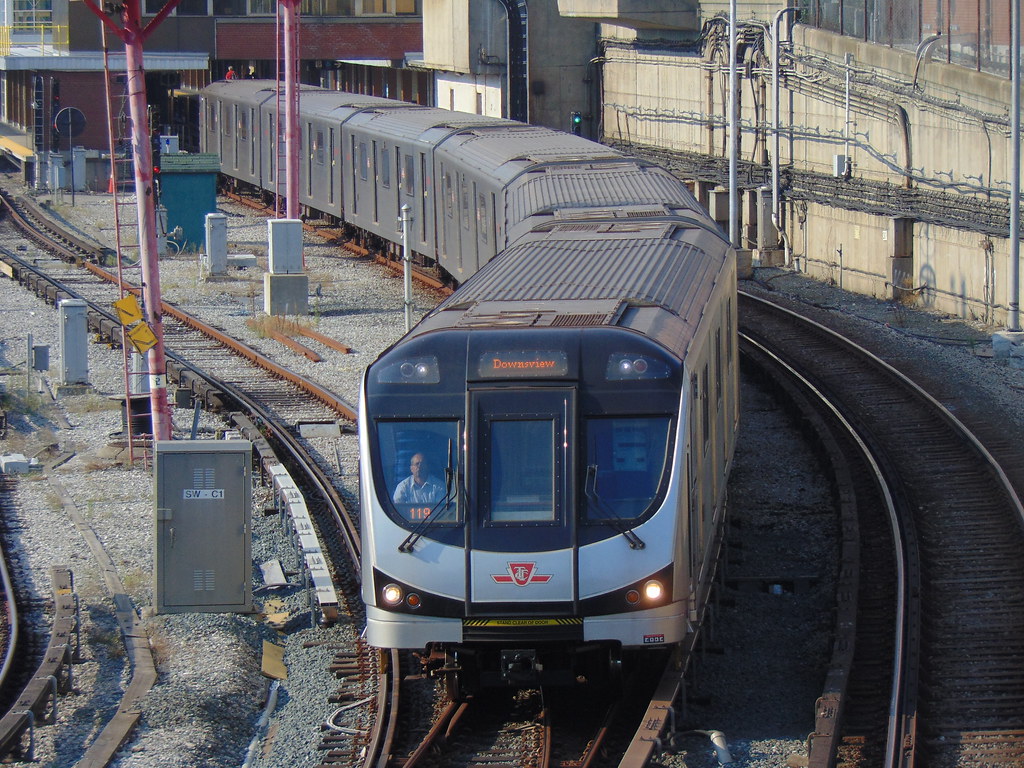 TR Subway Leaving Davisville Station (opens in a new tab) Heading Northbound to Sheppard West (formerly Downsview) (opens in a new tab)
TR Subway Leaving Davisville Station (opens in a new tab) Heading Northbound to Sheppard West (formerly Downsview) (opens in a new tab)The Toronto Rocket subways (opens in a new tab) were a new and modern addition to the subway fleet and introduced in 2011. Not only did it bring a sleek interior with screens capable of indicating which side the platform doors would open (for side and center platform stations) (opens in a new tab), you were able to freely traverse throughout the cars of the subway, from front to back, without restriction of having to open a door unlike on the GO Train. This meant the TR had an "accordion" (as it looks like one from the outside) much like the Flexity Outlook Streetcars (opens in a new tab) / Flexity Freedom LRTs (opens in a new tab) / Articulated Buses. This meant each TR car was serialized as they couldn't be separated, unlike the T1 and older models (and Metrolinx (opens in a new tab) with their notorious mix match of GO Train coaches).
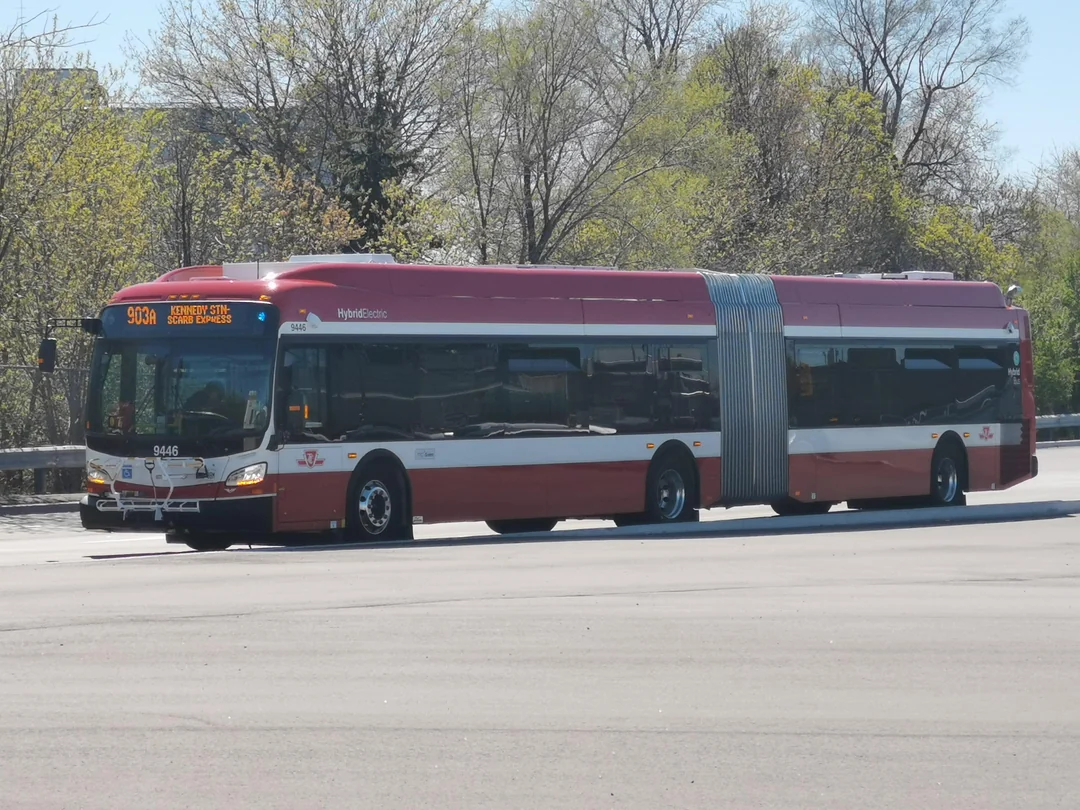 New Flyer Industries XDE60 Articulated Bus (opens in a new tab) (TTC 9446: 903 Kennedy-Scarborough Centre Express (opens in a new tab))
New Flyer Industries XDE60 Articulated Bus (opens in a new tab) (TTC 9446: 903 Kennedy-Scarborough Centre Express (opens in a new tab))The TR made its first debut on Line 1: Yonge-University (opens in a new tab) in 2011, eventually replacing all the T1s operating on that line. The excess T1s were moved onto Line 2: Bloor-Danforth (opens in a new tab) and stored in Greenwood Yard (opens in a new tab) to make storage space for the TRs in Davisville Yard (opens in a new tab) and Wilson Yard (opens in a new tab). The TRs then made their way onto Line 4: Sheppard (opens in a new tab) in May 2016, relocating the existing T1s onto Line 2 to support the aging T1 fleet (opens in a new tab) and maintain service.
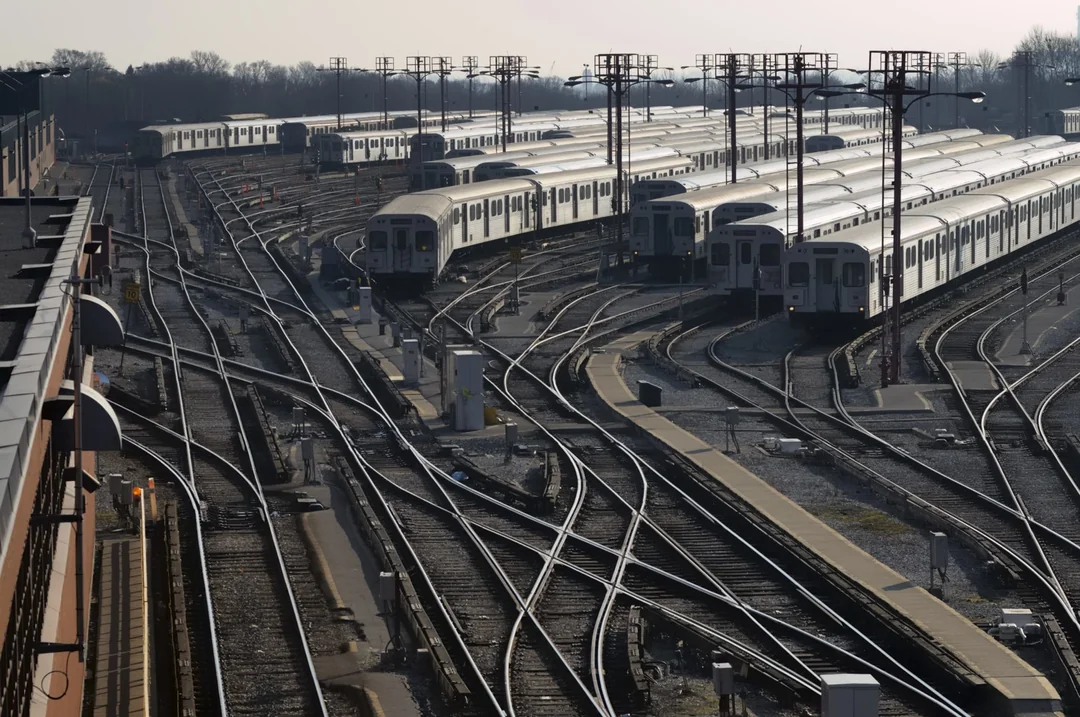 T1 Subways Stored in Greenwood Yard (opens in a new tab)
T1 Subways Stored in Greenwood Yard (opens in a new tab)While the re-signaling of Line 2 (opens in a new tab) from Automatic Block Signaling (ABS) (opens in a new tab) to Automatic Train Control (ATC) (opens in a new tab) is underway, the current T1 subways servicing Line 2 are approaching their end of operational lifespan. The TTC has just ordered new subways (opens in a new tab) to replace the aging fleet but it is currently unsure if the TRs will move onto Line 2, or stay on Line 1 & 4 and have the newly ordered subways service Line 2. Greenwood Yard is also currently at capacity, and Vincent (Keele) Yard (opens in a new tab) is being retrofitted to increase capacity, however, we'll most likely have to wait until the new Western Yard (opens in a new tab) gets completed.
The SRT was an Accident (Line 3)
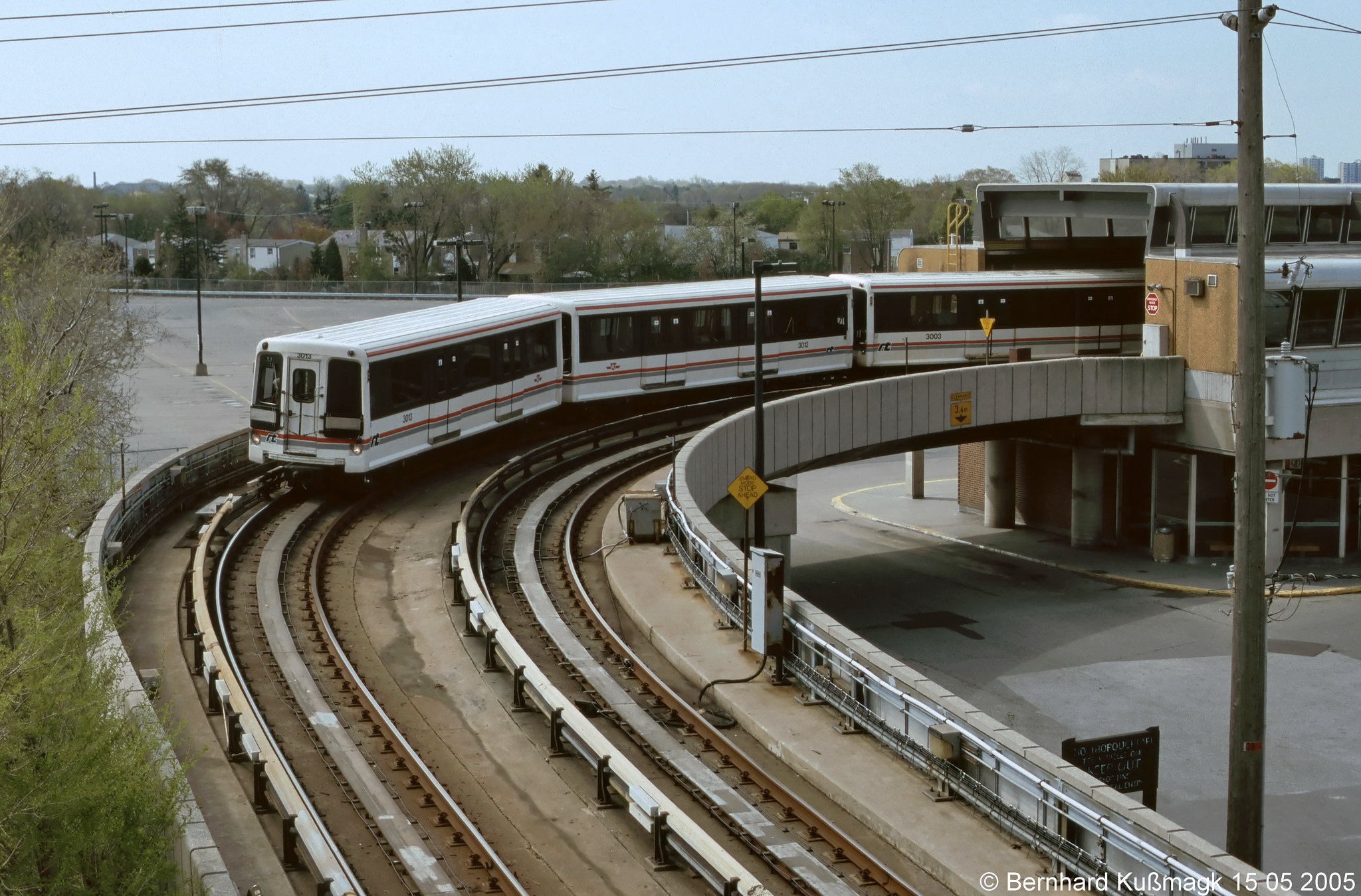 S Series Scarborough RT Leaving Kennedy Station (opens in a new tab)
S Series Scarborough RT Leaving Kennedy Station (opens in a new tab)The Line 3: Scarborough RT (opens in a new tab) was a rapid transit line that exclusively served Scarborough (opens in a new tab), the eastern suburb of Toronto. Originally planned to be a streetcar route, utilizing the CLRV & ALRV models (opens in a new tab), the TTC swapped to a light metro after pressure from the provincial Ontario government to prototype the new Intermediate Capacity Transit System (ICTS) Mark I trains (opens in a new tab) made by Urban Transportation Development Corporation (UTDC) (opens in a new tab), which at the time was owned by the Ontario Government and was later sold off to Bombardier. The TTC received seven 4-car ICTS Mark I trains, referenced as the S series by the TTC (opens in a new tab). With construction having already begun with the anticipation of Line 3 being a streetcar route, a streetcar loop was already constructed at Kennedy station and has since been abandoned.
The SRT was never the smoothest or quietest. It was notorious for being loud around curves and would shake as it operated. Nonetheless, it connected the people of Scarborough from Kennedy Station (opens in a new tab), a major transportation hub, with Scarborough Center Station (opens in a new tab), another major transportation hub with TTC Bus and GO Bus connections, and the Scarborough Town Center (STC) mall (opens in a new tab).
The SRT was quickly reaching its end of service with the TTC extending its operations by more than a decade. Designed to only operate 25 years and to be decommissioned in 2010 (opens in a new tab), the TTC repaired and gave the aging trains a new blue vinyl decal in 2015, and rebuilt some in 2017, with hopes of extending their service until 2026 (opens in a new tab) to eventually be replaced by the subway extension of Line 2 (opens in a new tab). Known as the Scarborough Subway Extension (opens in a new tab), it would expand subway service deep into Scarborough, giving Scarborough a direct connection with the rest of Toronto. Originally planned to be completed by 2026, it is now expected to be completed by 2030 (but who knows when it'll really open, after all, Line 5: Eglinton Crosstown LRT is still pending an opening date) and will service the areas that the SRT previously did.
Plans for the Scarborough Subway dated back to 2010 where Mayor Rob Ford proposed to extend Line 2: Bloor-Danforth (opens in a new tab) instead of upgrading the aging SRT infrastructure. Unfortunately, Rob Ford passed away from his fight against cancer in 2016 (opens in a new tab), and the Scarborough Subway extension (and plans for the SRT) were in limbo ever since. The TTC ultimately decided to decommission the SRT in November 2023, however, Line 3 was forced to close earlier than expected.
On July 24, 2023, the last car of SRT 3001 derailed (opens in a new tab) with 45 people on board, sending 5 to hospital with minor injuries, while travelling southbound towards Kennedy station after having just left Ellesmere station. The TTC ultimately decided to permanently close the SRT following the derailment (opens in a new tab), as the line was to be decommissioned shortly after anyways, and focused on accelerating the service of replacement buses (opens in a new tab).
Following the derailment, the TTC re-routed basically every bus to go to Kennedy station and Scarborough Center station (opens in a new tab). This saw the re-introduction of the 903 Kennedy-Scarborough Centre Express (opens in a new tab) (formerly the 131E Nugget Express (opens in a new tab)). However, this also caused the bus platforms at Kennedy (opens in a new tab) to become unnecessarily confusing with Platform A servicing the original bus routes that serviced Kennedy, and Platform B exclusively being for the buses that went to Scarborough Center station. This only became more confusing when half of Platform A was closed (opens in a new tab), due to the Line 2 Scarborough Extension construction, and caused the bus platforms to be shuffled yet again (so many bus platform patch notes). Also, in my opinion, it makes no sense to make the 985 Sheppard East Express (opens in a new tab) (formerly the 85E Sheppard East Express (opens in a new tab) and 190 Scarborough Centre Rocket (opens in a new tab)) and 939 Finch Express (opens in a new tab) (formerly the 199 Finch Rocket (opens in a new tab)) divert their routes all the way south to Kennedy just to go back north to continue their original routes — it just adds so much unnecessary distance and time to their already long service routes.
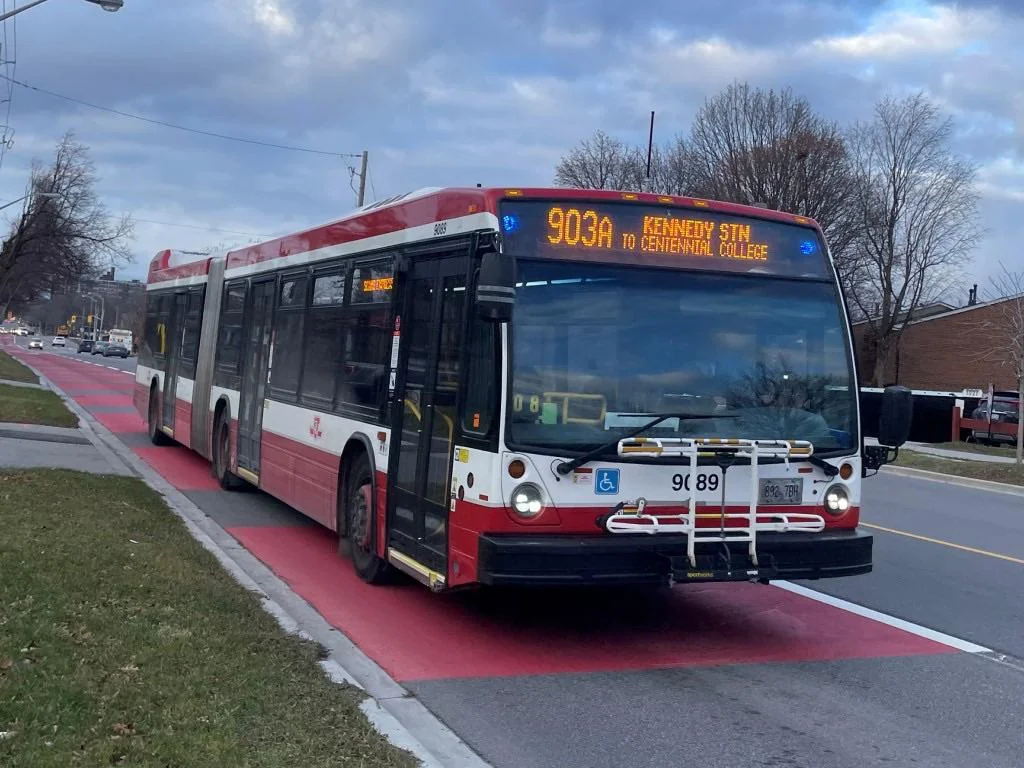 TTC 9089 (Nova Bus LFS Artic) Operating Route 903 Kennedy-Scarborough Centre Express (opens in a new tab)
TTC 9089 (Nova Bus LFS Artic) Operating Route 903 Kennedy-Scarborough Centre Express (opens in a new tab)With the Scarborough Subway underway, this extension of Line 2 brings potential for an extension of Line 4 in the future (opens in a new tab). Although in its early stages of development (the extension plan, not the subway line — ok the line is also the newest), Line 4: Sheppard (opens in a new tab) is the shortest and least utilized subway line in the entire TTC, and extending it east (and west to Sheppard West (opens in a new tab) — but that's another story) to connect with Line 2 at Sheppard station (they'll have to rename one of the Sheppard's lol) in Scarborough would drastically increase ridership as it provides a subway line for uptown Toronto (no more overcrowded 85 Sheppard East (opens in a new tab), 95 York Mills (opens in a new tab), and 39 Finch East (opens in a new tab) buses — some of the busiest bus lines in the entire city). Perhaps the Spanish platform (opens in a new tab) at Line 4 of Sheppard-Yonge station (opens in a new tab) will finally be put into use.
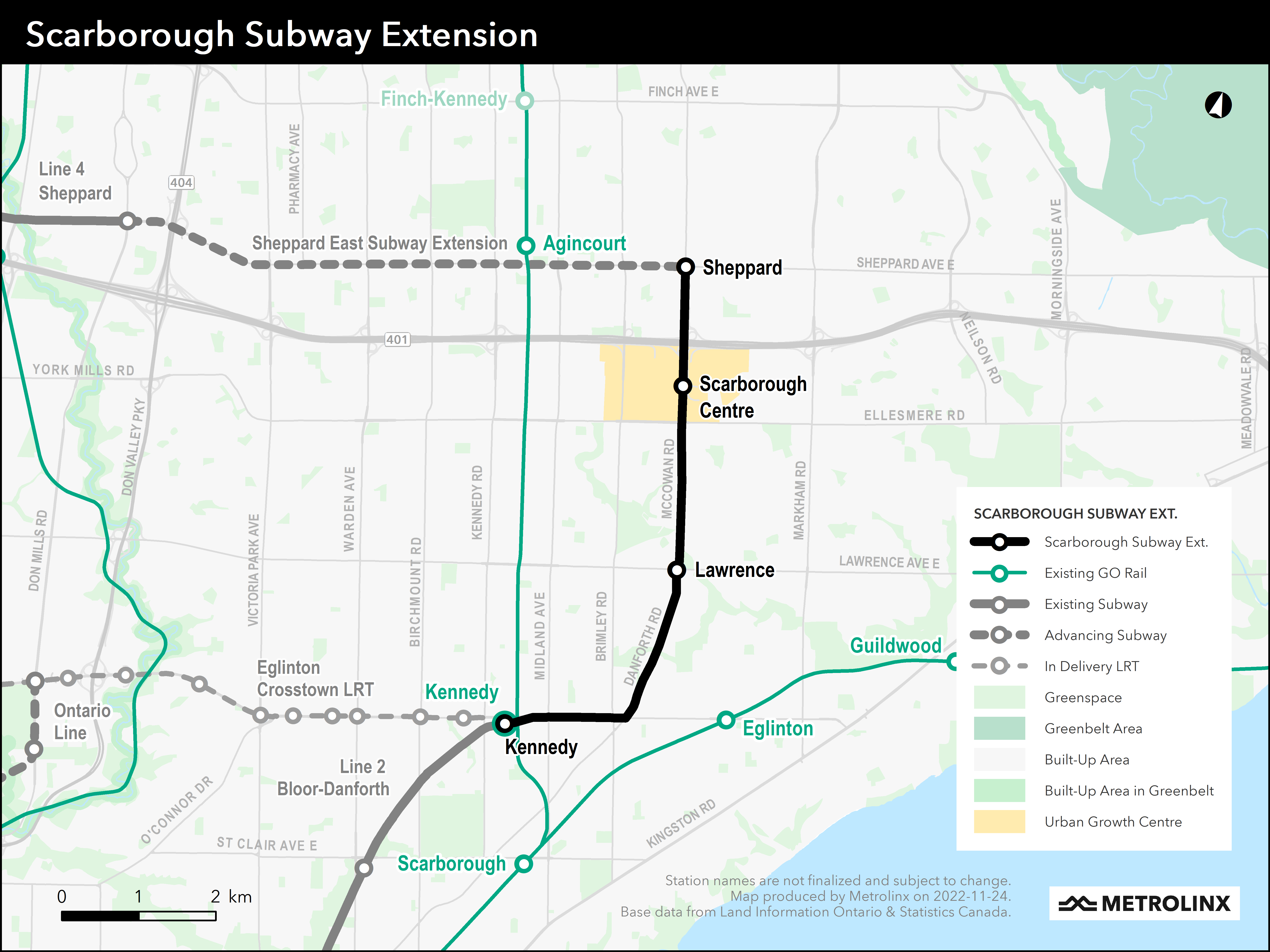 Proposed Line 4: Sheppard Extention (opens in a new tab) into Scarborough
Proposed Line 4: Sheppard Extention (opens in a new tab) into ScarboroughThe SRT derailed due to a lose power rail bolt that held down the reactor rail (opens in a new tab) for the linear induction motors. For a more detailed and technical incident report, check out Steve Munro's article (opens in a new tab).
The SRT started as an accident, and it ended with an accident as the SRT was basically on life support (RIP). The remainder cars were purchased by Detroit, USA (opens in a new tab).
The Never Ending Completion of Line 5
Just like the LRT, this section is also under construction (haha)
Eglinton Crosstown LRT (Light Rail Transit) (opens in a new tab) has been under construction since 2011. I'll complete this section once it finally opens, but for now just know that Kennedy Station and Eglinton Avenue East have been a chaotic mess and will never be the same.
510 Spadina: The Outlook Ground Zero
 TTC 4157 (CLRV) Streetcar: 504 King (opens in a new tab) towards Broadview Station
TTC 4157 (CLRV) Streetcar: 504 King (opens in a new tab) towards Broadview StationThe Canadian Light Rail Vehicle (CLRV) (opens in a new tab) and Articulated Light Rail Vehicle (ALRV) (opens in a new tab) operated Toronto's streetcar network from 1979 to 2019. Originally manufactured by SIG (opens in a new tab), CLRVs 4000-4005 served as prototypes for Urban Transportation Development Corporation (UTDC) (opens in a new tab), the same manufacturer of the Line 3 SRT, to manufacture the remaining fleet. CLRVs 4006-4009 never made it to production as they were used to prototype ALRV 4900, the first articulated CLRV.
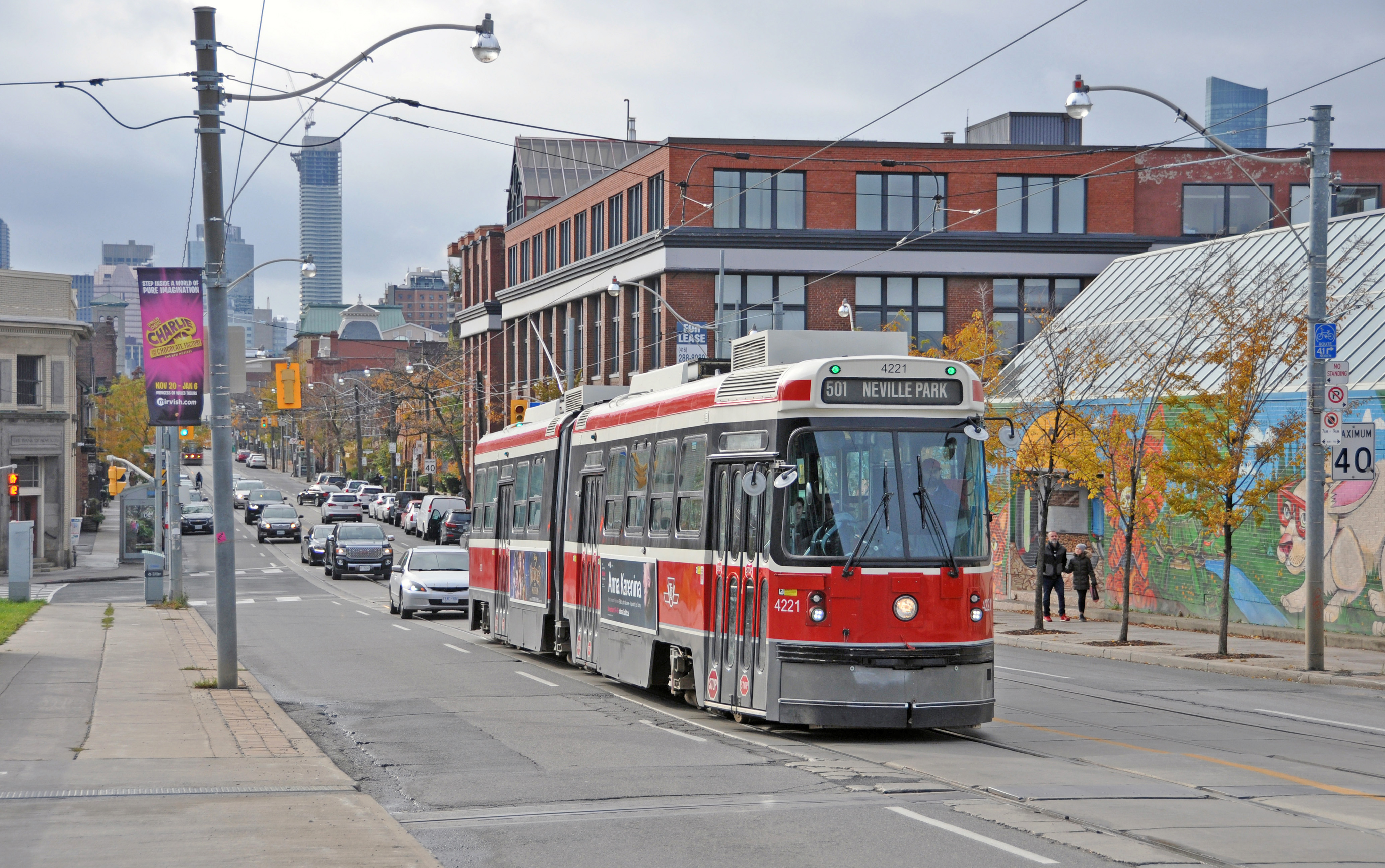 TTC 4221 (ALRV) Streetcar: 501 Queen (opens in a new tab) on Queen Street
TTC 4221 (ALRV) Streetcar: 501 Queen (opens in a new tab) on Queen StreetThe interior of the CLRV and ALRV is pretty iconic. Sitting at the rear gave an amazing view above the cars and presented plenty of seating. Unfortunately, since these streetcars were high floor, the stairs at the doors to get on and off posed a great barrier for accessibility. Also, the bells on these streetcars were so iconic.
The CLRV and ALRV were custom built and designed to support Toronto's unique track gauge of 4' 10 7⁄8" (1495mm), which is 60mm wider than standard gauge 4' 8 1⁄2" (1435mm), and were a promise to bring back Toronto's streetcar network after plans to abandon the remaining streetcar routes and convert them into buses in 1966 (opens in a new tab). This started with the introduction of the CLRV on the 507: Long Branch (opens in a new tab) route and shortly after on the 510: Spadina (opens in a new tab) route with a dedicated corridor.
With the CLRVs and ALRVs reaching almost 40 years of operation, in 2013, the new Flexity Outlooks from Bombardier (opens in a new tab) (UTDC got acquired by Bombardier) began to arrive and started replacing the aging streetcar fleet in 2014 (opens in a new tab) with the entire CLRV and ALRV fleet retired by 2019 (opens in a new tab), marking the end of the legacy Toronto streetcars. These Flexity Outlooks are practically identical to the Flexity Freedom but custom made for the TTC to support Toronto gauge, single side doors, and both a trolley pole and pantograph — more on trolley poles and pantographs below, for Flexity Freedom see The Unique Toronto Gauge section.
The Flexity Outlook had a low floor design, making them accessible (which was an issue with the stairs of the CLRV), and a modern interior to match its modern appearance.
The CLRVs used trolley poles (opens in a new tab) to obtain their 600V DC power supply from the overhead wires. Thus, the new Flexity Outlooks came equipe with both trolley poles and pantographs (opens in a new tab) for them to be compatible with Toronto's pre-existing infrastructure (opens in a new tab).
The TTC would gradually convert the entire overhead wiring infrastructure (opens in a new tab) to support the more modern pantograph system as the new Flexity Outlooks draw more current compared to the CLRV/ALRV predecessors and the trolley poles only acted as a bottleneck to their full potential. When using trolley poles, the Flexity Outlooks would not have functioning air conditioning, reduced vehicle performance, and often disconnects from the overhead wires (opens in a new tab).
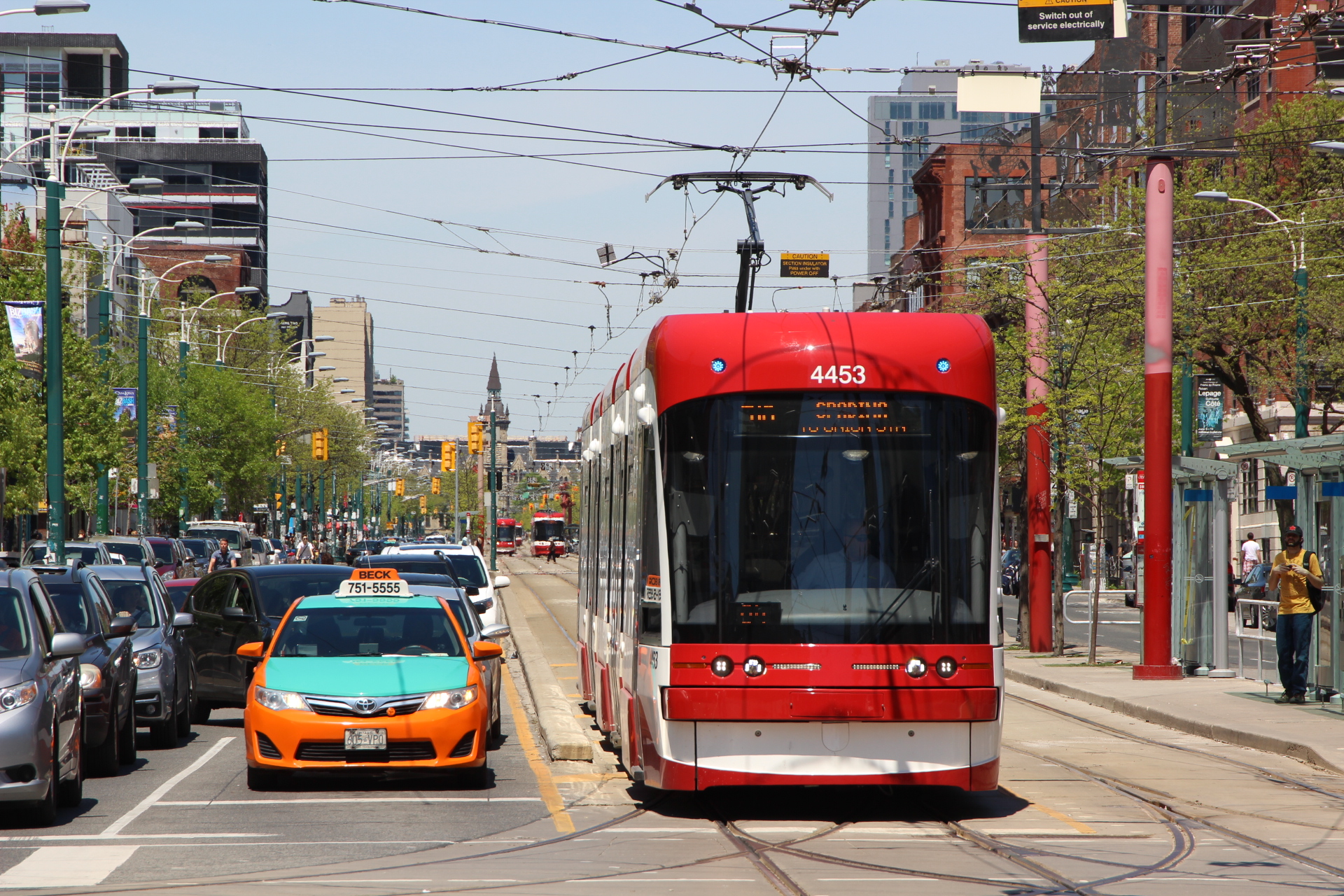 TTC 4453 (Flexity Outlook) using Pantograph on 510 Spadina (opens in a new tab)
TTC 4453 (Flexity Outlook) using Pantograph on 510 Spadina (opens in a new tab)By November 2020, 80% of overhead infrastructure had been converted to being pantograph compatible with the entire system expected to be converted by 2025. This meant that for a period between 2014 to 2019, before the CLRVs were officially retired, not all routes were pantograph compatible. Not to mention, the CLRVs only supported trolley poles and were limited in operating the few routes that still supported them. This transition period required the TTC to carefully allocate their streetcar fleet.
In August 2018, a flash flooding event (opens in a new tab) damaged nine streetcars, with two (4471 & 4478) sustaining heavy damages and sent to Bombardier for major repairs after being covered in two meters of water. TTC 4471 and 4478 will most likely never return to service the streets of Toronto and passengers again.
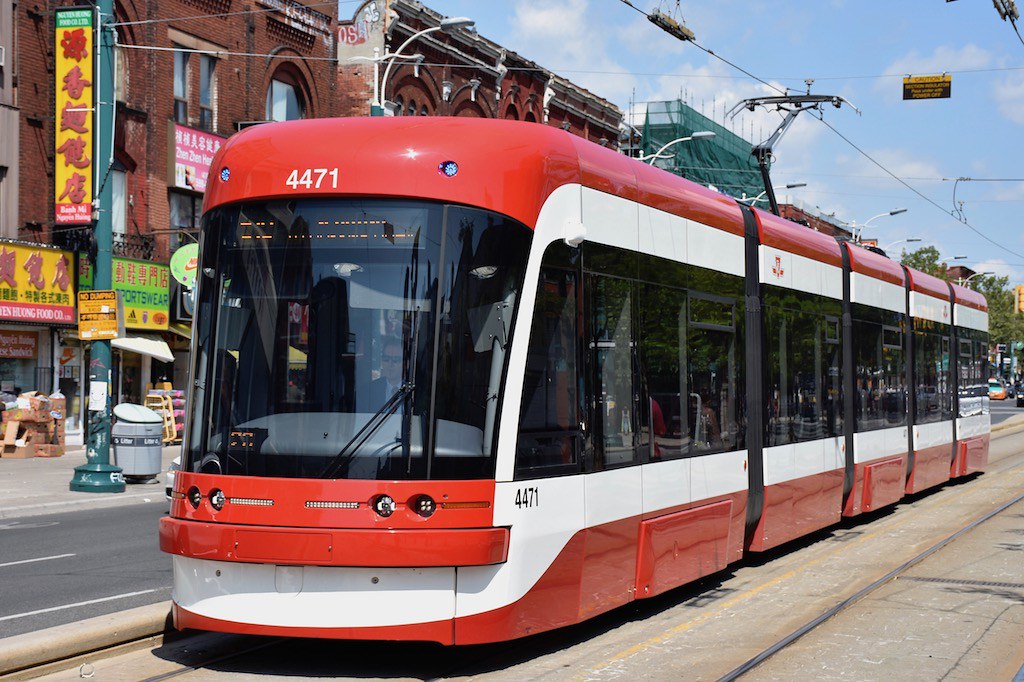 TTC 4471 (Flexity Outlook) Streetcar: Before Flooding Incident on 510 Spadina (opens in a new tab)
TTC 4471 (Flexity Outlook) Streetcar: Before Flooding Incident on 510 Spadina (opens in a new tab)Whenever a streetcar breaks down, if it hasn't derailed (like 4464 below), the streetcar gets towed by one of its fellow streetcars.
Much like trains, streetcars can chain together and allows for a working streetcar to tow the broken one to the maintenance yard.
Once a streetcar has derailed, it is a different story as the streetcar needs to be rerailed before it can be safely towed away, and rerailing a derailed streetcar is a long and complicated process.
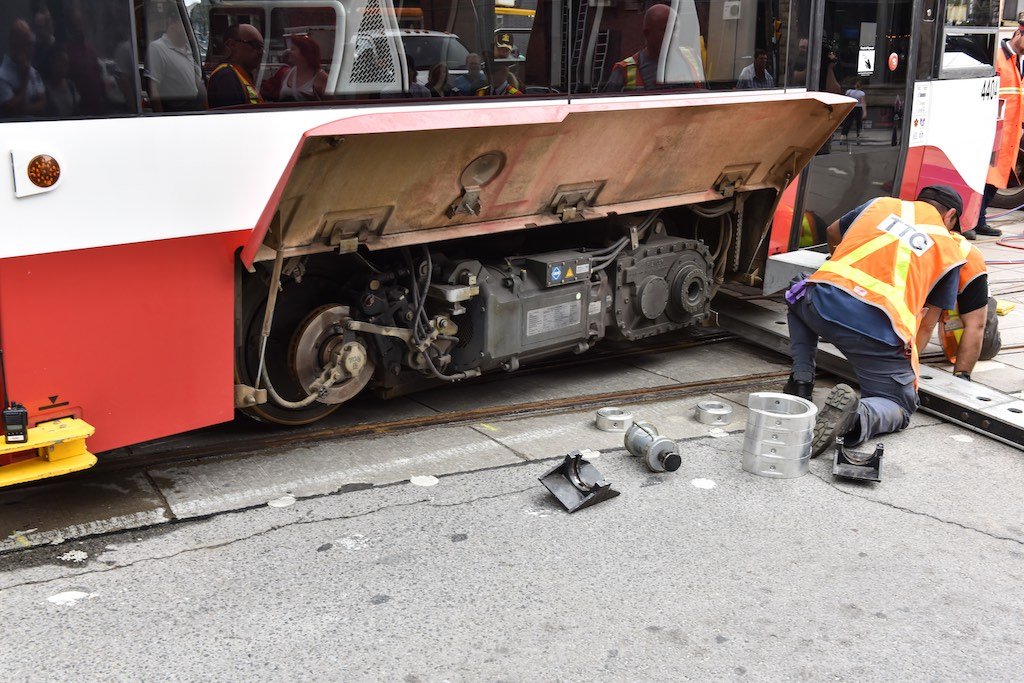
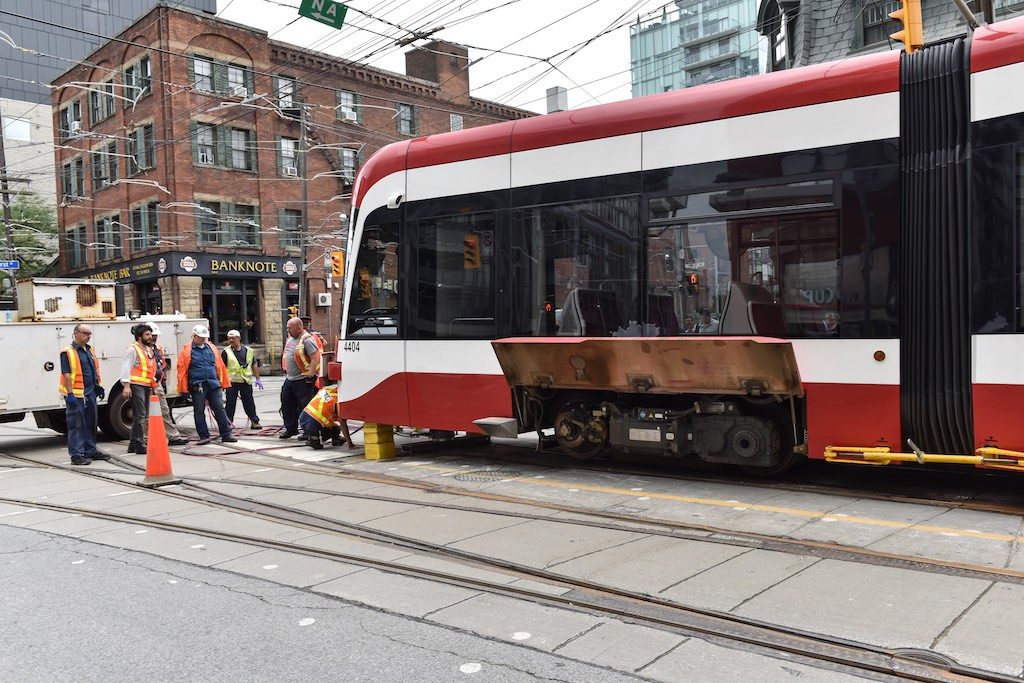 TTC 4404 (Flexity Outlook) Streetcar Being Rerailed Following Derailment on King St in 2016 (opens in a new tab)
TTC 4404 (Flexity Outlook) Streetcar Being Rerailed Following Derailment on King St in 2016 (opens in a new tab)Due to many streetcar routes operating on streets without a dedicated streetcar corridor, streetcars tend to often be delayed as they get stuck in traffic attempting to share the roads with regular vehicles. This has been exaggerated by the fact that the Flexity Outlooks are longer than the previous CLRVs, taking up more road space from cars.
And sometimes they don't get along too well together...
The Diesel Demons
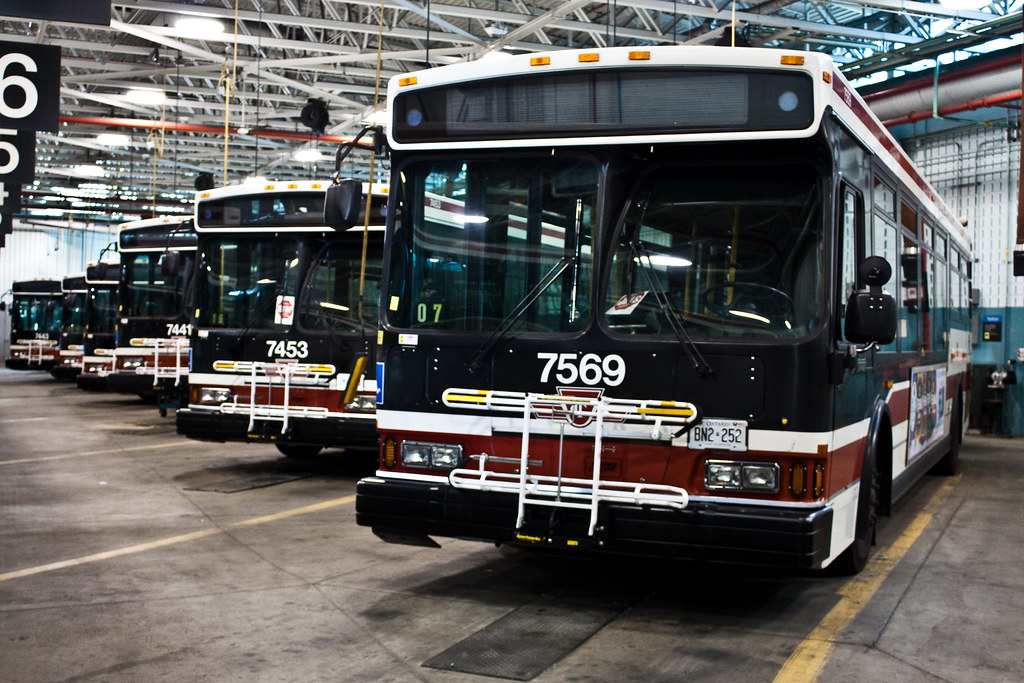 Orion VII OG Stored at Eglinton Bus Garage (opens in a new tab)
Orion VII OG Stored at Eglinton Bus Garage (opens in a new tab)The Orion VII (opens in a new tab) dominated the roads of Toronto in the 21st century with the TTC operating the largest fleet in North America. These diesel powered buses were reliable and had a similar internal layout to the present Nova Bus LFS models (opens in a new tab) that roam the streets (as of writing this). Built by Orion Bus Industries (opens in a new tab), these diesel demons were ordered in 2002 and hit the roads in 2003; being primarily assigned to the Birchmount (opens in a new tab) and Eglinton (opens in a new tab) bus garages.
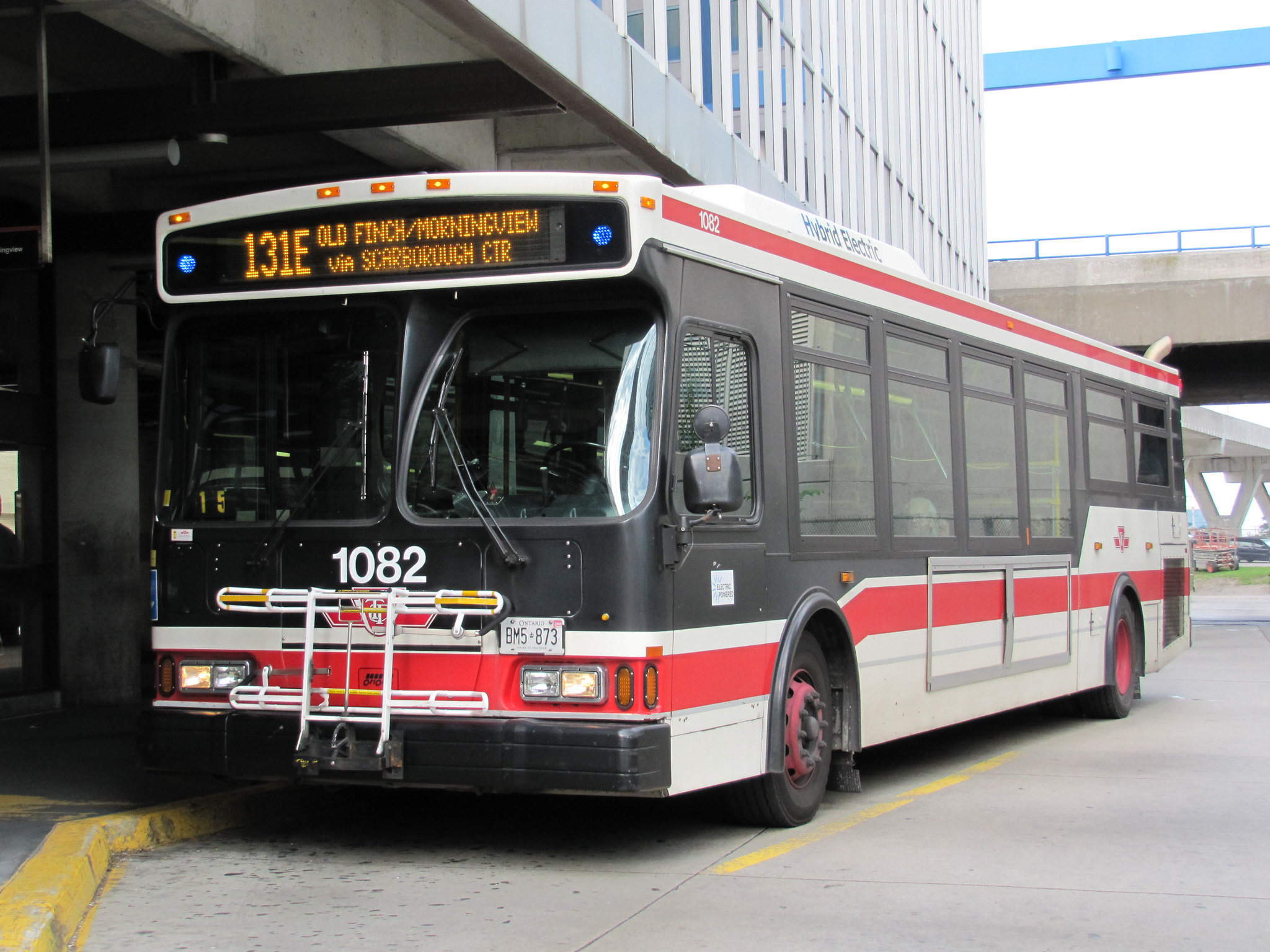 TTC 1082 (Orion VII OG HEV) Operating Route 131E: Nugget Express (opens in a new tab)
TTC 1082 (Orion VII OG HEV) Operating Route 131E: Nugget Express (opens in a new tab)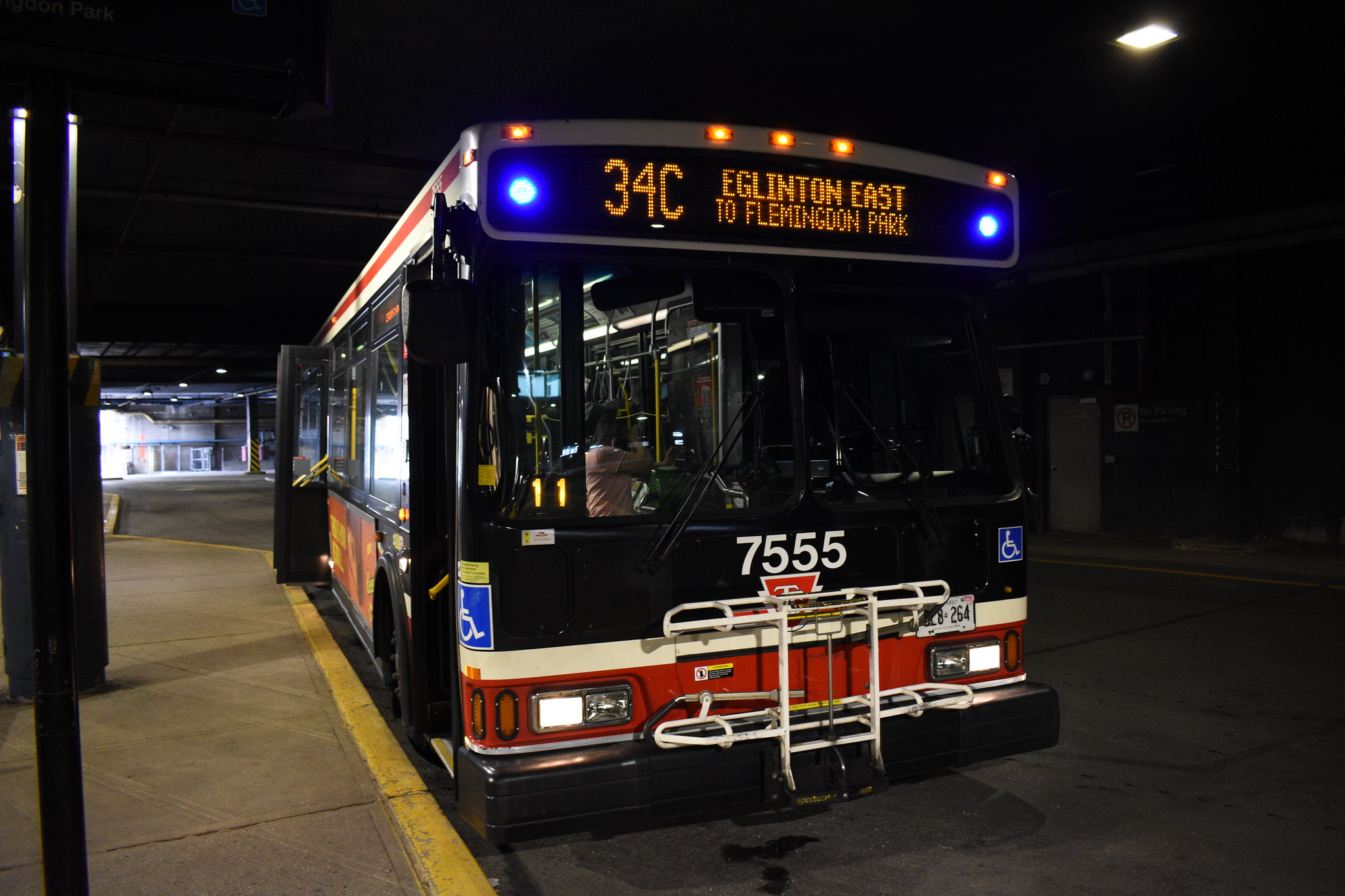 TTC 7555 (Orion VII OG) Operating Route 34C: Eglinton East (opens in a new tab)
TTC 7555 (Orion VII OG) Operating Route 34C: Eglinton East (opens in a new tab)The interior of the Orion VII is pretty standard and is unique because of the iconic raised seat at the rear. Due to the size of the Detroit Diesel Series 50 (opens in a new tab) engine located at the rear, the Orion VII OG featured a high seat in the middle of the rear most row to accommodate the taller engine. Sitting in this seat was loads of fun and is nicknamed "The Orion Throne" from its elevated viewpoint. This seat is heavily missed 😭
The Orion VII OGs were truly an image of the TTC, and the City of Toronto. These diesel demons roared down the streets and riding in one was truly like a rollercoaster. With the massive success of the Orion VII OG, the next generation was introduced (quite literally).
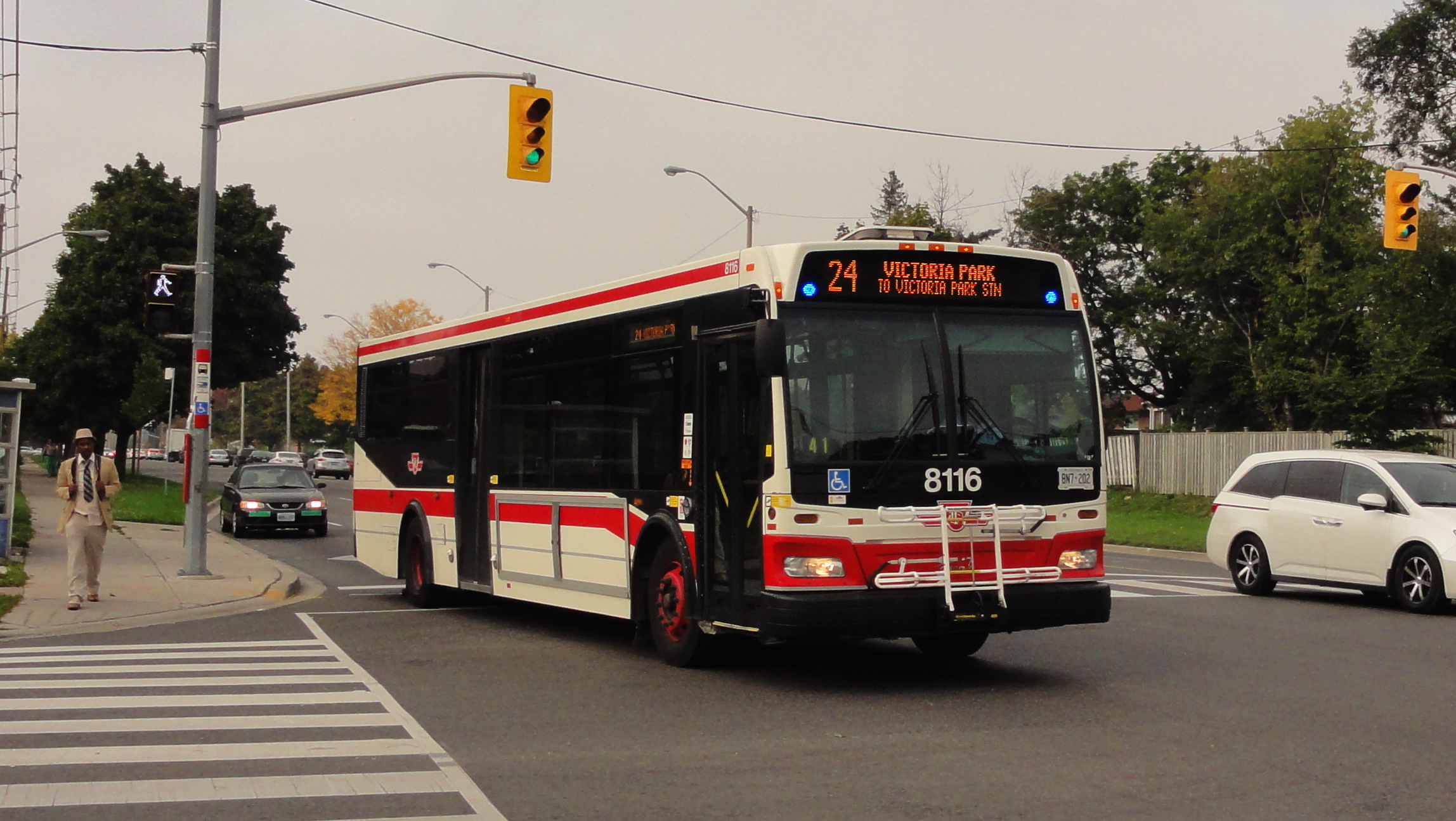 TTC 8116 (Orion VII NG) Operating Route 24: Victoria Park (opens in a new tab)
TTC 8116 (Orion VII NG) Operating Route 24: Victoria Park (opens in a new tab)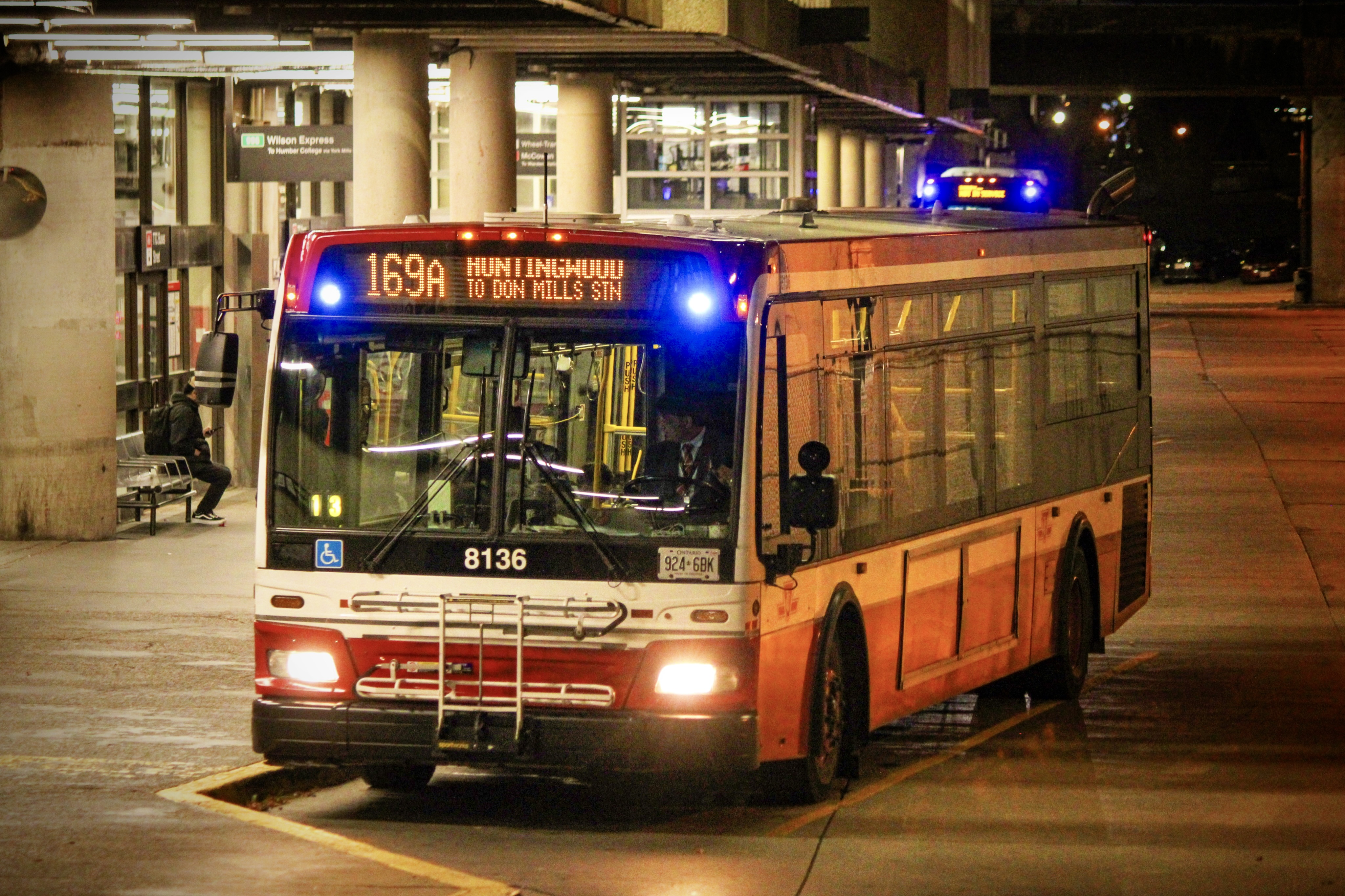 TTC 8136 (Orion VII NG) Operating Route 169A: Huntingwood (opens in a new tab)
TTC 8136 (Orion VII NG) Operating Route 169A: Huntingwood (opens in a new tab)The Orion VII Next-Gen (NG) (opens in a new tab) was a redesign hybrid model of the Orion VII OG, hence the term OG for Original. The Orion VII NGs were added in 2010 and continue to serve passengers today, although moments from retirement, with an identical interior to the OG except for the high "Orion Throne" seat.
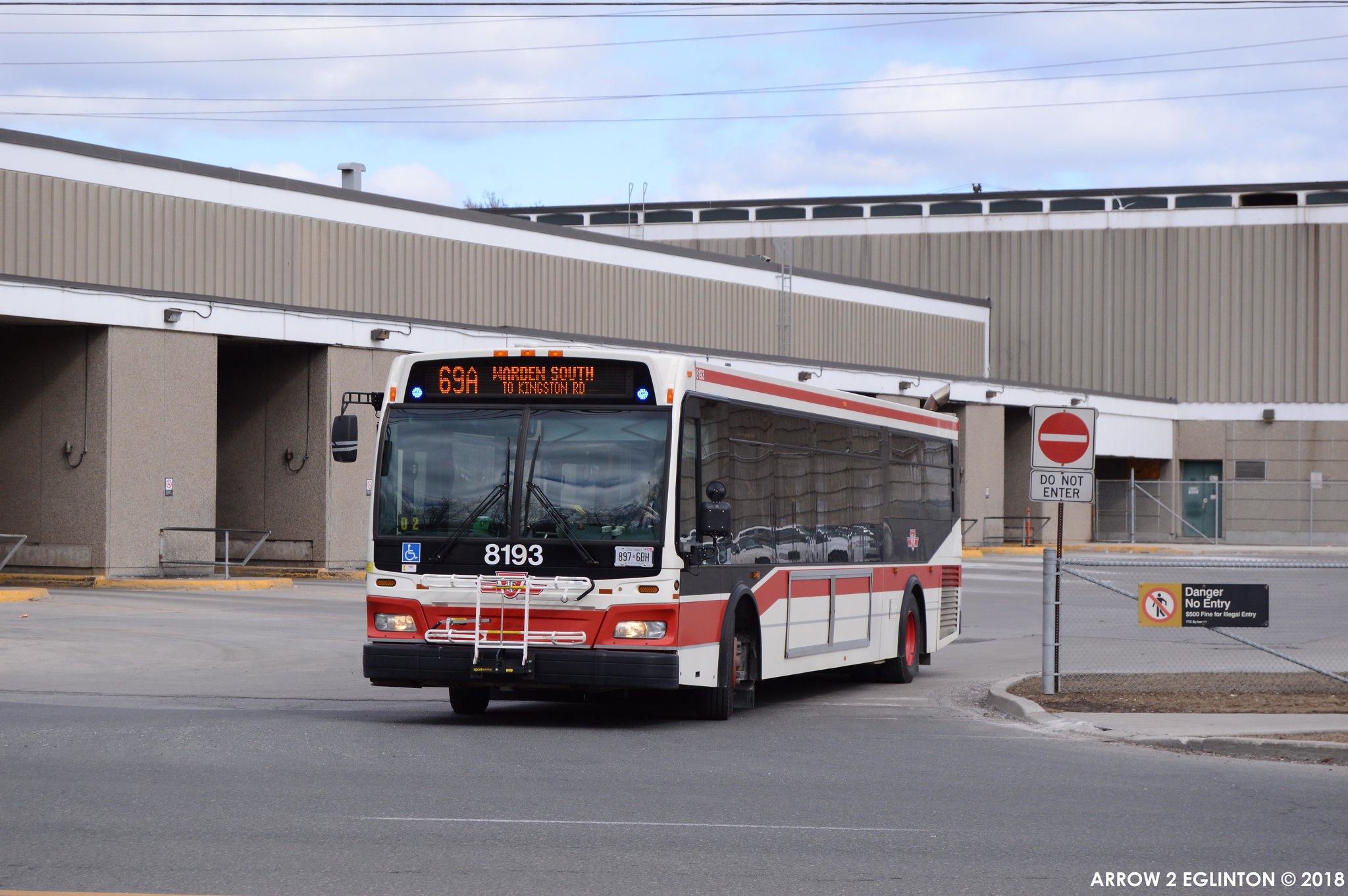 TTC 8193 (Orion VII NG) Operating Route 69A: Warden South (opens in a new tab) Leaving Warden Station (opens in a new tab)
TTC 8193 (Orion VII NG) Operating Route 69A: Warden South (opens in a new tab) Leaving Warden Station (opens in a new tab)Unfortunately, in 2013, Orion's parent company announced its withdrawal from the market (opens in a new tab) and with the aging bus fleet (opens in a new tab) the TTC turned towards Nova Bus (opens in a new tab) for its next batch of bus orders. This is also the first time the TTC will be adding articulated buses into its fleet with the addition of the Nova Bus LFS Arctic (opens in a new tab). The order for Nova Bus LFS (opens in a new tab) and LFS Arctics were placed in 2013, with them hitting the roads in 2015 to slowly push the Orion VIIs into retirement in 2017. Nowadays, the rebuilt Orion VII OGs are only found in the Toronto's west-end along routes assigned to the Mount Dennis bus garage (opens in a new tab) (14 (opens in a new tab), 29 (opens in a new tab), 35 (opens in a new tab), etc.) with the Orion VII NGs still being found along the Scarborough routes assigned to Malvern bus garage (opens in a new tab) (116 (opens in a new tab), 86 (opens in a new tab), 38 (opens in a new tab), 95 (opens in a new tab), etc.).
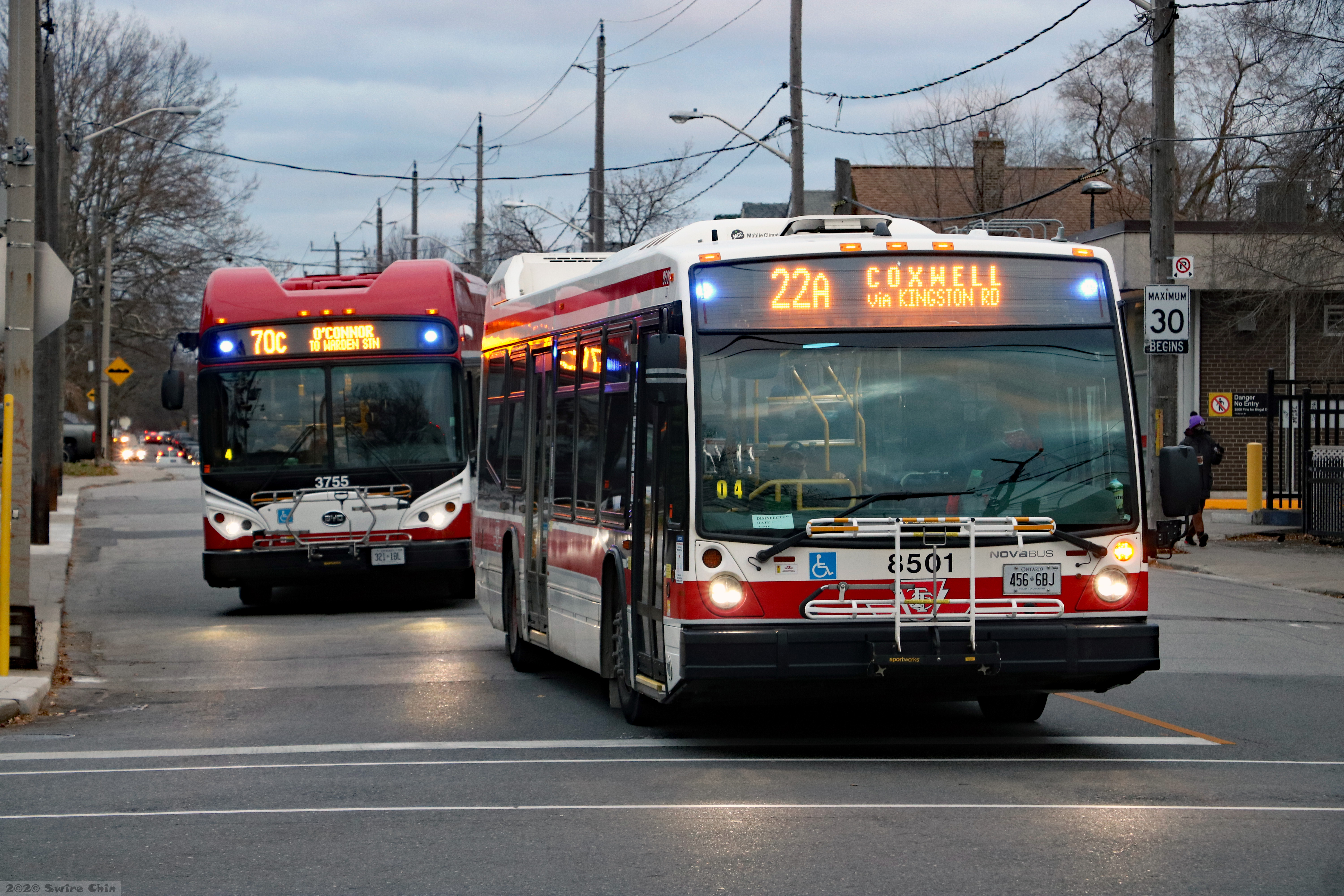 TTC 8501 (Nova Bus LFS) Operating Route 22A: Coxwell (opens in a new tab) with TTC 3755 (BYD Auto K9M Electric (opens in a new tab)) Operating Route 70C: O'Connor (opens in a new tab) Behind
TTC 8501 (Nova Bus LFS) Operating Route 22A: Coxwell (opens in a new tab) with TTC 3755 (BYD Auto K9M Electric (opens in a new tab)) Operating Route 70C: O'Connor (opens in a new tab) Behind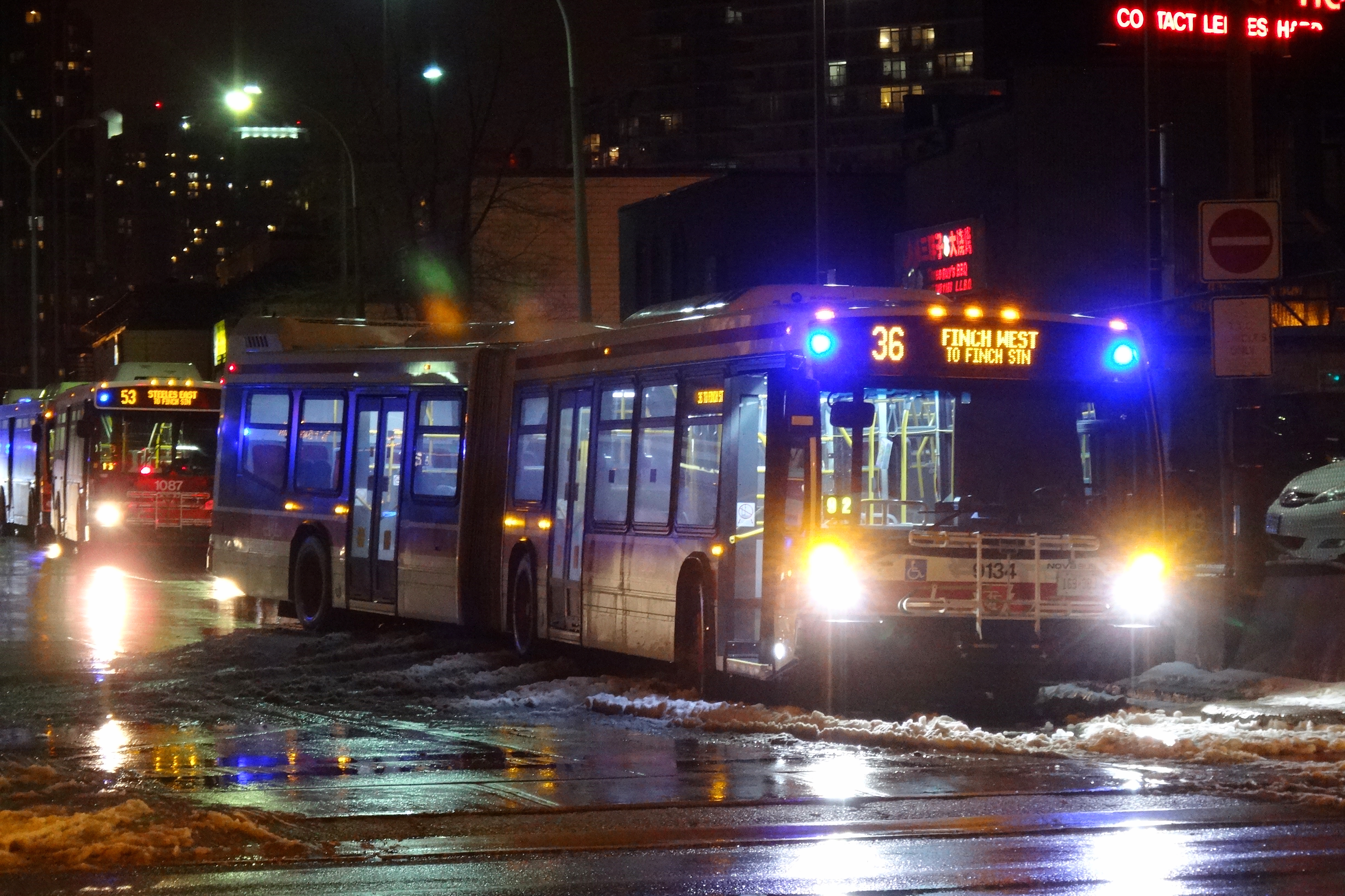 TTC 9134 (Nova Bus LFS Arctic) Operating Route 36: Finch West (opens in a new tab) with TTC 1087 (Orion VII OG) Operating Route 53: Steeles East (opens in a new tab) Behind
TTC 9134 (Nova Bus LFS Arctic) Operating Route 36: Finch West (opens in a new tab) with TTC 1087 (Orion VII OG) Operating Route 53: Steeles East (opens in a new tab) BehindThe Nova Buses featured a practically identical interior to the Orion VII predecessors with the main difference being an extra pair of seats behind the driver's cab. The Nova Bus LFS Arctic has a slightly different interior layout compared to the diesel LFS and hybrid (HEV) LFS with the main difference being the additional seating found in the Arctic.
Much like their streetcar counterparts, TTC buses too find themselves in some crazy predicaments and accidents. Here are some notable ones:
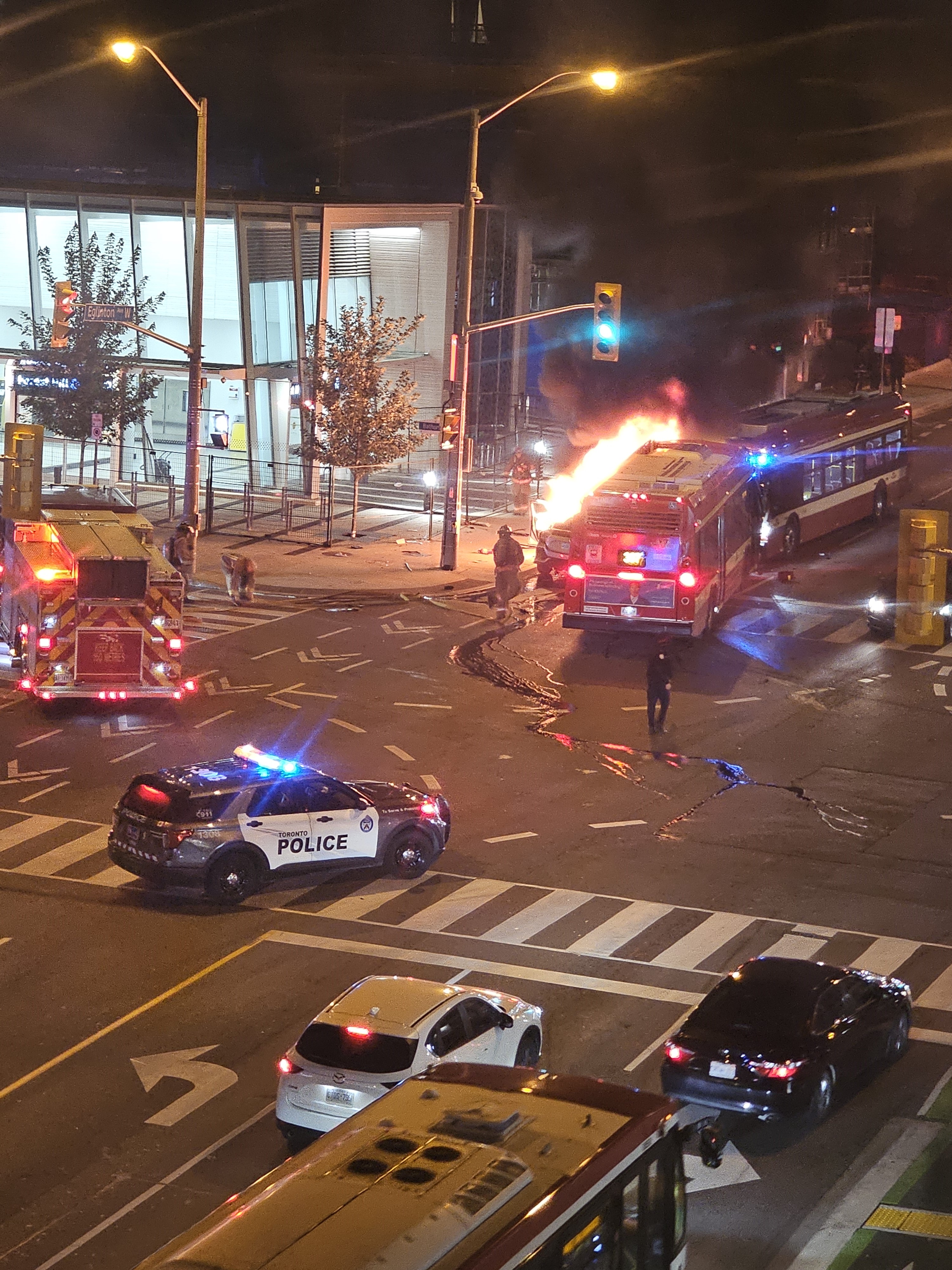
 TTC 7100 (Nova Bus LFS HEV) and 7303 (New Flyer XDE40 (opens in a new tab)) Collide in Flames with Stolen Car on Bathurst
TTC 7100 (Nova Bus LFS HEV) and 7303 (New Flyer XDE40 (opens in a new tab)) Collide in Flames with Stolen Car on BathurstBefore the PRESTO Era
Before PRESTO (opens in a new tab) became mainstream, the TTC used tokens, tickets, passes, and Metropasses (opens in a new tab). A TTC token granted one adult fare, a day pass granted unlimited fares for a group for one day, and a Metropass granted unlimited fares for a month (hence the name).
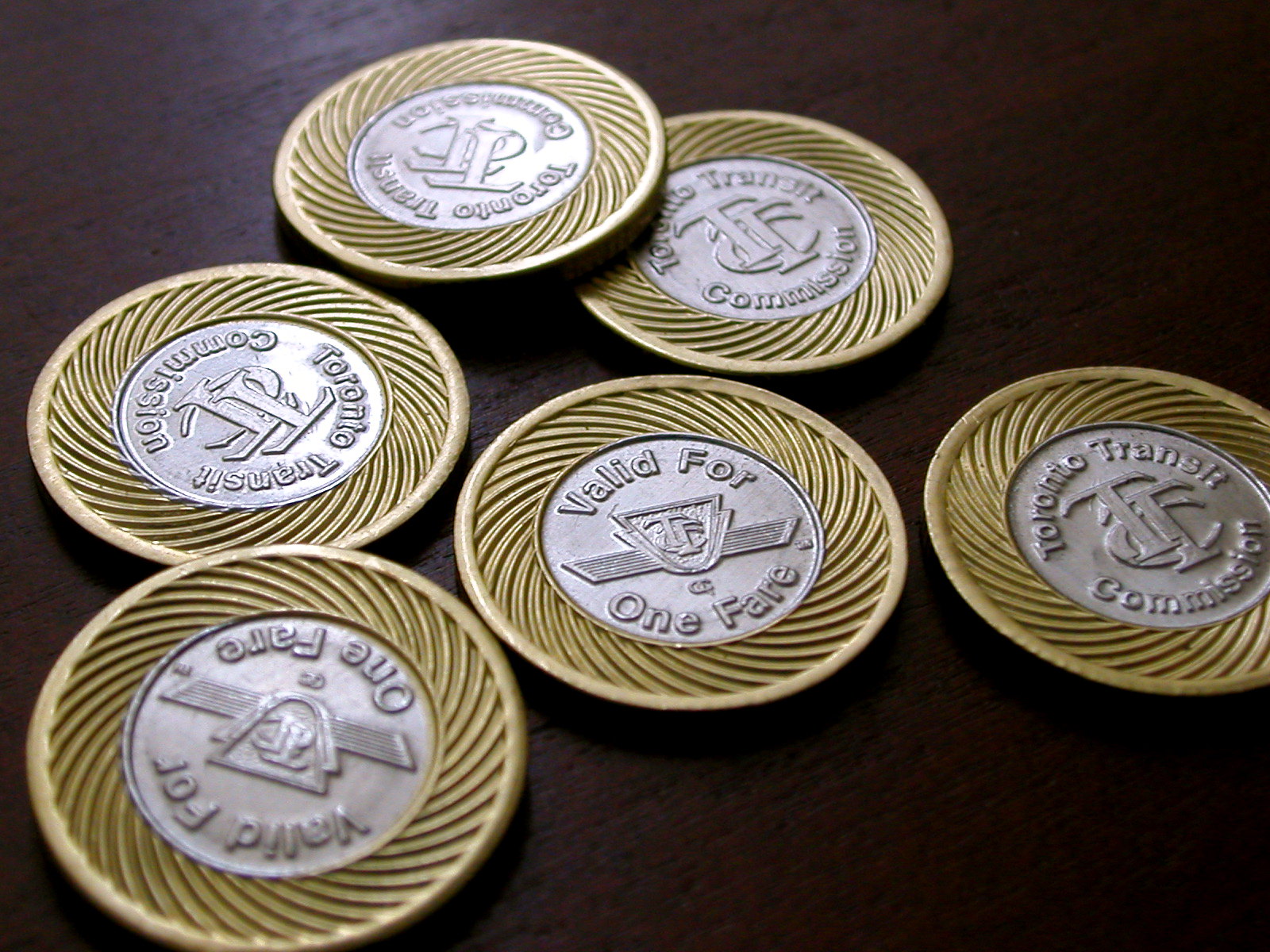 TTC Token Made by the Royal Canadian Mint (opens in a new tab) - About Same Size as a Dime
TTC Token Made by the Royal Canadian Mint (opens in a new tab) - About Same Size as a DimeThe TTC also used paper transfers which would be given by the bus or streetcar driver upon request, or self-obtain at any station. The paper transfers obtained from a bus or streetcar would indicate the route, date, TTC service day of the year, and whether it was morning, afternoon, evening, or night. The color of ink used would also change daily. With the TTC having numerous bus and streetcar routes and having to print these transfer stacks for every day of the year, plus morning, afternoon, evening, and night variants, you can imagine just how many of these had to be printed and the costs associated.
Transfers from a station are obtained from a machine and would have the time and station printed on them. These transfers made for some quick origami while on the TTC. Sometimes these machines would glitch out.
In 2010, the TTC fare price was the following:
| Category | Cash | Token | Ticket | Weekly Pass | Regular Metropass |
|---|---|---|---|---|---|
| Adult | $3.00 | $2.50 | N/A | $36.00 | $121.00 |
| Senior/Student | $2.00 | N/A | $1.65 | $28.00 | $99.00 |
| Child | $0.75 | N/A | $0.55 | N/A | N/A |
The TTC would typically increase fare prices annually depending on their annual budget, $0.25 in 2010 (opens in a new tab), $0.05 in 2014 (opens in a new tab), $0.10 in 2015 (opens in a new tab), etc. and with each price hike, the TTC would modify the look of the tickets to distinguish the price that the ticket was bought at for. An example of this would be with the child tickets. Originally colorful pre-2010, the updated ticket had a purple background (I literally cannot find a picture of this on the internet 😭) and in 2014 a new rectangular design was introduced (opens in a new tab). In 2015, the child fare was made free and hence no longer required a ticket, so these rectangular child tickets were extremely short lived (and made finding pictures difficult).
In 2014, the new TTC tickets were twice as long compared to the older versions (opens in a new tab), giving them a rectangular shape. This new design allowed the tickets to be validated on the new Flexity Outlook streetcars which entered service in the same year. Using these tickets, the ticket would get stamped by the fare machine found in the streetcar or at the streetcar stop and the stamped ticket would be your transfer and POP (Proof of Payment (opens in a new tab)).
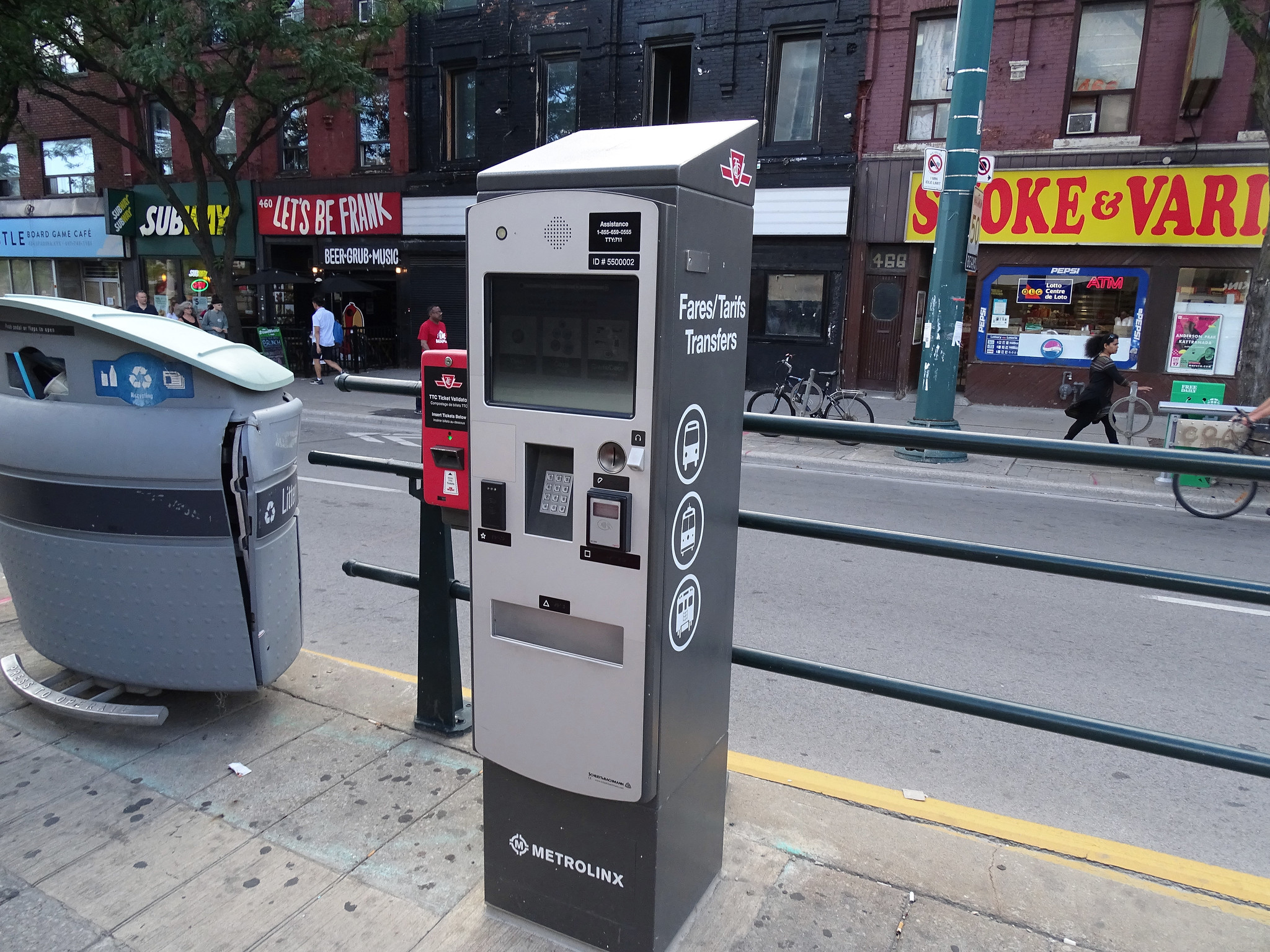 Outside Fare Machine at Streetcar Stop on 510: Spadina (opens in a new tab)
Outside Fare Machine at Streetcar Stop on 510: Spadina (opens in a new tab)In 2016, the TTC officially rolled out PRESTO and began to mainstream it, however, PRESTO was first introduced back in 2012 (opens in a new tab). Buses and CLRVs/ALRVs became equipe with PRESTO card readers and a new PRESTO compatible fare machine was given to the Flexity Outlook streetcars. All streetcars accepted PRESTO by 2016 (opens in a new tab), and buses followed in 2017 (opens in a new tab).
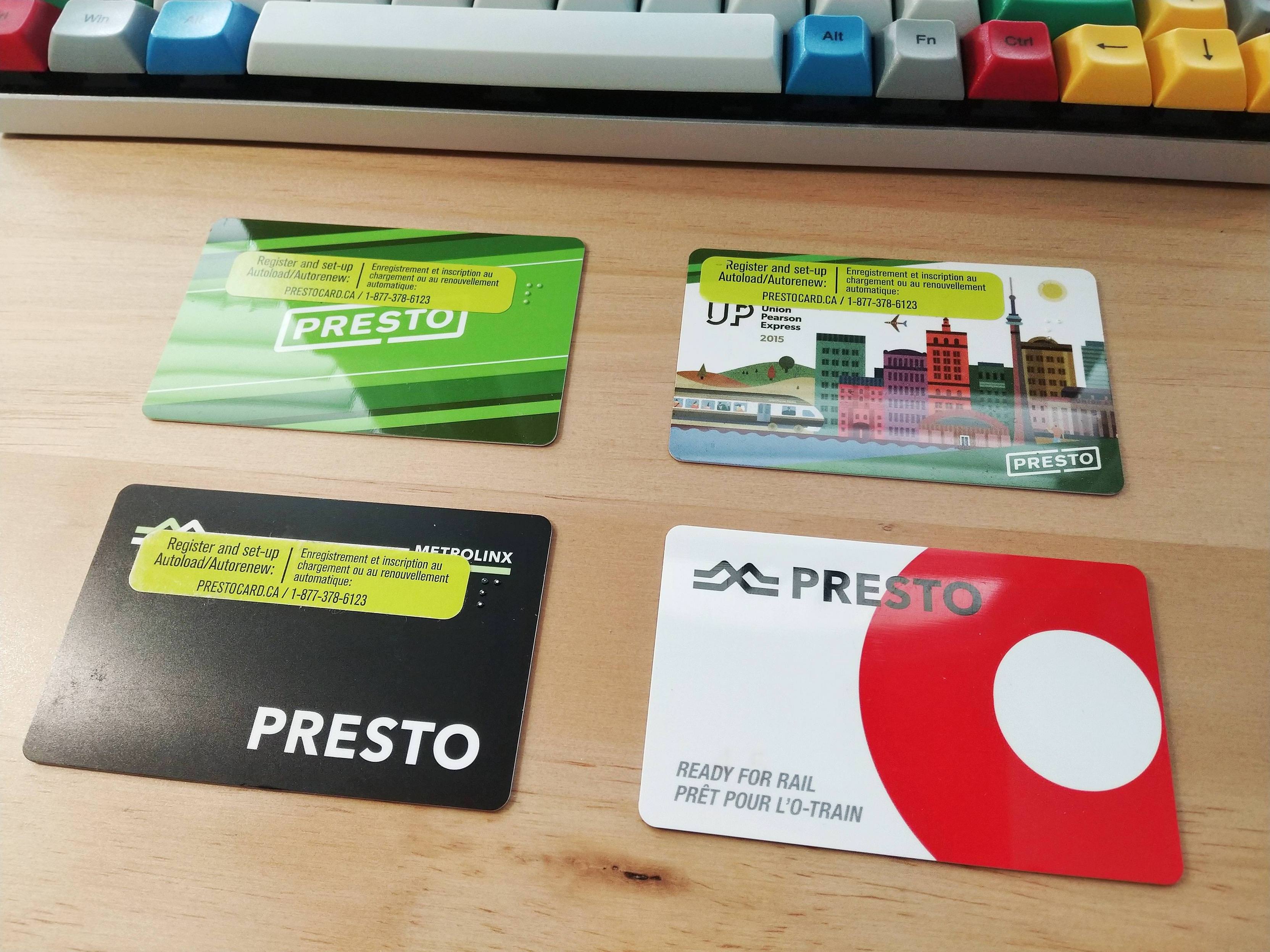 PRESTO Card Designs (opens in a new tab): Green (2015) - Black (2017)
PRESTO Card Designs (opens in a new tab): Green (2015) - Black (2017)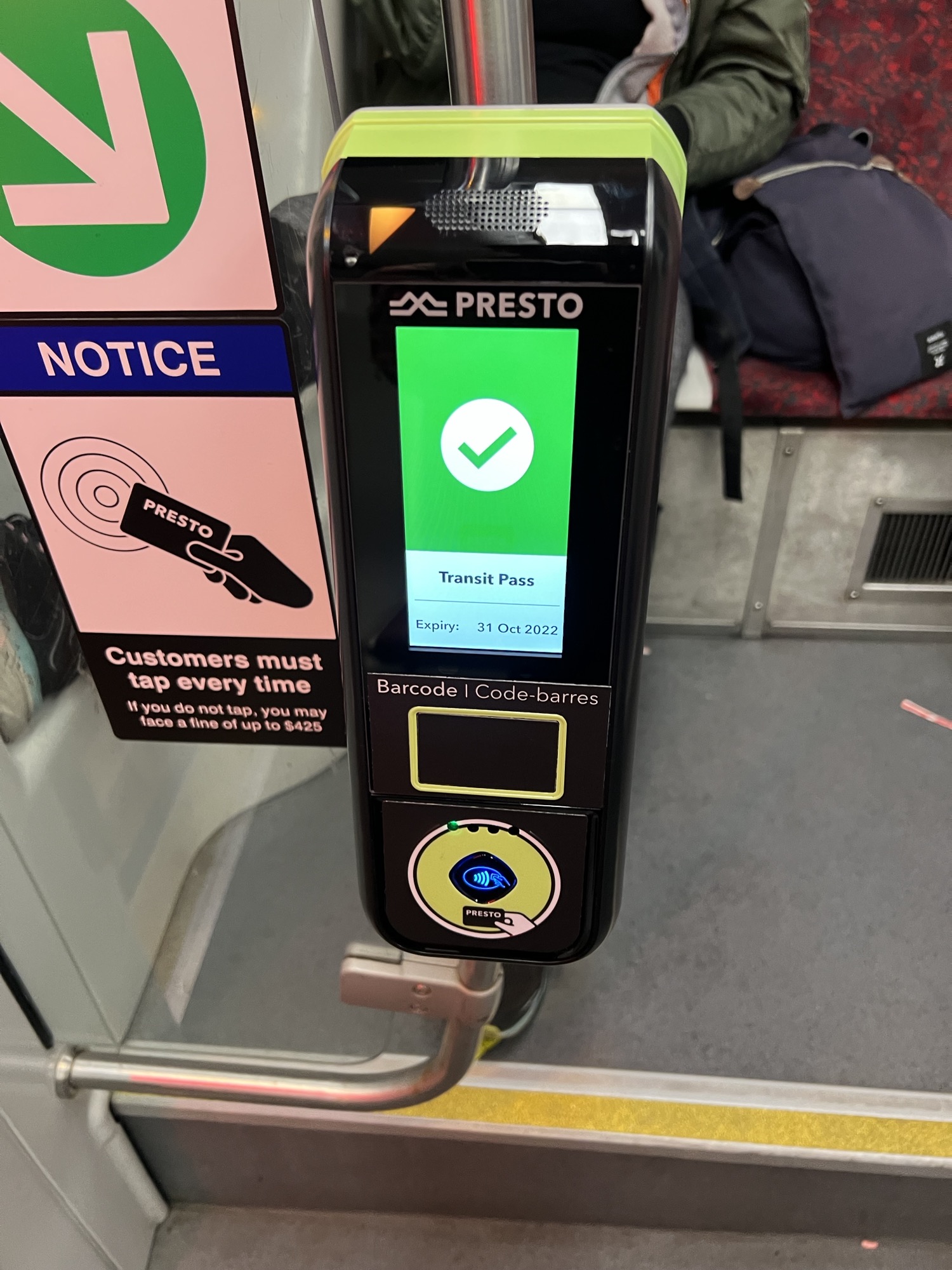 New 2022 PRESTO Card Reader to Support Debit/Credit Cards (opens in a new tab)
New 2022 PRESTO Card Reader to Support Debit/Credit Cards (opens in a new tab)In 2017, the fare gates at all stations were upgraded (opens in a new tab) to the current "paddle-style" with PRESTO support and fare machines were swapped to the current PRESTO Self-Serve Fare Vending Machines. During the same time, Collector Booths began to be phased out (opens in a new tab).
Before the PRESTO era, the TTC had turnstile and high gate fare gates that accepted tokens and Metropasses with ticket and cash fares going through the Collector Booth. On buses and streetcars, a fare box would be positioned by the driver as passengers got on.
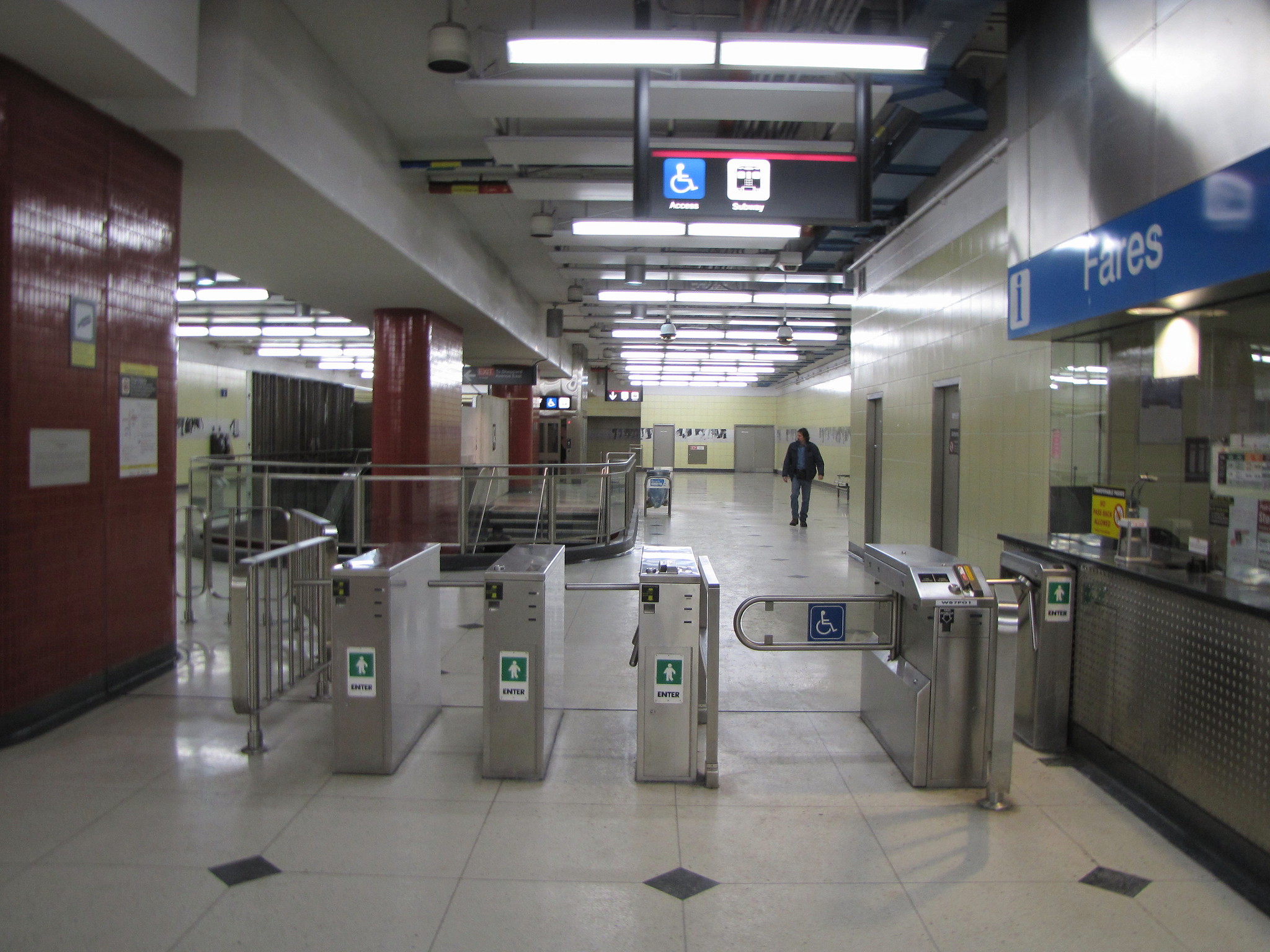 Turnstile Fare Gates at Bessarion Station (opens in a new tab) in 2011
Turnstile Fare Gates at Bessarion Station (opens in a new tab) in 2011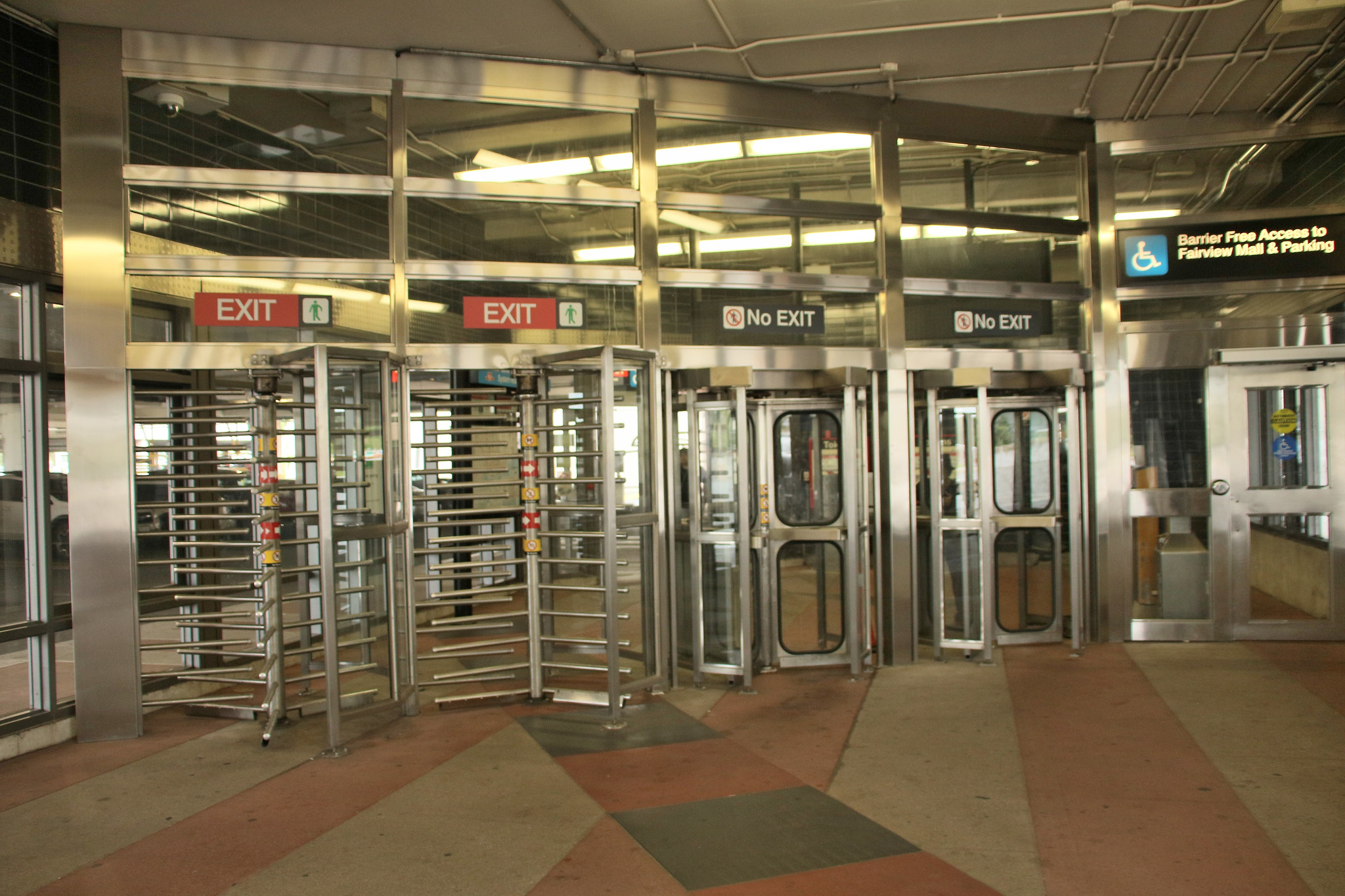 High Gate Fare Gates at Don Mills Station (opens in a new tab)
High Gate Fare Gates at Don Mills Station (opens in a new tab)In November 2019, the TTC stopped selling all legacy fare types (opens in a new tab) (tokens, tickets, passes) and by June 2025 will no longer accept these legacy fare types (opens in a new tab) as Line 5: Eglinton Crosstown LRT (opens in a new tab) and Line 6: Finch West LRT (opens in a new tab) will not be able to accept them. Truely the end of an era.
Random History of the TTC
Before I go into some random history of the TTC, I highly suggest you to go watch these two videos by notsmoothsteve (opens in a new tab) and RM Transit by Reece Martin (opens in a new tab):
- Toronto Gauge: The TTC's Unique Distance Between Rails (opens in a new tab) (history lesson on Toronto's unique streetcar tracks)
- Why Toronto Removed a Subway Line and Why It’ll Be Okay (Eventually) (opens in a new tab) (history of the Scarborough RT)
Line 1: Extensions North
The Yonge-University line (Line 1) (opens in a new tab) opened in 1954 and ran from Union Station (opens in a new tab) to Eglinton Station (opens in a new tab).
In 1963, it was extended to St. George Station (opens in a new tab) and gained the name "Yonge-University" as it ran under Yonge St and University Ave.
In 1978, it was extended north to Wilson Station (opens in a new tab) and was renamed the "Yonge-University-Spadina" line.
In 2017, it was extended north to Vaughan Metropolitan Centre Station (opens in a new tab) and Line 1 is where it is as of this article.
Line 2: Extensions East
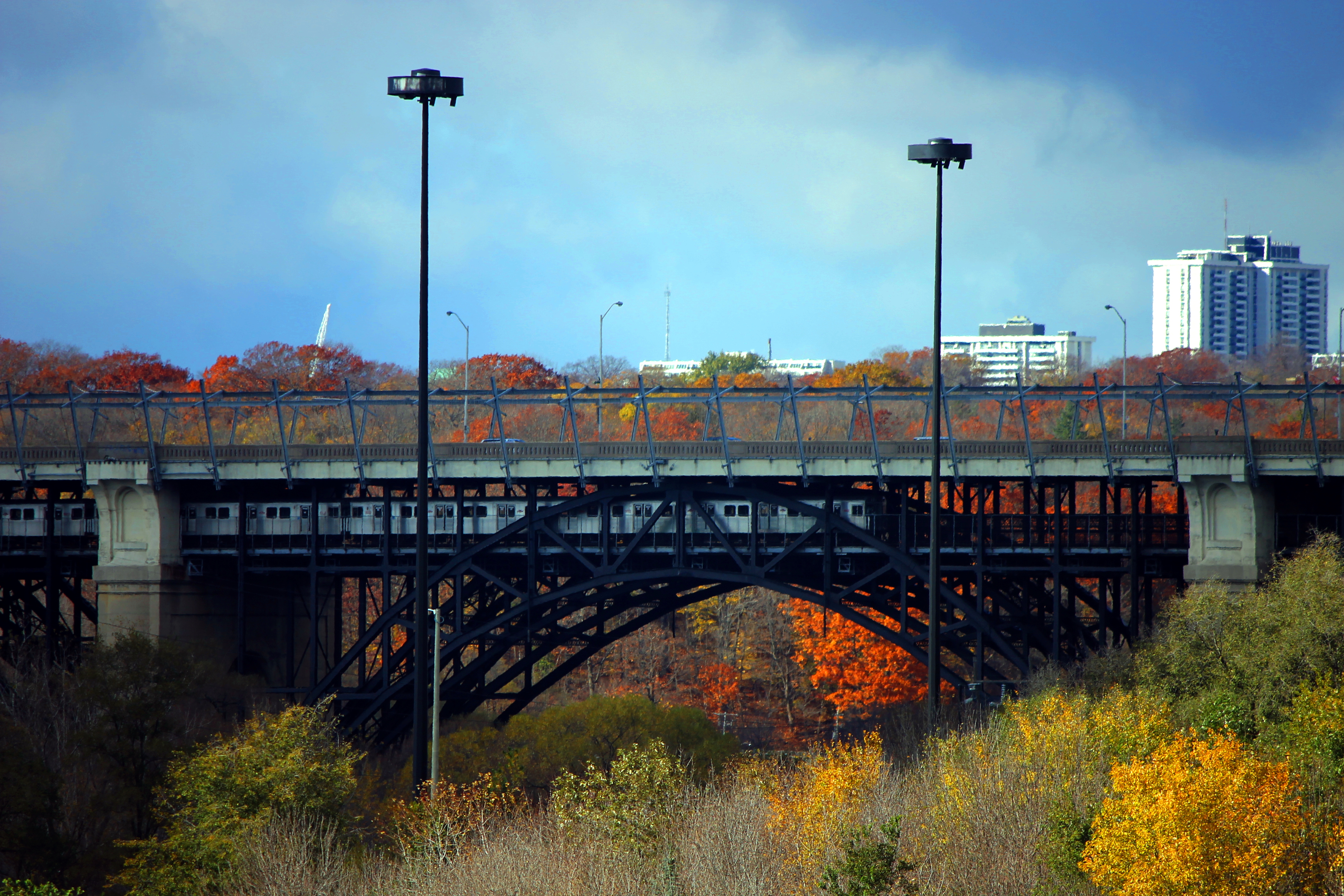 T1 Subway on Line 2 Crossing the Don Valley (opens in a new tab) on Prince Edward Viaduct (opens in a new tab)
T1 Subway on Line 2 Crossing the Don Valley (opens in a new tab) on Prince Edward Viaduct (opens in a new tab)The Bloor-Danforth line (Line 2) (opens in a new tab) opened in 1966 and ran from Keele Station (opens in a new tab) to Woodbine Station (opens in a new tab).
In 1968, it was extended west to Islington Station (opens in a new tab) and east to Warden Station (opens in a new tab).
In 1980, it was extended west to terminal station Kipling (opens in a new tab) and east terminal station Kennedy (opens in a new tab) and Line 2 is where it is as of this article.
Subway Crash on Line 1
In 1995, the TTC experienced a horrific fatal accident that lead to the death of 3 passengers with 30 others being injured (opens in a new tab). Known as the Russell Hill accident (opens in a new tab), a southbound subway on Line 1: Yonge-University ran a red signal (known as SPAD - Signal Passed at Danger), between St. Clair West (opens in a new tab) and Dupont stations (opens in a new tab), and the train stop (opens in a new tab) arm failed to trigger the subway's emergency brakes, leading to a crash with the rear of a stationary subway at a red signal.
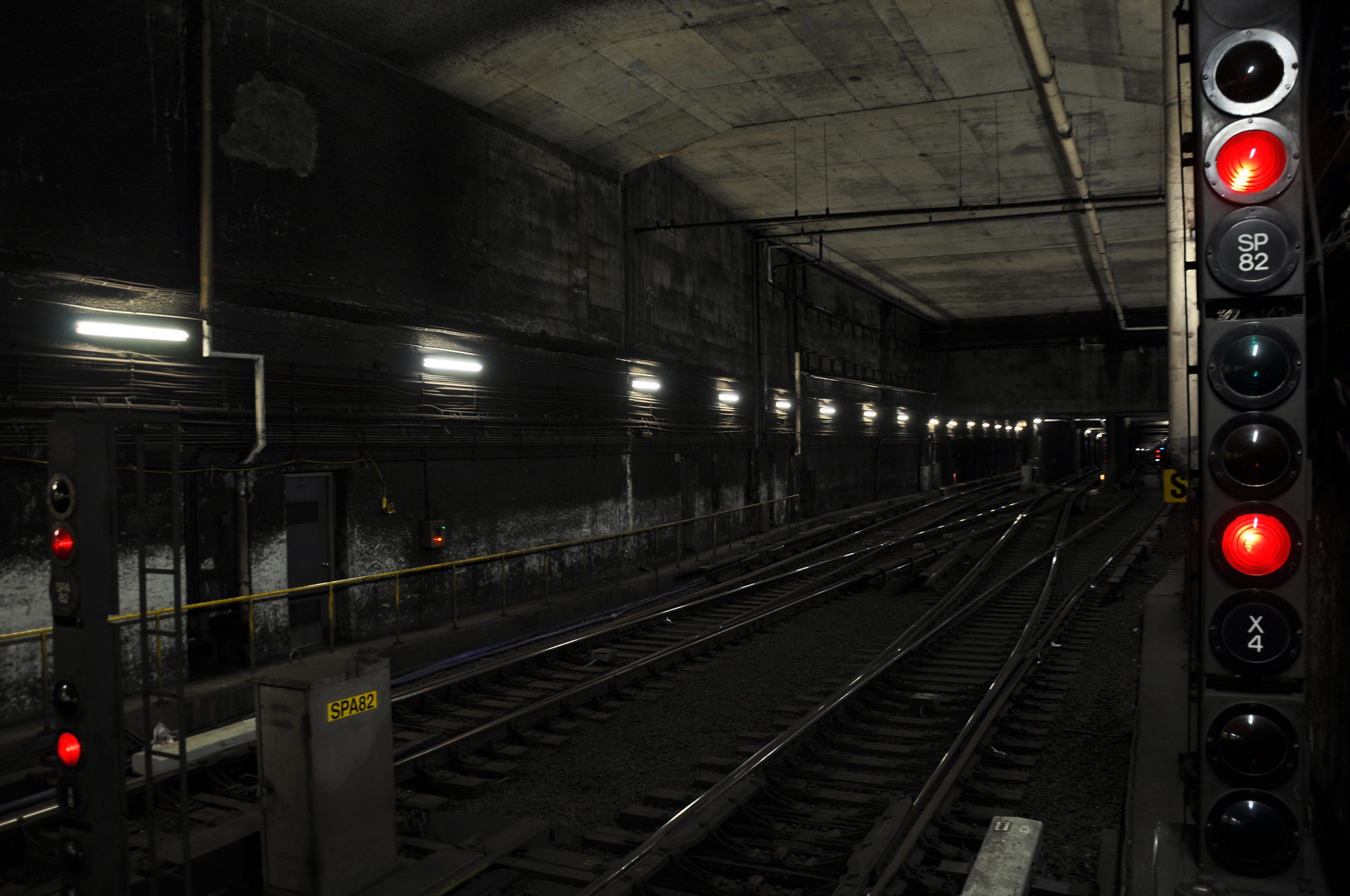 Interlocking Signal SP82/X4 at St. Clair West Station Northbound - Same Type of Signal but Southbound SP77/X38 was Misread and Lead to the 1995 Accident
Interlocking Signal SP82/X4 at St. Clair West Station Northbound - Same Type of Signal but Southbound SP77/X38 was Misread and Lead to the 1995 AccidentFollowing the accident, the defective Ericsson train stops were corrected and better grade timing signal (opens in a new tab) training was introduced to all subway operators with a change to the TTC's signaling system (opens in a new tab).
The Russell Hill accident remains as the deadliest rapid transit system accident in Canadian History. Short Video Documentary Here (opens in a new tab)
The Crash that Changed the Law
I was once told that the reason why TTC buses stopped and opened their doors at railway crossings was because of a horrific crash that involved a TTC bus and GO Train. I can confirm that this story is not a fairy tale as in 1975, a TTC bus operating route 86: Scarboro (opens in a new tab) (this was before 86 Scarborough was rerouted to Kennedy station as Kennedy extension opened in 1980) stalled on the tracks at St. Clair Ave E & Kennedy Rd (opens in a new tab) and was torn apart by a westbound Lakeshore East (opens in a new tab) GO Train. 9 passengers were killed with 16 others injured, resulting in major changes being made.
The level crossing (opens in a new tab) at St. Clair Ave East was changed to an underpass with nearby level crossings following suit and being grade separated.
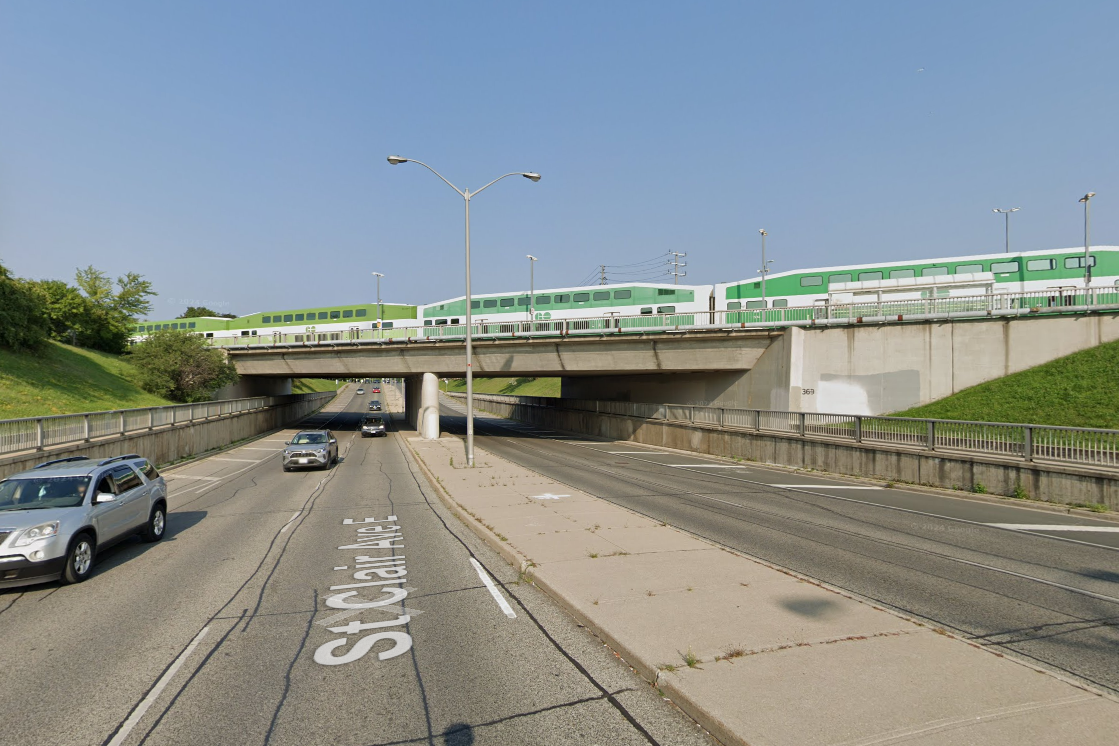 St. Clair Avenue East Underpass near Scarborough GO station (opens in a new tab) — Original Accident Sight
St. Clair Avenue East Underpass near Scarborough GO station (opens in a new tab) — Original Accident Sight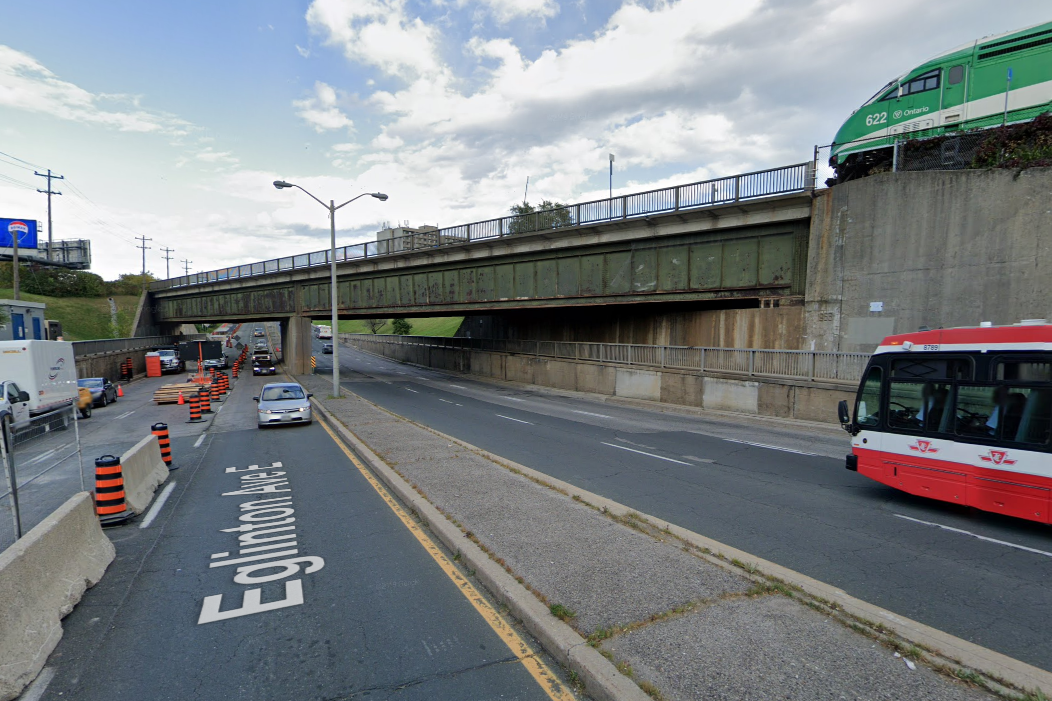 Eglinton Avenue East Underpass near Eglinton GO Station (opens in a new tab)
Eglinton Avenue East Underpass near Eglinton GO Station (opens in a new tab)The Ontario government also amended the Highway Traffic Act (opens in a new tab) to mandate all buses to stop at unprotected railway crossings (no arms or warning signals) with school buses required to stop at all railway crossings regardless of it being protected or not.
The TTC, much like other transit agencies, went above the MTO's (Ministry of Transportation of Ontario (opens in a new tab)) standard and adapted the mandate for all of their buses. This was the general procedure for TTC buses for the last ~50 years.
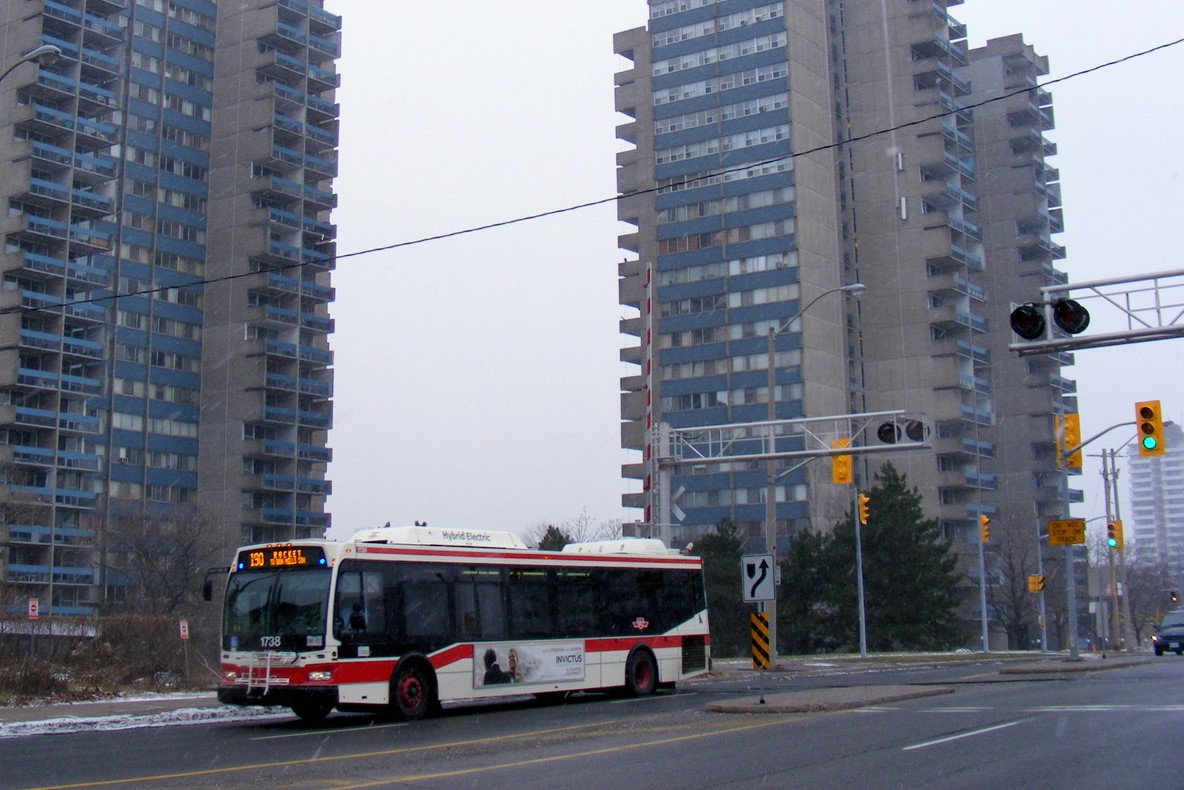 TTC 1738 (Orion VII NG) Operating 190: Scarborough Centre Rocket (opens in a new tab) Crosses R/R Crossing on Sheppard Ave E before Converted to Underpass
TTC 1738 (Orion VII NG) Operating 190: Scarborough Centre Rocket (opens in a new tab) Crosses R/R Crossing on Sheppard Ave E before Converted to UnderpassIn 2013, a similar and just as horrific accident happened in Ottawa where a double-decker (opens in a new tab) OC Transpo (opens in a new tab) bus crashed with a VIA Rail train (opens in a new tab), killing 6 passengers. OC Transpo did not, and still does not, mandate its buses to stop at protected railway crossings.
Following this, the question was raised to whether buses stopping at protected railway crossings would be safer and potentially have prevented this collision. The conclusion, no — it actually "might be more dangerous to do so" according to the report (opens in a new tab). This is probably due to the improvements to the automated warning signals equipped at all major railway level crossings today.
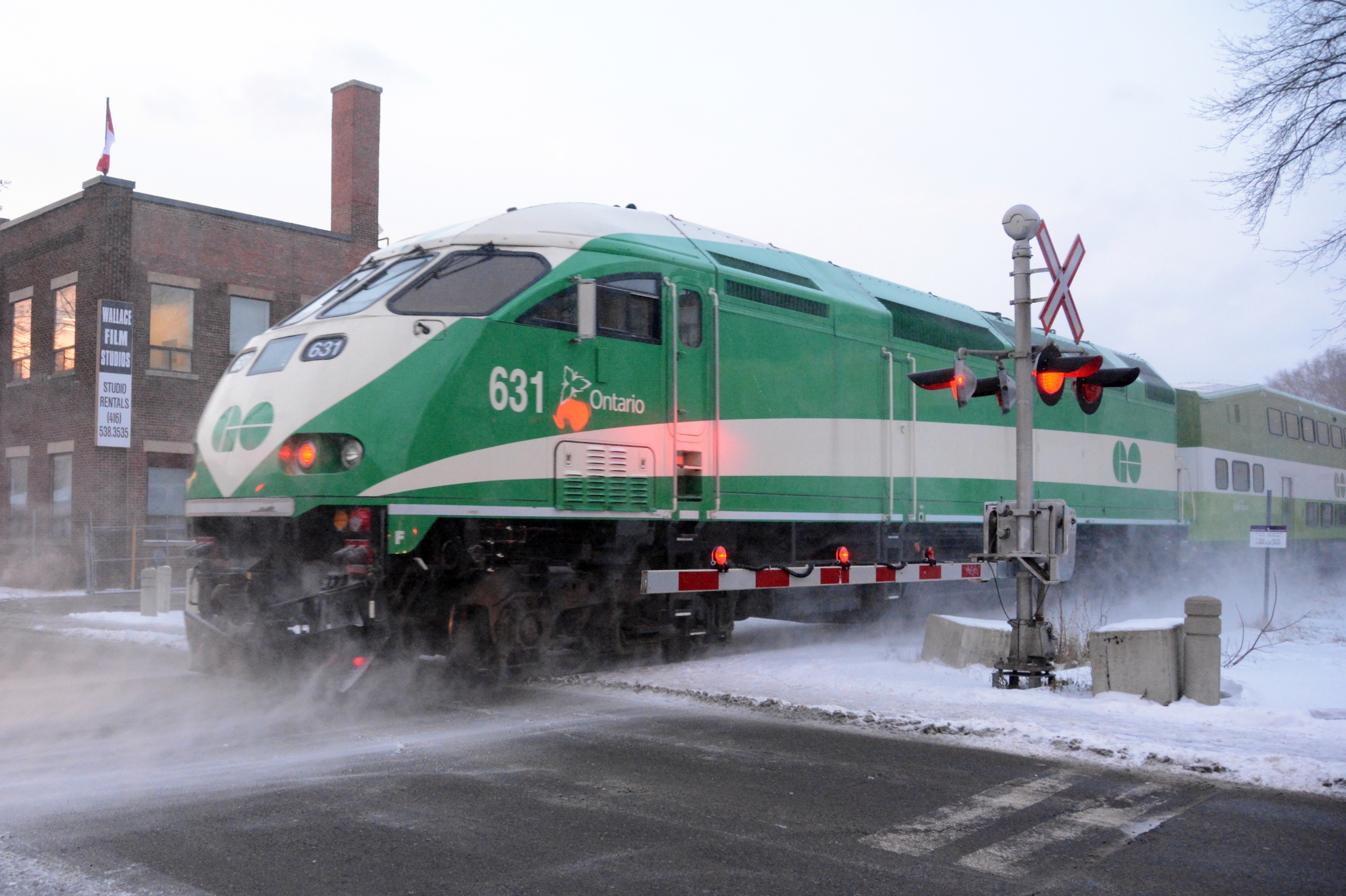 GOT 631 Heading North on Barrie Line (opens in a new tab)
GOT 631 Heading North on Barrie Line (opens in a new tab)In 2024, the TTC updated its railway crossing procedure for TTC buses (opens in a new tab) and no longer requires them to stop at protected railway crossings as per the MTO standard (opens in a new tab). This, much like many TTC riders and drivers (opens in a new tab), was a shock when in November 2024 TTC buses would suddenly zoom right through railway crossings, leaving us in disbelief, expecting it to slow down, stop, and open its front door as it always has. At first it seemed like a step backwards, but this has actually been the procedure for many transit agencies around the world, including GO Buses (opens in a new tab).
Random Stuff about the TTC
The Spadina Stations
Spadina Station connects to both Line 1: Yonge-University and Line 2: Bloor-Danforth via a walkway corridor. There used to be a moving walkway in this corridor, however, it has since been removed and markings of the walkway can be found. For more information, I suggest checking out notsmoothsteve's video on "The Two Spadina Stations" (opens in a new tab).
Bay and Lower Bay
Underneath Bay Station lies an unused subway platform known as Yorkville or Lower Bay (opens in a new tab). Lower Bay was only used for half a year before it was decommissioned following a failed pilot project (opens in a new tab). This unused platform is now used to host events, film videos, training exercises, and many other things!
The Rocket Network
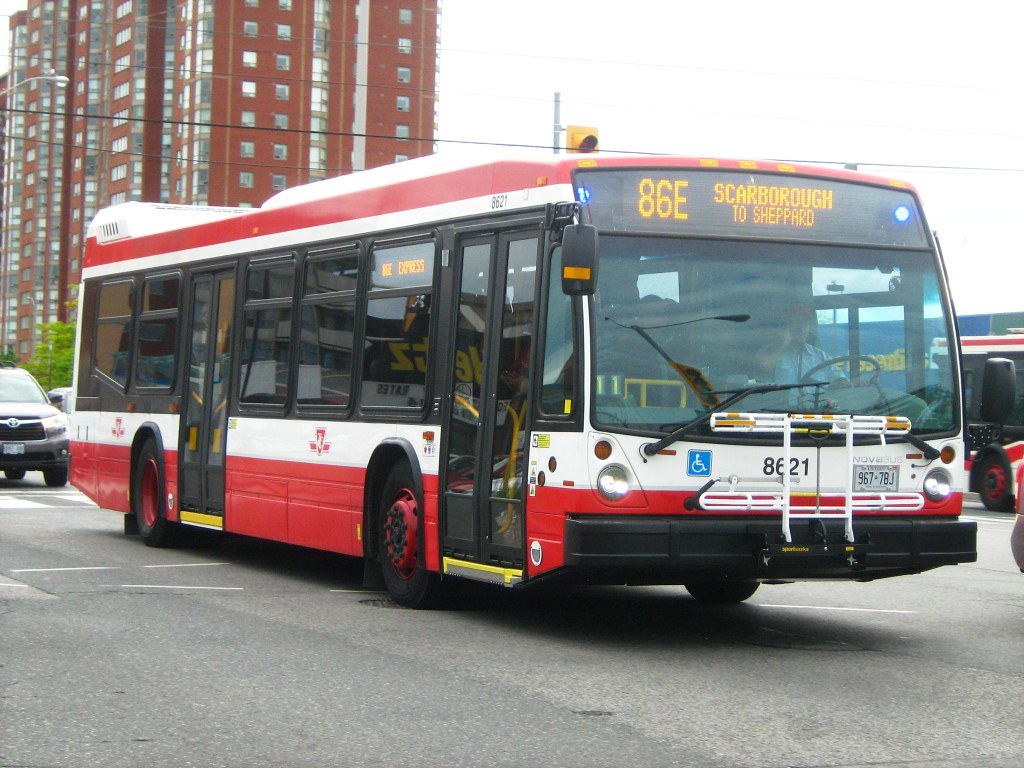 TTC 8621 (Nova Bus LFS): 86E Scarborough Express (opens in a new tab) in 2017
TTC 8621 (Nova Bus LFS): 86E Scarborough Express (opens in a new tab) in 2017 TTC 8003 (Orion VII OG): 192 Airport Rocket (opens in a new tab) in 2015
TTC 8003 (Orion VII OG): 192 Airport Rocket (opens in a new tab) in 2015Before the Express Bus Network (opens in a new tab) was established in 2018, which utilizes the 900 series bus routes, the express network included the "Rocket Network," with bus routes utilizing a form of 19X (where X is a integer from 0 to 9 - ex// 198 UofT Scarborough Rocket (opens in a new tab)), and an E or Express variant of the local route such as the 86E (986 (opens in a new tab)), 116E (replaced by 198 (opens in a new tab), and now 905 (opens in a new tab)), 54E (954 (opens in a new tab)), 95E (995 (opens in a new tab)), etc.
Signal Passed at Danger (SPAD)
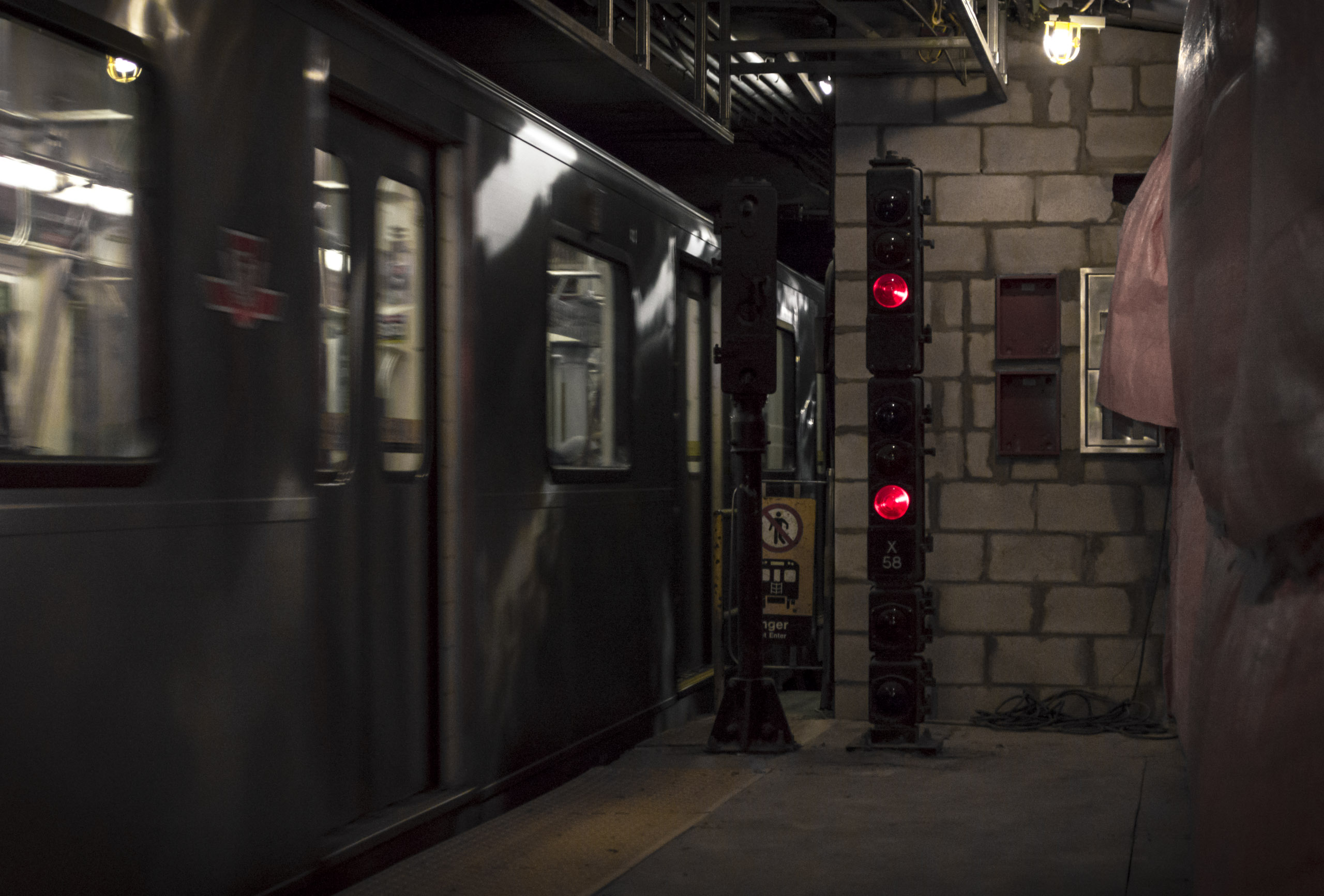 Interlocking Signal X58 at Museum Station (opens in a new tab)
Interlocking Signal X58 at Museum Station (opens in a new tab)There's this very well made video by T2P Films (opens in a new tab) that goes deep into the TTC's Signaling system, SPAD and train stops, and track markers.
The TTC uses a traditional Automatic Block Signaling (ABS) (opens in a new tab) system and has been converting to the modern Automatic Train Control (ATC) (opens in a new tab) system with Line 1 being fully converted in 2022 (opens in a new tab) with plans to convert the entire subway system (opens in a new tab). Regardless of signaling system, SPADs (opens in a new tab) are taken very seriously.
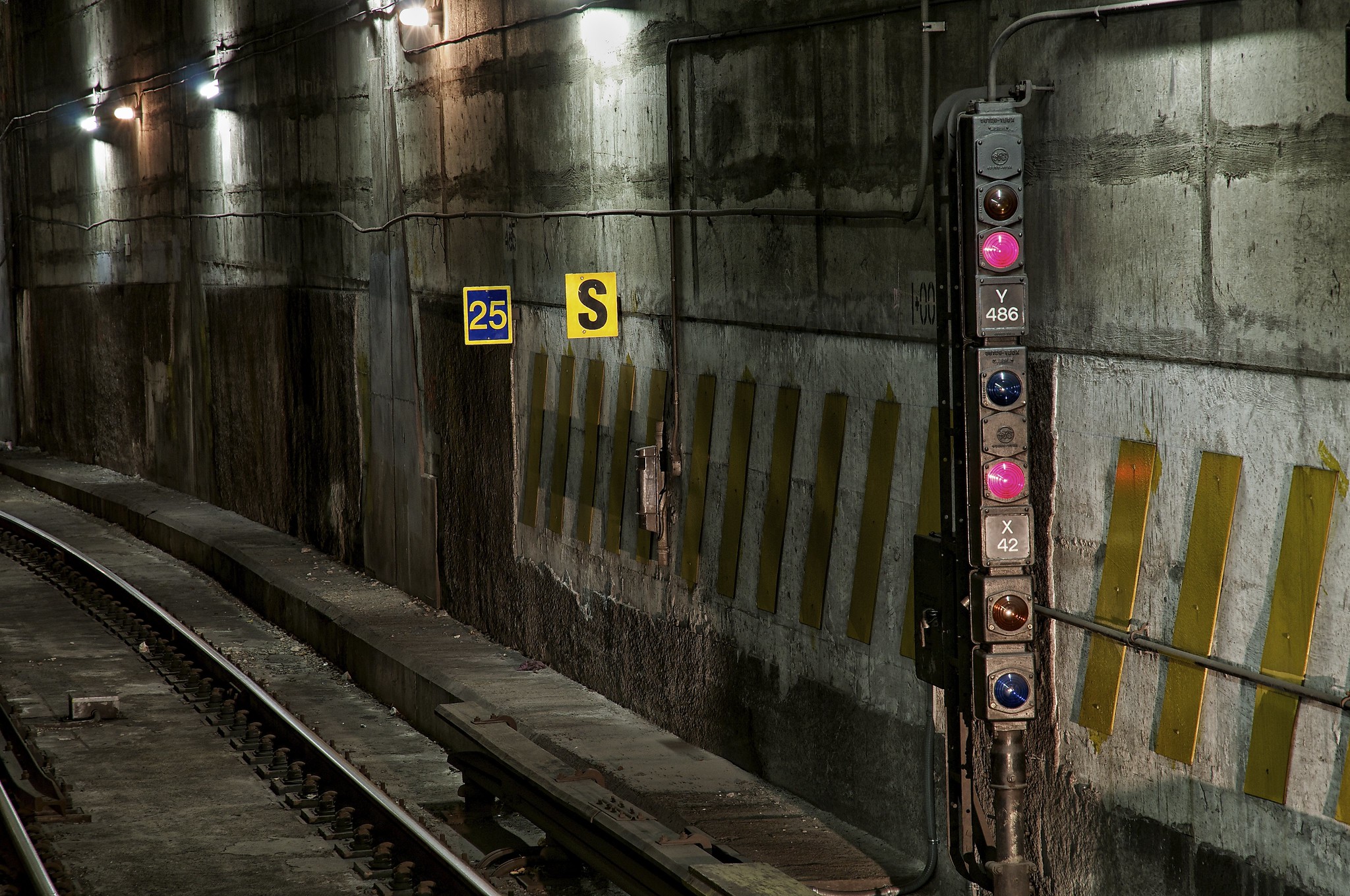 Interlocking Signal Y486/X42 at Lower Bay Station (opens in a new tab)
Interlocking Signal Y486/X42 at Lower Bay Station (opens in a new tab)To keep it brief, ABS uses Fixed Block Signaling (opens in a new tab) which divides the system into "blocks" with a minimum two block distance between each subway (special circumstances at a ST (Station Timing) signal (opens in a new tab) may permit a one block gap).
ATC is more automated and maintains a constant moving block between each subway. This allows for more subways to operate simultaneously and carefully monitors the location of each subway.
When the signal is red, the train stop (opens in a new tab) (T-shaped arm), located at the base of the track next to the signal, is raised to the "up" position and is only lowered when the signal changes. When a subway commits a SPAD, this train stop will "trip" the emergency brakes of the subway, preventing it from colliding into the rear of another subway (like the 1995 Russell Hill accident)
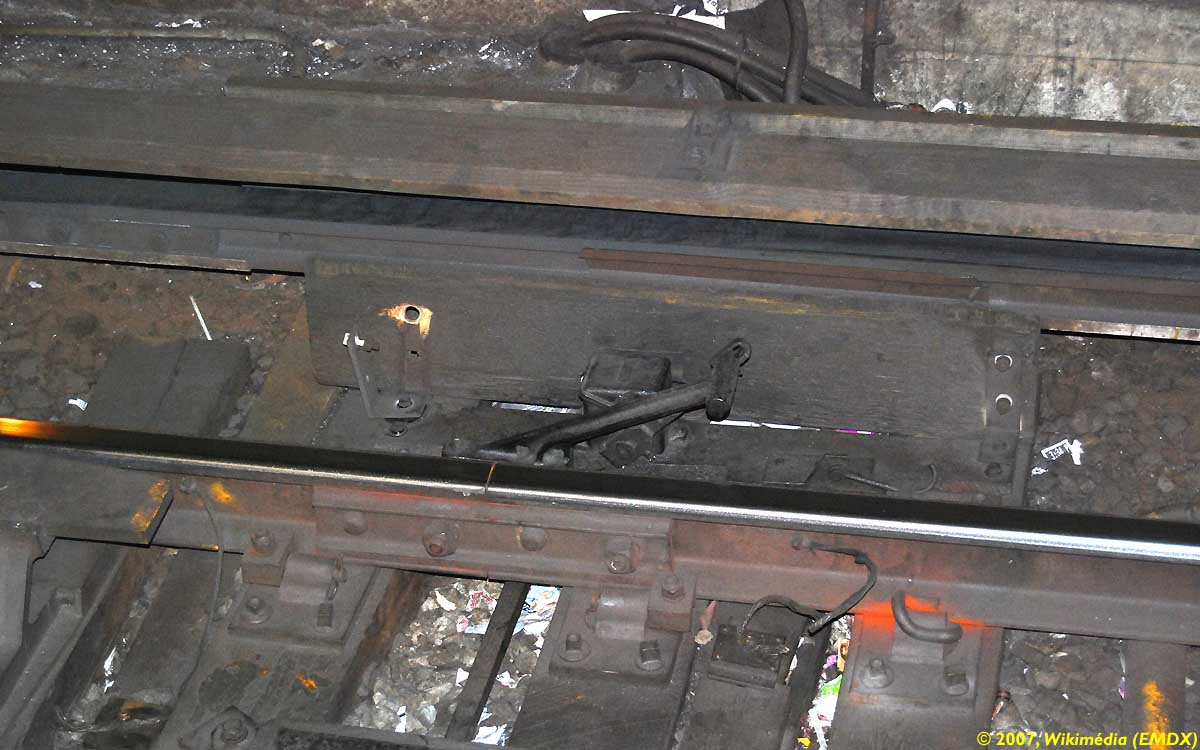 Train Stop with Arm Raised at Union Station (opens in a new tab)
Train Stop with Arm Raised at Union Station (opens in a new tab)Sometimes there might be workers in a section of track. This is indicated to the driver with light beacons placed in the middle of the tracks and overrides the speed limit for that zone.
Here is a table of all the possible TTC signal combinations. The common ones you would normally see besides the typical 🔴Red, 🟡Yellow, and 🟢Green would be:
- 🟢Green / 🟢Green
- 🟡Yellow / 🟢Green
- 🔴Red / 🔴Red
- 🟡Yellow / 🟢Green / ⚪Lunar
- 🔴Red / 🔴Red / ⚪Lunar
Again, the video does a really good job at explaining this section so I recommend that you go watch the video: How the Toronto (TTC) Subway Train Signal System Works (opens in a new tab)
The Unique Toronto Gauge
The subways on Lines 1, 2, & 4 and streetcars all use the unique Toronto gauge (opens in a new tab) for their tracks. Toronto gauge is 4' 10 7⁄8" (1495mm) which is 60mm wider than standard gauge 4' 8 1⁄2" (1435mm). Thus, the CLRV, ALRV, Flexity Outlook, and Toronto subways are all unique to Toronto's rail system. Not only are the tracks different, but they also use a single point switch which would often get stuck, leading to streetcar operators to manually switch the rail.
The Flexity Freedom LRT used on Line 5: Eglinton and Line 6: Finch West (opens in a new tab) use standard gauge and is compatible with regular train tracks. The Grand River Transit (GRT) (opens in a new tab) ION uses the same Flexity Freedom LRT model as the Eglinton LRT and the ION shares its tracks with Canadian National (CN) (opens in a new tab) as CN sends a cargo train weekly to northern Waterloo to service the refineries.
Closing
And that's it, thanks for reading! This took quite some time to write. If there's anything you want to inquire about (General, DMCA, etc.), reach out to me!
Email: gu.rongbin99@gmail.com
Links to the TTC's Current Bus, Subway, and Streetcar Fleets
Bus (*articulated)
| Model | Type | Year Entered Service | Fleet Series | CPTDB Link |
|---|---|---|---|---|
| Orion VII OG | Diesel | 2003 - Rebuilt 2012 | 7400-7881 | CPTDB Link (opens in a new tab) |
| Orion VII OG | Diesel | 2006 - Rebuilt 2015 | 7900-7979 | CPTDB Link (opens in a new tab) |
| Orion VII OG | Diesel | 2007 - Rebuilt 2015 | 8000-8099 | CPTDB Link (opens in a new tab) |
| Orion VII OG | Diesel | 2005 - Rebuilt 2016 | 1000-1149 | CPTDB Link (opens in a new tab) |
| Orion VII NG | Hybrid | 2008 - Rebuilt 2017 | 1200-1423 | CPTDB Link (opens in a new tab) |
| Orion VII NG | Hybrid | 2008 - Repainted 2018 | 1500-1689 | CPTDB Link (opens in a new tab) |
| Orion VII NG | Diesel | 2010 - Rebuilt 2018 | 8100-8219 | CPTDB Link (opens in a new tab) |
| Orion VII EPA10 | Diesel | 2011 - Rebuilt 2018 | 8300-8334 | CPTDB Link (opens in a new tab) |
| Orion VII EPA10 | Diesel | 2012 - Rebuilt 2019 | 8335-8396 | CPTDB Link (opens in a new tab) |
| Nova Bus LFS Arctic* | Diesel | 2013 - Rebuilt 2019 | 9000-9026 | CPTDB Link (opens in a new tab) |
| Nova Bus LFS Arctic* | Diesel | 2014 - Rebuilt 2020 | 9027-9152 | CPTDB Link (opens in a new tab) |
| Nova Bus LFS | Diesel | 2015 - Rebuilt 2021 | 8400-8504 | CPTDB Link (opens in a new tab) |
| Nova Bus LFS | Diesel | 2015 - Rebuilt 2021 | 8510-8617 | CPTDB Link (opens in a new tab) |
| Nova Bus LFS | Diesel | 2017 - Rebuilt 2022 | 8620-8716 | CPTDB Link (opens in a new tab) |
| Nova Bus LFS | Diesel | 2017 - Rebuilt 2023 | 8720-8964 | CPTDB Link (opens in a new tab) |
| Nova Bus LFS | Diesel | 2017 - Rebuilt 2024 | 9200-9239 | CPTDB Link (opens in a new tab) |
| Nova Bus LFS | Diesel | 2018 - Rebuilt 2024 | 3100-3369 | CPTDB Link (opens in a new tab) |
| Nova Bus LFS HEV | Hybrid | 2018 - 2019 | 3400-3654 | CPTDB Link (opens in a new tab) |
| New Flyer XE40 Charge | Electric | 2019 | 3700-3724 | CPTDB Link (opens in a new tab) |
| Proterra Catalyst BE40 | Electric | 2019 | 3725-3749 | CPTDB Link (opens in a new tab) |
| BYD Auto K9M | Electric | 2020 | 3750-3759 | CPTDB Link (opens in a new tab) |
| New Flyer XDE40 | Hybrid | 2023 | 7200-7333 | CPTDB Link (opens in a new tab) |
| Nova Bus LFS HEV | Hybrid | 2023 | 7000-7133 | CPTDB Link (opens in a new tab) |
| New Flyer XDE60* | Hybrid | 2023 | 9400-9467 | CPTDB Link (opens in a new tab) |
| New Flyer XE40 Charge NG | Electric | 2024 | 6000-6203 | CPTDB Link (opens in a new tab) |
| Nova Bus LFSe+ | Electric | 2025? | 6600-6735 | CPTDB Link (opens in a new tab) |
Streetcars (*articulated)
| Model | Type | Year Entered Service | Fleet Series | CPTDB Link |
|---|---|---|---|---|
| CLRV | Electric | 1979 - Some Refurbished | 4000-4199 | CPTDB Link (opens in a new tab) |
| ALRV* | Electric | 1987 - Some Refurbished | 4200-4251 | CPTDB Link (opens in a new tab) |
| Flexity Outlook* | Electric | 2014 - Refurbished 2021 | 4400-4603 | CPTDB Link (opens in a new tab) |
| Flexity Outlook* | Electric | 2024 | 4604-4663 | CPTDB Link (opens in a new tab) |
Subways
| Model | Type | Year Entered Service | Fleet Series | CPTDB Link |
|---|---|---|---|---|
| H4 | Electric | 1974 - Rebuilt 2001 - Retired 2012 | 5576-5663 | CPTDB Link (opens in a new tab) |
| H5 | Electric | 1976 - Rebuilt 1998 - Retired 2012 | 5670-5807 | CPTDB Link (opens in a new tab) |
| H6 | Electric | 1986 - Retired 2014 | 5810-5935 | CPTDB Link (opens in a new tab) |
| T1 | Electric | 1997 - Pending Retirement (2030?) | 5000-5371 | CPTDB Link (opens in a new tab) |
| Toronto Rocket | Electric | 2011 | 5381-6136 6141-6196 | CPTDB Link (opens in a new tab) |
| New Line 2 Subways | Electric | 2030? | Unknown |
LRVs (Light Rail Vehicles)
| Model | Type | Year Entered Service | Fleet Series | CPTDB Link |
|---|---|---|---|---|
| Line 3: Scarborough RT (opens in a new tab) Mark 1 ICTS | Electric | 1982 - Rebuilt 2015 - Retired 2023 | 3000-3027 | CPTDB Link (opens in a new tab) |
| Line 5: Eglinton LRT (opens in a new tab) Flexity Freedom | Electric | 2025? (Pending Opening) | 6200-6275 | CPTDB Link (opens in a new tab) |
| Line 6: Finch West LRT (opens in a new tab) Citadis Spirit | Electric | 2025? (Pending Opening) | 6500-6516 | CPTDB Link (opens in a new tab) |
Last modified: 2024/12/24 by Rongbin Gu
